FEATURING 289 Industry-First Reviews of Fiction, Nonfiction, Children’s, and YA Books



FEATURING 289 Industry-First Reviews of Fiction, Nonfiction, Children’s, and YA Books


The Caldecott Medalist reflects on her historic award and artistic inheritance
As Baker & Taylor approaches its bicentennial, CEO Amandeep Kochar reflects on the company’s mission: serving community.
BY MEGAN LABRISEBAKER & TAYLOR
a book bindery and publisher the same year the U.S. elected Andrew Jackson its seventh president. (President Joe Biden is our 46th.) The company began distributing books by horse-drawn carriage and has survived the Civil War, World Wars I and II, and the Spanish flu and Covid-19 pandemics. It welcomed the advent of the telephone, the automobile, and the internet.
“How rare to have a company whose soul has seen such events, that [all along] has been telling the stories that ought to be told,” says president and CEO Amandeep Kochar. “[A company] that makes sure every American, every student, every immigrant, has resources—in public libraries, schools, and colleges—they’re able to find themselves, to utilize [those resources] to empower their own growth.”
Today, Baker & Taylor is the leading supplier of content, software, and services to public and academic U.S. libraries. The independent Charlotte, North
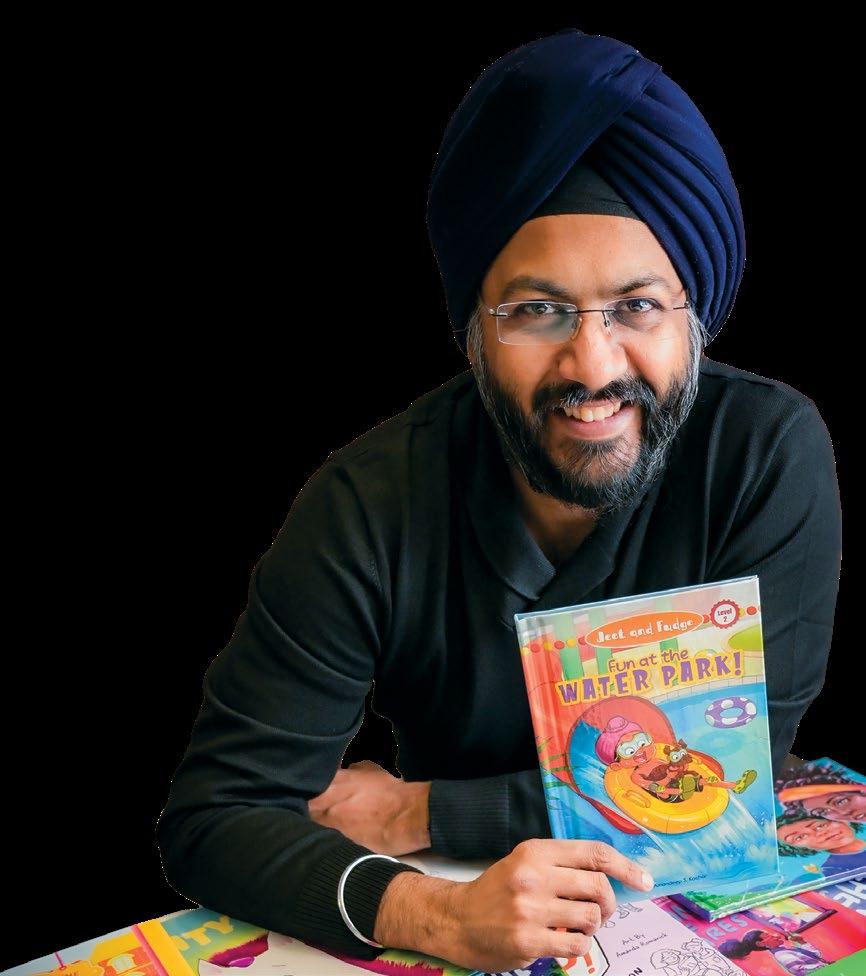
Carolina–based company is well known for customizable collections and tools that empower their partners to serve the specific needs of their communities to the best of their abilities. A separate publisher services division provides small and midsize publishers with sales, manufacturing, warehousing, and distribution support.
“Ours is a very difficult industry,” says Kochar, who joined the company in 2014 as executive vice president and general manager before acquiring it in a divestiture by Follett in November 2021. “As rewarding as it is soulfully, commercially it can be very challenging. Generation over generation, literacy, attention span, and the veneration of long-form literature has been reducing. Consumer behavior is changing, and this is continuing to change the consumption of content—not just [the] type of content, but the format of content as well.”
In a swiftly changing industry, Baker & Taylor has become an agile colossus focused on creating value for the diverse markets it serves. Connecting more than 5,000 libraries with the quality content that will best serve their communities from more than 5,000 publishing partners requires constant innovation, navigation of macroeconomic and sociopolitical headwinds, and a willingness to meet people where they are.
“I travel 100 days a year,” Kochar says. “I’m either with our publishing partners or our customers, schools, libraries, and colleges—anyone in the ecosystem. The only way to have a finger on the pulse of their needs is to be in front of them, virtually or in person, and have a simple conversation: How can we help? In our current time, everyone needs help, everyone is asked to do more with less. And there are more and more people who can use these resources we provide to turn their lives around.”
Among the many tools Baker & Taylor has developed in response to the question How can we help? is
Spend your day at work with grit. And make sure you find moments of kindness in reaching out to a customer.
ePopUp Library, a program piloted in partnership with the systems the company serves, from Broward County, Florida, to Spokane, Washington. ePopUp Library is one of the first programs in the U.S. to offer full access to a library’s electronic collection via smartphone, iPad, or e-reader. That means a patron can call up any book, magazine, or newspaper they wish to read, wherever they may be: in an airport lounge, in a barbershop, or poolside at a child’s swimming lesson. The program became a lifeline in the era of Covid-19, when access to physical libraries was in flux.
“Covid-19 was not kind to anyone in business—unless you were a video conference player or a vaccine manufacturer,” Kochar says.
“As they say, dark times are the filter to show who your true friends are,” he continues. “That’s what I really appreciate about our industry: A lot of people reached out to share their experiences through these challenging times, many of whom had been through their own challenges, and many offered economic and time-related flexibility. Customers who depend on our
systems to get their work done, to receive books to serve their community, have been extraordinarily generous and supportive. Our commitment remains not to let them down.”
What it takes to continue creating value for both ends of the continuum—libraries and publishers—is excellent communication. Kochar likens Baker & Taylor’s position to the thin neck between the two bulbs of an hourglass: The company is in the perfect location to communicate its customers’ desires to suppliers and its suppliers’ challenges to its customers. Successfully brokering these exchanges requires empathy, grit, and kindness, he says. “Spend your day at work with grit. And make sure you find moments of kindness in reaching out to a customer, saying ‘Thank you for your grace.’”
Another essential ingredient to Baker & Taylor’s long-lived success? Humility. When asked how the company plans to celebrate its bicentennial—and ensure another 200 years of successful operations— Kochar reorients the conversation by focusing on the privilege, honor, and responsibility of leading the enterprise today. His concern rests on the triple bottom line: an economic concept that impels business leaders to consider people, the planet, and profits to be of equal importance in operations.
“My vision is to create a company that fears hubris and actively works to prevent it,” he says. “Coming back to the idea of 200 years—in 2028 we will celebrate a few things: We will celebrate not 200 years of Baker & Taylor’s existence but the grit and kindness of the past people in leadership. We will celebrate the innovation of our partners. We will celebrate the life-changing work that our customers do. And we will celebrate diverse stories that courageous people have written and dared to tell.”
Editor at large Megan Labrise hosts the Fully Booked podcast.
Bring your library’s digital collections to unique and exciting places throughout your community with

ePopUp Library helps libraries improve their influence by sharing the library’s digital collection with innovative partners throughout your community.
Strategically display your library QR code at partner sites such as airports, businesses and hotels, for instant access to digital content on any mobile phone, tablet or computer!
We Generate a QR code specific to your library to link any on-site visitor to your library's digital collection.
• Display QR codes in any Wi-Fi enabled partner location
• A branded message or video from your library and community partner welcomes users to your service
• Library can share their curated eBook and audiobook collections instantly, no app or library card required
• The admin portal provides full usage stats and registration details from users
• Users need to only register with an email address for temporary access, which is included in all reporting to your library
Scan the QR code for more information or visit baker-taylor.com/public/popuplibrary


With the exclusive Kids & Teens bundle for Boundless by Baker & Taylor, kids & teens can explore your library's programs and e-media like never before.
With the Kids & Teens bundle, they can discover a massive selection of curated, vetted and age-appropriate content in a safe, library-supported environment available anywhere, any time.





 FROM THE EDITOR’S DESK
FROM THE EDITOR’S DESK
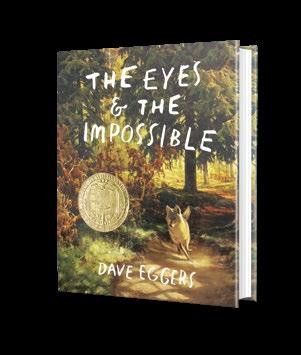
FOR MANY OF us who love books, the love affair began at a library. I remember quite vividly the pure fun of a summer reading challenge undertaken at the Concord Free Public Library in Concord, Massachusetts, in the 1970s. For every book a child read, we received a seashell; at the end of the summer, we completed craft projects with all the shells. (A varnished wooden box, shells decoratively glued on top, still holds the playing cards in my family home.) I remember, too, the powerful feeling of exploration and discovery as I wandered the stacks as a teen, stumbling upon mystery novels and volumes of 18th-century French history—my preferred genres at the time—by pure serendipity.
These happy library memories are top of mind as I prepare to attend the American Library Association’s meeting in San Diego at the end of the month. I attended my first ALA meeting in Washington, D.C., in 2019, just one week after starting at Kirkus. A weary veteran of many visits to Book Expo America (the booksellers’ now-defunct extravaganza), I was delighted to find the ALA meeting free of scavengers trawling the aisles with roller bags, grabbing advanced reading copies by the armload. Instead there were librarians everywhere, asking if they could help me find anything; I was back in my library bliss zone again. The attendees gathered their galley giveaways and author
Frequently Asked Questions: www.kirkusreviews.com/about/faq
Fully Booked Podcast: www.kirkusreviews.com/podcast/
Advertising Opportunities: www.kirkusreviews.com/book-marketing
Submission Guidelines: www.kirkusreviews.com/about/publisher-submission-guidelines
Subscriptions: www.kirkusreviews.com/magazine/subscription
Newsletters: www.kirkusreviews.com
For customer service or subscription questions, please call 1-800-316-9361

autographs with admirable professional restraint. At this year’s conference, I’ll be in conversation on June 29 with author Dave Eggers, whose picture book, The Eyes & the Impossible (Knopf, 2023), received the John Newbery Medal for outstanding contribution to children’s literature. In a starred review of the book (which was illustrated by Shawn Harris), our critic praised the work’s “interesting mix of poetic language, sophisticated vocabulary, philosophy, humor [and] hyperbole” before concluding, “One remarkable creature vividly shows readers that ‘there is so, so much to see.’” Joining us will be author Kwame Mbalia (whose Jax Freeman and the Phantom Shriek is out in October) and another Newbery medalist, Matt de la Peña, whose latest book is The Perfect Place, illustrated by Paola Escobar (Putnam, May 7), along with some others not confirmed at press time. We’ll be talking more about the joys of libraries as
experienced by patrons, authors, and librarians alike. Another big ALA award— the Randolph Caldecott Medal for distinguished children’s book illustration— this year is going to the author and illustrator who appears on the cover of this issue, Vashti Harrison. In a starred review, our critic called Harrison’s picture book Big (Little, Brown, 2023) a “healing balm with the power to make the world a bit kinder.” As Harrison tells young readers’ editor Mahnaz Dar in a profile on page 96, she was deeply moved to be the first Black woman ever to win this recognition, as well as inspired by the work of the seven Black women who received Caldecott Honors before her. Harrison’s acceptance speech in San Diego on June 30 will certainly be among the highlights of this year’s ALA meeting. I hope to see you there.






ISBN: 9781732489493 [paperback]

“...former Indianapolis Star reporter Hanafee's novel is a fast-paced, intense depiction of corporate America and the perennial struggle of women seeking equal treatment in the boardroom.”

ISBN: 9781735698809 [eBook] For Agent Representation or Information on Publishing and Film Rights, Email shanafee@yahoo.com • susanhanafee.com
“A rousing corporate melodrama full of twists, turns, and vivid characters.”
—Kirkus Reviews


Co-Chairman
HERBERT SIMON
Publisher & CEO
MEG LABORDE KUEHN mkuehn@kirkus.com
Chief Marketing Officer
SARAH KALINA skalina@kirkus.com
Publisher Advertising & Promotions
RACHEL WEASE rwease@kirkus.com
Indie Advertising & Promotions
AMY BAIRD abaird@kirkus.com
Author Consultant
RY PICKARD rpickard@kirkus.com
Lead Designer KY NOvAK knovak@kirkus.com
Kirkus Editorial Senior Production Editor
ROBIN O’DELL rodell@kirkus.com
Kirkus Editorial Senior Production Editor
MARINNA CASTILLEJA mcastilleja@kirkus.com
Kirkus Editorial Production Editor
ASHLEY LITTLE alittle@kirkus.com
Copy Editors
ELIZABETH J. ASBORNO BILL SIE v ER
Magazine Compositor
NIKKI RICHARDSON
Contributing Writers
GREGORY MCNAMEE MICHAEL SCHAUB
Co-Chairman
MARC WINKELMAN
Editor-in-Chief TOM BEER tbeer@kirkus.com
President of Kirkus Indie CHAYA SCHECHNER cschechner@kirkus.com
Nonfiction Editor ERIC LIEBETRAU eliebetrau@kirkus.com
Fiction Editor LAURIE MUCHNICK lmuchnick@kirkus.com
Young Readers’ Editor LAURA SIMEON lsimeon@kirkus.com
Young Readers’ Editor MAHNAZ DAR mdar@kirkus.com
Editor at Large
MEGAN LABRISE mlabrise@kirkus.com
Senior Indie Editor
DAvID RAPP drapp@kirkus.com
Indie Editor ARTHUR SMITH asmith@kirkus.com
Editorial Assistant NINA PALATTELLA npalattella@kirkus.com
Indie Editorial Assistant
DAN NOLAN dnolan@kirkus.com
Indie Editorial Assistant SASHA CARNEY scarney@kirkus.com
Mysteries Editor THOMAS LEITCH


Living a Conscious Life offers profound, prescriptive advice with a practical footing across a wide expanse of human experience. Grounded yet uplifting, factual yet inspiring, it can be considered a “user’s manual for human beings”
On sale June 4, 2024
ISBN: 978-1-59079-562-0 17.95 US; trade paperback
Brian Alessandro, Jeffrey Alford, Stephanie Anderson, Jenny Arch, Kent Armstrong, Mark Athitakis, Audrey Barbakoff, Sally Battle, Robert Beauregard, Thomas Beheler, Elizabeth Bird, Ariel Birdoff, Sarah Blackman, Amy Boaz, Jessie Bond, Elissa Bongiorno, Hannah Bonner, Nastassian Brandon, Jessica Hoptay Brown, Justina Bruns, Ann Childs, Alec B. Chunn, Anastasia M. Collins, K.W. Colyard, Rachael Conrad, Miranda Cooper, Emma Corngold, Jeannie Coutant, Perry Crowe, Michael Deagler, Cathy DeCampli, Dave DeChristopher, Steve Donoghue, Lisa Elliott, Lily Emerick, Tanya Enberg, Joshua Farrington, Brooke Faulkner, Angela Firkus, Katie Flanagan, Hillary Jo Foreman, Renee Fountain, Mia Franz, Ayn Reyes Frazee, Harvey Freedenberg, Jackie Friedland, Robbin Friedman, Roberto Friedman, Nivair H. Gabriel, Omar Gallaga, Laurel Gardner, Cierra Gathers, Carol Goldman, Carla Michelle Gomez, Dakota Hall, Geoff Hamilton, Sean Hammer, Silvia Lin Hanick, Alec Harvey, Peter Heck, Lynne Heffley, Bridey Heing, Zoe Holland, Katrina Niidas Holm, Michele Host, Kathleen T. Isaacs, Darlene Ivy, Wesley Jacques, Kerri Jarema, Laura Jenkins, Jessica Jernigan, Danielle Jones, Betsy Judkins, Mikayla Kaber, Jayashree Kamblé, Marcelle Karp, Maya Kassutto, Ivan Kenneally, Colleen King, Lyneea Kmail, Maggie Knapp, Megan Dowd Lambert, Carly Lane, Chelsea Langford, Christopher Lassen, Tom Lavoie, Hanna Lee, Judith Leitch, Donald Liebenson, Elsbeth Lindner, Coeur de Lion, Corrie Locke-Hardy, Barbara London, Patricia Lothrop, Wendy Lukehart, Kyle Lukoff, Isabella Luongo, Leanne Ly, Douglas MacLeod, Michael Magras, Thomas Maluck, Joe Maniscalco, Emmett Marshall, Gabriela Martins, Matthew May, J. Alejandro Mazariegos, Kirby McCurtis, Breanna McDaniel, Zoe McLaughlin, Kathie Meizner, Carol Memmott, J. Elizabeth Mills, Lisa Moore, Andrea Moran, Ari Mulgay, Jennifer Nabers, Christopher Navratil, Mimi Nguyen, Therese Purcell Nielsen, Brandon Nolta, Sarah Norris, Katrina Nye, Tori Ann Ogawa, Mike Oppenheim, Nick Owchar, Emilia Packard, Derek Parker, John Edward Peters, Jim Piechota, William E. Pike, Margaret Quamme, Kristy Raffensberger, Kristen Rasmussen, Stephanie Reents, Amy Reiter, Amy B. Reyes, Jasmine Riel, Alyssa Rivera, Kelly Roberts, Amy Robinson, Gia Ruiz, Bob Sanchez, Caitlin Savage, E.F. Schraeder, Gretchen Schulz, Jerome Shea, Polly Shulman, Sadaf Siddique, Karyn N. Silverman, Linda Simon, Wendy Smith, Leena Soman, Margot E. Spangenberg, Mo Springer, Allison Staley, Allie Stevens, Mathangi Subramanian, Deborah Taylor, Paul Teed, Caroline Tien, Renee Ting, Lenora Todaro, Amanda Toth, Jenna Varden, Katie Vermilyea, Christina Vortia, Francesca Vultaggio, Elliott Walcroft, Erica Weidner, Kerry Winfrey, Bean Yogi, Jean-Louise Zancanella, Jenny Zbrizher
WHAT IS HISTORICAL fiction? That’s a question I often ask myself when choosing books for lists or roundups. Does it have to take place a certain number of years in the past, or is the cutoff different for everyone? A book set in the 1980s feels contemporary to me, but to a 34-year-old reader born in 1990, it could feel like the distant past.
As a reimagining of The Adventures of Huckleberry Finn , Percival Everett’s brilliant James (Doubleday, March 19) is doubly historical, since the book—set in the 1830s or ’40s—was, by most definitions, already a historical novel when Mark Twain published it in 1885. Now Everett has put the focus on Jim, who has escaped from slavery and is traveling with Huck down the Mississippi River on a raft—and who calls himself James. That’s just one of the facts about his character that Twain couldn’t see, and


Everett reveals that the Black dialect Twain put in Jim’s mouth is a way for the character to code-switch: “White folks expect us to sound a certain way and it can only help if we don’t disappoint them,” he explains. Our starred review said that “one of the noblest characters in American literature gets a novel worthy of him.”
Carys Davies is a Welsh writer living in Edinburgh, and her novel Clear (Scribner, April 2), set in 1843, delves into a crucial time in Scottish history. Through a process known as the Clearances, landowners are replacing the tenants who farm their land with sheep; at the same time, a third of Scotland’s ministers have left the Presbyterian church, rebelling against the power of those landowners over them. Davies sends an unemployed minister to a North Sea island to earn some money by evicting the only person living there. When the minister is injured, the two men—who speak different


languages—come to depend on each other. “A deft and graceful yarn about language, love, and rebellion against the inhumane forces of history,” said our starred review.
Adam Ehrlich Sachs’ Gretel and the Great War (Farrar, Straus and Giroux, June 11) is set in Vienna just after World War I. When a mute girl is found wandering the city, a doctor solicits information about her and receives a series of bedtime stories from a man who says he’s her father. It’s an “ingeniously woven novel that offers a stylized view of interwar Vienna, a fanciful account of Gretel and her family, a reflection on storytelling and on sanity, and…a sense of how vertiginous and alienated and threatened it felt to be
Jewish in central Europe in the years just before Nazism,” according to our starred review. “Playful, charming, and brilliant.”
Tracy Chevalier’s The Glassmaker (Viking, June 18) takes places on Murano, an island near Venice that’s known for its beautiful glassware. Chevalier treats time like glass, heating it up and bending it in artful ways. The book begins in 1486 and continues through the Covid-19 pandemic, but her characters barely age. “Between fascinating descriptions of artisans at work and the glassware they create, Chevalier embeds a love story that transcends time,” according to our starred review.
Laurie Muchnick is the fiction editor.
LAURIE MUCHNICK Illustration by Eric Scott AndersonA novel about a woman, a house, and the history that haunts them.
Jane Flanagan, who lives in Awadapquit, Maine, with her alcoholic mother and chip-off-the-old-block sister, is in high school when she first sees the house, perched on a cliff overlooking the water. Deserted, rotting, and creepy, but boasting colorful turrets and an abiding sense of mystery, the abandoned Victorian home fascinates Jane. It becomes her refuge, where she can escape her life’s hassles and feel at peace. Eventually, Jane goes to college (Wesleyan) and gets a graduate degree in American history (Yale). She lands her “dream job” as an archivist at Harvard
and her dream husband, a handsome, kind economics professor who runs marathons and bakes. Then, in one boozy blowout of a night not long after her mother’s death, Jane explodes her whole dreamy life. When she returns to Awadapquit to ready her mother’s cluttered home for sale and contend with her equally messy legacy, Jane connects with Genevieve Richards, a wealthy woman who’s bought the old house and, while renovating, heedlessly bulldozed its history. Has Genevieve stirred up the property’s ghosts?
Hired by Genevieve to unearth the house’s secrets and its often painful past, Jane must contend with her own. Sullivan—whose

Sullivan, J. Courtney | Knopf | 384 pp. $29.00 | July 2, 2024 | 9780593319154
bestsellers include, most recently, Friends and Strangers (2020)—writes with her usual compassion, insight, and sensitivity, creating multidimensional characters about whom, even as they make regrettable mistakes, the reader unwaveringly cares. She also tells a broader story of
America’s complicated history, weaving in accounts of Indigenous and Shaker women, and poses powerful questions about how to right the wrongs of the past.
Sullivan artfully and astutely engages with difficult topics in this absorbing, affecting novel.
Alering, Alisa | Tin House (256 pp.)
$17.95 paper | July 16, 2024 | 9781959030584

A murder on the Appalachian Trail draws two sisters deeper into the mystery of their mountain home. Sheila and Angie are growing up in a ramshackle house at the top of a “long, rutted lane,” where their extreme poverty singles them out even in the generally impoverished environs of 1980s Appalachia. Along with their mother, Bonnie, and an elderly relative, Thena, the girls scrape by, making due with meat from the rabbits they raise in the yard, vegetables from their garden, and the wild bounty of the mountain to whose side they cling. As if the realities of their lives weren’t difficult enough, both girls are also afflicted with elements of mountain magic that make them seem even stranger. Twelve-year-old Angie—a fierce girl whose daydreams all feature guerrilla warfare against invading Dolph Lundgren–lookalike Russians— always carries a pack of index cards on which she’s drawn arcane characters like the Dustman, The Twins With Too Many Teeth, and Tangle of Rabbits. She uses the cards for divination and protection, but sometimes the cards seem to use her, choosing for themselves where they will be dealt. Seventeen-year-old Sheila, who’s far more traumatized by their isolation, holds herself apart from the rest of the family, intent on guarding her twin secrets: her love for her classmate Juanita and the invisible rope that has been thickening around her neck since childhood. When two
women hiking the Appalachian Trail are beaten to death in their tent only two ridges from the girls’ home, the whole mountain community—and indeed the mountain itself—is galvanized by the rabid brutality. Each in her own way, Sheila and Angie set out to resolve the wrongness that has entered their world in the murderer’s wake. A dense, atmospheric novel whose setting operates as fully as any of its characters, Alering’s debut is one part fairy tale, one part thriller, and one part ethnography of an area that endures in our mythopoetic memories even as it vanishes from the face of the land. A compelling debut that glimmers with the lights of the forest as it unwinds its tale.
Boum | Pow Pow Press (228 pp.) $22.95 paper | May 1, 2024 | 9782925114307

Fiercely independent Odette must confront a debilitating condition with a magical realist twist in this charming graphic bildungsroman set in Montreal.
Odette Biset-Yu is making things work. After dropping out of university, much to her parent’s dismay, she gets a job in a bookstore and an apartment in what her mother declares a “sketchy” neighborhood of Montreal where she lives with her rabbit, Napoleon. Though her days are long and often exhausting, Odette is bolstered by her strong friend group and the satisfaction she finds in the space she has created “to live [her]
life, independently,” apart from her well-meaning but overbearing family. All that’s missing is romance; that is, until the day the lushly beautiful Naina walks into the bookstore. As the friendship between the two blossoms into a love affair, they support each other through each of their journeys toward true adult independence, but there’s a problem. Odette has a jellyfish in her eye, and it’s multiplying. Faced with a suddenly uncertain future, Odette must decide whether true independence means standing on one’s own or being strong enough to accept the help that is offered. Winsome cartoon realism details a racially diverse cast of characters who navigate the uncertainties of young adulthood with heartfelt affection the reader cannot help but return. Meanwhile, author and illustrator Boum’s startling use of perspective and her placement of the jellyfish that float through every page, both obscuring and refocusing the attention of reader and main character alike, create a near perfect symbiosis between narrative and art.
A deeply moving meditation on disability, diversity, and joy.
Coates, Darcy | Poisoned Pen (352 pp.) $16.99 paper | July 30, 2024 | 9781728278964
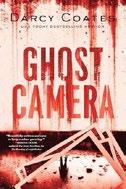
Australian horrormeister Coates revives and revises the title novella, her very first ghostly tale, adding another long story and seven shorter shivers.
Beware of Polaroid cameras you find while circling more and more widely around your buddy’s wedding reception. Jenine imprudently starts snapping pictures of the wedding party and soon notices spectral presences in the background. Her best friend, Breanna, who owns a flower shop, encourages her to get in touch with respected ghost researcher Richard Holt, whose advice is terse: crush and burn that camera
posthaste. By this time, Jenine has already snapped more pictures that reveal more ghosts; in a follow-up consultation with Holt, she learns that he had tried to help two other people who found ghost cameras that snapped photos breaching the boundary between the living and the dead, exposing them to deadly peril, which makes Jenine and Bree fear that it’s too late for them, too. In the other long story, “A Box of Tapes,” concerned mother Tess finds a sealed box of VHS tapes inexplicably nestled in the closet of her 4-year-old daughter, Kayla. “DON’T WATCH. YOU’LL REGRET IT,” advises an attached note, but Tess, like Jenine, ignores this advice, and the consequences are equally dire. The briefer stories are more invested in laying out a menacing premise than in developing a sustained plot from it. The most notable of them are “Untamed Things,” in which the only two survivors of an airline crash lean into each other in the hope of attracting possible rescuers, and “Cathedral,” which moves directly from a leisurely opening to a whiplash punchline. Baleful dispatches from the spirit world. They’re watching, they’re powerful, and they’re not happy.
The Hollywood Assistant Cobb, May | Berkley (416 pp.) | $29.00 July 9, 2024 | 9780593546826
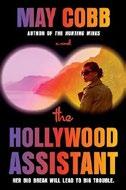
A would-be novelist falls into the perfect job and then keeps right on falling.
Cassidy Foster’s boyfriend may have dumped her, but all is far from lost. Before leaving to work on a film shooting in Prague, her oldest friend, Lexie, persuaded her to move from Texas to the Hollywood Hills by dangling a dream job in front of her. Running errands for Marisol Torres and Nate Sterling may not sound like a big deal, but Marisol is a hot actress, Nate is a hot director, they live in a beautiful house in Malibu, and the
job pays $5,000 a month for remarkably little work. And Cassidy, who approaches her employers’ every casual remark with the enthusiasm of a puppy, is actually good at what work there is. In no time at all, she’s organized Marisol’s closets to a fare-thee-well, earning herself bonuses like “Fourteen pair of designer jeans!,” and Nate is asking her to read and comment on screenplays that have been sent to him, rewarding her with cash bonuses that are likely to double her salary. This would all be too good to be true even if Cobb didn’t keep interrupting the idyll with flash-forwards in which Cassidy, questioned by the police in connection with some long-undisclosed crime, indulges in rueful reflections like “How did I think by agreeing to do something so crazy, things would end well? ” When Nate asks Cassidy to read his own unproduced screenplay for “a feminist, erotic thriller,” she thinks things have gone about as far as they can. Readers will know that they’ve barely begun. An inverted fairy tale that goes on long enough for savvy fans to predict every single twist.
Cornejo Villavicencio, Karla | One World/ Random House (224 pp.) | $28.00 July 23, 2024 | 9780593449097

An undocumented Harvard student approaches a crossroads in 2010. Catalina Ituralde was born in Ecuador. After her parents died in a car accident, she was raised first by her aunt and uncle in Ecuador and then by her grandparents in Queens, New York. Neither she nor her grandparents have papers to live in the United States. The story follows Catalina as she completes her final year at Harvard, a stressful time for even the most privileged young people but doubly so for a woman who must tend to her aging grandparents while trying to write her senior thesis and
determine what she’s going to do after graduation considering she can’t work legally in the country that’s her home. Her life hangs in the balance at a time when the fate of the Dreamers is being used as a political football. This is the author’s first novel, following The Undocumented Americans (2020), a nonfiction book that combined personal narrative with sensitive reporting to capture the stories of undocumented immigrants. Cornejo Villavicencio is herself one of the first undocumented students to have graduated from Harvard. But this novel doesn’t quite live up to the character of Catalina; her name is a fitting title for the book as little else holds it together. Catalina sort of has friends; sort of starts a romantic relationship; sort of cares about her classes, her work-study appointment at a museum on campus, and her thesis; sort of tries to tackle the daunting challenges she and her grandparents face. All of this is understandable: Anyone’s mental health and capacity to manage day-to-day life would buckle under this tremendous existential strain. But while astute, Cornejo Villavicencio’s commentary on the hypocrisy of liberalism and academia aren’t enough to carry a story that relies on coincidence, meanders, and stalls.
The novel doesn’t live up to the overwhelming tension and high stakes of its protagonist’s life.
Davis, Andie | Little A (268 pp.) | $28.99 July 9, 2024 | 9781662515644

An artist returns to Barbados to find her roots but becomes embroiled in controversy after a radio interview. Sabre Cumberbatch has found fame as a photographer, being likened to Jean-Michel Basquiat despite the clear differences between her black-and-white work and
his colorful paintings. But they’re both Black, right? Then, when the New York Times runs an interview with her in the style section instead of the arts section, Sabre begins to feel more alienated than usual and flees New York for Barbados, where she stays with her Aunt Aggie, her mother’s sister, and her family. Although Sabre immediately feels at ease on the island, she’s stepping into a hornet’s nest: Aggie, an attorney and longtime local doyenne who rules her home like a tyrant, has been caught cheating on her husband by her housekeeper. Aggie is keen to make the most of having a famous artist in the house and decides to throw a welcome home party for Sabre, but things go downhill from there. Sabre hears her aunt yell at some servers and refuse to tip them; a few days later, on an interview with a local radio station, she decides to speak out against the treatment of domestic workers in Barbados. Her speech launches the island into fervent debate, with Sabre emerging as a leading voice for a mistreated underclass she does not belong to herself. A satire of class, race, and savior complexes, the book draws richly on Bajan culture and customs. But at times the narrative drags, and for a satire, it tries to incorporate too many concerns—Sabre is dealing with her thoughts about fame, her family’s history, her current physical proximity to yet cultural alienation from Barbados. As a result, it can be hard to find the narrative’s focus.
An engaging and sometimes funny novel that tries to pull off too much.
DeForest, Anna | Little, Brown (224 pp.)
$28.00 | July 9, 2024 | 9780316567121

Palliative care, the Covid-19 epidemic, and a doctor’s complicated personal life are woven together in a sober amalgam of existence and departure.
In tone and approach, DeForest’s second novel bears close comparison with their debut, A History of Present Illness (2022), which offered a fragmented, detached insider’s look at medical training and hospital culture from an unusual perspective. This time, another unnamed female narrator is in training, learning to specialize in “pain unto death—or quality of life, as we are being trained to call it,” her work overlapping with the pandemic, aka “the plague years.” Also reminiscent of the earlier book are the narrator’s relationship with a seminarian (here her husband, Eli) and a problematic personal history, which in this case touches on unloving parents and a drug-addicted brother who has left his 5-year-old daughter, Sarah, in her care—“a temporary daughter.” There’s no plot, but the gathering glimpses of the narrator’s backstory and private life, including the death of her father, offer some connection. Loss of life is indeed the central topic, not just the look and sound of death, although these are included, but numerous other aspects: the behavior of relatives; the experience of a patient’s last hours; the fine lines between care and harm and end of life; autopsy; organ harvesting. Eli’s job is “to be with the families in those quiet rooms adjacent to the emergency department, in each wail an instance of scalding, incoherent grief.” Dying also pervades the narrator’s frequent philosophical and abstract musings, including the countervailing question arising at a retreat she attends periodically: “What is the purpose of living?” DeForest, themself a palliative care physician,
has delivered less an immersive storyline, more a meditation on both life and death leavened by occasional sardonic humor. Short, dark, stylish, sui generis. An idiosyncratic form of fiction, stimulating yet not entirely satisfying.
Ed. by Fowler, Gabe | Pantheon (192 pp.)
$25.00 | July 23, 2024 | 9780593316801

Editor and comic-shop owner Fowler curates a collection of more than 140 nine-panel-grid comic strips created during the height of the Covid-19 pandemic by a variety of artists responding to his call to envision the utopia waiting on the other side of quarantine.
The foreword and introduction explain how Fowler, quarantining in a rural Connecticut cabin after shuttering his Brooklyn storefront, posted to the shop’s Instagram account a call to make art with the purpose of buoying a beleaguered populace. Though overwhelmingly North American and European and always in English, responses came from around the globe: three-bythree grids of left-to-right sequential art, whimsical, sentimental, psychedelic, and sometimes all three at once. Many of the works collected here express longing for physical touch, a yearning for reunions with
An invaluable time capsule and arresting expression of the human condition.
RESCUE PARTY
friends and lovers and even the casual physicality of busy bars and bustling sidewalks. Others celebrate the slowing down that accompanied quarantine, savoring simple pleasures and walks in nature and the idea that an earth ravaged by industry was healing through the deceleration or even cessation of human activity. Many depict transcendent journeys through the cosmos and/or planes of existence, encountering more than a few ghosts and cosmic entities. Pets feature prominently, with one small pup teleporting from his couch to an alien world where he snatches mutated coronaviruses from the air like they were spiky tennis balls, chomping and chewing the plague into submission. The most poignant feel grimly optimistic, seeing the quarantine as an opportunity to reset oppression and inequality (“Normal wasn’t working for most of us”). Vividly expressed through linework with occasional collage, these individual accounts of a shared event strum the cord that connects us. Our current fraught postquarantine moment haunts the pages, and time will tell if it is unfinished business or missed opportunity. An invaluable time capsule and an arresting expression of the human condition.
Hamya, Jo | Pantheon (240 pp.) | $26.00 Aug. 13, 2024 | 9780593701034

A controversial 60-something novelist finds the tables turned when his daughter writes a scathing play about their Italian holiday years earlier.
One writer in the family is unfortunate, two make for catastrophe: That’s one takeaway from this sophomore novel by the author of Three Rooms (2021). Sophia’s father (who’s never named) attends a
matinee performance of his daughter’s play at a London theater. Upstairs, Sophia and her mother— long divorced from her father but recently pulled back into his orbit by the pandemic—eat lunch in the rooftop restaurant, edgily awaiting his reaction. Downstairs, he’s outraged to discover that the play is based on a vacation he took with teenage Sophia, during which she served as his amanuensis, sulkily bristling at his dictation by day (“He’d never said please for the duration of their work together”) and overhearing his casual sexual encounters by night. As Sophia’s father sits in the audience cringing at her portrayal of him (“He wonders what he’s done to be so abysmally misunderstood by the most important person in his life”), he must acknowledge that her play is brilliant: “It’s like the novel Sophia helped him write, but better.…He’d spent 400 pages anatomising three centuries’ worth of the English novel against his generation’s attitudes to sex, and here she is, neatly holding just one of his books against the entirety of her generation’s values.” Gender roles, generation gaps, the nature of genius: Hamya explores big ideas but is at her best offering precise observations; a sly coda strikingly reframes the drama of Sophia and her father. And who, exactly, is the hypocrite of the title? A biting novel of art, inheritance, and evolving mores.
Under the Neomoon
Hilbig, Wolfgang | Trans. by Isabel Fargo Cole Two Lines Press (172 pp.) | $16.95 paper June 11, 2024 | 9781949641615

Yearnings from East German writer Hilbig (1941-2007). Work and nature wrestle everywhere in these stories, first published in 1982 and newly
translated from German. Hilbig’s background as a millworker is present throughout the collection, often only by implication; the more peripheral his occupation is, the more interesting the stories are. “Idyll” begins like an Impressionist painting, indulging a naïve scene of “enticing grass” and water that takes “the form of a noise suspended over the surroundings”— before a declension to labor and drudgery: “How dreary, how pathetic to work…how tiresome to know what country I live in.” “Thirst” depicts, in similar detail, the ritual of getting drunk downwind of a soap factory. The narrator conjures “the cloying, unendurable smell of cadavers”—the soap is composed of animal fat—and then says, “You must drink until all memory of that repulsive gas yields.” When the story concludes, “He’d prefer the stench of a stable on the fields’ edge,” the daydreamed countryside is a foil for an absurd, industrial life. Later stories featuring a fugitive and a “pedo” prisoner offer new settings but similar vivid accounts of places that exist only in the characters’ minds. The mechanical description of pedophilia—“a sexual predilection for immature things, botched techniques, devices rendered nearly unusable by their incomplete construction”—mirrors Hilbig’s proposed explanation of factory work to a “visitor from Mars”: “producing machines to manufacture machine parts for assembling machines to manufacture other machines,” and so on. Each is a trap to escape. Hilbig wrote poetry as well as prose, and his tone is often conversational, his grammar loose with long or unfinished sentences. Sometimes, though, the simplest turns of phrase delight. Indulging a daydream, he writes, “I said it as though I were learning to talk.” Evocative depictions of work, confinement, and the fantasy of escape.
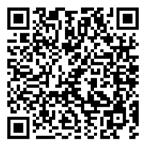
Johnston, Bret Anthony | Random House (352 pp.) | $29.00
July 30, 2024 | 9780399590122
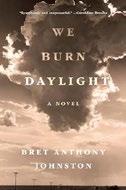
Young lovers struggle to overcome the powerful forces working to separate them. Inspired by the events surrounding the siege of the Branch Davidian compound in Waco, Texas, Johnston’s second novel is a fast-moving and emotionally sophisticated account of the dangers of religious extremism and the tender story of two teenagers caught up in the tragedy that ensues when sectarianism collides with the larger world. Not long after 14-year-old Jaye Carroll and her mother move in early 1993 from California to the millenarian community near Waco controlled by Perry Cullen—known to his followers as “the Lamb”—she meets her contemporary, Roy Moreland, son of the second-generation county sheriff, at a gun show. Jaye is smart, self-aware, and under no illusions about Cullen’s true motivations, while Roy is mainly smitten to discover his first true love. In the early days, relations between Cullen and the surrounding community are peaceful, if coolly distant, but as suspicions grow that he’s accumulating a massive arsenal while sexually abusing young women under the guise of faith, the apocalyptic clash for which the Lamb has been preparing his followers gradually becomes inevitable. The brief chapters that alternate between Jaye’s and Roy’s points of view heighten this rising tension. Interspersed with their narrative are excerpts from a podcast three decades later that features interviews with surviving cult members, law enforcement officials, and others familiar with the tragedy at the ranch. Johnston adeptly shifts between mundane moments and episodes of vivid drama, culminating in the assault on Cullen’s compound that rapidly
turns nightmarish for both sides. Even as the bullets fly, a protracted standoff ensues, and the novel moves toward its devastating climax, he keeps his deeply sympathetic protagonists clearly in focus. He also gracefully summons images of the rugged Texas countryside that provides the setting for a novel that beautifully evokes “the hubris, the naivete, the irrationality of love.”
An evocative reimagining of the Romeo and Juliet story set amid the catastrophic collapse of a religious cult.
Justice, Robert | Crooked Lane (336 pp.)
$30.99 | July 23, 2024 | 9781639108176
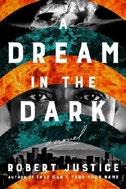
The efforts of a Black rookie attorney to exonerate Denver’s wrongly imprisoned continues. Talk about steady work. Whipped into even more righteous fury by her failure to clear her father before his execution, Liza Brown has joined Project Joseph in order to reopen the cases of strangers. She’s slated to look into the conviction of Dexter Diaz, who’s currently serving a life sentence for killing special education teacher Kathy McCarver, when she gets a letter from Moses King, who’s already 28 years into a 48-year sentence for attacking Claudette Cooper, begging her to take his case because an old buddy of his has confessed to the assault. Her boss orders Liza to decline, since Moses isn’t on death row or even serving a life sentence. But Dexter is so unsympathetic and Moses so appealing that Liza keeps looking for ways to color outside the lines. As she searches for more evidence that might vindicate Moses, who was convicted on the basis of a dream Claudette had about him a day and a half after the crime, Liza’s friend Eli Stone fights to keep The Roz, the jazz club he restored in the Five Points neighborhood, open despite declining
revenues, competition from newcomer Chance’s Place, and his own alcohol-fueled torment over the death of his wife five years ago. The story, drawing on a surprising number of real-life cases and people, is less impressive as a mystery or a legal thriller than as a fictionalized history of Black citizens’ struggles to extract justice from a legal system determined to crush them and spit them out. A bruising, blow-by-blow account of what can happen to dreams deferred.
Kent, Minka | Thomas & Mercer (271 pp.) | $16.99 paper July 23, 2024 | 9781662511660
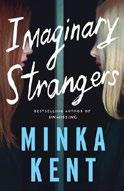
Imaginary Relatives would be a more exact title for this chilling kickoff to Kent’s Dangerous Strangers series.
Camille Prescott is a sociopath. She doesn’t love her perfect husband, Will, or her children, 6-year-old Georgiana and 4-year-old Jackson. Instead, she does such a conscientious job of faking love that she’s taken in her family and everyone else. And her lifelong masquerade isn’t really Camille’s fault, for, as her therapist back in Chicago once told her, “sociopaths were made, but psychopaths were born,” and Camille was made by Lucinda Nichols, her monstrously abusive mother. Persuading Will to relocate to San Diego without telling him that her motive is getting away from Lucinda, Camille settles into an artfully simulated routine that’s disrupted when Georgie tells her that in addition to Bestie, her imaginary friend, she’s made another buddy at school. Imaginary, as Georgie calls her, bears a striking resemblance to Imogen Carrey, a new teacher’s aide at Ocean Vista Elementary School, but an even more disturbing resemblance to Lucinda. Alarmed at the possibility that her mother has found her and discovered a way back into her life, Camille
methodically follows Imogen, hoping to establish a link between her and Lucinda. The result of her aggressive defensive maneuvers threatens to turn the people who’ve supported her in the past, especially Will and his well-born mother, against her. Given Camille’s troubled history and lack of true emotional affect, who’s going to believe her when things go calamitously wrong? A pitiless probing of a heroine many readers will take to their hearts despite the absence of one of her own.
Kim, Monika | Erewhon (288 pp.)
$27.00 | June 25, 2024 | 9781645661238
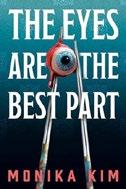
Men—not the woman who murders them— are the objects of horror in this debut novel. The story opens with a vivid description of the protagonist’s mother tearing apart a fish she has just cooked and horrifying both her daughters by pulling out an eye, holding it aloft, and eating it with exaggerated relish. It’s an arresting tableau and one that will—as you might guess from the title—take on greater significance as the narrative progresses. This is also a rare moment of pleasure for a woman whose world is falling apart after her husband abruptly left her, and this betrayal by a man will also echo throughout the book. Ji-won, the narrator, is in her first year of college. She’s struggling academically and socially. When a white guy named Geoffrey seems eager to get to know her, she neither discourages him nor encourages him. Her reaction to her mother’s new boyfriend, George—another white guy—is entirely straightforward: She loathes him, and his arrival is something of a psychic turning point. Her loathing turns into nightmares about blue eyes, and Ji-won turns into a murderer with a desperate need to devour human eyeballs. There will no
A wrestler guides his young sister through the ups and downs of the sport.
KAYFABE
doubt be readers who get a kick out of this book simply because it’s a feminist revenge fantasy. But if the concept alone isn’t enough to hold your attention, there’s not much else on offer here. The pace is leaden— until the final act, which feels rushed and truncated. Geoffrey is straight caricature; a dude who is this emphatic about his feminism has to be a creep. George is also rather broadly depicted. It’s only fair to say that his ignorance, bigotry, and general terribleness are believable but, as a villain, he doesn’t have enough depth to make him interesting. Neither does Ji-won, and that’s probably this book’s greatest weakness. Kim does very little to help us understand why, exactly, this young woman turns murderous. Young women all over the world deal with terrible men every day without going on a cannibalistic killing spree. Her transition from aimless and unhappy college student to devious criminal mastermind is equally perplexing. Tantalizingly sensationalistic premise, disappointing execution.
Koslowski, Chris | McSweeney’s (408 pp.) | $18.00 paper Aug. 27, 2024 | 9781952119859

An aging wrestler guides his young sister through the ups and downs of the dangerous sport. “Man is meat.” So begins the saga of 26-yearold over-the-hill wrestler Domingo Contreras and his sister, Pilar, soon to
be 18 and already eager to don the spandex and lace-ups. Koslowski gives equal attention to the bonds of their relationship and the culture of the industry. Pilar is ready to prove herself and commits her body and soul to the profession, enduring unspeakable punishment in so doing. “There was pain, and she didn’t care. She transformed it into adrenaline, focus, the drive to take on more.”
Speaking to the novel’s esoteric title—“kayfabe [was] the closely guarded secret that wrestling was theater”—Koslowski’s story is not bashful about depicting the staged theatrics of professional wrestling. While it’s largely performance-based and dedicated to maintaining an illusion, it’s still a sport requiring great skill and athleticism, and a risky one at that: “A boxing ring could kill a wrestler, and the give of a wrestling canvas could snap untrained ligaments.” The pathos is aplenty, but never maudlin, as Dom reckons with his own physical deterioration while mentoring his young sister to take his place. “As if his oil tank had burned dry, Dom’s muscles seized, and he ground to a halt.” Though the novel could have been much shorter, there is a visceral, evocative energy to the descriptions that help it along: “The contortion was as elegant as ballet, as repugnant as torture porn.” Koslowski does a capable job of developing a convincing milieu and puts his characters through their paces with pitiless yet compassionate precision. This is a love letter to showmanship with enough high stakes, insider trivia, and personal struggle to make it enormously readable. An unexpectedly tender ode to passing one’s prime while also finding new joys in fostering next-generation talent.
Is there life after Nantucket? The “queen of beach reads” wraps up her long-running summer series.
BY MARION WINIKLIKE LEGIONS OF other Elin Hilderbrand addicts, I panicked when I heard that Swan Song (Little, Brown, June 11) would be her last novel. The Kirkus critic, in a starred review, clearly shared our concern, reporting, “Though Hilderbrand threatens to kill our darlings with this otherwise delightful final installment, an afterword reassures us it’s just ‘for now.’”
This 54-year-old author has earned a sparkling string of stars and raves over the course of 30 island-inspired volumes: “Who needs Nantucket? It could hardly be more fun than this book.” “The people in her books may screw up, but Hilderbrand always gets it right.” “Print the bumper sticker—I’D RATHER BE LIVING IN AN ELIN HILDERBRAND NOVEL.” With 23 million copies of her books sold globally, and multiple TV deals in the works (more on that later), the praise seems to be universal. I caught up with Hilderbrand on Zoom while she was being driven from a library event in Syracuse to a meeting with her publishers in New York City. Busy lady.
Our conversation has been edited for length and clarity.
So are you retiring or not? And if so, why?
I’m going to take a full year off from the business plan that I’ve been on, no contracts of any kind. Professionally, I feel myself coming to the end of my material. I’ve done all the holidays, all the traditions, every part of the island, and I feel like I’m going to start repeating myself. The level at which I was writing for The Perfect Couple, Hotel Nantucket, The Five-Star Weekend, and Swan Song I just can’t sustain


cook for them, let them come over and do their laundry. My oldest son, Max, works on Nantucket in the summer and travels in the winter, so he can come down and hang out, too.
and the teachers; we’re each doing some of the students. Her most important job is filling in all the details and providing the Gen Z voice and attitude. It’s almost done, and it’s so good—so juicy!
that, and I never want to be one of those authors who starts putting out books that are just not as good.
The other piece of it is my kids. Dawson is in college at the University of Miami, and Shelby will join him next year. This feels like my last chance to spend quality time with them before they become adults and go on to have their own families. So I’m moving to Miami this winter. I’ll get a place close to campus and be their errand girl, take them out,
I heard you and Shelby are working on a book together. Yes, Shelby’s graduating from boarding school at St. George’s in Newport, Rhode Island. Ever since she got there sophomore year, I’ve been getting five or six phone calls a day telling me all the stuff that’s going on. And the stories are outrageous. I said, “We must write a novel”; she said, “Sure.”
We’re doing a two-part series; the first one is junior year, then we follow them as seniors. There are multiple points of view and many different storylines braided together. I’m writing the head of school
Do you know the title yet? When will we see it?
The Academy, fall of 2025.
Let’s talk about Swan Song. What inspired the plot?
I had this dream that I was going to be able to write a “long con” thriller, like an Anna Delvey story. I was going to focus it on a younger couple on the make. They come to Nantucket and hook up with this older wealthy couple, but the older couple is actually the one doing the grifting. Unfortunately, it turns out, I can’t write a thriller. I’m not a plot-forward
writer. But I was still intrigued by the idea of a couple nobody knows coming to Nantucket, because one of the annoying things about Nantucket is that everybody knows everybody. This couple appears out of nowhere and turns oldschool Nantucket society on its head.
How do you decide which recurring characters are going to appear in a book?
I knew Ed Kapenash, the police chief, was going to retire, and his plotline would be wrapped up. I wanted Fast Eddie, the real estate agent / reformed pimp, because there’s a big real estate deal in the plot. I brought back the characters from The Castaways , favorites of mine from long ago, and Jennifer Quinn from the Winter Street series.
And Blond Sharon, who becomes a writer. Going meta there?
I invented Blond Sharon back when I wrote The Rumor. At that time, there was so much gossip going around Nantucket, and I was so annoyed by it, that I decided to write a novel called The Rumor, and everybody who gossips on Nantucket would be in it. I always say I don’t put real people in my books, but this was an exception.
Blond Sharon was based on a woman who is blond and whose name is not Sharon, but it’s close. If this woman’s not talking about someone, she’s not talking. Blond Sharon returned in other books, and in Hotel Nantucket I gave her a sister named

Little, Brown | 384 pp. | $30.00 June 11, 2024 | 9780316258876
Heather. Well, I have a sister named Heather. Blond Sharon and Heather appeared again in The Five-Star Weekend, and now in Swan Song Sharon decides to try her hand at writing. After gossiping about all these Nantucket people for so long, she realizes she should be writing it down. At this point, the original gossipy woman has been left behind, and she’s morphed into a version of me.
I remember hearing that you didn’t have a great experience at the Iowa Writers’ Workshop. Is that right?
My brand of fiction was not appreciated, you might say, and this is even before I started writing about Nantucket. Everybody else was very serious, very dark, very literary, and they looked at me as like this
One of the annoying things about Nantucket is that everybody knows everybody.
little chirping bird. I don’t know what they think now.
I think they’re green with jealousy. You have all kinds of TV stuff happening, right? Well, Netflix has a gag on me for the main story. But I can tell you that The Perfect Couple , starring Nicole Kidman, Liev Schreiber, Dakota Fanning, and Eve Hewson, is in postproduction right now, and you should be seeing it in 2024.
Peacock is developing The Five-Star Weekend with writer Bekah Brunstetter, who just got nominated for a Tony for The Notebook
The Winter Street series is in development with the same writer who did The Perfect Couple, Jenna Lamia; Summer of ’69 is with Sony 3000; Swan Song has been optioned as well, but I can’t say by
whom since it hasn’t been announced.
Well, you’re about to dominate my TV, which is fine with me. Tell us a little about your podcast. Books, Beach, and Beyond started last year, a little prematurely, since it was supposed to be after I retire, but my partner Tim Ehrenberg got excited about the idea and couldn’t wait. On Season 1, we had Colleen Hoover, Taylor Jenkins Reid, Ann Patchett, Jennifer Weiner, Kristin Hannah, Jodi Picoult, and Sunny Hostin, among others. Coming up is Emma Straub, Claire Lombardo, Liane Moriarty, Emily Henry, and Emily Giffin. What I found out is that people will not say no to me!
Marion Winik hosts the NPR podcast The Weekly Reader.
Lapena, Shari | Pamela Dorman/ Viking (320 pp.) | $30.00
July 30, 2024 | 9780593489963

In Fairhill, Vermont, a community where nothing seems to happen, a violent death exposes the cruelty hiding beneath the town’s supposedly placid surface.
Diana Brewer’s body is found in a farmer’s field, and what initially seems to be a crime novel walking a well-worn path of plot points and tropes instead travels in a new direction. Lapena rolls out a story unique and timely in its telling. No one can imagine who could have killed Diana, a high school senior, and suspicion immediately turns to her possessive boyfriend, Cameron Farrell. He might have been the last person to see her alive, but the police have additional suspects. Any of them may or may not be murderers, but when their interactions with Diana are exposed, it becomes clear none of them is innocent. The throughline in this astutely observed story is that as much as young women want to take charge of their own lives, there are men who want to control and abuse them. Lapena makes sure Diana’s spirit is profoundly present, first as she’s looking down from above on her dead body, then as she observes her mother’s grief, the interrogation of suspects, and the pain her friends suffer as a result of her death. Equally fascinating is the portrayal of the fiancee of one of the suspects, who’s torn between his insistence that he’s not guilty and the strong possibility that he’s not the
person she’d planned to marry. As much a commentary on how women’s concerns and accusations are often dismissed as it is an intense crime story, Lapena’s novel excavates the ways so-called responsible adults don’t do enough—a crime in itself—to keep young women like Diana safe. “How many ways,” Diana asks after her death, “can a girl be assaulted?” The novel’s emotional heft will linger with readers. A tragic death and a slew of suspects ignite this incendiary tale.
Lima, Ananda | Tor (192 pp.) | $24.99 June 18, 2024 | 9781250292971
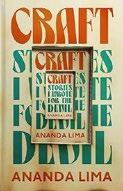
Brazil-born Lima explores questions of identity, politics, and creativity through a surrealist lens in these short stories.
The Devil is a recurring figure in Lima’s collection, sometimes appearing as a figure of intrigue, other times as a source of inspiration. In the opening story, “Rapture,” the main character is not a writer when she first meets the Devil, “at least not openly so.” And yet, “the Devil had known...the space she had inside her to carry her stories. He had known her hunger.” As if a telepathic confidant, the Devil intuits who the writer is before she herself knows and helps instruct her on how to fulfill her creative vocation. Lima sometimes features characters in the very process of writing, as in “Ghost Story,” in which
the narrator “type[s] ‘Ghost Story’ at the top of the page and wonder[s] where to start.” While her characters may not know what should come next, Lima adroitly comments on everything from MFA workshops to Brazilian politics with cheeky aplomb. Though this is not an overtly political book, the specter of neoliberalism in both Brazil and the U.S. hovers on the periphery of many stories. Often, the hellscape of global politics occurs on the television in another room, an ongoing commentary that is ever present, though muted like white noise. The personal becomes political within literary spaces where “sometimes, when the immigrant writer wrote, there was no migration in the story, and she wondered if there should be. Sometimes the immigrant writer wrote immigrant stories and wondered if she shouldn’t. These were the kind of questions she talked about with the Devil.” Who gets to tell certain stories and why? The book’s title evokes both guile and labor, cunning and skill. The dream for Lima’s characters, plagued by global pandemics and wealth disparities, is not health or fame, but writing. Art may not save us from the Devil or hell on earth, but it can come close. Stories that will delight readers crushed under the weight of the contemporary world.
McCreight, Kimberly | Knopf (320 pp.)
$28.00 | July 9, 2024 | 9780593536421

A mother and daughter find new appreciation and understanding for each other when their lives are threatened. When New York University student Cleo shows up at her mother Katrina’s Park Slope house for dinner, she finds signs of a struggle—and her mother’s shoe covered in blood. Mother and daughter had been estranged since Katrina interfered in Cleo’s relationship with a white-collar drug dealer, but Cleo
instantly snaps into action, determined to find her mother. Aided by a sympathetic cop and hindered by her lackadaisical father (who’s separated from her mother), Cleo investigates her mom’s computer as well as her place of business. Katrina had always led Cleo to believe she was a patent attorney, but it turns out she was a fixer for wealthy and powerful people. She was also, in her youth, an abandoned child who lived at Haven House until she was adopted at the age of 14. Cleo finds her mother’s journal from those years and feels appalled—and guilty—to read about the abuse her mother endured. As Cleo is drawn deeper and deeper into the details of her mother’s life and disappearance, she herself may be in danger. McCreight alternates first-person chapters about Cleo’s search with chapters in Katrina’s voice about the days leading up to her disappearance, and also includes the occasional transcript of a therapy session, journal entry, or legal document connected to one of Katrina’s big cases. The build-up is extremely well paced and effective, created brick by suspenseful brick. No one, of course, is who they seem. Eventually the two main narratives converge in a somewhat flat climax—but most of the loose threads are satisfactorily tied up. Both Katrina and Cleo are tough as nails and vulnerable as hell, which makes it easy to root for them both against all the forces of (mostly masculine) evil they have to combat.
A smart, complex domestic thriller.
Kirkus Star
McKenna, Oisín | Mariner Books (352 pp.)
$30.00 | July 16, 2024 | 9780063319974
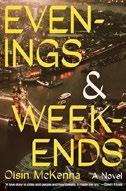
As a soon-to-be mom braces for major life changes, her best friend wrestles with a secret that could have enormous implications for the pregnancy.
This sparkling first novel focuses on the intertwined lives of three Londoners and their broader networks of friends and family, largely over the course of a single weekend in June 2019. Thirty-year-old art school graduate Maggie, her longtime boyfriend, Ed, and her best friend, Phil, have known each other since they were kids running around Basildon, a working-class town 40 minutes away by train; Ed’s mother and Phil’s parents are neighbors, and Phil’s older brother is Ed’s best friend. When Maggie tells Phil one Saturday that she’s pregnant and that she and Ed are moving back to Basildon to prepare for the baby, he doesn’t react the way she expects, but not for the reason she thinks. For Phil, the news rekindles a decade-old moral dilemma. Much as Phil has tried to put the past behind him, he knows something about Ed that Maggie doesn’t—a secret so big it could threaten Ed and Maggie’s relationship. With the impending addition of a baby to the mix, he feels more compelled than ever to reveal the truth. Concurrently, other problems arise in their peripheral social circle and beyond. Ed battles private demons. Phil’s older brother and Ed’s best friend, Callum, disappears. Phil and Callum’s mother, Rosaleen, is trying to figure out the best way to disclose her cancer diagnosis to Phil. Phil is sorting out his feelings for his housemate and hookup partner, Keith, who’s in an open relationship with another man, Louis. Things come to a head at a massive party held at Phil’s warehouse commune home on Saturday night in honor of the summer solstice. In another pair of hands, the compressed timeline and the size of the cast could have made for a disjointed reading experience, but McKenna toggles among the different characters and storylines with aplomb. What emerges is an empathetic portrait of millennials trying to build lives for themselves amid social, political, and ecological change. A smart debut that feels rooted in the experiences of a generation and establishes McKenna as a gifted writer.
The Recruiter
Podolski, Gregg | Blackstone (350 pp.)
$27.99 | July 23, 2024 | 9798212026406

A highly successful middleman who arranges contract killings is put on the spot when his latest success leads to a contract he really doesn’t want. Rick Carter— not his real name, of course—is the man you call when you have a problem that requires a violent and decisive solution. Since drifting into this work years ago to support his wife, Denise, and their children, Maggie and Ethan, he’s brokered many successful arrangements between clients and hit men before and after abandoning the family he could no longer shield from the consequences of his lucrative practice. When his latest success—a double murder committed by rising star Ian Matthews at the request of mid-tier crime boss Leon White— brings him to the attention of bent Interpol operative Patricia Baum, he’s flattered but unwilling to arrange the deaths of six members of an international task force on trafficking: two from the FBI, two from MI5, and two from Mossad. Trish, who doesn’t care about his scruples, presses him to the breaking point, and he’s soon engaged Ghost and The Persian, a pair of seasoned professionals, to join Ian, allotting them two targets apiece. The situation abruptly gets more complicated when Ian calls to tell Rick that Trish has quietly added a third target to his list: Robert Baglioni, a Philadelphia homicide detective who’s engaged to Denise. So Rick bands together with his old friend Joey Walls, a well-connected seller of drugs and guns, and Erica Krieg, an aspiring assassin who’s been drummed out of the German Special Forces, to protect Rob and the family he’s convinced are in the sights of the A-list killers he’s just hired. Enough action, killing, twists, and betrayals for a whole season of quality TV.
Not fairy tales but a novel about the people who told them.THE MODERN FAIRIES
Pollard, Clare | Avid Reader Press (272 pp.)
$28.00 | July 23, 2024 | 9781668049419

Not fantasy fiction or a collection of fairy tales, but a historical novel about the people who told them. Pollard, a poet, sets her second novel for adults in the Parisian salon of Marie-Catherine d’Aulnoy during the reign of Louis XIV, with Charles Perrault as a frequent point-of-view character. D’Aulnoy’s salon and Perrault’s stories are still famous for their role in literary history. There intellectuals, mostly noblewomen, gathered to share fairy tales, some literary elaborations of folktales and some inventions of their own. Pollard draws on a rich lode of source material: “I must tell you, an almost unbelievable amount of this is true,” she writes in her author’s note. Each chapter in the novel is named after a fairy tale, some (“The Tale of Bluebeard”) more familiar to contemporary readers than others (“The Tale of the Ram”). In most chapters a member of the salon tells the tale in question. These stories are a safe way for the characters to examine and criticize the world of the Sun King’s court without—they hope— falling afoul of the power-greedy monarch and his bloodthirsty spies. Not coincidentally, the lives of the salon members, with their poisonings, forced marriages, dead spouses and parents, cruel rulers, illegitimate princesses, secret affairs, hints of incest, and horrifying
punishments, sound like the fairy tales themselves.
Cold, clever, and glittering, this beautiful novel resembles both the court and the stories it depicts.
Prcic, Ismet | Avid Reader Press (304 pp.)
$28.99 | Aug. 6, 2024 | 9781668015339

A writer who escaped war-torn Bosnia uneasily resettles in America. Prcic’s tricky, prismatic, sardonic second novel features a narrator (also named Ismet, aka Izzy) working through past traumas. He’s in Salem, Oregon, recently divorced, in recovery from alcoholism, and recalling his youth in Bosnia-Herzegovina, which was ravaged by the early 1990s war. To cope, he writes letters to the comic Bill Burr, whose brash, cynical delivery makes him a kindred spirit. Those letters introduce fuller chapters that are lightly fictionalized efforts by the narrator to address his pain—Prcic’s characters all tend to drink heavily, fall in love hard, and strive to blot out memories of dead friends and family members. The backstories sometimes change slightly, but there are some bedrock elements: Southern California, acting school, writerly ambition, dead-end jobs. In one chapter, the hero, working in a movie theater for an abusive, lackadaisical manager, sublimates his rage by sending messages through the marquee; in another, he does it via his son’s hyperviolent video game. This instability of identity in the story is disorienting, but to a purpose, revealing the chaos within
the mind of a war refugee (“I start a page of fiction and it crumples into trauma, the past, and I can’t stop the narrative and comment…”). Though at times the structure and prose threaten to become abstracted, Prcic has an excellent command of the everyday anxieties of the maintenance alcoholic— the deceptions of loved ones, the small preparations. And Prcic can be funny, with a hyperactive comic tone that cuts to the heart of his struggle: “When everyone else was going on and on about ‘narrative coherence’ you were like, ‘Fuck narrative coherence, what about the dude is broken don’t we understand!?’”
An adventurous novel that meshes a fragmented narrative with a broken soul.
Pritchett, Laura | Dell (336 pp.) | $20.00 paper July 16, 2024 | 9780593724200
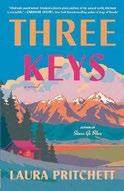
A woman in her mid-50s embarks on a solo adventure and finds herself in the process. When Ammalie Brinks’ husband, Vincent, died, they had only recently become empty nesters. This new loss was too soon, and Ammalie worries that if she had acted faster when he had the stroke, if she had known what to do, perhaps he wouldn’t have died. Instead, she’s been left on her own. Her son, Powell, has asked for space while he processes his father’s death; her closest friend, Mari, is confronting marriage troubles; and her sister, Apricot, is struggling with her health. With no one holding her back, Ammalie sets off on her own, telling no one where exactly she’s going. She begins a journey to visit three specific locations, many thousands of miles apart, using old keys to gain entry. To reach these places—one she visited with Vincent and two he visited without her—she sleeps in her car, eats canned goods from the container, and often forgoes indoor plumbing. She
hopes the trip will reveal more to her about Vincent, but as she runs into challenges, the person she ends up learning about is herself. Told in a close third person, the book follows Ammalie as she meets exciting people as well as wobbles off-kilter from too much time alone, talking to her belongings and failing to adequately care for her physical needs. The author deftly depicts the escalating loneliness and fear Ammalie feels as hours on her own accumulate.
Because of the solo nature of her journey, a large chunk of the book takes place inside Ammalie’s head, which does slow things down. Even so, the author’s nuanced descriptions of Ammalie’s determination, joy, and trepidation as she meets people, as well as the lessons she takes away from each of the encounters, are engaging enough to get you through the slower portions. The book examines weighty topics like grief, marriage struggles, and growing older in a manner that is thought-provoking and insightful.
A satisfying examination of one woman’s journey of self-discovery.
Robotham, Michael | Scribner (336 pp.)
$28.99 | July 2, 2024 | 9781668030998

Nottingham forensic psychologist Cyrus Haven investigates a mass migrant murder in his fourth outing. Cyrus and his friend Evie Cormac—born
Adina Osmani—are enjoying a day at the beach when a woman screams that someone is floating in the ocean. Cyrus swims to the rescue, but he’s too late. Then more bodies float in, 17 in all with but one survivor. They had come from the Middle East, desperately trying to reach British soil. But miles out in the English Channel, another
boat had rammed into their inflatable dinghy, sinking it. Who? Why? Was it an accident? Was it xenophobia, a warning to keep foreigners out? Or does it go deeper? A mysterious ferryman is said to control the human trafficking across the channel, but most people think him a bogeyman, the stuff of ghost stories. Then the lone survivor is murdered; how will police ever learn what happened now? In Scotland, Cyrus is told, “Oh, that’s a dangerous beastie, the truth, a monster in the loch.” Cyrus and Evie narrate alternating fast-paced chapters that will rivet the reader’s attention. Both have backgrounds you wouldn’t wish on your worst enemy. Cyrus’ older brother murdered their parents and two sisters. Evie, from Albania, lost her family and has been sexually trafficked and tortured. “Coin-sized lesions” from cigarette burns pock her legs and abdomen. Cyrus fostered her, and they have become good friends. The interplay between the two main characters makes the story stand out. She’s attracted to him, but the feeling is not mutual. He cares deeply about her, but he’ll never violate his professional ethics. So she’s both jealous and happy knowing that he’s “bumping uglies” with a more appropriate woman. In his words, Evie is “damaged and self-destructive and a pathological liar, but she is also funny and feisty and intelligent and empathetic.” There’s also a great secondary character from Zimbabwe who deserves a role in Cyrus and Evie’s next adventure. Fans of crime fiction will love this one.
Roorbach, Bill | Algonquin (240 pp.) $28.00 | July 16, 2024 | 9781643755618

know from the beginning, however, that his troupe is aware of a world beyond its rainforest that contains other monkeys, and that a prophecy promises “a monkey one day will come along whose accidental courage will reunite us, even save the world.” That monkey turns out to be Beep in this good-natured fantasy, which launches when he leaves his troupe to find a mate. Shortly after, he meets up with Inga, an 11-year-old girl who befriends Beep when he tries to grab some pineapple from a table outside her family’s vacation home in Costa Rica. Soon he’s unwittingly in Inga’s “noopsook” on a “roarbird” bound for New York. Beep’s rendering of various “you-men” words is initially distracting, especially since his narration implausibly uses others like “tween” and “inanimate” with no problem. The language becomes less jarring and the pace picks up in NYC when Beep and Inga take a trip to the “Bronzoo.” An extended scene in which they evade the “Greenies” (aka guards) and start opening cages is well paced and exciting, with the tension ratcheted up as the police arrive and tranquilizer guns are deployed against the growing horde of freed animals. Roorbach depicts animals communicating across species, and a minority of humans led by Inga who can understand them, as a means to lead his plot toward a feel-good denouement. Not every reader will be charmed by Beep’s mannered voice or persuaded even fictionally by his odyssey, but Roorbach’s vision of a world despoiled by human waste and carelessness is grimly plausible, and his hope for a better future is no doubt shared by all.
A monkey goes on a journey to save the planet. The novel is narrated by Beep, a squirrel monkey living in what we eventually learn is Costa Rica. We
Pleasant enough, for those who buy the concept of delving into an animal’s thought process.

James Lee Burke and I.S. Berry are among the winners of the mystery prizes.
The Mystery Writers of America announced the winners of its 2024 Edgar Allan Poe Awards, given annually to works of mystery fiction and nonfiction.
James Lee Burke took home the Edgar for best novel for Flags on the Bayou, his book set in Civil War–era Louisiana. Burke previously won the best novel Edgar for his books Black Cherry Blues and Cimarron Rose. Former CIA operations officer I.S. Berry won the award for best first novel by an American author for The Peacock and the Sparrow, while the best paperback original prize went to Jesse Q. Sutanto’s Vera Wong’s Unsolicited Advice for Murderers
Nathan Masters won the prize for best fact

crime book for Crooked: The Roaring ’20s Tale of a Corrupt Attorney General, a Crusading Senator, and the Birth of the American Political Scandal, while Steven Powell took home the best critical/biographical book award for Love
Me Fierce in Danger: The Life of James Ellroy. The best juvenile book award went to Adrianna Cuevas for The Ghosts of Rancho Espanto, and April Henry was awarded the best young adult book prize for Girl Forgotten
The Edgar Allan Poe Awards were established in 1946. Previous winners include Michael Crichton for A Case of Need, Lawrence Block for A Dance at the Slaughterhouse, and Attica Locke for Bluebird, Bluebird. —MICHAEL SCHAUB

Lee Burke








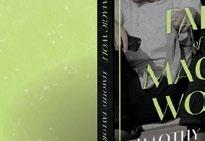

“A




sumptuously written story about culinary ambition, restaurant-world vice, and the frailties of the heart.”
KEVIN CHONG, author of The Double Life of Benson Yu


dundurn.com @dundurnpress







Paul Auster Dies at 77
The author was known for his New York Trilogy of existentialist novels.

Paul Auster, the celebrated author known for his noir-inflected existentialist novels, has died at 77, NPR reports. Auster was born and raised in New Jersey and educated at Columbia University. He worked in France for four years as a translator before moving back to the U.S. in 1974. He made his fiction debut in 1984 with Squeeze Play, a crime novel written under the pseudonym Paul Benjamin. The following year, he published City of Glass , the first book in his New York Trilogy of postmodern mystery novels.
He went on to publish more than a dozen other novels, including In the Country of Last Things , Moon Palace, Timbuktu, The Book of Illusions , and 4 3 2 1
His most recent novel, Baumgartner, was published last November; a critic for Kirkus wrote of the book, “An always intriguing writer mostly playing to his strengths.”


marked by tragedy. In 2022, his son, Daniel Auster, was arrested on charges of manslaughter and criminally negligent homicide in connection with the death of his infant daughter, Ruby, who had ingested heroin and fentanyl. Daniel Auster died of a drug overdose shortly after.
Paul Auster’s admirers paid tribute to him on social media. On X, literary critic Christian Lorentzen wrote, “RIP to Paul Auster. ‘The New York Trilogy’, ‘Leviathan’, ‘In the Country of Last Things’: books I loved that delivered young me to different places.”—M.S.

For reviews of Paul Auster’s books, visit Kirkus online.
Paul AusterKirkus Star
Rosenfeld, Adèle | Trans. by Jeffrey Zuckerman | Graywolf (192 pp.)
$17.00 paper | Aug. 6, 2024 | 9781644452967
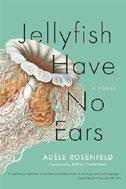
A beguiling, whisper-thin novel about a woman losing her hearing. At its best, fiction remakes the world, turning what we think we know totally upside down. That’s the case in Rosenfeld’s imaginative debut novel. Louise is totally deaf in one ear, with limited hearing in the other. When her hearing suddenly gets even worse, she needs to decide whether she’s going to get a cochlear implant. At times absurd, but mostly poignant and inventive, the book is really about making sense of the world, exploring the gaps between perception and cognition. To Louise, who has lost her ability to hear middle-low frequencies, language becomes pure sound (“the warmth of timbres”) and touch (“this soft sheen of wind”) and even many senses mixed together (“all sound’s snags and snarls”). Her hearing makes her vulnerable, as she studies people’s lips, tries to snatch words from the world’s din, guesses, and often mishears. In a restaurant, she thinks, “There was a chalkboard on which I was the hangman. ‘F_ _ _ S H _ D?’ the waiter was asking me.” When her hearing keeps worsening, “the monster crouching deep in my ear… gorging on more and more words,” she and her boyfriend communicate in the bathtub, her boyfriend at one end speaking into the water, and she at the other, her good ear resting on the surface of the water, absorbing the vibrations. The book is also a perceptive meditation on identity, with Louise stuck in a kind of “no-man’s-land,” as her doctor puts it, having “built a life as a hearing person” but with the “all the same problems as any deaf person.” The question of who she is becomes more acute as she worries about how an
A poetic depiction of pain, queerness, Jewishness, and what it is to live.
YR DEAD
implant might change her: “Would I recognize my mother’s voice…my own voice?” In quietly dazzling prose, Rosenfeld captures what we know but haven’t really seen, what we’ve heard but haven’t quite registered. An utterly original take on self-perception and perception.
Yr Dead
Sax, Sam | McSweeney’s (285 pp.)
$24.00 | Aug. 6, 2024 | 9781952119996
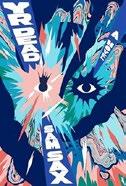
In the first work of fiction from a poet who illuminates the queer and Jewish experiences, life flashes before the eyes of a nonbinary person who’s lit themself on fire.
It’s not a spoiler to say that poet Sax’s debut novel centers on an act of self-immolation. The novel begins with short descriptions of three smaller encounters with fire, three different burns, labeled first through third degree: a painful childhood accident at the stove, adolescent smoking, a ritual gone horribly wrong. The final section, which comprises the bulk of the novel, is the final degree of burn: immolation. In vignettes that transmute experience in associative fits and starts, as one might cycle through visions at the end of one’s life, the narrator, Ezra, reflects on the world they inhabit as a queer Jewish person: a world that shifts mainly between Yiddishland and a gritty, sometimes ugly, but enchanting New York City. The fragments bounce back and forth in time, as Ezra inhabits the
lives of their ancestors in the old country, the moment of their conception, their ambulance trip after their final act, and everywhere in between. Ezra’s musings span not just time and space but a range of topics—from Jewish ancestral legacies to technology and the internet to gender identity to parent-child relationships—and draw upon a deep well of references. The novel is replete with vivid images, the strength of which is rare outside of poetry. Sax has produced a work that is meditative, deeply humane, and profoundly original. Less plot-driven than language-, emotion-, and image-driven—a poet’s novel through and through—the result is a searingly beautiful and devastating foray into fiction.
A poetic depiction of pain, queerness, Jewishness, and what it is to live.
Shaffer, Meg | Ballantine (336 pp.)
$29.00 | July 16, 2024 | 9780593598870
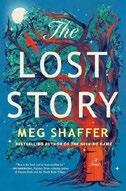
Three lost souls search for a missing woman. When best friends Ralph “Rafe” Howell and Jeremy Cox were teenagers, they went missing in the woods of West Virginia for six months. Now, 15 years later, the two are estranged. Rafe lives in a cabin and spends his days hunting, painting, and being generally hermitic. Jeremy has an uncanny, almost supernatural ability to find lost people, and spends his time finding lost girls. Enter Emilie
Wendell. Emilie’s adoptive mother recently died and, in her search to ease her loneliness, Emilie uploaded her DNA to a website that matched her with a half-sister she didn’t know existed. Here’s the catch: Emilie’s sister, Shannon Yates, went missing years ago in the same forest as Rafe and Jeremy. Emilie shows up to a TV interview Jeremy is doing and demands he help find her sister. Jeremy agrees and reveals a secret: Shannon, better known to him as Skya, is the queen of a magical land called Shanandoah. As it turns out, Jeremy and Rafe weren’t lost in the woods those many years ago but were spending their days galivanting around the secret magical kingdom whose entrance is in the forest. To return they need to enlist the help of Rafe, whose memories of Shanandoah and, more heartbreakingly, the love he held for Jeremy were erased when they left the magical world. After quite a bit of convincing, Rafe reluctantly agrees to help. What unfolds is an adventure filled with sword fights, romance, and gut-wrenching stories of the dark past that led the boys to the forest in the first place. Shaffer’s depictions of Emilie and Skya fall almost completely flat. That said, she makes up for it with the tender love between Jeremy and Rafe and the magical depiction of the world they once left behind. Like all the best fairy tales: nostalgic with an undercurrent of darkness.
Takacs, Joselyn | Zibby Books (384 pp.)
$27.99 | June 25, 2024 | 9781958506509
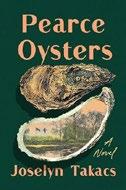
A family’s livelihood is on the line in the wake of the 2010 BP oil spill in the Gulf of Mexico.
Jordan Pearce is a Louisiana oysterman. His father was an oysterman, and his father’s father was an oysterman. It’s in his blood. So
when the oil from the BP spill starts threatening his oyster allotments, Jordan feels his entire world begin to crumble. First his friend and longtime deckhand Doug “Babies” Davies quits suddenly for a higher-paying job working to clean up the spill. After trying all his leads to find a replacement for Babies and quickly discovering that his friend is not the only one jumping ship to work for the oilmen, Jordan almost loses hope. Finally, at his widowed mother May’s urging, Jordan reluctantly convinces his semi-estranged bohemian brother, Benny, to come in from New Orleans to work with him on the boat. Jordan and Benny begin to build back their relationship while everything else around them falls apart. News starts spreading that the dispersant used to clean up the spill is harmful to their health; the oil continues to encroach on the oysters; and the personal lives of Jordan, Benny, and May all hang in the balance. Takacs packs a lot in, taking on politics, environmentalism, addiction, family dysfunction, and love. At times the pacing is awkward, and some parts feel too rushed and overabundant, particularly toward the end. That said, Takacs tells a story that feels fresh in its point of view, all the while lending her characters a humanity that paints them neither as heroes nor as villains, but as messy, complex, and wholly worthy of the reader’s time: “People could disbelieve anything, Benny thought, if it’s too painful. There are no limits. He swiveled to see who was clapping for his brother—people who seemed to think Jordan was being brave. This was fear masquerading as heroism, but it was the only form of heroism available at the moment.”
A unique story with a wealth of compelling characters.

Tawada, Yoko | Trans. by Susan Bernofsky New Directions (144 pp.) | $14.95 paper July 9, 2024 | 9780811234870

For more by Yoko Tawada, visit Kirkus online.
Japanese novelist Tawada, who lives in Berlin, observes a scholar’s obsession with a poet. When does an interest become an obsession? A pathology? For the central character of Tawada’s Covid19-era novella, problems come to light after his interest becomes a job. Patrik—more often referred to as “the patient”—is a literature scholar in the midst of a mental breakdown. The object of Patrik’s work, and of his obsession, is the 20th-century Romania-born Jewish poet Paul Celan (1920-1970). In his thoughts and conversations, Patrik references endless minutiae of the poet’s work, including his preoccupations with Zen and Kabbalah. For Patrik, Celan takes on a similar mystical significance—no detail small enough to escape notice, nothing in life too mundane to connect back to his work. Patrik aspires to “give a lecture in which he revealed the significance of every single letter Celan used in his poetry,” but he’s hobbled by his mental illness, which largely prevents him from leaving home. When he does, the patient suffers absurd compulsions, such as an inability to turn right at intersections or to order at a café. After a server offers a drink, he complains: “Why grapefruit juice? The grapefruit available in Berlin is mostly imported from Israel. Celan didn’t go to Israel until 1969.” Although he insists that “Patrik is different from the patient,” the line between them is undefined. The narrative embodies his alienation by fluctuating between first and third person and traversing fragmented timelines. What results is an inventive homage to modernist literature, wrapped up in an unexpectedly personal depiction of illness. Although
the patient’s problems appear to be psychological, they manifest in his physicality: “I ought to leave my body to its own devices, it can lead a healthier life without me,” he says. “…I’ll stop trying to read my partial, physical pain. Instead, I’ll read Celan.” A dark but charming portrait of a man unmoored by his love of an artist.
Trías, Fernanda | Trans. by Heather Cleary Scribner (240 pp.) | $24.00
July 2, 2024 | 9781668049778

A town is decimated by a horrifying epidemic in this dark novel. The second novel by Uruguayan author Trías to be translated into English—following The Rooftop (2021)—begins with a suffocating sense of doom and doesn’t let up from there. The unnamed narrator, living in a port town in an unnamed country, describes the aftermath of a destructive algae bloom that’s choking the life out of the area: “Under each unbroken surface, mold cleaved silent through wood, rust bored into metal. Everything was rotting. We were, too.” She recounts the early moments of the epidemic, when a massive fish kill gave an indication that something was wrong; the divers dispatched to investigate the cause all lost their lives to the disease, which causes its victims’ skin to peel from their bodies. The townspeople who have chosen to
remain are forced to endure power outages and food shortages, with many only able to eat a processed food called “Meatrite”—the “pink slime” of the title. The narrator has regular contact with only three people: her mother, with whom she is engaged in an “eternal skirmish”; Max, her ex-husband, hospitalized and suffering from a chronic case of the disease; and Mauro, the boy she babysits, who has a syndrome that causes him to always be hungry. The narrator knows the situation isn’t going to improve anytime soon, and Trías captures her resigned dread perfectly. This is a stunningly dark novel, but a beautiful one; Trías’ prose and Cleary’s translation perfectly capture what it feels like to live in an epidemic: “It’s hard for me to describe time in confinement, because if anything characterized those periods it was the sensation of existing in a kind of non-time. We lived in a constant state of anticipation, but we weren’t waiting for anything in particular.” This is a knockout of a story. Stunning writing makes this a startlingly powerful novel.
Vlautin, Willy | Harper/HarperCollins (208 pp.)
$25.99 | July 30, 2024 | 9780063346574

Helping a sick horse gives a washed-up musician in his 60s a chance to make peace with his past.
“Please,” whispers Al Ward,
Helping a sick horse gives a musician a chance to make peace with his past.
THE HORSE
“please give me the strength to pull the trigger and let it be over.” Al isn’t contemplating suicide. An old horse has wandered into the abandoned Nevada mining camp that Al calls home, and he wants to put it out of its misery. The camp belonged to his late great-uncle Mel, who mined it for years with no success. Al would stay there and dry out whenever the excesses of life as a journeyman guitarist and songwriter became too much. But now the horse, scarred and bleeding from a coyote bite, intrudes on the camp, where Al has been holed up and hiding from his demons. The horse doesn’t do anything to provoke him. It just stands there in the snow, right outside the assayer’s office where Al sleeps, eats, thinks, and still writes songs by lantern light. When Al decides to show mercy and points his old .357 at the animal, he tearfully realizes that he can’t kill the poor beast “because he felt that he and the horse were the same.” It’s a familiar, oft-told story of someone unexpectedly finding healing in the presence of an animal, but Vlautin makes that trope his own. His writing style is spare, restrained, unsentimental, yet full of emotion and force. A songwriter and band frontman, Vlautin understands the ups and downs of a touring musician’s life, and his experiences inform Al’s long career playing casinos from Las Vegas to Reno to Tahoe and beyond. Al has a gift for songwriting, and plenty of tortured musicians—including heartbreaker Mona and the self-destructive Sanchez Brothers—clamored after him to write hits for them. Al never wished for much in life, only, as he says of the horse, to “be all right and live an all right life.” He’s managed to have plenty of all right moments, especially during his short-lived marriage to his true love, Maxine. Helping the horse might give him a chance to have another one. After Al makes a long trek to get help, a friend teases him that what he’s done “says something. Most people wouldn’t cross the street to do
something decent, and you walked thirty miles in the snow, and you’re a drunk, lazy musician.” But Al’s risky walk shows he’s more than that; he’s still full of surprises. Anyone who’s hit rock bottom can still get a shot at redemption if they’re willing to do what it takes.
Yoshida, Atsuhiro | Trans. by Haydn Trowell Europa Editions (176 pp.) | $18.00 paper July 9, 2024 | 9798889660279

A series of quests in Tokyo turn out to be related. It’s after midnight in Tokyo, and something is missing. Mitsuki Sawatari is at the prop warehouse, searching for an obscure artifact to meet a movie director’s exacting specifications. Mitsuki is tasked with tracking down whatever an artist requires, whether it’s out-ofseason fruit or potentially nonexistent household appliances, no matter the hour. When the resourceful procurer is out of ideas, she turns to Matsui, a late-night cab driver and her confidante. Amiable and professional, Matsui is loath to divulge the details of his own quest to his customers. Still, when a young man who may or may not be a detective hops into his cab one night, his curiosity is piqued and he’s tempted to ask him for help. He discusses the matter with another customer, Kanako Fuyuki. Kanako’s job at the Tokyo No. 3 Consultation Room has taught her to answer all manner of questions. Though she can counsel a broken heart or find watercolors before daybreak, she too has a person from her past who cannot be found. The cast seems to grow exponentially with each chapter. Every interaction, however cursory, unlocks new pathways, catalyzes relationships, and nudges at fate. To Matsui, those connections
War is hell, but Young shows us that what happens afterward can be worse.
END OF ACTIVE SERVICE
happen, not despite the size of Tokyo, but because of it: “When you consider that every person has their own connections, that those networks spread out in a myriad of intricate ways, you realize that the greater the number of people, the greater the rate of the spread, like a contagious disease.” There’s something magical about these late-night fairy-tale interactions, every person unwittingly walking the city with the key to a stranger’s mystery in their pocket. As the coincidences grow in number, though, their impact turns feeble, and the final twists of fate underlying the premise have an air of resignation.
A sweet series of interconnected stories that ultimately fails to dazzle.
Kirkus StarYoung, Matt | Bloomsbury (304 pp.) $28.99 | June 18, 2024 | 9781639732791
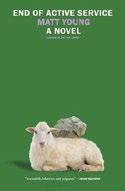
“Really, though, when you get down to it, most everything is a war story, right?”
Dean Pusey is having a tough time adjusting to life back in Indiana after having served four years as a Marine in Iraq. He’s living with his (adoptive) mother and stepfather, working at UPS, and hanging out with his childhood best friend. None of it, however, is going well, and Dean is still at war—if only with himself and PTSD. Floundering on his way to becoming “someone” rather than
“anyone,” Dean struggles to discern whether he is the problem in all his relationships, including the one he never had with his birth mother.
Unfortunately, the discernment process involves a lot of alcohol, some drugs, bar fights, a rifle, and pretend battle exercises. Flashbacks to brutal episodes Dean witnessed and participated in during his tours of duty come fast and furious, but Dean is not ready, willing, or able to reveal what he’s still carrying around in his head. Debut novelist Young deftly maneuvers between Dean’s postdischarge life and the corrosive and brutalizing events of his military service and clearly conveys the jarring realities of transitioning from wartime to lifetime. As Dean narrates the course of what he promises will be a love story—while opining that war stories underpin almost every experience—humor and perceptive insights mark the storytelling; people he meets want to hear about his war experiences, but what they really want to do is to tell him about their own, or secondhand, war stories. Young, the author of Eat the Apple (2018), a memoir detailing his own service with the Marines in Iraq, delivers a cleareyed, nonsentimental chronicle of the corrosive and far-reaching effects of war and its inevitable aftermath.
War is hell, but Young shows us that what happens afterward can be worse.

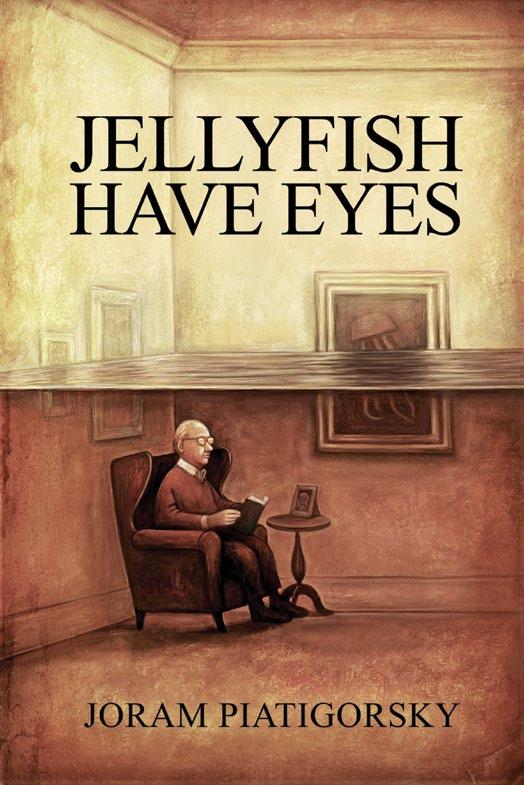

ISBN: 978-1-964428-00-0 [paperback]

DISCOVERING JELLYFISH HAVE EYES IS A LIFELINE FOR NATIONALLY RECOGNIZED SCIENTIST RICARDO SZTEIN. UNMOORED BY HIS WIFE’S DEATH AND TRAPPED BY BUREAUCRACY, THE AMBITIOUS SCIENTIST RECKLESSLY SEEKS MEANING IN A MEANINGLESS DISCOVERY.
OR IS IT? COMPELLED TO PROVE ITS VALUE AND ALLEVIATE HIS GUILT, RICARDO IS BLIND TO THE PERILS OF HIS PURSUITS.

“Ricardo Sztein is an unforgettable character, and this story is de��nitely a winner.”
—Robert Bausch, Author of A Hole in the Earth
ISBN: 978-1-964428-01-7 [eBook] For All Inquiries, Please Email joram@joramp.com • joramp.com
“In this original and provocative combination of science and ��ction, Joram Piatigorsky brings to life evidence of Dr. Johnson's observation that Truth can be made more accessible when draped in the robes of Fiction.”
—Warren Poland, MD, Psychoanalyst, & Author of Meltingthe Darkness



 Claire Messud
Claire Messud

 By Amitava Kumar
Piazza
By Amitava Kumar
Piazza
Barrett, Lorna | Berkley (320 pp.)
$29.00 | July 16, 2024 | 9780593549445

A kerfuffle at a book signing leads to murder.
The village of Stoneham, New Hampshire, has several bookstores, including mystery bookstore Haven’t Got a Clue, owned by Tricia Miles, and Barney’s Book Barn, owned by Betty Barnes, but it’s new librarian David Price who’s invited children’s author Lauren Barker to make an appearance. Although the former Stoneham resident signs plenty of books, she refuses to do a reading and badmouths all her former teachers, annoying many people. David, who’s recently started dating Tricia, is especially upset by Lauren’s bad manners. He and Tricia are the last to leave the event, and when they notice a lone car in the parking lot, they walk over to investigate and find the author dead inside. Police Chief Ian McDonald isn’t surprised that Tricia found the body because she has quite a reputation for discovering and solving murders. Nor is he happy to hear that Lauren had a lot of enemies past and present. Tricia’s sister, Angelica, owns several village shops, but using a false name she’s also the money and power behind the development that’s transformed Stoneham in recent years. Both sisters have been unlucky in love, so Angelica is wary that David is 20 years younger than Tricia and that his job is at risk because of the new
library director’s enmity. But she’s not totally opposed to her sister’s sleuthing and even uses her many contacts to help. Given the number of people unhappy with Lauren and her checkered past, it won’t be easy to uncover the truth.
The latest adventure of the spunky bookseller and her wealthy sister will delight past fans and add new ones.
Borgos, Bruce | Minotaur (352 pp.)
$28.00 | July 16, 2024 | 9781250848093
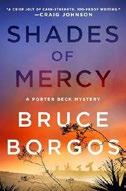
A stolid Nevada sheriff learns that no community is immune from modern societal afflictions.
The elaborate 17th birthday party of Shiloah Roy is disrupted by a fireball in the sky, the explosion of a remotely piloted aircraft 92,000 feet above the Double J Ranch. The bizarre accident momentarily distracts Shiloah’s father, Jesse, from his customary attention to his volatile daughter. Meanwhile, Sheriff Porter Beck is responding to a distress call at the Pioneer Hotel. Though Lincoln County features ranches and wide-open spaces, its proximity to Las Vegas brings problems like the fatal drug overdose of Beck’s closest friend, Cash Conrad, at the Pioneer. Soon, Special Agent Ed Maddox of the Air Force’s Office of Special Investigations arrives, seeking cooperation from Beck. The only casualty of the initial incident at the Double J is a bull, but later victims will include
The new adventure of a spunky bookseller and her wealthy sister will delight fans.
30 dead steers. Because these crimes have a tech element, suspicion falls on Shiloah’s friend Mercy Vaughn, a brilliant 16-year-old hacker who’s currently in a juvenile detention facility. The seriousness of the case is underscored by the introduction of South Korean political consultant Dal Cho, who after receiving a distressing message heads for Lincoln County. Beck and his sister, Brinley Cummings, question Mercy—Brin thinks she’s innocent; Beck, not so much. The sheriff’s second outing is written with clarity and quiet authority; the book balances his complex cases with the fully realized community surrounding him and effectively addresses current issues.
A timely procedural that packs a subtle wallop.
Ed. by Bruns, Don | Blackstone (225 pp.) $26.99 | July 16, 2024 | 9798200924639

Ten dark tales inspired by a classic heavy metal album.
AC/DC’s Back in Black (1980) is the jumping-off point for this surprisingly diverse collection. While the stories—whose titles match the 10 tracks on the album—are all rooted in mystery and suspense, they range over various subgenres, from the tale of an urban serial killer to a revisiting of World War I carnage to the familiar face-off between a hardboiled gumshoe and a mysterious blond. Highlights include Dave Bruns’ “Givin the Dog a Bone,” which features loner Carl Boyd, raised in isolation on a farm, and the faithful mutt who latches onto him, as well as some Mexican desperados; Reed Farrel Coleman’s “Shoot To Thrill: A Tale From Gun
Church,” a gritty account about an unhealthy and surprisingly sensual obsession with the most intimate details of weapons and heavy metal; and Tori Eldridge’s “Rock and Roll Ain’t Noise Pollution,” in which Dr. Candace Stone, the jaded host of a call-in radio advice program, snaps to when she’s taunted by a shooter. The marquee entry is Andrew Child’s “You Shook Me All Night Long,” a brisk and stylish espionage yarn featuring the KGB, a crucial briefcase, and happy-golucky superspy Jack Reacher, protagonist of the long-running series. Heather Graham, Sandra Balzo, Rick Bleiweiss, Charles Todd, Ward Larsen, and editor Bruns round out the roster of contributors. The quality is understandably uneven but mostly above average. And the terrific idea behind the collection kindles the hope that every reader will someday be gifted with an anthology based on their favorite album.
A crisp and clever marriage of music and mystery.
Kirkus Star
It’s Elementary Bryant, Elise | Berkley (368 pp.) $18.99 paper | July 9, 2024 | 9780593640784

When a Southern California elementary school principal vanishes, an overworked single parent suspects a domineering PTA president of foul play.
Between raising 7-year-old Pearl and working full time for a nonprofit that underpays and undervalues her, Mavis Miller already has enough on her plate. When PTA chair Trisha Holbrook asks Mavis—one of the only Black mothers at Knoll Elementary—to head the organization’s DEI committee, Mavis’ instinct is to decline: “DEI means diversity, equity, and inclusion, sure. But it also means free labor to be given willingly to fix problems that we didn’t create.” Mavis doesn’t want to be seen as a Bad Mom, though, which is why she’s present that evening when Trisha and Mr. Smith nearly come to blows during his first PTA meeting as Knoll’s new principal. Hours later, Mavis is walking her dog when she spies a rubber-gloved, profanity-spewing Trisha trailing Clorox bottles while dragging heavy trash bags from the school to her minivan. Mavis doesn’t suspect Trisha was up to anything nefarious until the next morning, when she drops Pearl off and discovers that Mr. Smith has gone missing. Panicked, she tells all to Jack Cohen—Knoll’s blond, broad-shouldered school psychologist—who doesn’t outright dismiss her concerns, but instead suggests the two of them team up for some “minor sleuthing.” Mavis’s first-person-present narration evinces a razor-sharp wit, complementing the clever, twist-riddled plot of YA author Bryant’s effervescent adult debut. Myriad mysteries and an enchanting will-they-or-won’t-they romance work in tandem to maintain tension throughout, while boldly drawn characters help spotlight issues such as racism, gentrification, and the devaluation of female labor. A sea of red herrings keeps readers on their
toes. Fans of Alyssa Cole and Elle Cosimano should take note.
A smart, funny novel that’s certain to make a splash.
Castillo, Linda | Minotaur (320 pp.)
$28.00 | July 9, 2024 | 9781250781116

When two police officers stop for a bit of dalliance, screams from the nearby woods introduce them to a puzzling and horrifying murder.
Chuck Skidmore and Mona Kurtz don’t arrive in time to rescue a man who’s being burned at the stake, a sight that will haunt their dreams. Police Chief Kate Burkholder arrives on the scene with her husband, John Tomasetti, an agent of the Ohio Bureau of Criminal Investigation, who’ll join her and many other cops in a task force investigating the bizarre murder. Born Amish, Kate ran away from Painters Mill, found her vocation in law enforcement, and eventually came home as the police department’s chief. Over the years, she’s built up some trust with the local Amish community, who generally prefer to keep their problems to themselves. The victim is Milan Swanz, a troubled former schoolmate of Kate’s whom she’s arrested several times. A divorced man with four children, he’d been recently excommunicated by the Amish. Although Milan was far from popular, Kate meets a wall of silence from even her own brother, one of many people who had disputes with the hot-tempered man. Kate’s theory of the crime, based on stories in a book popular with the Amish, is so bizarre that she has trouble believing it herself. When her brother is arrested, she’s removed from the task force but continues to investigate, putting her in the sights of some very determined killers.
A brutal, gripping look at murder in a self-enclosed community with many secrets to hide.
Driscoll, Sara | Kensington (320 pp.)
$28.00 | July 23, 2024 | 9781496748706

The only witness to a San Diego murder is a woman with short-term memory loss. When Quinn Fleming was robbed on her way home from a night out with friends, a brain injury left her with severe memory deficits. Adjusting her life to cope with the fact that events pass swiftly from her memory, she still works at the florist shop Gaslamp Blooms. Quinn’s apartment is covered with Post-it notes to help her find things, and she has a notebook to write down anything she knows she’ll need to remember. She goes to group therapy classes for people with traumatic brain injuries and is slowly making progress supported by group leader Will Dawsey. Taking out the garbage to an alley behind the shop one night, she sees a man being attacked and killed, his body dragged off to a van. The police think she’s making it all up, leaving her extremely frustrated. Then Detective Nura Reyes comes to investigate and understands her problems with memory. Quinn uses her artistic skills to draw what she saw, but she holds off telling Reyes everything while she does a little sleuthing of her own. When a body that washes up on a beach miles from San Diego is identified as that
of journalist Jack DeWitt, Reyes suspects that what he was investigating may provide a motive for his death. Quinn’s always felt there was a chance the killer may have sensed someone was watching, and when she narrowly escapes being run over in the street, both she and Reyes realize that she’s in mortal danger. A fascinating and compelling look at memory loss wrapped in an exciting mystery.
Duncan, Emmeline | Kensington (256 pp.) | $17.95 paper
July 23, 2024 | 9781496746146

Could high school rivalries be a motive for murder?
Elyan Hollow was a quiet town on Oregon’s Columbia River until a famous Halloween movie was filmed there. Now it’s a Halloween-themed tourist destination supporting many small businesses, including Lazy Bones Books, which Bailey Briggs’ grandfather is passing on to her. After Bailey’s mother, now a doctor with a second family, got pregnant in high school, Bailey was raised by her grandparents. For the Halloween festival she’s planning, Bailey has extended invitations to three well-known authors, including bestselling Rex Abbot, who graduated from high school in Elyan
Elyan Hollow was a quiet town on Oregon’s Columbia River until a famous Halloween movie was filmed there.
Hollow. Also in town is a crew from the TV show Gone Ghouls , including Taylor Edison, a snooty research assistant who’s talked Bailey into letting them shoot in the bookstore, and one-time local Lance Gregory, star of the show. The shoot, supervised by Bailey’s assistant, trashes the shop, leaving Bailey furious. When Bailey finds Lance dead in the maze created for the festival, she becomes a prime suspect. Learning that Lance and Rex were both in school with her mother, Bailey wonders who her father was and does some sleuthing to try to find out. Once the obnoxious Taylor becomes the next to die, she steps up her efforts to save herself from a murder charge and solve the riddle of her paternity. An exciting mystery whose answers lie deep in the past of the complex characters.
Greene, M.S. | Crooked Lane (288 pp.) $29.99 | July 23, 2024 | 9781639108190

Murder derails a struggling Connecticut theater troupe’s best shot at a comeback. The folks at the Eastbrook Playhouse have more or less
become Tasha Weaver’s family. Under the steady hand of artistic director Arthur Winston, the players have delighted Tasha since she was barely old enough to sit through a show. After Tasha’s mother died of cancer, the sad teen sought solace in the Playhouse’s costume department. While her high school friends went off to college, she stitched gowns and tuxedos that helped make the magic happen. Now, as wardrobe manager, she hopes a revival of Annie Get Your Gun featuring Broadway stars Kurt Mozer and Olivia Grace can
boost the Playhouse’s flagging attendance before developer Garrison Miller turns the historic theater into a shopping mall. Mozer goes wobbly on the production, fussing, fuming, and threatening to go back to New York. But before he can bail, someone shoots the temperamental star, triggering a new crisis. Though it’s not clear how solving Mozer’s murder will save Annie , Tasha feels an unstoppable urge to investigate. Sifting through the rivalries, jealousies, and general bad behavior that led to the star’s demise takes patience and perception. Who better than detail-oriented Tasha, who clothes mighty choruses one stitch at a time, to tackle the tangle of a male diva’s death?
Greene’s deep dive behind the scenes will tempt mystery fans and theater buffs alike.
Heider, Elizabeth | Penguin (368 pp.)
$20.00 paper | July 2, 2024 | 9780143138181
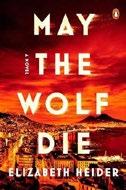
A brisk Italian investigator solves crimes, handles a tricky personal life, and navigates the elaborate criminal investigation bureaucracy of Naples.
The discovery of a dead body turns Nikki Serafino’s idyllic getaway on the Bay of Naples into a busman’s holiday, and not a pleasant one. Nikki works as a liaison between the U.S. military and the Italian police, investigating crimes involving U.S. service members. She and cop colleague Valerio are aboard her pride and joy, the Calypso, when a corpse gets tangled underneath. Shortly afterward, Nikki’s investigating an apparently minor car accident involving American naval commander Charles McAllister when she happens upon another corpse in a red Jeep on the side of the road. These seemingly
A procedural with a setting that would be idyllic if not for those murders.
MAY THE WOLF DIE
straightforward crimes turn out to have surprising connections. The complications in Nikki’s professional life are matched by those in her personal life, as her ex, Tito, shadows her and threatens her new relationship with the hot Enzo. Her brothers, Adriano and Gianni, and her bubbly Aunt Izzy are also in the mix. The Neapolitan setting and the details of underwater investigation give Heider’s debut an offbeat and entertaining gloss. Immersing Nikki in the local culture, she presents a Naples as murderous as some American cities: “To be in Naples was to accept the danger.” But the torrent of disruptions on the criminal and personal fronts and the extra characters and layers of bureaucracy that Nikki’s job involves, however true to life, may well distract readers from the more compelling matters of plot and character development.
A lively procedural with a high-powered heroine and a setting that would be idyllic if not for those murders.
Heley, Veronica | Severn House (224 pp.) $29.99 | July 2, 2024 | 9781448312566

The owner of a domestic agency expands her definition of domestic problems to include murder. Inheriting his family’s country estate has been a mixed blessing for Sir Julian Marston-Lang and Polly, his young wife. The place promises plenty of space and
a good income if the pair can ever get the neglected property into working order. In the meantime, local villagers are angry at Sir Julian because he closed down the estate’s decrepit farm and the adjacent amusement park, costing many their jobs. The couple is living temporarily in the Tithe Barn with their infant son while a feckless band of local workmen try to repair the ancient plumbing and electrical systems in the main house. But Sir Julian’s struggles with his employees are only one reason he summons Bea Abbot to his estate. Someone’s been trying to kill Sir Julian, taking potshots at his head and spooking his horse, causing a fall that’s left him badly injured. Even worse, a woman’s been found hanged in his stables. Since Bea intervened successfully the last time his life was in danger, Sir Julian naturally wants her to use her magic touch again. Bea’s happy to oblige, since her husband, Piers, is off painting a portrait “some place in the Balkans,” and her agency’s in the capable hands of her London staff. Although this new threat to Sir Julian’s life seems more diffuse and nebulous than the earlier one, Bea is still the established champion of the vulnerable. And who could be more vulnerable than a young nobleman trying to protect his wife, his child, and the local villagers? Heley’s heroine does her best, but the perils faced by those titled Brits strain credulity.

Twice Round the Clock
Houston, Billie | Poisoned Pen (272 pp.)
$15.99 paper | July 9, 2024 | 9781464216350

The only foray into fiction for British vaudeville star Houston, née Sarah McMahon Gribbin (1906–1972), first published in 1935, celebrates a wedding engagement in Treeholme, a stately manse that promptly turns into an Old Dark House.
Anthony Fane has every reason to believe that Horace Manning will turn down his request to marry his daughter, Helen, who’s always been afraid of her father, an acclaimed scientist who’s happy to test the latest poison gas he’s developed as a weapon of warfare on a little kitten. So he’s pleasantly surprised when Manning, his eyes hooded, not only accepts his suit but invites Tony and his parents, Sir Anthony and Lady Fane, to visit Treeholme in order to mark the occasion, joining Strange, Manning’s butler; Bill Brent, Sir Anthony’s private secretary; and local GP Dr. Henderson. Overnight, someone caps the festivities by stabbing Manning to death, disabling the telephones, and siphoning the gas out of everyone’s cars, stranding them in a place that’s suddenly turned menacing. The 24 hours covered by the story are especially hard on Strange, whom Manning had pegged as a foreign agent in the hours before he died and who soon follows his master in death. Houston keeps the setting dark, the dialogue bright, and the romantic complications coming until the story
jumps the shark in a way that will have many readers, like the characters, looking for the exit.
A period piece that’s as clever as a game of Clue until suddenly it isn’t.
Mead, Tom | Mysterious Press (320 pp.)
$26.95 | July 16, 2024 | 9781613165300
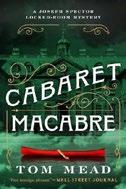
A pair of threatened deaths explode into a mindbogglingly complex series of murders in this impossible-crime saga appropriately set in the run-up to Christmas 1938.
Victor Silvius has been confined to The Grange, the private sanatorium run by Dr. Jasper Moncrieff, ever since he attacked Justice Sir Giles Drury with a knife nine years ago because he was convinced the judge had poisoned Gloria Crain, the law clerk Victor loved. But his sister, Caroline, tells Inspector George Flint that neither the attack nor Victor’s diagnosis of mental illness warrants his death at the hands of an anonymous correspondent who’s been threatening him. Even as Caroline is making her plea, the judge’s wife, Lady Elspeth Drury, dispatches Jeffrey Flack, her son by her first marriage, to Flint’s sometime collaborator, professional illusionist Joseph Spector, asking him to meet with her so she can urge him to save her husband from the death threats he’s received from none other than Victor Silvius. The corpse discovered soon afterward, stabbed to death in
The murder of an elderly man causes a sensation in a little Vermont town.
the middle of a frozen lake, isn’t that of Drury or Victor, but once the floodgates have opened—there’ll be a total of five more victims, some of them killed in remarkably ingenious ways—there’s no guarantee that either of them will survive. Working once more with Flint, Spector traces the clues to the killer, solves the mystery, and then does it again and again, incorporating new twists and new depths each time. To bolster his Golden Age credentials, Mead supplies a dramatis personae, a family tree, two floor plans, a challenge to the reader, and dozens of footnotes referencing earlier clues that even the most alert readers will have missed. A lovely valentine to Mead’s idol, John Dickson Carr, and even more to Clayton Rawson’s tales of The Great Merlini.
Rose, Ayla | Crooked Lane (304 pp.) $29.99 | July 9, 2024 | 9781639107117

The murder of an elderly gentleman causes a sensation in a little Vermont town. Breaking free from a bad relationship, Hannah Solace returns to her hometown after her sister, Reggie, offers her a chance to run the inn she got in the nasty divorce from her husband, Chad, following his affair with her best friend. Hannah’s become friendly with 80-year-old Ezra Grayson, who, unable to recover from the death of his wife, lives in a decrepit house with his dog, Moose. His two nephews and a niece, who want him to sell the place and move to a retirement home, are all staying at the inn. In addition, several others in town are pushing him to sell his land. So when Hannah finds Ezra dead in Devil’s Pond, clearly having been murdered, there are plenty of suspects. She adopts Moose and can’t help but do a little investigating of her own. The three cousins are a lot
A former kid detective is on a substitute teaching gig when yet another last case draws her in.
CHARLOTTE ILLES IS NOT A TEACHER
less sad over their uncle’s death than Hannah is. Then Ezra’s lawyer gives Hannah some shocking news: Ezra’s left her everything he owns, both the property and a healthy bank account. The lawyer keeps the news quiet, but it makes Hannah a suspect in the eyes of the police and will certainly earn her the ire of his family. The solution to the mystery of Ezra’s death and the disposition of his estate may lie in an old relationship involving Ezra and Hannah’s father. Past secrets and present problems combine in a character-driven cozy.
Siegel, Katie | Kensington (320 pp.)
$17.95 paper | July 23, 2024 | 9781496741004
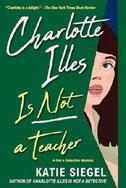
A former kid detective grown to more-or-less adulthood is on a substitute teaching gig when yet another last case draws her in.
Charlotte Illes, a recovering child detective struggling with adulting, is headed back to school. This time, she’s not Lottie, a smarty-pants troublemaker questioning the authority of her teachers at Frencham Middle School; she’s Ms. I, a substitute at the same school, seeing what it’s like to be the one in charge. Well, kind of in charge, because 25-year-old Charlotte is far from sure she can take herself seriously in the role, even though Lucy Ortega, her longtime best friend, is a teacher at the same school. Lucy’s investment in encouraging Charlotte on the job isn’t
limited to Charlotte’s potential as a long-term sub. On Charlotte’s first day at her old school in her new role, Lucy brings her to meet Kim, aka Ms. Romano, a colleague who’s receiving threatening letters about what might happen if she doesn’t quit her job. Lucy’s prepared to beg Charlotte to resume her old ways and take the case, but she barely has to nudge the former detective to get her moving. Whether because she had a recent success testifying in court for her crush, Mita Ramachandran, a lawyer who’d hired her for a little detective work, or just because she wants to relive her glory days, Charlotte is certain she can figure out who’s blackmailing Kim. She’s assisted in her investigation by Gabe Reyes, her other best friend, whose informal vibes make Charlotte look downright professional. The mystery proves no match for the ragtag team of Lucy, Gabe, and Charlotte, especially when Charlotte involves a new generation of potential kid detectives. Heavy on processing conversations, light on action.
Young, Pamela Samuels & Dwayne Alexander Smith | Atria (304 pp.) | $17.99 paper July 9, 2024 | 9781668024294
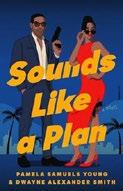
Two Black private investigators have to go on the run when a missing person case turns deadly. Mackenzie Cunningham and Jackson Jones run their own PI agencies in Los Angeles but keep
bumping into each other after they’re hired separately to find a missing woman. When the search leads to break-ins, violent encounters with corrupt cops, and unexpected twists involving blackmail and a conservative presidential-wannabe politician, the two team up to find the truth and avoid being killed themselves. Though Mackenzie is from an elite family and went to Princeton and Jackson is an ex-cop who was raised by a working-class single mother, both are quick thinkers who share a drive to succeed in their chosen profession. Chapters told from their alternate points of view show each protagonist’s problem-solving skills and immediate attraction to the other and sketch out how their upbringings affect their adult personalities. Jackson’s ideas about how a man should show or conceal his romantic interest appear rooted in gender stereotypes, as does the portrayal of Mackenzie’s icy lawyer mom. But Jackson’s role as a good father to a young daughter gives him more depth, while Mackenzie’s fears about her mother’s potential breast cancer diagnosis add a layer to her portrait and also highlight the high rates of some cancers in Black women. The mystery itself is light on complications and won’t tax anyone’s whodunit skills. While the plot is largely composed of action-oriented scenes as Mackenzie and Jackson drive around L.A. in pursuit of suspects or to escape pursuit themselves, co-authors Young and Smith throw in episodes where the couple banter and occasionally make out. For readers who like their detective stories with a “will they or won’t they” romantic dynamic.




The movie is based on Gabrielle Zevin’s bestselling 2022 novel.
The planned film adaptation of Gabrielle Zevin’s Tomor-
row, and Tomorrow, and Tomorrow has found its director, Deadline reports.
Siân Heder will helm the movie based on Zevin’s bestselling novel. Heder wrote for the series Orange Is the New Black before writing and directing the films Tallulah and CODA; the latter won three Academy Awards, including best picture and best adapted screenplay.
Zevin’s novel, published in 2022 by Knopf, follows three friends who develop a hit video game. In a starred review, a critic for Kirkus wrote of the book, “Sure to enchant even those who have never played a video game in their lives, with instant cult status for those
who have.” The novel was a New York Times bestseller, a Goodreads Choice Award winner, and a pick for Tonight Show host Jimmy Fallon’s book club.
Plans for the film adaptation of the novel, produced by Paramount Pictures and Temple Hill Entertainment, were announced almost a year and a half before the book was published.
The screenplay will be written by Mark Bomback (War for the Planet of the Apes, The Art of Racing in the Rain), working from a

For a review of Tomorrow, and Tomorrow, and Tomorrow, visit Kirkus online.
draft by Zevin, who is among the film’s executive producers. —M.S.

Siân Heder





EDITORS’ PICKS:
Chronically Dolores by Maya Van Wagenen (Dutton)
Gut Reaction by Kirby Larson & Quinn Wyatt (Scholastic)
The Wildcat Behind Glass by Alki Zei, trans. by Karen Emmerich (Yonder)
I Will Show You How It Was: The Story of Wartime Kiev by Illia Ponomarenko (Bloomsbury)
THANKS TO OUR SPONSORS:
It All Belongs: Love, Loss, and Learning To Live Again by Judy Smoot & Roy Smoot with Melinda Folse
Man Eating Plants: How a Vegan Diet Can Save the World by Jonathan Spitz
The Straits of Detroit by Charles G. Bird
The Giant’s Ladder: The Science Professional’s Blueprint for Marketing Success by Elizabeth Chabe
Fully Booked is produced by Cabel Adkins Audio and Megan Labrise.

A woman’s road trip takes an irresistible turn in Miranda July’s All Fours BY MEGAN
On this episode of Fully Booked, Miranda July discusses All Fours (Riverhead, May 14), a flabbergasting, funny new novel in which an artist sets off on a cross-country road trip…and doesn’t make it (geographically) far. As Kirkus assesses in an admiring review: “This tender, strange treatise on getting out from the ‘prefab structures’ of a conventional life is quintessentially July.” July is a Los Angeles–based filmmaker, artist, and writer. Her books include It Chooses You, The First Bad Man, and No One Belongs Here More Than You, winner of the Frank O’Connor International Short Story Award. Her fiction has appeared in the Paris Review, Harper’s, and the New Yorker. Here’s a bit more from our review of All Fours: “According to Harris, the husband of the narrator of July’s novel, everyone in life is either a Parker or a Driver. ‘Drivers,’ Harris says, ‘are able to maintain awareness and engagement even when life is boring.’ The narrator knows she’s a Parker, someone who needs ‘a discrete task that seems impossible, something…for which they might receive applause.’ For the narrator, a ‘semi-famous’ bisexual woman in her mid-40s living in Los Angeles, this task is her art; it’s only by haphazard chance that she’s fallen into a traditional straight marriage and motherhood. When the narrator needs to be in New York for work, she decides on a solo road trip as a way of forcing herself to be more of a metaphorical Driver. She makes it all of 30 minutes when, for reasons she doesn’t quite understand, she pulls over in Monrovia. After encountering a man who wipes her windows at a gas station and then chats with her at the local diner, she checks in to a motel, where she begins an all-consuming intimacy with him. For the first time in her life, she feels truly present. But she can only
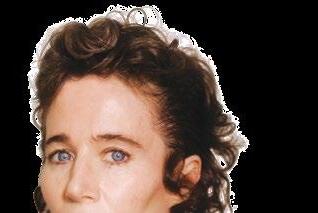


pretend to travel so long before she must go home and figure out how to live the rest of a life that she—that any woman in midlife—has no map for.”
July and I begin with the novel’s opening lines, and what it means to make an invitation to a reader, to encourage them to join you in a new world. We talk about Venita Blackburn’s Dead in Long Beach, California and scintillating premises in general. We talk about the sexiness of All Fours, and how arousal isn’t necessarily a pure good. We explore the role of pilgrimage in making art; the merits of firsthand experience and received wisdom; intergenerational friendships; and the rewards and penalties of the patriarchy. She tells me whether it’s necessary to identify with every character in order to make a novel work. We chat about Parkers and Drivers, cover art, and a whole lot more.
Then editors Laura Simeon, Mahnaz Dar, and Eric Liebetrau share their top picks in books for the week.
Editor-at-large Megan Labrise hosts the Fully Booked podcast.
Bannen, Megan | Orbit (448 pp.)
$19.99 paper | July 2, 2024 | 9780316568258

Two middle-aged law enforcement partners finally fall in love in this slow-burn fantasy romance.
Twyla Banneker hasn’t had a date in the 13 years since the death of her husband, Doug. That’s not to say she hasn’t been busy, though. In that time, Twyla has built an illustrious career as a Tanrian Marshal, the people’s guardian and the undead’s bane. Now, a year after another marshal purged the undead drudges from Tanria, she and her partner, Frank Ellis, find themselves reduced to monitoring children’s water-pony rides. Following a dragon attack and the curious case of the dragon hatchling that attaches itself to Frank, mother-duck style, a visiting professor and dracologist shows up—with a major interest in taking the self-professedly “frumpy” Twyla out. Only after she accepts his offer of a first date does she learn the truth: Everyone, from her friends to her own children, thinks she and Frank are an item. But the two of them are just friends...right? Cue the will-they-or-won’t-they shenanigans as the marshals investigate what brought the supposedly extinct dragons out of hibernation. Bannen delivers a quippy and fun fantasy rom-com here. Although some of the dialogue tags feel a bit ham-fisted, the conversations themselves are crisp and well thought out. Readers who picked up the series’ previous installment will almost certainly have an easier time acclimating to Twyla and Frank’s world, where the cars are amphibious inventions called “autoducks” and people distinguish between the Old Gods and the New. The first few chapters may read headily to newcomers, as Bannen pulls no punches when introducing these concepts in rapid succession, but readers who can go with the flow will soon uncover a delightful
story worth every minute of their time. Fans of cozy fantasy will find a lot to love here, from glitter-breathing, poodle-esque dragons to a down-toearth romance between two middle-aged heroes on the brink of retirement. Seriously, the dragons breathe glitter. What more could you want?
Dimova, Genoveva | Tor (368 pp.)
$17.99 paper | June 25, 2024 | 9781250877314

A young witch fights to regain the powers she lost in order to save herself, and her city, from the very real monsters that haunt them.
On New Year’s Eve, while the rest of the world celebrates, the walled city of Chernograd waits for monsters. The monsters of Dimova’s debut fantasy, rooted in Slavic folklore, enter this world during the 12 days between the New Year and Saint Yordan’s day, when the veil between worlds is thinnest. For a witch like Kosara, the arrival of the Foul Days means risking her life fighting monsters like upirs, samodivas, yudas, and karakonjuls to protect her city. As the monsters descend, Kosara distracts herself by playing a hand of cards with a stranger from Belograd, the city beyond the wall. Crossing the wall illegally during the Foul Days is highly suspect, but the stranger states his reason: He wants Kosara’s shadow, the source of her power as a witch. This is a bet Kosara would never take—until tonight. Outside, the Zmey, known as the Tsar of Monsters, begins to call for her. Every year, he comes. Every year, Kosara evades him—but not without trauma. This year, he vows she won’t escape. Trapped and desperate to survive, she surrenders her shadow. In return, the stranger hastily transports her outside the wall. Safe in Belograd, Kosara finds her mind
spinning. Why did the stranger want her shadow? How did he possess magic strong enough to transport her to safety? How did the Zmey find her so quickly? While most Chernograd citizens would give anything to cross the wall, Kosara needs a way back in. Without her shadow, she’s nothing, and while the Zmey wants her, she will never be truly safe. In Kosara’s attempts to get home, she finds Asen, a Belogradian cop from the Supernatural Investigations Unit, looking for the stranger with her shadow. Together, their adventure takes them across the wall and beyond as they fight every monster on the Witch and Warlock Association’s record as well as their own internal demons. The worldbuilding keeps the pages turning, as the fun of being immersed in moody Chernograd with ghosts in bathrooms and monsters lurking on corners distracts from thin plotting. Kosara calls herself a mediocre witch, which makes her character likable, but also provides a convenient excuse for the way she gets into a myriad of regrettable scenarios. Readers looking for more solid backstory— Why are the monsters only in Chernograd? What of the supernatural exists elsewhere?—can hold out hope for Book 2.
This gritty, atmospheric fantasy brings folklore to life, but a lack of cohesion won’t get past astute readers.
Durst, Sarah Beth | Bramble Books (384 pp.)
$26.99 | July 9, 2024 | 9781250333971
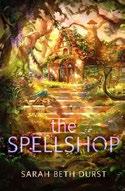
As the city of Alyssium and its vast library crumble and burn around her, a young librarian who’s spent 11 years sequestered among dusty bookshelves— with only a sentient, research-loving spider plant to keep her company— finds herself on the run.
After leaving the ruins of Alyssium’s great library behind—keen-eyed readers might notice the distinct parallels with the ill-fated Library of Alexandria—Keila makes her way across the open ocean to Caltrey, the picturesque island where she grew up, carrying Caz the spider plant and a boatful of spellbooks she could be punished for having taken. Hoping to lay low for a while and keep out of the locals’ hair, Keila moves into the long-abandoned cottage where her late parents raised her. What she doesn’t expect is to be welcomed by the locals with open arms; to meet her kind—and incredibly handsome—merhorse-riding neighbor, Larran; or to learn that the empire she left behind is draining the magic from her new home. The use of magic is strictly prohibited by the empire and is a punishable offense if you’re a member of the general population caught using it, but, determined to return some of the kindness that’s been shown to her, Keila decides to utilize her rescued spellbooks and opens a secret spellshop under the guise of making different berry jams. She proceeds to use the spells herself to help slowly return the island to its much more magical state. While Durst’s novel boasts a wide array of fantastic characters of both the human and nonhuman variety— Keila is described early on as having blue skin and hair—if readers are looking for any high-stakes conflict, intense political intrigue, or actionpacked battle scenes in their fantasy novels, they won’t find them here. Similarly, the romance in this book is sweet but somewhat shallow. With this in mind, it’s a delightful, easily digestible palate cleanser with a story that feels like a whimsical, warm hug. Kindness is king in this soft and breezy low-stakes cottagecore fantasy.
Reeves, Keanu & China Miéville
Del Rey (352 pp.) | $27.00
July 23, 2024 | 9780593446591

In which the Angel of Death really wants to take a holiday.
“Memory is a labyrinth.” Or perhaps a matrix. Actor Reeves teams up with speculative fictionist Miéville to produce a tale that definitely falls into the latter’s “weird fiction” subgenre. The chief protagonist is the demi-divine Unute, known as B. He’s not nice: “That man does not kill children anymore, when he can avoid doing so, but still, leave him alone,” warns one of the narrators, whose threads of story are distinguished by different typefaces. B is a killer—early on, he explains to a psychiatrist, “I kill and kill and kill again,” adding that he’d really rather be doing something else. B is also curious about the way things work, which leads him to experiment on unfortunate deer-pigs, the babirusa of Indonesia, to try to suss out what allows him to die but then come back to life, learning that he’s not so much immortal as “infinitely mortal.” B, as one might imagine, isn’t the life of the party—and the reader will be forgiven for being a little grossed out by his experiments, which are infinitely grisly (“A gush of cream- and rust-colored slime sopped out and across the gurney and onto the floor to mix with soapy water”). The structure of the story is both metaphorical (albeit B professes little patience with metaphor), with Unute morphing into Death itself, and rather loose, the plot picking up hints dropped earlier. It’s not always easy to follow, but it’s clear that Reeves and Miéville are having fun with the tale and its often playful, even poetic language (“the
huff-huff of horny hard feet on the scuffed corporate carpet, a stepping closer, an incoming, a meeting about to be”).
A well-written if elusive treat for fans of modern mythologizing.
Rowland, Alexandra | Tordotcom (448 pp.)
$29.99 | June 11, 2024 | 9781250802538
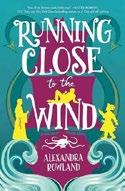
A pirate crew, a big secret, and a meddling ambassador meet at a cake competition—what could possibly go wrong?
Avra Helvaçi has a secret that might get him back in Teveri’s good graces, if he can just convince them to give him the time of day. Teveri az-Ḣaffār, captain of the The Running Sun, needs to pay their crew, and preferably not with the fancy straw that has been their only booty recently, making them more receptive to Avra’s pleas, despite their better judgment. And it seems like Avra might really have something valuable, important enough to destabilize the pact between the pirates and the Araşti government, but Avra’s information will need to be interpreted by Julian, the ship’s newest crew member, who is too handsome for his own good and, unluckily, a monk who has taken a vow of celibacy. Begrudgingly, Teveri allows Avra back on the ship, counting on his good luck (about which Avra remains agnostic) to see them through negotiations with possible bidders, interference from government officials, angry sea serpents, and more. Avra, for his part, is eager to please, and also eager to get back in Teveri’s bed, no matter how mean Teveri is to him. Avra’s manic energy permeates every page, making ridiculous scenarios seem plausible and even expected. Hijinks, of course, ensue, with a smattering of heartfelt commentary from Julian on emotions and getting along. Queer relationships, consent, scheming, mishaps, and more make for truly good fun and a quick read.
Piratical antics along with a few sex jokes.

The former flight attendant’s Worst Case Scenario will be published by Little, Brown.
T.J. Newman’s third novel is coming later this year, Deadline reports.
Little, Brown will publish the novelist’s Worst Case Scenario this summer. It describes the book as a “heart-stopping thriller.”
Newman, a former bookseller and flight attendant, burst onto the literary scene in 2021 with Falling, her novel about a terrorist who contacts an airline pilot

via FaceTime and demands that he crash the plane he’s flying or his family will be killed. She followed up two years later with Drowning: The Rescue of Flight 1421, which follows passengers on a flight that has crashed into an ocean and the rescue team that tries to save them.
Both novels are being adapted as films, with Newman writing the script for Falling, and Paul Greengrass set to write and direct the Drowning adaptation.
Worst Case Scenario tells the story of an airplane that crashes into a Minnesota nuclear power plant after the pilot suffers a heart attack. Residents of the small town where the plant is located are forced to work together to prevent the situation from becoming even more catastrophic. “It will take the combined courage, ingenuity, and determination of a brave few to save not only their community and loved ones, but the fate of humanity at large,” Little, Brown says.
Worst Case Scenario is scheduled for publication on Aug. 13.—M.S.



“...aperfectone-volumereference...a helpfullypracticalandauthoritative introductiontothemarketingof scientificproducts.”
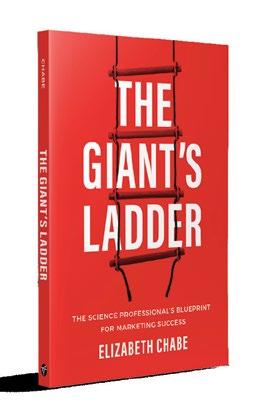
ISBN-10: 1642256021
ISBN-13: 978-1642256024
THE SCIENCE PROFESSIONAL’S BLUEPRINT FOR MARKETING SUCCESS GET Kirkus Reviews

Now an Amazon Best Seller!
Order it at and other major retailers For bulk and institutional orders: elizabethchabe.com



Isabella Hammad took home the award for her novel Enter Ghost.
Isabella Hammad’s Enter Ghost is the winner of this year’s Aspen Words Literary Prize, given annually to “an influential work of fiction that illuminates a vital contemporary issue and demonstrates the transformative power of literature on thought and culture.”
Hammad’s novel, published last April by Grove, follows Sonia Nasir, an actor in London who returns to Haifa, Israel, to visit her sister, and agrees to perform in a local production of Hamlet in the West Bank. In a starred review, a critic for Kirkus called the book “a thorough and thoughtful exploration of the role of art in the political arena.”
In its citation, the jury for the prize said, “A poignant narrative of resilience and the quest for belonging, Enter

For a review of Enter Ghost, visit Kirkus online.

Ghost is a dazzling story of self-discovery against the backdrop of displacement.”
In her acceptance speech, Hammad said, “These last six and a half months have changed me very deeply, and I know that I am not alone in feeling that way, and that this is not only because I am Palestinian. The Israelis have destroyed every single university in Gaza. They have destroyed libraries. They have assassinated writers and journalists and university professors.…We need an end to the siege, a release of all political prisoners, an end to segregation and ethnic and religious supremacy, an end to illegal military occupation, and Palestinian self-determination.”
—M.S.

Bailey, Tessa | Avon/HarperCollins (384 pp.) | $18.99 paper
July 16, 2024 | 9780063308435

A professional hockey player falls in love with his tween daughter’s nanny.
Burgess Abraham is 37 and can feel himself aging out of hockey—everything hurts. He refuses to let the team doctors know the extent of his pain, worried it will force him into early retirement. Complicating his life, he’s recently divorced and has shared custody of his daughter, Lissa. Burgess’ punishing travel schedule means he needs help at home, so he hires 26-year-old graduate student Tallulah Aydin to be his daughter’s nanny. Tallulah just moved to Boston for a graduate program in marine biology. She’s flat broke and landing this gig is a financial lifesaver, but she worries that her incendiary chemistry with Burgess will make it hard to keep things professional. Burgess’ feelings of protectiveness toward Tallulah are amplified after she tells him about a traumatic incident from her past. Her move to Boston showed her that she’s been letting fear rule her life, that she’s reluctant to trust people and afraid to live. Burgess offers to help Tallulah check items off her bucket list of adventures, promising to accompany her and keep her safe. In return, Burgess wants to be her boyfriend, not just a casual fling. Unfortunately, Lissa is convinced her parents will get back together and sees Tallulah as an interloper. Bailey fans will find all the classic hallmarks of her style: a plucky heroine matched with a possessive, dirty-talking hero in a high-heat romance. Although the novel engages with deeper themes, its exploration of these difficult topics feels simplistic and superficial. Huge problems are introduced late in the story and then fixed offstage, without readers seeing the work and effort involved.
Engaging characters with thorny problems have a pat, easy love story.
de la Cruz, Melissa | Union Square & Co. (304 pp.) | $18.99 paper July 9, 2024 | 9781454947677

Cultures clash when an American travel writer pursues his Filipino co-worker.
Evan Saatchi wants nothing more than to be promoted to senior editor at Overnight, the travel app where he works as a writer. But when Dalisay Ramos—a new staff member who’s just moved to the U.S. from the Philippines—gets the gig instead, he finds the disappointment softened by his instant attraction to her. When he asks her out for a drink, though, she swiftly rejects him. Dalisay doesn’t believe in “American hookup culture” and is dedicated to the traditional Filipino values her parents ingrained in her from childhood, including a courtship ritual called the Five Stages. These stages, which include buying thoughtful gifts and performing a serenade, are meant to prove a man’s seriousness in pursuing a relationship. But Evan isn’t interested in serious romance and thinks that jumping through all those hoops is too much for just one date. That is, until Dalisay bets Evan that he can’t get through all Five Stages, offering him an all-expenses-paid trip through Asia that comes with her new position at Overnight if he does. What starts as a bet quickly turns into something more, as Evan and Dalisay become increasingly drawn to each other. But will their differences prove too big an obstacle to overcome? Keeping Evan and Dalisay at arm’s length for the first third of the novel results in a flimsy romance, and the author is more adept at building sizzling sexual tension than cultivating a deep emotional connection between her protagonists, though discussions of cultural differences are handled with sensitivity and depth. A Filipino courtship ritual is a uniquely interesting plot device in this sweet rom-com.
Heron, Farah | Forever (384 pp.) | $17.99 paper July 2, 2024 | 9781538725474

A stylist is hired to work with an up-and-coming actor she knew in high school. Marley Kamal works as a consultant at a high-end Toronto department store. Her dream job is to become a personal shopper, a more prestigious position with access to exclusive clients. When Marley is called into her boss’ office and told she must sign a nondisclosure agreement, she realizes she’s landed her first celebrity. Marley is shocked to discover the client is none other than Nikhil Shamdasani, a high school friend who took her to prom and ghosted her after they had sex. Nikhil has been cast as a superhero, but the studio doesn’t seem to fully back him. He suspects they’re waiting to see if white fans will balk at a Desi actor being cast in the role, and his awkward press conferences and strange personal style aren’t helping his cause. After disastrous results with other stylists, he insists the studio hire Marley, remembering her as unflappable and calmly competent. Marley decides to capitalize on this opportunity, even though it’s happening at the absolute worst time. In two weeks, she’ll be having a double mastectomy as a preventative measure, since she’s a carrier of the BRCA gene. The studio wants Marley to keep styling Nikhil, but she’s kept the details of her surgery private. The old friends strike a deal: Nikhil will move in and help Marley with her recovery and she can style him from home. As always, Heron’s characters are lovingly drawn and richly layered. Marley and Nikhil learn to care for each other, sharing their sadness over familial struggles and their worries about the future—her health and his career. The novel explores whether the sweet, gentle romance they create while alone together can withstand the pressure and media speculation of the real world. This slow, sweet romance explores the boundary between privacy and publicity.
James, Eloisa | Avon/HarperCollins (384 pp.) | $9.99 paper
July 23, 2024 | 9780063347410

An icy viscount melts after he faces a sunny artist. In just a few months, Dominic, Viscount Kelbourne, has found his regimented world turned on its head. First he’s thrust into the role of guardian to his orphaned and charmingly odd niece and nephew and then jilted by a woman he thought would make his perfect viscountess. The solution to both problems would appear to be one Miss Victoria “Torie” Sutton, his neighbor and, unfortunately, the sister of his ex-fiancee. However, as much as Torie has come to adore the viscount’s family, not to mention his “burly physique,” she’s reluctant to be served as her “sister’s leftovers” to a man who’s her total opposite. Because she’s unable to read or do arithmetic, her family has always spoken down to her, and society has loved gossiping about her shortcomings—though they’ve overlooked her eidetic memory and extraordinary painting ability—so she fears he too won’t respect her. Nevertheless, after some steamy conversations in which both admit their attraction, she agrees to the marriage, but that’s just the start of a rollercoaster of attraction and frustration for both husband and wife. Although Dom finally comes to realize that Torie isn’t his perfect viscountess—she’s better—and that what he thought was just lust is actually love—he may have been a bit
too imperious for their marriage to be repaired. This first volume in a new series is a return to form for James; though it has uneven moments, the emotions at the heart of the story are compelling enough to help readers get past them. In particular, Torie’s dyslexia (not identified as such in the story, but mentioned in an author’s note) and her vulnerability to unkind words after a lifetime of thoughtless remarks are sensitively drawn. Dominic is an arrogant nobleman for the ages, and readers who like to see such a hero humbled will enjoy it repeatedly here.
An unusual, dyslexic heroine provides depth to a solid Georgian romance.
McQuiston, Casey | St. Martin’s Griffin (432 pp.) | $16.99 paper Aug. 6, 2024 | 9781250862747

Two exes reunite on a food tour of Europe and attempt to prove to each other—and themselves—that they’ve moved on. Theo and Kit were childhood best friends who eventually became a couple—until a disastrous breakup on the flight to a European food and wine tour. They haven’t spoken in several years, and both have found success, if not happiness, in their chosen fields. Kit made a life for himself in Paris, where he’s a pastry chef. Theo is a bartender with an encyclopedic knowledge of wine and dreams of being a sommelier. Their abandoned European tour gave them a voucher that would
Two exes reunite on a food tour of Europe and try to prove they’ve moved on.
expire in 48 months, and right at the end of that window Theo decides to redeem it, never dreaming that Kit would decide to use his voucher on the same exact trip. But, of course, he does, meaning the two of them are stuck together for three weeks, alongside a flirtatious tour guide named Fabrizio and a cast of adventurous travelers and eaters. Kit and Theo strike an uneasy truce to get along for the duration of the trip, but in an effort to prove they’re totally over each other—and to burn off the sexual tension that’s radiating between them—they make a “sex wager”: Whoever hooks up with the most people while on the tour wins. Kit and Theo are both bisexual, which gives them a wide pool of applicants—and, in a slightly unbelievable turn, seemingly everyone they meet is attracted to them. The emphasis on Kit and Theo’s physical conquests does add to the atmosphere of their booze-filled, hedonistic summer trip, but at times it also detracts from the romance. Kit and Theo’s long, often tumultuous relationship is the beating heart of the book, and the story is most successful when it focuses on their emotional and physical bonds. Bestselling author McQuiston creates well-rounded characters in Kit and Theo, and, crucially, shows how they’ve changed since their initial romance to make the possibility of a second chance feel earned. The story is packed with enough detail to make readers feel like they, too, are on the tour—there are lengthy descriptions of the art Kit and Theo see, as well as the food they eat and the endless amounts of wine they drink. An evocative summer romance that will take readers on a journey filled with food, wine, and sex.

Obuobi, Shirlene | Avon/HarperCollins (368 pp.) | $18.99 paper July 30, 2024 | 9780063307315

In hopes of getting over her decade-long crush, a doctor-turnedinfluencer takes a chance on a shy writer.
Dr. Josephine Boateng, aka @drjojobee, is the “Virgin Sex Doc” to her hundreds of thousands of followers. Despite the well-known fact that she’s still a virgin at 29, Jo turned her mental health leave into an empire, creating a safe space on social media for her followers to receive sexual health care and advice without judgment. Not that Jo wants to be a virgin; in fact, she’s been holding out for almost a decade in hopes that her best friend may soon return her romantic feelings. It doesn’t make things any easier that her best friend is Ezra Adelman, celebrity heir to a tech fortune and “America’s Bachelor Prince.” But when Jo confesses her love to Ezra at his mother’s star-studded birthday bash, he doesn’t say he loves her back. Heartbroken, Jo runs to her room in the Adelman’s mansion—only to find that she’s not alone. Malcolm Waters, a newly published author and “dynamic new voice” in literature, was avoiding the crowds when he stumbled into Jo’s empty room. Almost instantly, Jo realizes this down-to-earth writer is everything Ezra’s not: shy, humble, and even a little bit awkward. Jo asks Mal out, and though he’s slow to jump into bed with her, she realizes a gentleman might be just what she needs. Is Jo ready to commit to Mal, especially since her heartbreak is still so raw? Or will the pressure of the limelight
and Ezra’s friendship destroy Jo’s first real love? Obuobi’s second novel is a powerful exploration of finding yourself, especially when you’re outwardly confident and have a carefully curated social media presence. Jo is a strong yet flawed character, and her openness about depression, especially as a Black woman and a doctor, provides a refreshing perspective on an overlooked issue in health care. Jo and Mal are communicative and forgiving with one another, and Obuobi weaves a vulnerable, page-turning tale about trust, mental health, and second chances. Read this book—doctor’s orders.
Peckham, Scarlett | Avon/HarperCollins (368 pp.) | $9.99 paper | June 25, 2024 9780062935656 | Series: Society of Sirens, 3

An infamous courtesan and a reserved earl share a month of new experiences.
Thaïs Magdalene is known in London as the “best fuck in Britain,” and that’s exactly how she likes it. She accepts one patron a week, for one night only, and never the same man twice. Now, her notoriety will deepen further, because in order to raise money for her beloved Institute for the Equality of Women, she’s auctioning off an entire month of her favors. Twenty-five thousand guineas later, she’s preparing to spend the next 30 days with a filthy-rich poet—or so she thinks. In fact, when she arrives at the address she’s been given, she learns that she’s actually about to spend a month in the middle of nowhere with the upright Lord Alastair Eden, who is “about the furthest thing from a whoring rakehell she
Obuobi weaves a vulnerable, page-turning tale about trust.
BETWEEN FRIENDS & LOVERS
[can] imagine.” And Alistair is definitely nervous about his month with Thaïs, but he’s determined to see it through. A friend helped him secretly bid for her services because he’s hoping to marry soon, and since he has little experience in the bedroom, he’s hired her to be absolutely sure he knows how to pleasure his future wife, whoever she may be. Because Alastair is shy, they don’t jump right to the sex lessons; instead, Thaïs puts together a schedule, and they slowly work through the many ways a married couple can make each other happy. As they approach the end of their month together, Thaïs starts wondering if Alastair could be the husband to give her the family she’s secretly wanted for many years, but Alastair doesn’t allow himself to think about it since he’s got plans to marry a society lady—until Thaïs leaves. This plot is a perfect match for Peckham’s mastery of erotic writing, providing multiple opportunities for breathtakingly intimate scenes and providing rich emotional development alongside the steam. Readers who like their historical romances big, bawdy, and over the top will be thrilled by the conclusion to Peckham’s Society of Sirens series, especially as it ties up some loose ends from the first two books. A scorching and compelling historical romance.
Singh, Nalini | Berkley (400 pp.)
$30.00 | July 23, 2024 | 9780593440735
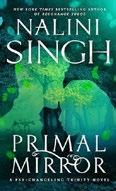
The alpha of a leopard pack is enthralled with his mysterious pregnant neighbor. Remi Denier was abandoned by his father and raised by a single mother who died when he was a teenager. After restless years of race car driving and loneliness, Remi accepted his dominant nature and created RainFire, a pack located deep in Tennessee’s Smoky Mountains. He was joined by others interested in the challenge of building a pack from scratch. While scouting nearby land the pack was hoping to annex, Remi
discovers heavily pregnant Auden Scott in a newly constructed cabin. Auden is a Psy, a race of humans with psychic abilities. Auden has a peculiar specialty: When touching objects, she can “read” the thoughts and feelings of anyone who has previously touched those items. Pregnancy has amplified her skill, and the machine-made cabin has been designed to give respite from the flood of feedback that overwhelms her Psy senses. Something about her scent disturbs Remi, but as an alpha, he also feels a deep-seated urge to protect Auden and her unborn child. Auden eventually confides the truth in Remi: Her powerful Psy parents experimented on her brain when she was a teenager, and her pregnancy seems to be reviving old symptoms. She experiences long blocks of missing time and is afraid her personality may have split in two. Even more frightening, she’s sure her doctors have sinister plans for her baby. The romance between Remi and Auden is an afterthought; Singh’s novel is focused on the continuation of a multibook arc describing the challenges facing the Psy as they race to save the millions of minds connected to their failing neural net. In previous books in this long-running series, Singh kept the romance arc at the center, but this installment feels noticeably off balance. A compelling but lopsided read.
Sweeney, Melanie | Putnam (368 pp.) $18.99 paper | July 9, 2024 | 9780593716090
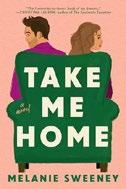
A last-minute road trip leads to a resurgence of long-denied feelings for two rivals. When Hazel Elliot decides she’s done with something—a class, a friendship, a romantic attachment—she shuts the door on it forever. The trouble is that this week, she’s been summoned back to her hometown for her father’s wintertime wedding, and that
means returning to a place she hasn’t set foot in since leaving for college—and now she’s working on a Ph.D. It turns out she’s not the only one heading toward Lockett Prairie, Texas. Ash Campbell, her high school boyfriend’s former best friend— who’s now a barista at her favorite coffee shop when he isn’t studying for his architecture degree and battling her for the best chair in the place—suddenly finds himself in need of a ride. With his car in the shop and no way to get home this close to Christmas, he’s forced to rely on the girl he’s harbored a secret crush on for years. Setting off on a long road trip isn’t something these frenemies envisioned for themselves, especially when bad weather sends them off the road for the night— and into the only bed left at a local B&B. The more time they spend together, though, the more difficult it becomes to deny the fact that their healthy rivalry is rooted in a visceral attraction, and once they’re both home in Lockett Prairie, Hazel realizes that Ash is the one person she can call on to rescue her from spending time with her dad’s new family. Sweeney’s romance debut is a phenomenal achievement, with a perfect blend of humor and angst. While most of the book is devoted to growing its main couple’s dynamic, Sweeney gives equal weight to the familial relationships that define them and explores the meaning of truly growing up emotionally. Sometimes, the scariest thing anyone can do is fall in love, and although there are some bumps and stalls along the way, Hazel and Ash’s journey to choosing each other makes for a lovely ride.
A heartwarming contemporary romance that will keep readers hooked until the last page.
Vasti, Alexandra | St. Martin’s Griffin (352 pp.) $18.00 paper | July 23, 2024 | 9781250910943

An American duke tangles with an erotic bookseller disguised as a proper English lady. Though he was born and raised in New Orleans,
Peter Kent has unexpectedly become the Duke of Stanhope. He’s enjoyed getting a chance to lecture his new peers in the House of Lords about the urgent necessity of abolishing slavery in all British colonies, but he still longs for his old life. When he learns that his father had two unacknowledged illegitimate children—12-year-old Lu and 10-year-old Freddie—he sees a chance to use his new authority for something positive, but he’s told that if he wants to become their legal guardian, it would help to be married to an “impeccable” lady. Enter Lady Selina Ravenscroft—not to marry, but to be his matchmaker. She can’t possibly marry him, no matter how attractive she finds him, because her secrets would ruin his reputation even further. First, she’s the secret power behind Belvoir’s Library, “the most popular circulating library in England.” And as if a lady earning money from trade isn’t bad enough, Belvoir’s has a popular underground business putting out seditious and salacious publications, including those included in the Venus catalog, a ladies-only collection with a “combination of radical philosophy, erotic memoirs, and titillating novels.” Unfortunately, Selina’s attempts at matchmaking fail when she and Peter, their burgeoning attraction getting the better of them, are caught in an indiscreet moment. Though their hasty marriage gets off to a steamy start, Selina’s secrets are suddenly on the verge of being made public, and their coupling might need to end as quickly as it began. Using wit and a bookish, rom-com sensibility, Vasti has built a charming new Regency series around Belvoir’s Library. And spicy, too—though Selina’s a virgin when she marries Peter, she’s also an erotica fangirl, and all their intimate scenes would be right at home in Belvoir’s Venus catalog. Though the plot is uneven in places, the genuine humor and solid character development will keep readers turning the pages. A sparkling launch to a promising new Regency series set at a woman-run library.


Chris Van Dusen is bringing Elle Kennedy’s romance novel to the small screen.
Bridgerton creator Chris Van Dusen is turning to another literary inspiration for his next series.
Van Dusen will adapt Elle Kennedy’s Girl Abroad for the small screen, alongside entertainment companies Pacesetter Productions and A24, Deadline reports.
Kennedy’s romance novel tells the story of Abbey Bly, a 19-year-old woman who moves to London for a year
as part of a study-abroad program. She quickly falls for one of her roommates, a rugby player, and also for a bassist who already has a girlfriend. A critic for Kirkus called the book, published in February by Bloom, “a spicy novel that’s a must-read for fans of a British accent.”
Van Dusen worked as a producer on Grey’s Anatomy and Scandal before bringing Bridgerton, based on Julia Quinn’s series of historical romance novels, to Netflix in 2020. The show was a huge hit for the streaming service; its third season is scheduled to begin airing later this month.
He will be the showrunner for Girl Abroad and will
executive-produce alongside Kennedy.
Kennedy announced news of the adaptation on Instagram, writing, “I am beyond excited about this and am over the moon that the creator of Bridgerton is adapting it! I’ve always imagined this book being on screen and now it’s a dream come true.”
Van Dusen also posted about the project on Instagram, writing, “Thrilled about this one! Working [with] the greats…in my

favorite city to adapt this book I’ve been absolutely obsessed with.”—M.S.

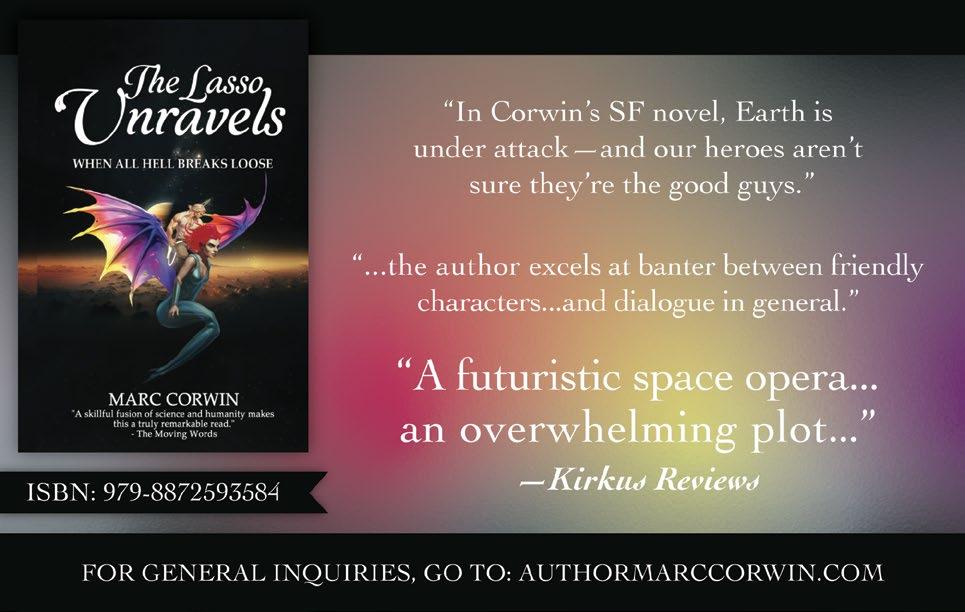
 ERIC LIEBETRAU
ERIC LIEBETRAU
IN COMMEMORATION OF Juneteenth, one of the most significant American holidays, here are three new books that offer astute, vivid perspectives on Black life in the United States over the past two centuries. The first two are broad, sometimes revisionist histories of Black culture and race relations in America; the third is a biography of an indispensable figure in American history.
Like Michael Harriot’s Black AF History, Kellie Carter Jackson’s We Refuse: A Forceful History of Black Resistance (Seal Press, June 4) is a powerful response to the whitewashed version of American history that often dominates both textbooks and political discussions. In a starred review, our reviewer writes, “Jackson, a professor of Africana studies and author of Force and Freedom , fuses solid research with an urgent authorial voice, bringing a fresh perspective to the haunted history of American race relations. This taut and fiery discussion focuses on historical research (with occasional repetition) and transformative figures (often
little known) along with hard-won insight from Jackson’s personal experiences.” Sure to rile right-wing talking heads, this “uncompromising yet accessible rejoinder to conventional wisdom about race and violence” is a must-read.
Crazy as Hell: The Best Little Guide to Black History (Norton, June 4) is similar in spirit to Jackson’s book but laced with a bit more levity and focus on cultural figures.
Authors Hoke S. Glover III and V. Efua Prince “seek to challenge views that Black Americans are solely defined by the brutality of their history,” writes our reviewer. “Toward that end, the authors organize the text around the great cultural ‘luminaries’ who have not only ‘transcend[ed] the boundaries’ imposed on Black Americans, but also demonstrated their (very human) imperfections by showing themselves to be ‘crazy as hell.’” The authors’ approach is unique, concise, and accessible, synthesizing vast amounts of information in a way that can attract even the most history-averse readers. “As it entertains and
enlightens,” our critic notes, “this book also makes readers keenly aware that the ‘craziness’ demonstrated by Black heroes is a direct response to the madness of a racist American society.” Few historical figures epitomize the fight for Black freedom more than Harriet Tubman. In her tightly focused biography, Night Flyer: Harriet Tubman and the Faith Dreams of a Free People (Penguin Press, June 18), Tiya Miles, a Kirkus Prize finalist for All That She Carried , delivers a truly fresh portrait of the woman behind the legend. As our reviewer writes, the author “chronicles and contextualizes Tubman’s work to lead enslaved people to freedom in the North, spotlighting her subject’s spiritual conviction and naturalistic
know-how. The author mines existing biographies and places familiar Tubman anecdotes alongside the spiritual narratives of lesser-known Black women contemporaries. Miles seeks to rescue Tubman from the solitary, superhuman portrayals, laced with mysticism and oddity, that have defined her legacy.”
While plenty has been written about Tubman, Miles’ experience and facility with the subject matter bring out a version of Tubman that celebrates her very real— rather than merely mythic—accomplishments, while also providing an inspirational path for anyone aspiring to further the cause of civil justice.
Eric Liebetrau is the nonfiction editor.

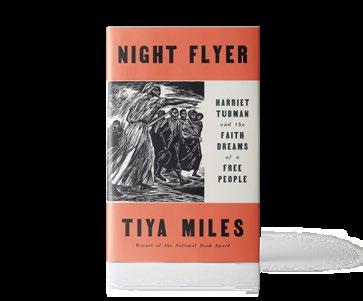
 Illustration by Eric Scott Anderson
Illustration by Eric Scott Anderson
Ancient history through the lens of unheralded women of power.
Drawing on literary and archaeological sources, classicist Dunn, author of The Shadow of Vesuvius , examines women’s roles in the classical world, revealing their involvement in social, business, political, and religious life over a span of 3,000 years. From Minoan Crete to Nero’s Rome, women were bakers and weavers, poets and artisans; some were financially independent business leaders, managing estates, workshops, and stock. Others solidified political alliances through marriages, led armies, and wielded weapons. Artemisia, for one, was “the sole female commander on either side of the Graeco-Persian wars.” Women’s reputations spread beyond
borders: The women of Lesbos and Lydia were famously beautiful, with the exception, apparently, of the poet Sappho; Etruscan women were notoriously brazen and sexually daring. The strength and stature of Scythian women made them “real-life inspiration for the mythical Amazons.” Dunn’s deft sleuthing uncovers long-overlooked realities. For example, in Minoan artwork, the centrality of women’s images has led some historians to describe Minoan society as matriarchal or matrilineal. Mycenaean women shown on clay tablets similarly attest to women’s multiplicity of roles, while Mycenaean men “were sometimes described on tablets as being the offspring of women of particular crafts.” Yet
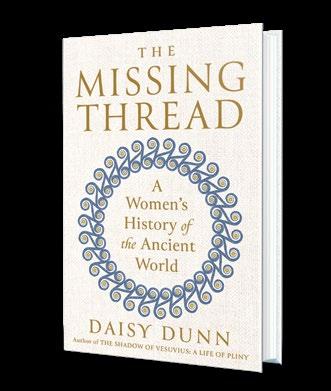
women were victims of rape, enslavement, and certainly of fierce patriarchy. Barred from Olympic Games—thrown off a cliff if they disobeyed—every four years they were allowed to compete in a women’s footrace. Wars, rivalries, and invasions made women central to political alliances, and Dunn details their adept machinations as they
moved boldly or plotted secretly. Besides familiar names, such as Cleopatra, Fulvia, and Lucretia, the author introduces scores more of prodigious prowess and influence: Gorgo of Sparta, Atossa, and poet Enheduanna, among many others. Her erudition is impressive, and her narrative is consistently animated. A sweeping history thrumming with energy.
A wickedly funny and often moving memoir.
MANBOOBS
Aijazuddin, Komail | Abrams (288 pp.)
$27.00 | Aug. 13, 2024 | 9781419773846
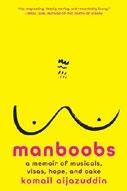
A visual artist’s debut memoir about growing up gay and finding artistic refuge from the “patriarchal penitentiary” of Pakistan. Born in Abu Dhabi, Aijazuddin spent most of his childhood and adolescence in Lahore, the city to which his parents returned when he was 5. As deep as his family’s Pakistani roots were, the author felt like a perennial outsider. The effeminacy he displayed as a child later manifested as queerness and—to his dismay—a pair of “manboobs” that made the overweight adolescent Aijazuddin look “more like the statue of a pagan fertility goddess than a pubescent boy.” Yet even as he struggled with his sexuality and body, the author managed to find other gay youths who shared his love of everything glittery and gorgeous, from Cleopatra to Buffy the Vampire Slayer. During his post-college life in New York City, a painter friend was granted a green card on the strength of his early career achievements, and Aijazuddin, also studying in New York, began laying the foundation for a similar attempt. Realizing that his dream of residing in America could take years, the author returned to Pakistan to become a working artist. The social pressures to conform to heteronormativity surrounded him, especially as he found artistic recognition and, later, a boyfriend whom he eventually lost to schizophrenia. Despite his struggles
with personal tragedy and disenchantment with the U.S., the author found strength among other gay Pakistani transplants, all while taking solace in the great lesson every musical he had ever seen taught him: although “no life is without struggle, no life need be without joy.” Unabashed in its depiction of camp and queer identity, Aijazuddin’s book is a poignant reflection on identity, race, and the meaning of home. A wickedly funny and often moving memoir.
Akbari, Anna | Grand Central Publishing (304 pp.) | $30.00 June 4, 2024 | 9781538742198

A sociologist uncovers the tale behind one of the world’s sneakiest catfish.
Akbari, a former professor at NYU and author of Startup Your Life, takes readers on an unforgettable journey into how she and two other women discovered the truth about the online catfish posing as “Ethan.” The author wastes no time kicking off the propulsive narrative, dropping us right into an email conversation between the three female protagonists at the start of the book. Although the beginning section is somewhat confusing due to lack of information regarding the three women, once Akbari begins to detail her intense and intimate connection with Ethan, there is no putting this book down. The author met Ethan on an online dating
website. As their intimacy deepened, she began to develop significant feelings for him—until she heard from two other women who both had their own personal histories with Ethan. At this point, countless questions boiled up to the surface. Akbari’s attempt to answer them reads like a psychological thriller, as she documents her entire relationship with Ethan via a host of emails and chats. After multiple failed attempts to meet him and a wide variety of excuses, she was even more determined to figure out the mechanics behind this poisonous relationship. Ultimately, she wonders, who was she talking to, and what did he want? These two questions will burn in the back of readers’ minds until the very end, when Ethan’s true motives come to light. It’s clear that once Akbari comprehended the depth of Ethan’s deceit, she was dedicated to nothing but the truth, hopefully stopping Ethan from hurting more women in the process, and she offers a riveting story that puts into perspective the dark dangers of forming online relationships. A truly terrifying cautionary tale for anyone involved in the online dating world.
Akhavan, Desiree | Random House (208 pp.) | $20.00 paper Aug. 13, 2024 | 9780399588501
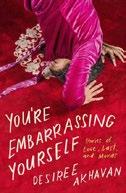
A Sundance-winning filmmaker reveals how her “most cringe-inducing moments” have been integral in shaping her life.
The New York City–born daughter of Iranian immigrants, Akhavan always felt like a “different species.” Her insecurities became even more pronounced during adolescence when classmates posted a picture of her on a joke website and labeled it “the Beast.” Later, the author would reclaim the differences that set her apart from “skinny symmetrical
white girls” (broad shoulders, Middle Eastern background, queerness) on a journey to adulthood that was both darkly comic and sometimes self-destructive. In college, Akhavan began cutting, and soon after, she underwent cosmetic surgery. “I don’t think my nose job actually had that much to do with my nose,” she writes. “I was reeling from my first broken heart and my parents wanted to support me, but since my heart had been broken by a girl, we had to pretend it wasn’t happening.” In 2005, Akhavan met Cecilia. Their professional collaboration helped the author find success as an independent filmmaker, while their friendship survived the “desperate need for validation” that she had battled for years. When Cecilia had a baby, Akhavan realized, “the truth that was too embarrassing to say out loud was that I’d never have considered making a decision without her, from what outfit to wear to what partner to choose, while she hadn’t taken me into account when making the biggest decision of her life.” Musing on the maturity that brought with it a desire for both children and “proximity to my heritage,” she notes, sagely, “you’re going to keep making a fool of yourself, because that’s what it is to be alive.” As she depicts her struggle to come to terms with a complex identity, Akhavan also celebrates the hard-won privilege of self-acceptance. A readably funny and candid memoir.
Behind Modern AI
Ananthaswamy, Anil | Dutton (480 pp.)
$32.00 | July 16, 2024 | 9780593185742
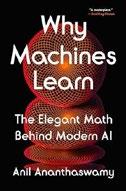
A study of the concepts that power AI. In this demanding but rewarding book, Ananthaswamy, author of The Man Who Wasn’t There, “explains the elegant mathematics and algorithms [behind]…machine learning, a
type of AI that involves building machines that can learn to discern patterns in data without being explicitly programmed to do so.” With astute reference to principles from the disciplines of math, computer science, physics, and neuroscience, the author guides readers through the conceptual frameworks involved in the creation of AI. While it would be helpful to come to the book with a strong background in math (especially statistics and calculus), clear and detailed illustrations help make it accessible to anyone willing to immerse themselves in the material. Ananthaswamy makes the power of AI obvious, and his engaging case studies explore its emerging abilities in the generation of new media—text, images, video, and music—and contributions to discoveries in areas such as drug development and the dynamics of gene expression. The author also provides a vivid picture of how AI will continue to transform everyday activities and, very soon, revolutionize our social and economic lives. Ananthaswamy demonstrates how a profound merging of human activities with machine processes is already far along and will soon accelerate strikingly. The author could have offered a little more insight about these coming changes, though the introduction and epilogue do touch on pressing questions about the various risks of emerging technologies and how they might be mitigated. Familiarizing ourselves with what is at stake, the author rightly notes, is now an urgent personal and public responsibility: “It is only when we understand the inevitability of learning machines that we will be prepared to tackle a future in which AI is ubiquitous, for good and for bad.”
A challenging and illuminating overview of how machine learning works.

Applebaum, Anne | Doubleday (224 pp.) $27.00 | July 23, 2024 | 9780385549936

The noted journalist and student of tyranny turns her attention to Trump, Putin, and numerous other modern authoritarians.
“A world in which autocracies work together to stay in power, work together to promote their system, and work together to damage democracies is not some distant dystopia,” writes Applebaum. “That world is the one we are living in right now.” In the meantime, she notes, democracies, as if paralyzed, accommodate both the lawlessness of the autocrats and the violence they incite: Witness, for instance, the growing myth that Jan. 6, 2021, was acceptable political expression. Whereas autocrats once worked singly, today they’re shored up by an international kleptocracy and shared understandings—don’t criticize my oppressiveness, and I won’t criticize yours—that make allies of disparate rulers from Washington to Budapest to Harare. These rulers are shameless, Applebaum notes. They no longer bother to disguise their acts of aggression and brutality, as with Putin’s invasion of Ukraine, a declaration that old rules no longer applied. Autocrats differ in style, but they share a hatred for an independent judiciary, representative government, and the free press—i.e., all the hallmarks of democracy. Against this, Applebaum suggests, it behooves the democratic nations of the world to band together in mutual support precisely because “their democracies are not safe.” One means of support would be to reject news that comes from the likes of Russia Today and Xinhua, which inform so much antidemocratic dissension in the “free world,” and instead insist on reliable information. Exactly how this is to be achieved isn’t quite clear, but it’s a worthy idea, as is
the suggestion that increased policing of kleptocratic antics and their enablers— not least “the bankers in Sioux Falls happy to accept mystery deposits from mystery clients”—is needed. Central to any discussion of modern totalitarianism.
Bauer, Jean-Martin | Knopf (304 pp.)
$30.00 | June 25, 2024 | 9780593321683

A noted food activist paints a dire picture of the likelihood of growing world hunger. Bauer, former director of the World Food Programme’s operations in the Sahel, opens with a haunting anecdote as a mob breaks into a WFP warehouse in Haiti, loots it, and sets the now-empty building on fire. Doubtless much of the stolen food went into the storage rooms of the powerful. “We are in a broad, resurgent emergency that is unfolding because of extended conflict, emerging diseases, resource scarcity, and climate change,” notes the author. Indeed, he writes, chronic hunger affects nearly one in nine people on the globe, and with the world population growing by 80 million people per year, remedies are in short supply. Bauer proposes many practical improvements at the local and macro levels. As to the latter, for instance, he argues that aid consisting of pallets of rice and beans is no longer sufficient; what we need is “sophisticated assistance, including analytics on humanitarian needs, digital platforms to manage benefits, and bridges to longer-term solutions.” The author deeply explores the social-justice dimensions of hunger. Racial bias figures into aid equations, unintentionally or not; the global economy undercuts local ones so that, for instance, in Liberia, it’s
cheaper to import rice from Asia rather than grow it at home; legislation in many American states banning the sale of food from home kitchens discourages both entrepreneurship and allows food deserts to proliferate. Much of Bauer’s discussion is economic in nature, but not inaccessibly so. He advocates for expanding digital payment platforms to encourage agricultural e-commerce for people without bank accounts, which could, he adds, “democratize banking and trade”—and feed the hungry, too, precisely by promoting small-scale, local, artisanal production. A clear-voiced call for ways to address the urgent need to feed billions of hungry people.
Bierman, Paul | Norton (304 pp.)
$27.99 | Aug. 20, 2024 | 9781324020677

A potent examination of how melting glaciers and rising ocean levels are already at crisis levels.
Except for the conclusion, Bierman, a professor of environmental science at the University of Vermont, has written not another global warming polemic but rather a compelling introduction to Greenland, glaciers, and how scientists drill down through ice to reveal the past. Greenland is the world’s largest island; 80% is covered by glaciers, so it’s sparsely inhabited, which only came to world attention during World War II and the Cold War. Aware that it was closer to the Soviet Union than Canada is, the U.S. War Department took an interest. Beginning in 1951, it built several bases in the far north. Mostly
used for intelligence gathering and weather reporting, they also supported major research to understand the cryosphere, “the frozen portion of Earth.” Happy to accept military dollars, scientists undertook the difficult, six-year engineering feat of drilling down through a glacier to bring up a mile-long core of ice and then dirt that revealed Greenland’s history and made breakthrough discoveries about snow and ice mechanics, glaciers, and climate change. Having accomplished their purpose, the bases were abandoned by 1966, leaving behind immense deposits of frozen sewage, diesel oil, drilling chemicals, and radioactivity. Bierman delivers an expert account of the 50 years of research that followed in laboratories around the world; examining the core, scientists learned that within the last million years, the ice beneath the camps had melted without human involvement, and tundra plants had grown across Greenland. Having hinted at bad news, Bierman provides it in the final chapter, warning that the rising temperature is melting Greenland’s ice, which holds enough water to raise sea levels by 24 feet. At the same time, the warming ocean and atmosphere are producing the deranged weather and violent storms already in progress. Frightening yet excellent popular science.
Boot, Max | Liveright/Norton (880 pp.)
$45.00 | Sept. 10, 2024 | 9780871409447
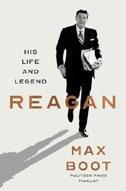
The historian and foreign-policy analyst presents an unabashed revisionist history of the 40th president of the U.S. Boot, a senior fellow at the
Council on Foreign Relations and the author of The Road Not Taken and
Invisible Armies , sets out to present Ronald Reagan (1911-2004) in full: the enigmatic man of contradictions who had a singular talent for connecting with millions of constituents while being a conflict-avoiding introvert little known to his own family as well as associates who famously eluded and “flummoxed” official biographer Edmund Morris, whose Dutch was “an experimental, quasi-fictional book that was widely criticized.” The amount of research Boot conducted is immense, and his portrait of Reagan is enhanced not only by the passage of time since Reagan’s administrations, but by the author’s 100+ forthright interviews and the availability of more archival materials. Boot brings to light the familial, social, and religious influences that shaped Reagan’s Midwestern childhood; the skills he honed as a sportscaster and actor, which reinforced the all-American persona that he would display on the world stage; and his intriguing work as an FBI informant during the Hollywood blacklist era. The author also produces a no-holds-barred account of Reagan’s terms as California governor and U.S. president. Boot’s account of the life and times of Reagan is, as promised, no hagiography. Occasionally, however, the author overreaches in his attempts to demonstrate his independence with odd quips and obvious points that diminish the quality of the text. Yet Boot goes further than any other biography—with the exception of H.W. Brands’ 2015 portrait—in completing the story of an essentially unknowable individual who was “hiding in plain sight” yet whose ideological metamorphosis was fundamental to understanding the
political and social transformations of the U.S. in the second half of the 20th century.
A prodigiously researched, satisfying presidential bio.
Bostridge, Mark | Bloomsbury
Continuum (288 pp.) | $28.00
Sept. 3, 2024 | 9781399416023

Biography and autobiography merge in this intriguing tale about Victor Hugo’s daughter.
Bostridge, author of Letters From a Lost Generation and Florence Nightingale, turns inward in this detailed personal reflection on the tragic story of Hugo’s daughter, Adèle (1830-1915), who’s well known thanks to Truffaut’s L’Histoire d’Adèle H. “As I pursue Adèle Hugo in the pages that follow,” writes the author, “fragments of my story will shadow hers.”
Throughout, Bostridge relishes digressions on many topics, including Victor Hugo and his family and the author’s own life.
“In writing about other people’s lives,” he reflects, “you learn to be wary of your imagination….Meanwhile the rational part of oneself remains earthbound.”
After Louis-Napoleon’s rise to power, the Hugo family moved to the island of Jersey—with Bostridge figuratively in tow. He seems as obsessed with Adèle as she was with Albert Pinson. As the author recounts, Adèle pursued him, and when he left to join the military, she was crushed. The family then moved to the neighboring island of Guernsey. Adèle,
A nuanced portrait of an enigmatic woman and a biographer in pursuit of her story.
A nuanced portrait of an enigmatic woman and a biographer in pursuit of her story.
Brettschneider, Corey | Norton (384 pp.) $32.50 | July 2, 2024 | 9781324006275

A professor of constitutional law and politics recounts how popular protest and democratic institutions have restrained authoritarian-inclined presidents.
According to Brettschneider, author of The Oath and the Office, five presidents preceded Trump in antidemocratic behavior. John Adams actively prosecuted journalists who uncovered various misdoings under his administration. Furthermore, he cooked up a scheme to deny his opponent in the 1800 election, Thomas Jefferson, the electoral votes needed to take office. James Buchanan worked with allies in the Supreme Court to quash efforts to extend constitutional personhood to Black Americans by means of
>>> then 26, experienced periods of “moody introspection, symptomatic of her distress at Albert Pinson’s departure.” A few years later, she traveled to the Isle of Wight. Bostridge is certain Pinson promised to marry her; he shares a photo of Pinson in uniform, as well as a marriage license, dated 1861. Apparently, Pinson visited the Hugo family, and shortly after, he was stationed to Halifax, unmarried. Adèle followed. At this point, the author examines her “acute mental disturbance.” When Pinson was assigned to Barbados, Adèle followed again. Pinson next moved to Dublin, where he married, and Adèle, suffering from mental illness, returned to Paris, where she eventually entered a private asylum. Bostridge’s journey is “messy, unpredictable, and contradictory”—yet rarely boring.
A music critic takes on the legend that is Joni Mitchell, ambivalently.
BY MICHAEL SCHAUB
WHEN AN EDITOR suggested that Ann Powers write a book about Joni Mitchell, the NPR music critic hesitated.
It wasn’t that Powers didn’t admire the iconic folk singer-songwriter, known for legendary albums like Ladies of the Canyon and Blue and enduring songs such as “Both Sides, Now,” “The Circle Game,” and “Big Yellow Taxi.”
But, as Powers writes in her new book, Traveling: On the Path of Joni Mitchell (Dey Street/HarperCollins, June 11), “I preferred underdogs.…All the Joni worship freaked me out, frankly—it’s so intense and uncompromising. To so many, she can do no wrong. I have never felt comfortable around the popular kids.”
After thinking about it, though, Powers, whose other books include Weird Like Us: My Bohemian America and Good Booty: Love and Sex, Black and White, Body and Soul in American Music, decided to accept the challenge, hoping that she could “find another Joni Mitchell, one less worshipped but better understood.”
In order to do so, Powers took a different tack, opting not to write a straight-ahead biography of Mitchell, but instead to explore “the byways, the roads where she had wandered unnoticed.…She has often been the object of others’ obsessions, but as a subject, she cannot be owned. I can only follow her and call her name, again and again.”
Powers, who currently splits her time between Nashville and Scandinavia, talked to Kirkus about Traveling via Zoom from Uppsala, Sweden. Our conversation has been edited for length and clarity.
What made you decide to write a book about the iconic Joni Mitchell?
[Editor] Denise Oswald was at Dey Street at the time, and she called me and said, “I just want to read you on Joni.” I was cautious, hesitant, antagonistic about it. I was a little bit like, I’m a pretty estab-
lished woman music writer who writes a lot about women, and so having me write about one of the great women feels a little like the obvious thing. Maybe I was resistant to that. And my history as a fan of Joni at that time was spotty.

I loved her classic works. I loved some of her more obscure works. I loved Night Ride Home ; I loved Don Juan’s Reckless Daughter. I always loved her jazz fusion music, but I was resistant to writing about this iconic figure. She is such a powerful presence and stimulates such passion in her fans, so that felt a little daunting.
I thought, Here’s this boomer goddess whose reputation is so unimpeachable and whose genius is so undisputed. What is there for me to say that’s new about this person? What I finally decided was that I can’t make a definitive statement about Joni Mitchell, so I’m going to try approaching her from many different angles and trying to tell many different stories about her, through her music and through her life.
You write that you “remain a witness, not a friend” to Mitchell. Why was it important to keep this kind of distance between you and a musician whom you admire but have a complicated relationship with? I was well aware of how becoming too intimate with your subject can compromise you. And particularly with the vortex of her charisma, I’ve seen people get swept away. The hyperbole was so great. I love that I am now part of an elite group of writers who have written really wonderful books about Joni, and I think each negotiated this in their own way, whether it was David Yaffe or Michelle Mercer or Sheila Weller. Each of them had to figure out, What is my perspective and relationship, and how close to or far from this subject am I?
For me, I just wanted to feel that I could say anything. I could think about the uglier side of her, the challenging sides of her. If I had connected with her and made it more of an official biography, it would have been harder to do that. I wanted to be free, and that’s why I stayed free of direct connections with her. That said, I thought it was really important to talk to a lot of people connected to her, whether those people were central to her, like [Mitchell’s former husband] Larry Klein, or more peripheral. I loved finding these characters like [musician] Bobby Ingram in Florida who just crossed paths with her but illuminated who she was, too.
Did you find that doing research for this book changed the way you looked at her?
Absolutely. I won’t say that I thought she was ever a
purely confessional songwriter, but learning about the context and the craft of what she was doing—at every phase of her career—made it ever more clear that her combination of autobiographical material, and lyricism, and absolute curiosity, and inventiveness, and restlessness all challenge what we think confessional is.
It’s similar to how I think we should be looking at someone like Taylor Swift today. One of the lessons of Joni’s career is that she defined confessional or autobiographical writing in popular music, but she did so by messing around with that idea from the beginning. What I came to realize is that even in very early songs, she’s much more of an observer than most people give her credit for. It’s not all just her insides coming out. I know she’s often said that films inspire her, and she thinks of her songs as little movies, and I
Even in these… dowager moments when she’s literally on a throne, she’s still smiling and laughing and giving us a little bit of a side eye.
could really see that. Especially when she gets into the post-Blue period, there are some incredible little movies in her catalog.
Mitchell performed “Both Sides, Now” at the Grammys this year. What was watching that like, having just spent seven years writing this book? Well, I cried. I was very moved. But as moved as I am by Joni’s resurgence, I also really value her sense of humor. I think it was [critic] Lindsay Zoladz who said that Joni has an expert bullshit detector. Even in these kind of dowager moments when she’s literally on a throne, she’s still smiling and laughing and giving us a little bit of a side eye. I thought that reading of “Both Sides, Now” was incredible because there are moments in it where she reminds me of one of her own idols, Annie Ross, when she was older, and other jazz singers when they’re older,
where the phrasing changes. It is almost like the phrasing is pointing to the time that’s passed between when they were in their prime and the present day. She is giving us that little bit of a perspective on her own. I don’t know if it’s incredulity or just amusement at being welcomed again into the circle.
“Both Sides, Now” is one that she reprised many times throughout her career. I think it’s indicative of her own canniness and wisdom that she’s going back to these moments in her catalog and saying, This song is the one that can mark the passage of time. This is the one that can show all the bumps in the roads I’ve taken. It is an old-person song that she wrote when she was young, and now she is an old person, and it fits her like a beautiful caftan that she would wear to the Grammys.
Michael Schaub is a contributing writer.

the Dred Scott decision, among other acts. Andrew Johnson and Woodrow Wilson were advocates of white supremacy, while Richard Nixon…well, his crimes are well known. The resistance to these presidents came from many quarters. As the author chronicles, journalists such as Ida Wells wrote vigorously in defense of First Amendment issues, while Frederick Douglass opposed both Buchanan and Johnson in ways that Martin Luther King Jr. would learn from a century later, “marking anti-tyranny as an animating principle of American government” in the process. As Brettschneider examines the legal cases surrounding many of these developments, he often reconsiders precedent. For example, he suggests that too much importance has been attached to Brown v. Board of Education; nonetheless, the decision was critical because it validated earlier efforts to press the Equal Protection Clause, by which, some years earlier, Harry Truman had desegregated the military, “not just acting morally but… fulfilling a constitutional duty.” As Brettschneider notes in closing, the dissent cuts both ways: Trump, too, had his “citizen readers” of the Constitution, but their ill intent was to find ways to keep him in power by, among other things, storming the Capitol on Jan. 6. A welcome reminder, in a time of growing repression, of the power of well-placed dissent.
Chemerinsky, Erwin | Liveright/ Norton (320 pp.) | $29.99 Aug. 20, 2024 | 9781324091585

A legal scholar presents his solution to today’s crippling political polarization. Chemerinsky, dean of UC Berkeley School of Law and author of Worse Than Nothing
Depressing yet important insights on the state of the union.
NO DEMOCRACY LASTS FOREVER
and We the People, points out that the word democracy never appears in the Constitution, and only one of the four institutions, the House of Representatives, “was elected by the people.” Like many other observers, the author considers the Electoral College its most egregious flaw. Because smaller states opposed popular election of the president, the members of the Constitutional Convention compromised by giving each state a number of “electors” equal to its senators and representatives. Since every state has two senators, this gives small states an advantage because presidents are elected by a majority of electors, rather than votes. Twice this century, the candidate who lost the popular vote won in the Electoral College, and this will happen more often as demographic changes continue to concentrate Democratic voters in populous Northern states while Republicans dominate more numerous rural Southern and Midwestern states. Three quarters of the states must approve an amendment to choose a president by popular vote; this is unlikely. Everyone agrees that gerrymandering—drawing electoral boundaries that concentrate the opposing party in the fewest districts—is cheating, but it’s irresistible to the governing party. Some of the author’s suggested reforms, such as eliminating the filibuster or establishing term limits for Supreme Court justices, have modest popular support. Other topics—e.g., the malignant influence of social media or racial justice—are not strictly constitutional issues, but Chemerinsky addresses them nonetheless. His outstanding analysis, however, is not matched by his remedies. He admits that little support exists for replacing the Constitution, and if the political climate continues to degrade, he suggests that secession—hopefully peaceful—between red and blue states is more likely. Depressing yet important insights on the state of the union.
Danticat, Edwidge | Graywolf (160 pp.)
$26.00 | Sept. 3, 2024 | 9781644453025

The acclaimed author discusses influential authors, her native Haiti, and the challenges of life in America. Danticat begins this short but powerful collection of essays by quoting Haitian-born poet Roland Chassagne. The cited work includes the phrase the author chose for her title. “We’re alone is the persistent chorus of the deserted, as in no one is coming to save us,” she writes. “Yet, we’re alone can also be a promise writers make to their readers, a reminder of this singular intimacy between us. At least we’re alone together.” In 1963, Chassagne was taken to dictator “Papa Doc” Duvalier and disappeared. His experience encapsulates the two themes around which Danticat groups these essays, the first devoted to writers who have influenced her and the second focusing on Haiti. In these pieces, the author chronicles the memories conjured by a 2018 visit for the opening of a new library; her Miami speech in which she advocated for prolonged protected status for Haitians displaced by hurricanes; the influence on her life and writing of such authors as Lorraine Hansberry, Audre Lorde, and Toni Morrison, the last of whom “turned pain into flesh and brought spirits to life”; her terror upon arriving at a Miami shopping mall during a mass shooting that turned out to be a hoax; and the frightening activities of a Haiti gang known as 400 Mawozo, which kidnapped 17 missionaries in 2021. This collection, like many, has a grab bag quality to it; the pieces don’t cohere as well as they should.
Still, the author offers an elegant commentary on injustice and the mixed feelings one’s home can engender. As Danticat writes, “things sometimes go differently than planned or hoped for, and though home can be a safe place, we shouldn’t always rush back there.”
Moving essays on Haiti, literature, and life’s vicissitudes.
Dharia, Premal & James Forman Jr. & Maria Hawilo | Farrar, Straus and Giroux (496 pp.) | $20.00 paper July 9, 2024 | 9780374614492
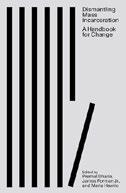
A multifaceted look at the problem of crime, punishment, and injustice. Many of the contributors to this assemblage by law school professors Dharia, Forman, and Hawilo note that the U.S. is a carceral state. Owing to the Nixon-era war on crime, the country “began to expand the criminal system in a way that was so wide-ranging it enveloped whole communities…[and] punished an ever-increasing number of behaviors for ever-longer periods of time.” One result is that communities of color are vastly overrepresented in the carceral system, with Black males imprisoned at five times the rate of whites. This is both deliberate and in some respects an unintended consequence: The criminal system, write the editors, “isn’t a system at all” but instead “a series of largely disconnected actors, structures, and bureaucracies, each following their own incentives and logics.” In this system, blame is easy to assign; prosecutors blame judges for harsh sentences, judges blame prosecutors for funneling so many cases to the bench and legislatures for imposing minimum sentencing requirements, and so forth. The numbers the contributors adduce are staggering: More Americans work in the criminal justice system than in the auto-manufacturing sector, and nearly a
tenth of the nation’s population has been arrested or jailed. While it is true that, as crime reporter Jill Leovy notes, “victims get no press coverage,” much of the criminal justice system works in the shadows, with many criminals whisked away in plea bargains that may net them worse punishment than if they had gone to trial. While some of the contributors support abolition or defunding of police forces, others take a far more conservative position. All agree, however, that the present system is both flawed and fundamentally unjust. Other contributors include Angela Y. Davis, Clint Smith, and Emily Bazelon.
A provocative addition to the literature calling for criminal justice reform.
Diner, Hasia R. | St. Martin’s (288 pp.)
$30.00 | July 30, 2024 | 9781250243928

How newcomers rose together in America. Diner, former director of the Goren Center for American Jewish History and author of We Remember With Reverence and Love, draws on memoirs, newspapers, novels, plays, and popular culture to offer a fresh perspective on the relationship between the Irish and the Jews from the end of the 19th century through the 1930s. Irish Catholics, who had come in the 1840s, and Eastern European Jews, who came in the 1880s, realized that they needed each other to defend against anti-immigration Protestants, who thought they would “replace the true Americans.” Because the Irish had come earlier, they “held the knobs,” Diner asserts, that opened doors, allowing Jews “to cross over so many thresholds.” The author focuses on four areas where Irish influence particularly helped Jews: public advocacy against antisemitism; urban politics, where the Irish held key positions; the labor front, where the Irish had been
particularly successful organizers; and education. Although each group held some negative stereotypes about the other, in daily life, they “carved out shared spaces to pursue common goals.”
Anecdotes and capsule biographies enliven Diner’s history as she portrays the many men and women who championed Jews and the Jews who benefited from their support. Education, not surprisingly, proved vital for Jewish children, who were taught by a large contingent of Irish schoolteachers; many joined the teaching profession themselves. Moreover, with a Jewish quota in private colleges, Jews were welcome in Catholic universities—e.g., Fordham, Notre Dame, DePaul—which were founded to help the sons of the Irish working class. In the 1930s, despite pockets of Irish antisemitism, there was strong Irish support of the Jewish campaign against Nazism. The vital cross-cultural alliance, Diner shows, created a capacious, embracing redefinition of what it means to be American. A timely history to rebut anti-immigration rhetoric.
Evans, Richard J. | Penguin Press (624 pp.) $35.00 | Aug. 13, 2024 | 9780593296424

Penetrating biographies of Hitler and 21 other Germans who played important roles in Naziera atrocities.
Evans, author of the Third Reich
Trilogy and other acclaimed books of German history, offers these eye-opening portraits of the heart of evil in an effort to understand what kind of people fell under Hitler’s spell. The subjects include the “Paladins,” top Nazis such as Hermann Göring, Heinrich Himmler, and Joseph Goebbels; “Enforcers,” such as Rudolf Hess, Reinhard Heydrich, and Adolf Eichmann; and “Instruments,” including filmmaker Leni Riefenstahl
and military officer Wilhelm Ritter von Leeb. “What had happened to their moral compass?” asks the author in this robust historical investigation. “Were they gangsters acting with criminal intent?” Were they “ordinary Germans” or “deviants” of some kind? Seeking answers, Evans thoroughly examines each of his subjects’ early years, their reasons for joining the Nazi party, what they did in the war years, and their postwar fates. Common denominators include a desire to find someone to blame for the loss of World War I and for the Great Depression, as well as the belief that a strong leader could return Germany to its rightful place in the world. Tellingly, few ever showed remorse for their deeds. Hitler’s virulent antisemitism and his charismatic speaking style combined with ruthless opportunism to bring him to power, even though the Nazis never attained a majority of the electorate in a fair election. Hitler’s delusion that Germany could fight three much larger powers— the British Empire, the Soviet Union, and the U.S.—was widely shared among Germans, though its effects were exacerbated by their leader’s constant overruling of his generals and the derangement of his later years. The author avoids drawing parallels to any current political figures or movements. A meticulously researched, sobering look at the Nazi era and the people who helped bring its evil intents to fruition.
Witch’s Daughter: My Mother, Her Magic, and the Madness That Bound Us
Fink, Orenda | Gallery Books/ Simon & Schuster (304 pp.) | $28.99 Aug. 6, 2024 | 9781668047460
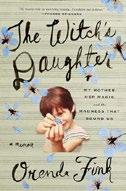
A memorable book of raw, unvarnished recollections.
THE WITCH’S DAUGHTER
Confronting a mother’s madness. Musician, songwriter, and performer Fink makes her book debut with an emotional memoir of her long struggle to
wrest herself from her manipulative, destructive mother. Growing up, writes the author, “there was no comfort, only a sense of danger, of death, a fear of being swallowed alive, out of existence.” Although her father was gentle and caring, he could not protect his daughters—Fink and her older sister, Charlotte, and younger sister, Christine—from his wife’s madness and alcoholic rages, nor from the family’s financial straits. As an adult, Fink discovered that her mother fit the diagnosis of a particular borderline personality disorder archetype known as the Witch. Her mother proudly boasted she was a witch; reading about the disorder helped the author finally understand how it played out in reality. “What the literal witch and the borderline Witch have in common,” she writes, “is the unique ability to control those around them, not through physical force or the use of political leverage, but through the manipulation of the other’s mind.” Caught in her mother’s web, Fink spent 20 years trying to sever ties: “As fucked-up as it was, there was something comforting in the familiarity; her fear and sadness and mad ramblings were something I could lose myself in.” Thankfully, her mother had once given her a guitar, and Fink found an escape in music. She started a band with a friend, acquired a drummer, and got a record contract. Soon they were touring 300 days per year. The author recounts a successful international career, which contrasted with her tumultuous relationship with her mother and her desperate efforts to help her younger sister deal with her psychological and emotional wounds. Now living at peace in the California desert, Fink attests to hard-won survival. A memorable book of raw, unvarnished recollections.
Fox, Porter | Little, Brown (320 pp.)
$30.00 | Sept. 10, 2024 | 9780316568180

An examination of the causes of the ever growing number of savage storms. Fox, author of Northland and The Last Winter, purports to investigate how the proliferation of increasingly dangerous, unpredictable storms is driven by changes in ocean temperatures due to climate change. In particular, there has been a marked increase in Category 5 storms, those with winds of at least 190 miles per hour. Porter is a seasoned writer, and this is an intrinsically important issue, so it’s unfortunate that the narrative continually veers off course. Fox, who has written extensively about wilderness excursions, is an experienced sailor, and much of the text involves his adventures. He devotes considerable time to the mechanics of sailing and the various characters he has met along the way. Some of this material is interesting, especially for fellow sailors, but these discussions are tangential to the theme of ocean temperatures and climate change. A few of Fox’s detours are even more unrelated, such as the chapter about the role a typhoon played in a World War II naval battle. When the author sticks to the topic of climate change, he delivers a variety of useful information, but his tone is often overly alarmist. Fox does provide some interesting nuggets, including the chronic shortfall of funding for ocean research, the innovative use of drones to study storms, and the possible need for a Category 6 designation. By 2030, he writes, “Category 6 typhoons will have devastated a third of Japan, the
Philippines, eastern China, Vietnam, South Korea, and Taiwan.” However, many readers may grow weary of digging out the relevant bits. If only the author brought the same level of focus to this book that he did to The Last Winter. Porter offers intermittent illumination, but a lack of focus leads to a middling book about a crucial subject.
Fuller, Thomas | Doubleday (256 pp.)
$28.00 | Aug. 6, 2024 | 9780385549875

How an all-deaf football team from Southern California beat the odds to become state champions. Fuller’s beat as San Francisco bureau chief for the New York Times included reporting on hard-hitting “heavy stuff” like in-state natural disasters, mass shootings, and poverty. Yet when he ran across the story of the Cubs, a football team from the California School for the Deaf, Riverside, he felt called to investigate. “This team’s journey, a tale of belonging and excellence, was the story I wanted to write,” he notes. “It felt like a salve at a time of such turmoil for the country.” In 2022, Fuller temporarily gave up his bureau chief position and moved to Riverside, where he followed the team for one extraordinary season when the team “wanted to prove that being deaf on the gridiron gave them an edge.” Watching games and immersing himself in interviews conducted through American Sign Language interpreters, he came to know the players and their community. He also learned about the eight-man game the Cubs played—which some called the purest form of football—while observing how team members, though often physically smaller than those they played, relied on inborn gifts like speed, agility, and their ability to understand their world through heightened powers of observation. What makes Fuller’s book such a page-turner—and very much a story for a
wide audience beyond sports enthusiasts—is its deep involvement with the Cubs as people. From the first chapter, the author makes it clear that his story is not just about a winning team, but about human resilience and the players who exemplified it—e.g., Phillip Castaneda, an unhoused student who dazzled on the field with quickness, and Felix Gonzalez, who broke his leg just before the playoffs that the Cubs ultimately won in his honor.
An uplifting book about triumphing over adversity.
Kirkus StarGordon, Ricky Ian | Farrar, Straus and Giroux (480 pp.) | $30.00
July 23, 2024 | 9780374605728

The noted composer and doyen of modern opera writes, brilliantly, of the many obstacles life has thrown in his path.
“Music, sex, and addiction have intersected or collided in my life, catalysts for confusion, beauty, and restlessness.” So writes Gordon, the author of such acclaimed operas as The Garden of the Finzi-Continis and My Life With Albertine. The music runs throughout this episodic memoir as “the cause of most of my joy in life, as well as much of my unhappiness. Sometimes it’s a bed of nails, at others, a field of clouds.” It does not emerge easily, but when it does, it often does gloriously, fed by a diet that includes Neil Young and Joni Mitchell as well as Paul Hindemith, Olivier Messiaen, and Stephen Sondheim. As to the last composer, Gordon writes about a tangled relationship that began and ended with admiration but numerous missteps, including getting drunk enough in his home “to go vomit so violently [that a friend] has to peel me up off the floor of the bathroom.” Gordon’s reconciliation with Sondheim is one of many supremely touching moments in a text laced with
Griner, Brittney with Michelle Burford | Knopf (320 pp.) | $28.00 May 7, 2024 | 9780593801345
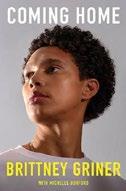
The WNBA star recounts her imprisonment by the Putin regime. “My horror begins in a land I thought I knew, on a trip I wish I hadn’t taken,” writes Griner. She had traveled to Russia before, playing basketball for the Yekaterinburg franchise of the Russian league during the WNBA’s off-season, but on this winter day in 2022, she was pulled aside at the Moscow airport and subjected to an unexpected search that turned up medically prescribed cannabis oil. As the author notes, at home in Arizona, cannabis is legal, but not in Russia. After initial interrogation—“They seemed determined to get me to admit I was a smuggler, some undercover drug lord supplying half the country”—she was bundled off to await a show trial that was months in coming. With great self-awareness, the author chronicles the differences between being Black and gay in America and in Russia. “When you’re in a system with no true justice,” she writes, “you’re also in a system with a bunch of gray areas.”
>>> pain: the loss of friends, family, and lovers to AIDS, addiction, and age. Regarding AIDS, Gordon’s frontline memoir is as valuable as Larry Kramer’s. He writes that as a caregiver, he had essentially been given carte blanche from the medical community to commit murder when the suffering became too great to bear: “We were all basically assigned euthanasia, and it was up to us to decide when to do it.” Gordon’s scars are many, but clearly he has recovered from those wounds, as from his addictions, well enough to produce a body of work that, though born in difficulty, is revelatory all the same. A superb memoir that reveals the pleasures—but far more, the pains— of the creative life.

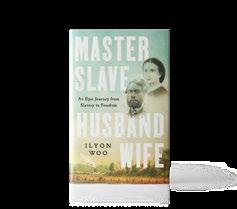


Nathan Thrall, Jonathan Eig, and Ilyon Woo are among this year’s winners.
Columbia University announced the winners of this year’s Pulitzer Prizes, which honor outstanding works of journalism, literature, and music.
The history award went to No Right to an Honest Living: The Struggles of Boston’s Black Workers in the Civil War Era by Jacqueline Jones. The nonfiction finalists were American Anarchy: The Epic Struggle Between Immigrant Radicals and the U.S. Government at the Dawn of the Twentieth Century by Michael Willrich and Continental Reckoning: The American West in the Age of Expansion by Elliott West.
Two books won in the biography category: King: A Life by Jonathan Eig and Master Slave Husband Wife: An Epic Journey From Slavery to Freedom by Ilyon Woo; the latter was previously
Prize. Tracy Daugherty was named a finalist for Larry McMurtry: A Life Cristina Rivera Garza won the memoir or autobiography prize for Liliana’s Invincible Summer: A Sister’s Search for Justice, with The Best Minds: A Story of Friendship, Madness, and the Tragedy of Good Intentions by Jonathan Rosen and The Country of the Blind: A Memoir at the End of Sight by Andrew Leland honored as finalists.
The general nonfiction winner was A Day in the Life of Abed Salama: Anatomy of a Jerusalem Tragedy by Nathan Thrall. Cobalt Red: How the Blood of the Congo Powers Our Lives by Siddharth Kara and Fire Weather: A True Story From a Hotter World by John Vaillant were the finalists.—M.S.


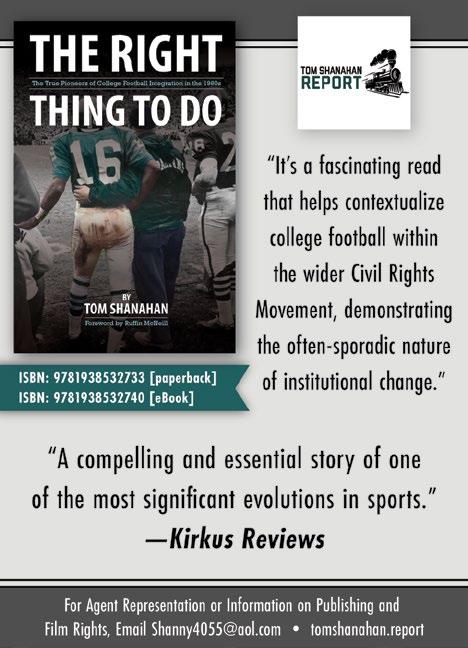
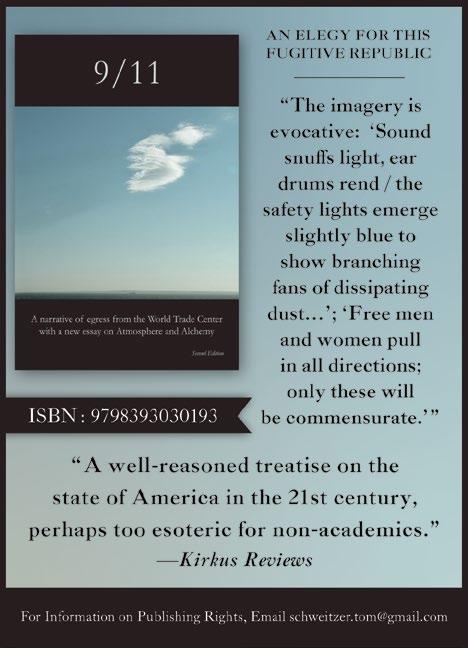


Max Boot’s book about the 40th U.S. president will hit shelves in early September. A new biography of Ronald Reagan will hit bookstore shelves later this year.
Norton will publish journalist and historian Max Boot’s Reagan: His Life and Legend late this summer, the press announced in a news release. The press describes the book as a “gripping and profoundly revisionist biography.” (Read our review on p. 52.)
Reagan, the Republican who went from movie actor to governor of California before being elected U.S. president in 1980, remains one of the most influential political figures in 20th-century American history. His eight years in the White House redefined

For another book about Ronald Reagan, visit
American conservatism, and he is still widely admired by the Right. He died in 2004 after a battle with Alzheimer’s disease.
He has been the subject of numerous biographies, including Jacob Weisberg’s Ronald Reagan, Bob Spitz’s Reagan: An American Journey, and H.W. Brands’ Reagan: The Life
Norton says that Boot’s book draws from “previously unavailable archives and new interviews (nearly 100) with Reagan’s aides and family members; many who have since passed away.”
It also says that “Boot, a one-time Republican policy advisor, offers no apologia, depicting a man with a Manichean, good-versus-evil worldview derived from his moralistic upbringing.” Reagan is scheduled for publication on Sept. 10.—M.S.

BRINGING BEN HOME
Unfortunately, despite a skilled Russian lawyer on her side, Griner had trouble getting to those gray areas, precisely because, with rising tensions between the U.S. and Russia following the invasion of Ukraine, Putin’s people seemed intent on making an example of her. Between spells in labor camps, jails, and psych wards, the author became a careful observer of the Russian penal system and its horrors. Navigating that system proved exhausting; since her release following an exchange for an imprisoned Russian arms dealer (about which the author offers a le Carré–worthy account of the encounter in Abu Dhabi), she has been suffering from PTSD. That struggle has invigorated her, though, in her determination to free other unjustly imprisoned Americans, a plea for which closes the book. A compelling, often chilling look inside today’s version of the Gulag.
Guridy, Frank Andre | Basic Books (368 pp.) $32.00 | Aug. 20, 2024 | 9781541601451

A peoples’ history of the irresistibility of stadiums as venues for political spectacle. Since the early 20th century, municipally and privately owned stadiums and indoor arenas have attracted both those involved in politics of resistance and advocates of white nationalism and “militarized patriotism.” They offer places to congregate and a captive audience, and they reinforce social
exclusions and preserve social hierarchies. Guridy, a professor of history and African American studies and the author of The Sports Revolution, spins a fascinating story of how stadiums are intertwined with political movements, the corporatization of professional sports, and reactionary forces acting in support of gender inequalities, white supremacy, and the military. After the mid-20th century, publicly owned, multipurpose stadiums served as spaces for grassroots mobilizations by Black civil rights groups, Native Americans, and gay and lesbian organizations. Throughout their history, in fact, sporting events have been sites of patriotic expression such as the singing of the national anthem and, post-9/11, admiration for the military, police, and first responders. The author educates readers on the basketball players who declared their support for the Black Lives Matter movement; the Gay Games held in San Francisco in 1982; a pro-Nazi rally at Madison Square Garden in 1939; the Wattstax ’72 concert, which celebrated Black music at Los Angeles Memorial Coliseum; Confederate-themed events at southern football stadiums; and an AIDS demonstration at Shea Stadium in 1988 by the women of ACT-UP. Guridy also considers the racial and gender diversity of sports audiences and the decline of income diversity in the 1980s as newly built stadiums became more single-purpose and heavily commercialized and tickets got more expensive. More than architecture, the author shows, stadiums are sites for both preserving and protesting the status quo.
An astute reminder that democracy depends on public spaces where people can congregate and political action can occur.
Hagerty, Barbara Bradley Riverhead (464 pp.) | $30.00 Aug. 6, 2024 | 9780593420089

A thought-provoking cultural discussion of wrongful convictions based on race. In 1987, Benjamine Spencer, a Black man, received a life sentence for a crime he did not commit: the brutal murder of Jeffrey Young, a white man, in Dallas. According to Hagerty, author of Life Reimagined and Fingerprints of God, this narrative—of an innocent person of color incarcerated without the benefits of credible witnesses, solid evidence, a competent investigation, or effective legal counsel—is disturbingly common. What makes this story distinctive, however, is the author’s keen understanding that each experience is unique to a specific individual. The concept of injustice may be monolithic, but the mechanics involved are far more complex than most people comprehend. “If Spencer’s experience could be captured in one sentence,” writes Hagerty, “it is this: Convicting an innocent person is easy; undoing the mistake is almost impossible.” The author’s narrative persuasively demonstrates how deeply embedded racism is in the fabric of the American criminal justice system. Unfortunately, few people heroically advocate for the wrongly imprisoned. In this case, the hero is Jim McCloskey, a Vietnam veteran and priest who has been instrumental in the modern innocence movement and aided Spencer in his fight for freedom until 2021, “when he became one of the rare prisoners in America who persuaded a prosecutor to take a second look at his conviction.” The description of the emancipation process is occasionally a slog, but Hagerty skillfully interweaves details of relevant past cases and historical commentary about how the justice system consistently moves the goalpost to punish
Black Americans. Thankfully, the story has a satisfying conclusion, but it’s disconcerting nonetheless. Hagerty’s work will appeal to readers of Bryan Stevenson’s Just Mercy and similar books.
A stirring account of a legal travesty that effectively reveals a rotten core within the justice system.
Hari, Johann | Crown (320 pp.)
$30.00 | May 7, 2024 | 9780593728635

A current overview of the drugs available for weight loss.
Journalist Hari, author of Chasing the Scream and Lost Connections, begins with a vivid description of his fascination with junk food, along with the oft-told story of the food industry’s post–World War II breakthrough in manufacturing calorie-dense, fatty, salty, chemically enhanced edible products, many not found in nature but irresistible to consumers. “The average American adult weighs twenty-three pounds more than in 1960,” writes the author, “and more than 70 percent of all Americans are either overweight or obese.” Unfortunately, diets rarely work. Weight-loss drugs, touted for decades, were mostly worthless; the few that worked turned out to be toxic. Following the history lesson, Hari reveals that the wildly popular drugs—Ozempic, Mounjaro, Wegovy— are effective. Six months after starting Ozempic, the author was thinner, fitter, and more confident, but also uneasy. He felt full soon after beginning a meal, food lacked its usual appeal, and he felt nauseous more than before. As he relates, 5% to 10% of users stop because the side effects aren’t worth it. However, the drugs have been treating diabetes for 18 years, so the odds of a patient developing a serious side effect seem small. In addition to his personal story, Hari chronicles his travels around the world interviewing users,
researchers, physicians, and the drug’s developers, pausing for thoughtful essays on why we eat and overeat, why dieting almost never works, and how the world may change when these drugs become affordable after the patent expires in 2032. In a mildly optimistic conclusion, Hari argues that our first priority should be to eliminate the superprocessed quasi-foods that we can’t resist—unlikely, of course, so the author offers a digestible survey of the possibilities of pharmaceuticals. A sober exploration of weight-loss pills that actually work.
Heaney, Seamus | Ed. by Christopher Reid Farrar, Straus and Giroux (848 pp.) | $40.00 Sept. 10, 2024 | 9780374185299

The great Irish poet’s letters create a buoyant and complex portrait of a life in art. Selected by Reid from Heaney’s voluminous correspondence, these letters span his professional and personal relationships. Addressed to editors, close friends, fellow poets (Robert Lowell, Ted Hughes, and Elizabeth Bishop), and others, the work is by turns funny, serious, and considerate; readers will marvel at the consistent compassion and care Heaney showed his varied recipients. In a letter to Hughes about Hughes’ new book, Heaney writes, “I feel the shape of the story was a plough that got deep into the ground of your gift and opened it marvellously. The abundance of the thing from line to line is a blessing.” On another occasion, he writes playfully to a friend, “Suddenly my patter halts. I have fathomed the pit of patter. I grow less fit and fatter. Am I fit to be a father? The farther this fares, the more futile it feels.” Via these lively and kind musings, readers gain a satisfying sense of Heaney’s life, including early financial stress (“at my back I always hear the Bank of Ireland hurrying near,” he wrote in 1977), his literary confidence, and the status of his
many works in progress, passages that provide a deeper understanding of his poetry. There’s surprises, as well—e.g., a letter in verse to the editors of “the new Penguin of British verse,” in which he drives home his Irish identity: “But don’t be surprised / if I demure, for, be advised / “My passport’s green. / No glass of ours was ever raised / To toast The Queen.” In these warm, compassionate, and humorous entries, admirers of Heaney will find much to learn and enjoy—even if general readers may get lost in the literary thickets.
An anthology full of insight and delight.
Hellier, Odile | Seven Stories (320 pp.) $22.95 paper | Aug. 6, 2024 | 9781644213797

Tales from one of the world’s most recognizable bookstores. From July 1982 to June 16, 2012, the Village Voice bookstore in Paris, which its founder Hellier named in homage to New York’s “emblematic newsweekly,” was the center of a community of writers and artists, a meeting place for “third wave” American expatriates, and a venue for readings and book signings. Referring to the many audiotapes she made of author events, Hellier creates a vivid, abundantly populated narrative of the bookstore’s history, in chapters grouped loosely by theme, such as the Holocaust, exile, Native American poetry, African American writers, writers from South Africa, Australia, and the UK. With brief biographical cameos for each author and photographs from author events, the chronicle reads like a who’s who of postwar Anglophone literature. Among the featured writers are James Baldwin; David Sedaris, who gave five readings; Canadians Mavis Gallant, who writes in English, and Nancy Huston, who writes exclusively in French; Diane Johnson, who set several
novels in contemporary France; Don DeLillo, Lawrence Ferlinghetti, and Allen Ginsberg. Excerpts from audience questions give a sense of immediacy. One attendee, for example, asked Jay McInerney about the proliferation of drugs in his novels; another, about the rising tide of political correctness; Richard Ford talked about the relationship between writer and reader; Grace Paley was asked to comment about racism and sexism in America. In 2002, to Hellier’s delight, Susan Sontag asked to give a reading from her new book of essays. She arrived, not surprisingly, to a packed house. Toni Morrison, in France to promote the French translation of Beloved, had time on her book tour for just a signing. Regretfully, Amazon and the proliferation of online shopping forced Hellier to close the shop, but its spirit lives on in her memoir. A pleasant array of warm recollections for bibliophiles.
Jackson, Rob | Scribner (304 pp.)
$29.99 | July 30, 2024 | 9781668023266

The chair of the Global Carbon Project looks at the hard—but not impossible—work needed to curb climate change. At first glance, the figures are discouraging: Global emissions of greenhouse gases continue apace, and while some wealthy nations are moving in the right direction, the aspiring ones have good reason to wonder why they can’t have a slice of the wealth fossil fuels can generate. Stanford environmental scientist Jackson has a simple answer followed by a much more complex program: “The cheapest, safest, and only sure path to a safe climate starts with slashing emissions.” In this, he demonstrates, each of us can do our part. For instance, methane is a neglected part of the emissions portfolio, so to speak. “Restoring methane to
preindustrial levels would save 0.5°C of warming and could happen in your lifetime—and mine,” writes Jackson. The trick there is to eat fewer hamburgers and steaks, for cows are major methane emitters on their own, and cows also consume huge amounts of water, more than half the flow of the endangered Colorado River. The author also suggests that we replace gas appliances with electrical ones, which are more environmentally friendly; bike or take the bus instead of driving to work; and make better choices about food. Many readers already know this information, but Jackson takes his lucid argument further, examining advances in such things as carbon-neutral steel and livestock feed that inhibits the production of methane. At the governmental level, he points out Canada’s requirement of zero-emission water heaters in new construction, legislation that, south of the border, red American states have blocked. Every advance may be incremental, but, as one interlocutor tells Jackson, “incrementally better is still better.”
A useful handbook for reducing one’s carbon footprint and encouraging neighbors and communities to do the same.
Janetti, Gary | Harper/HarperCollins (224 pp.)
$27.99 | July 9, 2024 | 9780063329744
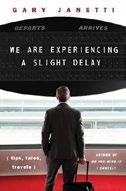
A bestselling author and TV writer muses on his experiences with travel and food.
In his latest book, Janetti, a producer for Family Guy and the author of Do You Mind If I Cancel? and Start Without Me, offers a compendium of traveler’s tales and tips along with wry musings on how professional success changed the way he traveled. His earliest trips took place on Cunard Line cruise ships because his father was a
salesman who was able to get free tickets for the family to travel in “steerage.” On one such trip, the author met a college student whose family was traveling (and also eating) first class. The experience changed him, he writes. From that point on, he “wanted in” to what he imagined were the glorious excesses of “Caligula’s Rome.” Janetti would only see that world after gaining affluence in adulthood. In the opening essay, he describes his trip to a wellness retreat to Italy, despite aversions to eating “gluten-free meals with…strangers dressed in ill-fitting spandex.” In a self-mocking aside, Janetti observes that in middle-class Queens, wellness “was what you were when you weren’t sick. It was the baseline.” Now it has become aspirational, “like the peak of Everest.” In another essay, Janetti recounts an excursion to a Noma restaurant pop-up in Mexico that featured a 20-course exotic-foods extravaganza, while another references exclusive treehouse dining in Rio de Janeiro. The author concludes with travel do’s and dont’s, most of which focus on being generous to those who do the work of making travel pleasant for travelers (and especially those with means)—e.g., servers, housekeepers, and concierge staff members. Janetti’s fans will no doubt appreciate his dry, self-deprecating wit, but some readers may take issue with the unintentional classism that underlies some of the author’s observations. Mostly entertaining but at times mildly discordant.
Jortner, Adam | Oxford Univ. (336 pp.)
$35.00 | Aug. 30, 2024 | 9780197536865

Jewish Americans in the era of the American Revolution. Jortner, a professor of history and the author of The Gods of Prophetstown, provides a
meticulously detailed account of Jewish history leading up to, during, and in the wake of the revolution, noting how the war changed the political and cultural landscape for Jews in the new U.S., primarily through unquestioned citizenship and broadened levels of freedom. The author begins by explaining the early history of Jews in North America and the Caribbean, “a broad array of Jews moving around in tiny numbers in the colonial world.” While usually safer than their counterparts in Europe, these small communities were still subject to grave mistreatment. “The patriot Jews,” as Jortner calls them, were not an exceptional case during the war; instead, they supported and fought for the federal cause as equals alongside Christian colonists. “Jewish patriotism and Jewish service were real,” writes the author, and after the war, they cemented their roles as American citizens. American Jews would not be subjected to the European model of subjugation and separation any longer. Just as the civic reality for Jews in the new nation changed, the ideals of the revolution would transform Jewish religious life as well. “Average Jews challenged and changed synagogue rules,” writes Jortner, “and they did so in the language of the revolution.”
Democracy became a crucial new aspect of synagogue life, a fact that would pave the way for the reform movements and other developments late in the 19th century. “The new synagogue constitutions largely placed institutional power in the hands of the congregation,” he writes. Jortner’s research is unquestionably exhaustive, and the text occasionally overflows with biographical vignettes, which will appeal to readers with an interest in Jewish studies and early American history.
An intriguing addition to the canon of Jewish history.

A fascinating account of pastoralism in the Balkans.ANIMA
Kassabova, Kapka | Graywolf (400 pp.) | $20.00 paper | Aug. 20, 2024 | 9781644453001

A fascinating account of pastoralism in the Balkans. In her fourth book set in a region unknown to many readers, Kassabova examines the threats facing one of the few remaining nomadic peoples in modernity: the Karakachans, “Greek speakers of mysterious origin” whose homeland is “impossible to know.”
Moving their animals in search of fresh pasture, they have spent centuries breeding ancient races of sheep and dogs. Today, amid the tumult of climate change and political conflicts, their way of life is threatened. “Thirty years ago,” writes the author, “it had been the Karakachan dog and sheep on the brink of extinction. Now it was the shepherd.” In the modern world, their nomadic lifestyles are very difficult to maintain. Shepherds are completely isolated, living alone in unheated shacks and sleeping with the sheep in mountain storms (“You stand in the rain, plastic sheet draped over you like a hut and you wait”). As industrialization and bureaucracy have increased, the production of artisan goods is also under threat. With the same elegantly spare prose that characterized her previous books, Kassabova brings readers to a place where everything “was attached to rock, hewn from rock, reclaimed from rock or possessed the qualities of rock.” The stoic people she profiles seem like they might be hewn from rock, as well. Then there’s the ancient Karakachan dogs: “Their eyes were human. They walked with the loose
gait of wolves and the puppies were like bear cubs, with expressions so knowing they stopped you in your tracks and made you stare as if into the eyes of an old friend. They were aloof and conscious of it.” At its heart, this is an emotional story about the bonds between humans, animals, and the land.
A lush ode to “one of the oldest nomadic peoples to have entered modernity with their animals.”
Katz, Jesse | Astra House (320 pp.)
$28.00 | July 16, 2024 | 9781662601736

A veteran Los Angeles journalist delivers a searing account of gang violence and its consequences.
Katz, the author of The Opposite Field, engagingly delineates the story of Giovanni Macedo, who, like so many immigrant kids in L.A., didn’t have much direction in life, swept into MacArthur Park as part of “a diaspora hastened by the US government’s geopolitical meddling and the American people’s appetite for cheap and tenacious labor.” By the early 1980s, that area, writes Katz, “had become an immigrant crossroads: America’s new Ellis Island.” Macedo joined the gang that controlled his neighborhood, a fearsome outfit called the Columbia Lil Cycos— part of a still larger and surprisingly well-organized syndicate with perhaps 20,000 members in Southern California alone, as well as thousands more in “at least” 120 cities in the U.S. and a
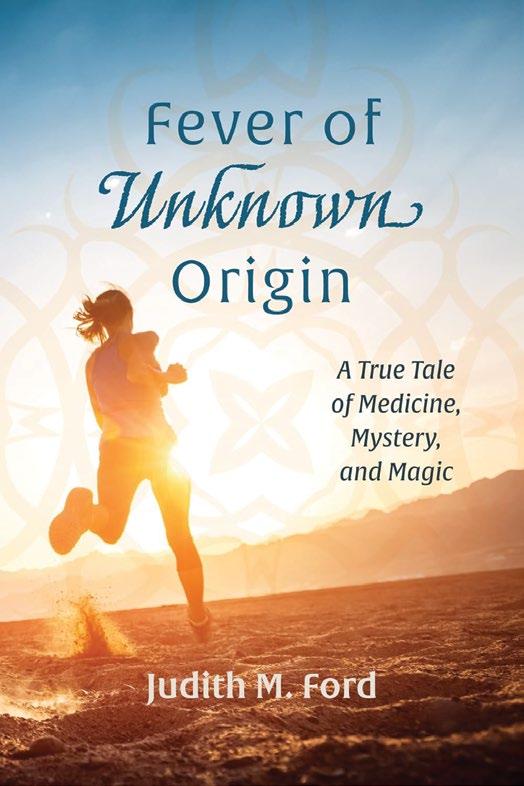



ISBN: 978-1-6667-9901-9 [hardcover]
ISBN: 978-1-6667-3838-4 [paperback]
 —Susannah Waters, Author of Cold Comfort
—Susannah Waters, Author of Cold Comfort
ISBN: 978-1-6667-9902-6 [eBook] For Agent Representation and Information on Film Rights, Email pinkeggs@gmail.com • judithford.com “Fever of Unknown Origin tells the moving story of one woman's battle with a debilitating illness. Ford leads us through the bewildering ups and downs of this struggle, culminating in a recovery as richly surprising and nuanced as the illness itself, as well as a deeper understanding of what it means to be fully alive and present in this world. An inspiring read.”
“Debut author Ford presents a memoir of illness and death...A touching consideration of the frighteningly precarious nature of good health.” —Kirkus Reviews (starred review)

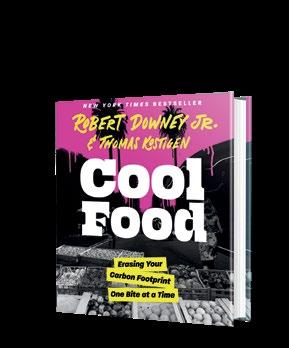
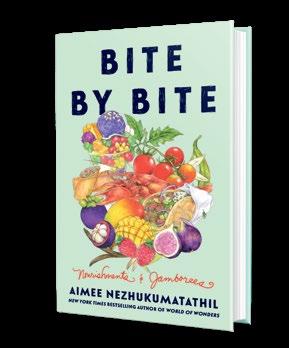

 Robert Downey Jr.
Jane Bertch
Robert Downey Jr.
Jane Bertch

handful of Latin American nations. Macedo began as a gofer of sorts in an enterprise designed to extort protection-racket “rent”—thus the title—from the street vendors of the neighborhood; if he had killed a reluctant customer, he would have graduated to a full collector. But he botched the job, becoming a target himself for a dreadful mistake made along the way. Katz’s narrative serves to explain why so few gang crimes are ever punished, thanks to loyal foot soldiers and a culture “where survival has long depended on forgetfulness.” There are countless ironies throughout, not least that the city government broke the gangs’ power in one small corner of the world by regulating street vending—so that now, with onerous business licenses, “the vendors still had to pay to be policed.” Macedo’s grim story, expertly documented by Katz, cries for a documentary series to follow his fortunes as, after years in prison, he strives for redemption.
A masterful work of true crime—and, to be sure, true punishment.
Krimstein, Ken | Bloomsbury (272 pp.)
$28.99 | Aug. 20, 2024 | 9781635579536

A graphic biography of the intersection of Einstein and Kafka in Prague during 1911-1912, a fertile period for both men. Writer and cartoonist Krimstein, author of The Three Escapes of Hannah Arendt, When I
Grow Up, and Kvetch as Kvetch Can, engagingly chronicles a significant time period for both cultural giants. When the year began, neither Einstein nor Kafka was the legendary figure he would become. As the author writes, Einstein was “a financially strapped 32-year-old father of three who’s had to drag his family here to double his salary, save his marriage, and, most important, to salvage his foundering scientific legacy.” Meanwhile, Kafka was “far from the cockroach-crowned, hooded-eyed ‘prophet of modern literature’ whose very name has become a byword for mechanized ennui and the robotic futility of modern life.” In Prague, Einstein began to understand that treating space as simple emptiness didn’t work, but allowing it physical qualities, such as the ability to bend and twist, opened up dazzling possibilities— although this theory required that time become a dimension as real as length, height, and depth. All this made matters vastly more complicated—the mathematics were daunting, and a mathematician friend later helped him with the equations—so he considered this period as extraordinarily stressful. Readers looking for an explanation of relativity should consult Krimstein’s superb, opinionated bibliography; the lively timeline is also helpful. Euclid makes an appearance to denounce adding a dimension to his immortal three. Kafka does not receive as much attention as Einstein, but mostly lurks about wondering if he and Einstein are simpatico. Perhaps to introduce conflict, Krimstein gives a prominent role to Max Abraham, a rare contemporary who rejected relativity. In reality, almost every physicist who read his papers thought he was on to something. A fun, amusing fantasy about an important year in two icons’ lives.
La Tray, Chris | Milkweed (256 pp.) | $30.00 Aug. 20, 2024 | 9781571313980
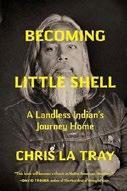
The poet laureate of Montana tells the story of embracing his identity as a member of the Little Shell Tribe of Chippewa Indians.
La Tray, a Métis storyteller, grew up with a strong curiosity about Indigenous culture, captivated by his grandmother’s stories about their family history, but he was also raised by a father who did not want to acknowledge their Indigeneity. “Suggesting my dad was Native made him angry. I could never understand why. I was the opposite,” writes the author. When his father died in 2014, he left behind “a lifetime of questions about who he was and where he came from. No, who we are, where we come from.” Without his father to ask, La Tray set out to answer questions about his family’s heritage and that of the tribe in which he would eventually enroll: the Little Shell Tribe of Chippewa Indians. The resulting narrative is richly layered, carried across time and the vast state of Montana by the author’s unique voice and masterful storytelling. Building off the work of those who came before him, such as historian and folklorist Nicholas Vrooman, La Tray weaves a history of his tribe that blooms into the present day. He movingly demonstrates how far they’ve come from the loss of their home in the early days of settler colonialism, and he makes important connections between the landless Little Shell and the many groups of refugees across the world today. “I’m here writing to urge you, anyone who has fought against and continues to fight against erasure, oppression, genocide, and hatred, to be proud,” he writes. “Look at what we Little Shell have
done.” La Tray’s pride and conviction will have readers eager not only to learn more, but to take action.
A brilliant contribution to the canon of Native American literature.
Levings, Tia | St. Martin’s (304 pp.)
$27.00 | Aug. 6, 2024 | 9781250288288
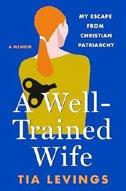
A compelling, often disturbing account of one woman’s life in Christian fundamentalism. After moving from Michigan to Florida, Levings’ mother thought joining a church might help the family acclimate to their new surroundings. The author, then a budding adolescent, was leery of the Baptist megachurch but eventually acquiesced. From there, the author progressed through youth group, summer camp, and a Christian school run by a Billy Graham–type figure. These influences provided a steady, unified stream of fundamentalist doctrine that led the author to blow past numerous red flags and marry her abusive boyfriend at age 19. Believing that his behavior was partly caused by her not being submissive enough, she tried to appease him by yielding more fully to his demands. Instead, it further fueled his tyrannical view of biblical patriarchy. When Levings failed to meet his expectations, he spanked her with a belt and mandated sex as a necessary part of the discipline process. “He wanted me to call him ‘my lord,’” she writes. “Wear only dresses. Cover my head with a scarf to show submission and modesty.” Meanwhile, she writes, he “turned to the men’s forums where husbands could get advice on how to make their wives cooperate.” Eventually, Levings discovered a virtual community of liberal-leaning, art-loving Christian women who, among others, provided a safety net when her marriage
came to a cataclysmic head. The author pulls no punches in recounting nearly 15 years of oppression and abuse, painting a visceral portrait of her then-monochromatic world with bold strokes of linguistic color and sensory detail. This book stands out among other narratives about overcoming religious trauma in that it peels back the layers of Christian fundamentalism, exposing why it’s so attractive to people hungry for assurance and certainty.
A devastatingly triumphant story that will be a beacon for many women who suffer in silence.
Marris, Laura | Graywolf (208 pp.)
$18.00 paper | Aug. 6, 2024 | 9781644452943
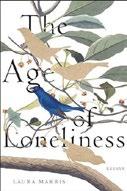
A writer and translator explores the relationship between human presence and place.
Some call the current era the Anthropocene, emphasizing the way humans have altered the planet, but others call it the Eremocene, or “the Age of Loneliness.” For Marris, this second name is especially apt because of all the manmade ecological losses that are occurring globally on a daily basis. In the essay “Cancerine,” she observes that horseshoe crabs, once prized for the nitrogen-rich shells farmers use as fertilizer and later for the blood scientists use to test for vaccine safety, have slowly declined in Long Island Sound. “Is it possible,” she asks, “to pinpoint the moment an ecosystem becomes a stage set in a vast passion play among people, and if so, can this anthropocentrism be reversed?” As we manage to carry on in a hostile world, while the living things that have helped us survive go extinct, we have all grown increasingly lonely. The Earth itself—the air, the water, the land—also bears the brutal mark of human predation. Airplanes compete for space with birds in the sky, “ingesting” them while most air travelers, isolated from this truth in lonely,
human-centric worlds, remain largely unaware of the damage caused. All over the world, natural spaces, like the once dangerously polluted Love Canal area near where the author lives, carry traces of old toxicities. Yet as Marris comes to understand in her essay “The Echo,” despite being mostly abandoned for the suffering it caused, the land—which is gradually being restored—is still worthwhile not just for the hope of planetary healing and human redemption it offers, but also for the promise of home and the “closeness [and] company” of others, which are fundamental to living a meaningful life in a changing world. A satisfyingly complex and profound collection.
May, Todd | Crown (176 pp.) | $24.00 Aug. 6, 2024 | 9780593798720

A professor of philosophy reflects on whether or not humanity should continue to exist. The early 21st century has been defined by manmade global crises—ecological, political, and economic—that show few signs of abating. In the face of so much suffering and devastation, May, author of A Decent Life, A Fragile Life, and other books of philosophy, dares to ask a disturbing question: Would the end of humanity be a good thing for the planet? He searches for answers in moral philosophy. Some thinkers, including anti-natalist David Benatar, believe that the inevitability of death and suffering cancels out the pleasures of existence, a position against which May argues: “Most humans have lives with more happiness than suffering.” More optimistic philosophers like Sarah Buss believe that though not inherently good, human beings still bring value to the world through the sentience that allows them to appreciate things like art “that are good in themselves.” In other words,
“human beings are valuable, but our value is only instrumental.” The stubborn facts remain that happiness is not equitably distributed and that humans, despite their ability to engage with and create the higher goods of “beauty [and] truth,” have ravaged the Earth, caused the suffering of other living things— especially the farm animals that sustain them—and created social inequalities that have brought misery to other humans. May posits that population reduction would help the planet and balance the moral scales, as would ending deforestation of rainforests and putting an end to factory farming. Otherwise, “the world might be better off without us,” no matter how brilliant the cultures we bring into existence. Thoughtful and accessible, May’s book will appeal to anyone seeking ethical insights into the nature and impact of human life in the modern world.
A provocative book for readers willing to engage.
McHarris, Philip V. | Legacy Lit/ Hachette (320 pp.) | $30.00 July 16, 2024 | 9781538725665
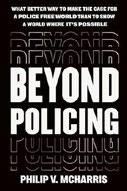
A Black scholar imagines a world without police. Growing up in the Bronx, McHarris learned early in life that, despite their purported responsibility to promote public safety, the police were actually a danger to him and his Black friends and family. “I’ve been trying to avoid the police for as long as I can remember,” he writes. This lifelong tendency to avoid police, as well as his extensive research for his dissertation for his doctorate in sociology and African American studies at Yale, led to his ability to imagine—and his commitment to advocate for—a society without police. McHarris begins his abolitionist argument with a short history of the American police force, connecting its origins to slave patrols, anti-Asian and
anti-Mexican sentiments, and the genocide of Indigenous peoples. After thoroughly uncovering this deplorable history, the author traces the evolution of the police into its modern form, which evolved from the Reagan era war on drugs and continued with then-senator Biden’s racist 1994 crime act. Crucially, McHarris describes these developments alongside alternatives to policing, ranging from modern movements in Miami, Minneapolis, and Philadelphia to historical movements like the “copwatch patrols” instituted by the Black Panthers. In the final section of the book, McHarris gets imaginative about what it might be like to live in a world without police, emphasizing that, in every community, safety is contingent on an equitable distribution of resources. “It’s fundamentally a question of prioritizing lives and people over property and capital,” he writes. The author’s impressive expertise is matched only by his passion for his subject and commitment to radical imagination. While the text is occasionally repetitive, this is a compassionate, comprehensive, and practical guide to envisioning and creating a world free from the oppression and violence caused by police. A deeply researched, profoundly optimistic vision for a police-free future.
McMeekin, Sean | Basic Books (544 pp.)
$35.00 | Sept. 10, 2024 | 9781541601963

A wide-ranging examination of how the concept of communism was a key driver of the conflicts of the 20th century—and remains a significant force.
McMeekin, author of such acclaimed books as Stalin’s War, July 1914, and The Ottoman Endgame, traces the arc of communism through early Marxist theory to the rise of the Soviet Union, followed by China and a series of smaller entities. The ideological path
ran from utopian idealism to state control and then totalitarianism, with the most awful expression being the bloody Year Zero experiment in Cambodia, in which communism “was reduced to its essentials, as a negation of everything existing, a war of the young on the old, a social leveling of society down to equality in abject poverty and misery.” McMeekin identifies the late 1970s as the high-water mark, but the rot of corruption and stagnation had set in, and the collapse was remarkably quick. The author is unquestionably knowledgeable about his subject, but much of this information has been covered in such books as Richard Pipes’ Communism and Archie Brown’s The Rise and Fall of Communism, among numerous others. McMeekin provides more focused discussions of individual nations—especially China—that have abandoned the central tenets while retaining the mechanisms of state control. He asserts that these countries are still communist, but he is selective with the facts to fit his argument. In the closing pages, he notes the rise of authoritarian thinking in democratic countries, with “modern-day thought commissars.” “Far from dead,” he writes, “Communism as a governing template seems only to be getting started,” which feels like a definitional sleight of hand. Perhaps the author will explore this subject further in future work, but the current book is a look backward down a well-traveled road. McMeekin assembles an impressive body of research but struggles to find a new perspective.
Milholland, Lola | Spiegel & Grau (320 pp.) $28.00 | Aug. 6, 2024 | 9781954118577

A food-business owner reflects with humor and affection on growing up and making a life in the counterculture of Portland, Oregon.
In her first book, Milholland reflects on the many years she has spent living in the family home, the Holman House: first with her parents and older brother and an assortment of other temporary residents, including a series of exchange students, and now with her “sweetheart” Corey, her brother Zak, and a rotating cast of friends, most of them involved in the stop-motion animation industry or visual arts. “Why was group living considered so uncouth? It seemed very practical,” she muses. To the author’s credit, she isn’t too starry-eyed to ignore the economic implications of group living. She makes it clear that as much as she enjoys communal suppers and the chance to hang out with her friends and relatives nearly every day, part of their motivation for sticking together is that in an expensive housing market like Portland, they wouldn’t be able to afford living on their own. Milholland applies the same clear eye to the land trust in Wisconsin, where her mother now lives, and the community where her aunt and uncle, committed Quakers and pacifist protestors, live, in which members reside in their own homes while coming together in a meetinghouse for frequent meals and get-togethers. Starting with idealistic aspirations, the community has now “become an exclusive retirement community for well-to-do hippies.” As the title suggests, the book includes recipes assembled from the cooking projects of those the author loves. Most of these are on the challenging side, involving ingredients like galangal, makrut lime leaves, and maitake mushrooms, and laced with warnings such as, “Burned chilies will create tear gas in your kitchen, so be watchful.”
An endearingly rambling look at a mildly alternative lifestyle.
Milton, Giles | Henry Holt (336 pp.)
$29.99 | Sept. 3, 2024 | 9781250247582
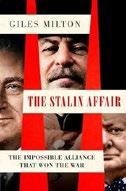
Politics makes strange bedfellows, and war makes even stranger ones.
On the huge canvas of World War II, the alliance between the Soviet Union and the British-U.S. partnership was crucial, but it came about only through a combination of diplomacy and desperation. So argues prolific historian Milton, author of Checkmate in Berlin, Churchill’s Ministry of Ungentlemanly Warfare, and other notable books of history. Churchill, in particular, had punctuated his career with bellicose criticism of the Soviet Union and especially Stalin, but when the Nazi forces invaded, Churchill had no doubt that Stalin was the lesser of two evils and should be supported. Persuading people in his government was not easy, especially as Britain was dependent on supplies from the U.S., and passing some on to Russia added to the pressure. In the U.S., many favored isolationism, and others took the view that the two dictators should be allowed to fight each other to the death. Then Japan attacked Pearl Harbor, and Hitler declared war on the U.S. At that point, staying out of the conflict was no longer possible. Johnson introduces a complex cast of characters, with Averell Harriman, a business tycoon and confidant of Franklin Roosevelt, in a central role as liaison with Churchill and later the Soviet government. Stalin could be friendly or belligerent, depending on his
Mithers, Carol Lynn | Counterpoint (304 pp.) $27.00 | Aug. 20, 2024 | 9781640095984

The fascinating story of the woman working to address the “problem pet population” in Los Angeles. In downtown L.A., Lori Weise is known as the Dog Lady, but her work is unlike the standard stories of Humane Society and pet adoption features. Mithers introduces Weise as a child, with her own beloved pet and personal suffering, before following her decades of work in Skid Row, South L.A., and Watts. Weise’s mission, which she calls the Downtown Dog Rescue, is to help poor and unhoused individuals keep and properly care for their pets, even as they battle demons like addiction, PTSD, and omnipresent violence. The author composes her vivid portrait from a series of stories about the people and animals Weise has helped, each indicative of how deeply a person’s well-being is connected to the well-being of their pets. Weise’s work has dovetailed with initiatives like the rise of no-kill shelters, the demonization of pit bulls, and the promotion of “adopt don’t shop” by celebrities. Mithers dutifully outlines these
>>> mood of the day, and he and Churchill butted heads in several of their meetings. Nevertheless, the alliance held together. “Against all the odds, it had won the war for the Allies,” writes Milton. “But it was unable to survive the peace.” The author ably navigates this complicated narrative, and readers with an interest in political and military history will find it to be an engaging, colorful read. Milton mixes personal details with historical sweep to tell a significant tale.
Kirkus Star




















Sarah Ditum’s book follows nine women celebrities in the 2000s.
Paris Hilton is bringing Sarah Ditum’s Toxic: Women, Fame, and the Tabloid 2000s to the small screen.
Hilton’s entertainment company 11:11 Media is
developing a docuseries based on Ditum’s book, Variety reports.
Toxic, published in January by Abrams, follows nine women who were celebrities in the 2000s and popular targets for tabloid journalists and internet trolls. The stars featured in the book include socialite Hilton, singer Britney Spears, actor Lindsay Lohan, and wrestler Chyna.
In a starred review, a critic for Kirkus praised the book as “top-notch pop-culture commentary—a smart and entertaining look at female celebrity during a decade of immense change.”
Ditum will participate in the adaptation. “Toxic was always intended to put the women I write about back at the heart of their own stories,” she said. “Working with Paris and her team on bringing this book to TV feels like a kind of homecoming for the project, and I’m incredibly excited for what they’ll bring to the next stage of Toxic.”
And Hilton told Variety, “When I discovered Toxic, I was immediately taken by the

depth of Sarah’s dedication, research and writing. Sarah’s work inspired me to envision Toxic as a documentary series where we can provide a platform for similar stories of those who had to navigate intense public scrutiny, so they can reclaim their narrative from a time when they had little control.”—M.S.


Bookshelves groan with accounts of the iconic national leaders of World War II, but this is a worthy addition.
THE STRATEGISTS
movements and their problems, providing eye-opening financial details, revelations of discriminatory adoption policies, and a jaw-dropping account of pet hoarders. As Weise has discovered, the biggest problem with the usual rescue paradigm, laced with judgment, “was neither a pet problem nor a people problem. It was a poverty problem.” The Dog Lady’s revolutionary power stems from leaning into the intersection of comprehensive social justice work and pet rescue efforts, and the author draws considerable narrative force from following her subject into that intersection. The text shows both Mithers and Weise confronting systemic issues like racism, housing costs, and the failure of social safety nets, simultaneously stirring outrage, stimulating compassion, and suggesting a better understanding of how to help people living in poverty care for the pets they love.
An engrossing, inspiring read for lovers of dogs and humans alike.
Morais, Fernando | Trans. by Brian Mier | Verso (320 pp.) | $34.95 Aug. 20, 2024 | 9781804294925
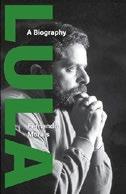
A hagiography of the current president of Brazil, Luis Inácio Lula da Silva (b. 1945).
In April 2018, under the massive anti-corruption campaign called Operation Car Wash, waged by former federal judge Sergio Fernando Moro, “Lula” was given hours to turn himself
in. Ultimately, he was imprisoned for 581 days—thus prohibited from running in that year’s presidential election, won by Jair Bolsonaro—before being released on November 8, 2019, following hacker revelations released by Intercept editor Glenn Greenwald proving that Moro’s allegations were false. After recounting this saga, Brazilian journalist Morais moves back in time to 1980, when Lula, then head of Metalworkers’ Union of São Bernardo do Campo and Diadema, organized a strike and started the Workers’ Party. During this time of the military dictatorship, strike leaders were arrested and tried in court. The author then delves further back, to Lula’s poverty-stricken childhood; unhappy in her marriage, his mother moved with her children up the coast to São Paulo in 1955, when Lula was 10. Trained as a lathe mechanic, he worked at Villares Metals for nearly two decades, proud that he was the first of his mother’s sons to have a fruitful profession. Becoming gradually involved in union activities, Lula complained that there were too few working-class representatives in congress. Trounced as a candidate for state governor, in 1985, he visited Fidel Castro and was inspired to run for national assembly—and triumphed. “At the time,” Lula garnered “more votes than any parliamentary candidate had ever received in the history of Brazil.” After several attempts, he first won the presidency in 2002 and was reelected in 2006. In the epilogue, the author describes his relationship with Lula and promises a second volume. By then, many readers will have tired of this zealous biographical portrait.
A detail-heavy, adoring portrait that may disorient non-Brazilian readers.
O’Brien, Phillips Payson | Dutton (528 pp.) $30.00 | Aug. 27, 2024 | 9781524746483
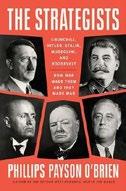
Bookshelves groan with accounts of the iconic national leaders of World War II, but this is a worthy addition.
O’Brien, author of The Second Most Powerful Man in the World, offers an exploration of grand strategy: decisions by a supreme authority for actions beyond the command of military forces. Readers will learn more from stand-alone biographies of the author’s five subjects, but he provides solid overviews of their decision-making processes. All maintained that they intended to eschew the mistakes made by leaders during World War I. However, despite innumerable proclamations that “what they were doing was in the best interests of their people,” notes the author, “they were mostly doing what they wanted to do, and used the idea of national interest to justify their decisions, not to make them.” Hitler’s hyperaggressive strategy was positively suicidal. Wars are won with superior resources, which Germany lacked, and logistics, which Hitler ignored. Victories against weaker opponents (Poland, France) unhinged him, and his disastrous micromanagement of battlefield operations continued to the infamous end. Stalin, a thuggish figure who rose to power by making himself indispensable to Lenin and murdering his rivals, also micromanaged his army after the 1941 German invasion, with equally disastrous results. Unlike Hitler, however, he learned from his mistakes and stepped back, allowing for “greater collective decision-making.” Perhaps the most pathetic grand strategist was Mussolini, who shared Hitler’s charisma and brutal nature but failed miserably in his effort to make Italy a great power. “After December 7,
1941,” writes O’Brien, “neither Franklin Roosevelt nor Winston Churchill had any doubts about the outcome” of the war. Having learned the right lessons, they concentrated on technology and machines, avoided massive infantry engagements, and emphasized control of the air and seas to ensure that their vastly superior resources would swamp the enemy. Familiar stories but still compelling.
Parker, Matt | Riverhead (336 pp.)
$30.00 | Aug. 20, 2024 | 9780593418109
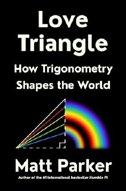
A thorough explanation of triangles by the popular Australian mathematician, comedian, and bestselling author of Humble Pi. “Triangles are everything,” Parker writes in the introduction, “and everything is triangles.” The following 10 chapters bear titles like “Going the Distance,” “Getting Triggy With It,” and “Making Waves.” Within his exploratory and everyday applications of triangles, the author describes rounding corners on a racetrack (“the bike did lean just over 45° from vertical. Which means I can officially name my new motorbike gang Hell’s Angles”), playing pool (“it’s hard to find a more common or more practical use of angles and geometry”), and looking at rainbows, which, he explains, are not arches but circles. Parker delineates myriad laws and patterns, and history as well as recent news. One example of the latter is the March 2023 discovery of the first aperiodic monotile, dubbed “the Hat.” “Given this shape had been eluding the entire mathematics community for over half a century,” Parker writes, “nobody expected it to be so straightforward.” The author has a gift for making somewhat tedious topics not only comprehensible and absorbing, but also great fun. As one example, he refers to
Pythagoras (“the granddaddy of triangle maths”) as “the Beyoncé of maths” because “who cares about his last name.” Parker’s tireless enthusiasm, light touch, and inviting manner make for a reading experience akin to a visit to Epcot Center, led by a guide in possession of childlike wonder in addition to adult acumen and humor. The author never gets mired in the weeds, even as he manages to cover a tremendous amount of detailed information, aided by illustrations that feature appealing captions running the gamut from simple to complex.
A rare book about math sure to make you smile, despite your feelings about the subject. Once again, Parker measures up.
Piketty, Thomas | Trans. by Willard Wood | Other Press (96 pp.) | $23.99 Sept. 3, 2024 | 9781635424560

A review of global inequalities of income and wealth and the factors that might reduce them.
In this slim volume, based on a 2022 lecture at the Musée du Quai Branly—Jacques Chirac in Paris, the acclaimed French economist Piketty, best known for Capital in the Twenty-First Century, draws on previous research and writings to sketch his understanding of the political underpinnings of social and economic inequality and its variations historically and across countries. Although the data show a “tendency toward greater social equality” since the late 18th century, a slowing of that trend has occurred since the late 20th century. These movements are neither inevitable nor simply a matter of personal talents or economics. Rather, reductions in inequality directly relate to political culture and, specifically, collective political mobilizations that pressure national governments to institute progressive taxation, fund education open
to all social groups, and encourage both participatory governance and worker involvement in corporate governance. In presenting his argument, Piketty includes historical material from France, Sweden, other parts of Western Europe, and the U.S., and he briefly comments on gender inequality, colonial and war debt, the rise of the welfare state, and climate change. Readers familiar with the author’s earlier work will find little that is new. The book is a synthesis, as Piketty meanders from topic to topic while only briefly digging into each. Moreover, contrary to the title, the author writes little about nature and culture. Regarding nature, Piketty points to the unequal global and class responsibility for carbon emissions and suggests, equivocally, that the problems of climate change eventually “may lead to a greater demand for equality than we’ve recently seen.” As for culture, it surfaces only as a way to differentiate political systems that harbor different clusters of individualistic and collective values.
A readable introduction to Piketty’s worldview.
Ratner, Bruce & Adam Bonislawski OR Books (256 pp.) | $26.95 June 11, 2024 | 9781682193518

Ratner and Bonislawski argue that the American way of cancer detection is all wrong.
Ratner, a board member for Weill Cornell Medical Center and the Memorial Sloan Kettering Cancer Center, is perfectly placed to advocate for a variety of reforms. “Early detection, a critical solution to the cancer epidemic, is hiding in plain sight,” he writes in this co-authored book. Rather than await the diagnosis of an illness when it is well developed and thus often expensive to treat—to say nothing of the treatment often being only a strategy to buy time—it would be better to “shift the emphasis to early detection of cancerous
growths, until now the poor stepchild of the whole process.” This will require the redirection of research funding, only a small fraction of which goes to early detection. As the authors note, it will also require a persuasion campaign to get Americans to the doctor for those early tests; an early-warning lung cancer screening now in place is little used, in part, perhaps, because medical staff aren’t pushing it. Where tests have become standardized, they have shown remarkable success: The authors write that the Pap smear, for instance, “has arguably done more than any other single intervention to cut cancer deaths,” but it’s sobering to consider how long it took for it to be used widely—even more sobering to note how the medical and insurance establishments relegated interpreting the test to poorly paid, overworked women staffers. Other forms of cancer can be just as effectively treated if caught early, and the authors identify many unaddressed pieces of the puzzle, not least that “doctors must be highly proficient in cancer screening literacy” so that patients understand what’s happening—a matter for which they offer additional advocacy. A lucid, persuasive case for overhauling diagnosis regimes to catch cancer early rather than late.
Richards, Giles | Grand Central Publishing (304 pp.) | $32.00 July 9, 2024 | 9781538768136
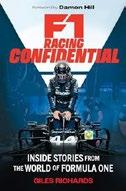
An intriguing look behind the drivers of Formula One. As former champion Damon Hill puts it in his foreword to Guardian sportswriter Richards’ book, race car drivers are “the last people to arrive and the first people to leave.” In their shadow stands an astonishingly large army of support personnel. In the case of Red Bull
Racing, more than 450 people are involved in one way or another. Richards goes ringside to examine these working parts—and on that note, one of his interviewees, McLaren F1 logistics coordinator Sarah Lacy-Smith, observes that a modern F1 vehicle contains about 14,500 parts, each with the potential need to be changed out at any moment, meaning that she and her crew need to know exactly where each of those parts is at any given moment. “You have to be quite good at memorizing stuff,” she notes, with typical British understatement. Most of the author’s interviewees are Brits on his home turf, though there are some other internationals, including the McLaren team’s chief mechanic, a Finn who grew up on a farm and got his start tinkering with tractors and other agricultural equipment. It’s refreshing that so many of the narrative’s principals are women, including Ruth Buscombe, the head of “race strategy” for the Alfa Romeo team who went to Cambridge to study engineering because, already set on a career in racing, that’s what some of her F1 idols studied. Who knew that there was someone who planned strategy for people whose apparent task is simply to zoom around as fast as possible? And who knew that there’s an alternate team that wins races not on the track or course but inside a simulator? Richards’ book is full of such surprises, and it’s quite the revelation.
A treat for racing fans, especially those who prefer Le Mans to Talladega.
Rickey, Carrie | Norton (288 pp.)
$29.99 | Aug. 13, 2024 | 9780393866766

An immersive portrait of a groundbreaking filmmaker. By the time of her death, Agnès Varda (19282019) had finally achieved
long-deserved global recognition for her six-decade career, culminating in accolades such as an honorary Oscar in 2017. Her path to renown was arduous, as she navigated the numerous challenges of being one of the few independent female directors of her era. Varda’s experimental approach set her apart—from not only the mainstream but even her more recognized New Wave contemporaries Truffaut and Godard. Unlike them, she was reluctant to adapt literature or other sourced material. Film critic and historian Rickey skillfully chronicles Varda’s unique career trajectory. Remarkably, she had seen fewer than 25 films when, at age 25, she filmed La Pointe Courte in 1955. “She had no knowledge of film history,” writes the author, “and thus was unaware that she was one in an illustrious line of still photographers drawn to make pictures that moved.” Varda would go on to develop expansive, ever-evolving ways of filming, embracing new technical advancements and producing some of her most memorable works, such as Cléo From 5 to 7 and Vagabond . She also inspired future generations, particularly other women filmmakers, with her boldness in addressing hot-button societal issues like abortion, homelessness, and immigrant rights. Rickey examines her close yet unconventional marriage to director Jacques Demy, who was bisexual, and references her many notable friendships within the arts community, including the likes of Jim Morrison, Martin Scorsese, and Susan Sontag. While providing colorful anecdotes from friends and luminaries in Varda’s orbit, Rickey falls short of fully capturing the essence of her mercurial, enigmatic personality. Nevertheless, the author proves adept at depicting her subject’s trailblazing influence and unique cinematic vision embracing creativity, spontaneity, and willingness to tackle provocative issues through an uncompromising body of work. A richly documented examination of this visionary filmmaker’s influential career.
Kirkus Star
Romig, Rollo | Penguin (400 pp.)
$18.00 paper | Aug. 6, 2024 | 9780143135289

A journalist’s murder demonstrates India’s increasing vulnerability to terror.
In September 2017, Gauri Lankesh, a self-described “activist-journalist,” was killed at her home in Bangalore. Her assassination sparked protests and drew international attention to India’s rising culture of intolerance. Following years of reporting on southern India for the New Yorker and New York Times Magazine, Romig uses the story of Lankesh’s life and work, her murder and its investigation, to track India’s risky path from the “world’s largest democracy,” known for its religious plurality, toward the autocracy spearheaded by Prime Minister Narendra Modi. Covering a vast and diverse country, with centuries of relevant mythology and history, the author impressively synthesizes the various narrative threads that not only comprise Lankesh’s story, but also cast an urgent warning about India’s trajectory. This is an ambitious project, and it can be challenging to track both time and characters over the course of the text. Lankesh’s murder case alone spanned more than five years and involved a multitude of co-conspirators and investigators. Romig considers the backstories for each possible motive and
provides useful details on her subject’s family and the radicalized factions determined to define India as a Hindu state. Each time the narrative twists and turns between past and present, with militant groups, former colleagues, and acts of corruption and inefficiency beginning to bleed together, Romig smoothly, steadily reminds readers of the enormity of what is at stake. With religious discrimination and formerly fringe activists gaining notoriety and momentum, the compelling, sometimes chilling, text serves as a powerful vehicle for exploring India’s precarious position; questioning the role of religion and other institutions; and promoting the possibility for exemplary multicultural nationhood even as current events challenge such optimism.
A sharp, captivating, penetrating inquiry that evolves into something more profound than just a true-crime book.
Ruppel Shell, Ellen | Abrams (336 pp.)
$28.00 | Aug. 6, 2024 | 9781419765858

An electric foray into the eel. Eels have puzzled scientists for ages and continue to today. To date, nobody has witnessed the creature reproduce; nor has anyone seen an eel egg or pregnant eel in the wild. “How is it that we can track Higgs bosons and black holes in outer space, program machines to think, cure cancer of various sorts, yet—despite our best efforts—not find a way to breed the American eel?” So
An unsuspectingly thrilling account of one of marine life’s most enigmatic creatures.
asks Ruppel Shell, author of Cheap and The Job, executing an impressive deep dive into “the eel question.” Stretching her research from centuries-old discoveries in natural science to contemporary advancements in aquaculture and trade, the author jumps among science, history, and economics in a way that dazzles with facts that occasionally overwhelm. Some readers will be frustrated to learn about the global market for eels before the fundamental details about their biology. Scientists now understand that Atlantic eels follow magnetic isolines to trek to the Sargasso Sea, where they spawn and die. Their eggs float back to the coast and grow into elvers (juvenile eels), which conclude their journey in freshwater lakes and streams. Because eels cannot reproduce in captivity, elvers have become a hot commodity for the booming eel industry in Asia (where eel is widely consumed). They are a necessary starting point for farms, which look to fishermen in places like rural Maine to catch and ship the goods. Elvers now sell for an extraordinary $2,000 per pound, and Ruppel Shell deftly explores the recent uptick in criminal activity and regulatory efforts that surround this slippery payload. By combining legal intrigue, a vision of untapped riches, and still-unsolved scientific mysteries, the author fashions a curious history that brims with wonderment. An unsuspectingly thrilling account of one of marine life’s most enigmatic creatures.
Saldaña París, Daniel | Trans. by Christina MacSweeney & Philip K. Zimmerman | Catapult $26.00 | Aug. 20, 2024 | 9781646222315

A collection of autobiographical essays distorted through the lenses of memory and literature.
Saldaña París writes of his time in Mexico City, Montreal, Madrid,




EDITORS’ PICKS:
Mountain of Fire: The Eruption and Survivors of Mount St. Helens by Rebecca E.F. Barone (Henry Holt)


A Walk in the Park: The Truth Story of a Spectacular Misadventure in the Grand Canyon by Kevin Fedarko (Scribner)
The Ministry of Time by Kaliane Bradley (Avid Reader Press)
ALSO MENTIONED ON THIS EPISODE:
Into the Planet: My Life as a Cave Diver by Jill Heinerth
The Adventurer’s Son: A Memoir by Roman Dial
Into the Wild by Jon Krakauer
THANKS TO OUR SPONSORS:
The Fragility of Light by Heather S. Lonczak, PhD
The Giant’s Ladder: The Science Professional’s Blueprint for Marketing Success by Elizabeth Chabe
Of Vital Interest by Frank Demith
Fully Booked is produced by Cabel Adkins Audio and Megan Labrise.

Bitter and sweet comingle in Aimee Nezhukumatathil’s delectable essays.
BY MEGAN LABRISEOn this episode of the Fully Booked podcast, Aimee Nezhukumatathil discusses Bite by Bite: Nourishments and Jamborees (Ecco/HarperCollins, April 30). This delightful essay collection is the follow-up to 2020’s World of Wonders: In Praise of Fireflies, Whale Sharks and Other Astonishments, which was a finalist for the Kirkus Prize in Nonfiction, a New York Times bestseller, and the Barnes & Noble Book of the Year.


Kirkus calls Bite by Bite “a graceful memoir centered on 40 different kinds of food, some exotic, some familiar, all evoking recollections of childhood, family, travels, friendships, and much more.”
Here’s a bit more from our review: “‘This book is a bite of personal and natural history,’ [Nezhukumatathil] writes, ‘a serving if you will—scooped up with a dollop of the bounty and largesse of the edible world’ With a father from India and a mother from the Philippines, some of the author’s memories center on traditional food such as kaong, the fruit of the sugar palm, prized in Filipino salads; jackfruit, her favorite fruit, which she first tasted during a visit to her grandparents in Kerala; bangus, the national fish of the Philippines, served fried as part of breakfast; and loom-pia, a deep-fried Filipino finger food, with a crisp outer skin filled with chicken, ground beef or pork, carrots, and green beans. Her memoir is not unlike halo-halo, a mixture of unexpected ingredients that make for a delectable dessert.”
Nezhukumatathil and I express our happiness to be reunited after meeting in 2020 (via Zoom), when World of Wonders was nominated for the Kirkus Prize. She shares a bit

Nezhukumatathil, Aimee
Ecco/HarperCollins | 224 pp. | $26.99 April 30, 2024 | 9780063282261
about how Bite by Bite came to be, and we launch into a discussion of the collection’s artful consideration of some significant foods (apples, halo-halo, etc.). We applaud the illustrations by Fumi Mini Nakamura, who also illustrated World of Wonders, as “a feast for the eyes,” and declare ourselves advocates for a multiplicity of voices in memoir.
Nezhukumatathil shares why she’s “not fond of sugarcoating the past” and how she aimed to incorporate bitter with sweet in sharing complex memories. We consider whether Bite by Bite could be made into a deck of cards from which one might draw daily inspiration; talk a little bit about the subtitular words “nourishments” and “jamborees”; and explore much more.
And editors Mahnaz Dar, Eric Liebetrau, and Laurie Muchnick share their top picks in books for May.
and beyond as “an autobiographical melting” (borrowing a term from Robert Creeley), and he frequently uses the literary canon to shape his recollections. In “Malcolm Lowry in the Supermarket,” he looks to Lowry’s Under the Volcano to piece together details of his own childhood and adolescence in Cuernavaca. He considers his own memory “riddled by research” and explains that the stories he’s read have “superimposed themselves, forming a pastiche that I now employ to replace experience.” The title essay, about nine years spent in Mexico City, invokes both the work of Roberto Bolaño and Witold Gombrowicz in an effort to “embrace [the city’s] ugliness.” Beyond these literary references, Saldaña París frequently ruminates on the act of writing in many meta digressions. He explains that the essay “Return to Havana” is the result of a series of handwritten revisions. “A Winter Underground,” one of the highlights, recounts the author’s time in Montreal and his struggles with addiction; it opens with a declaration that the text would be written entirely after midday, as “language, in the evenings, is dense.”
The author’s confidence carries many of the essays: “I liked to talk loud and clear, as if I were always right,” he declares. Later, he recalls writing his first book with “a fireproof arrogance.” In “Notes on the Fetishization of Silence,” he describes his own breathing as “the music of me being alive.” The author’s knack for finding profundity in everything makes for an occasionally exhausting read; still, most of the pieces are thoughtful weavings of memory and place, explorations of how the author’s heavy reading both informs—and, at times, obfuscates—his understanding of the past.
Often heady, occasionally pretentious, and steeped in literary touchstones.
Sanger, David E. & Mary K. Brooks
Crown (528 pp.) | $33.00
April 16, 2024 | 9780593443590

A study of the unexpected reemergence of superpower conflict after the supposed reign of peace following the end of the old Cold War.
As New York Times White House and national security correspondent Sanger notes, it’s miraculous that the protagonists of the old Cold War, extending four decades, managed to keep the war cold instead of hot. We may not be so lucky with the new Cold War: Putin’s frustrated project in Ukraine may lead to his reaching for the nuclear button. Against the rise of Russia and China, the U.S. has not developed a coordinated response. While the Biden administration’s policy of engagement with China is largely positive, it is poorly articulated: “Biden’s own cabinet members do not share a common understanding of what ‘engagement’ with China means.” The West views Russia either as a failing giant that no longer plays much of a role on the world stage or as an emergent threat with designs on invading not just Ukraine, but also retaking and remaking the old Soviet Empire. (The latter view, Sanger notes, is a little off: Putin wants to be Peter the Great, not Stalin.) In whatever instance, the U.S. has lost some of its suzerainty in the world; even Henry Kissinger, toward the end of his life, conceded that the time when it set the rules for the world order was over. That
does not mean the U.S. should not stand up to Russia and China, especially now that the latter’s rapid rise seems to have slowed down in a kind of malaise. Regardless, Sanger warns that America’s leadership has been damaged in the wake of the Jan. 6, 2021, insurrection and the Trump administration’s policy of disengagement, which threatens to resume with the next election.
A provocative treatise for foreign-policy wonks, calling for both engagement and peaceful competition.
Schaap, Rosie | Mariner Books (272 pp.) $29.99 | Aug. 20, 2024 | 9780358097457

A Northern Ireland–based journalist and nonfiction writer reflects on the loss and grief that changed her life. When New York City native Schaap, author of Drinking With Men, went to read a favorite poem to her cancer-stricken husband, Frank, on Valentine’s Day 2010, she did not know it would be the last time she would see him alive. The day afterward, he passed away while she was temporarily absent from his side. Flattened by grief and guilt, she ran away from the pain, visiting a city, Belfast, in a country she had loved during her student days in Dublin. From that point on, Northern Ireland—its rugged beauty, tortured but fascinating history, and quirky inhabitants—became her beacon of hope as she navigated new widowhood and more wounding deaths. Several trips to Ireland later and nearly a decade after Frank’s death, Schaap took a chance on the impractical-seeming dream of pursuing a creative writing master’s degree in Belfast. Immediately, her life opened her to new vistas: first, graduate school, and then pandemic lockdown with a sculptor whom she had met on her first trip to Belfast and eventually married. Though Jewish and
a foreigner, the author quickly found her place in a world that surprised her with its openness and its willingness to move past a history of sectarian violence. Most unexpectedly of all, though, was the solace and profound understanding of grief she gained by interacting with people willing to share their own stories of loss. Death was never fair in what it took away; however, to recall with gratitude what was lost could ease suffering and even touch wellsprings of the deepest joy. As Schaap writes, “To love is to remember; to remember is to keep loving.”
A poignant and moving memoir featuring a well-rendered story of pain and redemption.
Schulte, Brigid | Henry Holt (384 pp.)
$31.99 | Sept. 17, 2024 | 9781250801722

An alarming study of how work pressures are making us sick, exhausted, and miserable. There was a time when work stayed in the workplace, but that era is over, writes Schulte, whose previous book, Overwhelmed, investigated the social dynamics of work. In this follow-up, she paints a grim picture, showing how office work has followed employees home, where they are expected to continue answering emails and solving problems into the night and on weekends. The situation is equally dire for those employed in the service industry or manufacturing, where hours and duties have increased but wages have remained stagnant for years. The pressure is even greater for those who are juggling family responsibilities, caring for young children or elderly parents. Schulte provides statistical data to back up the anecdotal evidence, noting that the result of all these interrelated factors are an array of physical and mental health problems, especially depression
and chronic anxiety. There are, however, companies that have brought in better arrangements, including greater performance flexibility and shorter workweeks. In some cases, these policies have led to a better bottom line, although many variables are in the mix. Schulte believes there are policy lessons to be learned from other countries around the world, including legal protection for family time and acknowledgment of the value of (unpaid) domestic work. Some of her proposals would be difficult to implement, but her overall view that work is not working is valid. Even though the author does not answer all the questions she raises, she presents a solid contribution to a crucial debate. Two epilogues address “How To Change” and “The Problem With Work Stress and How To Solve It.”
Writing with energy and passion, Schulte shows how work has come to dominate our lives and outlines options for change.
Kirkus StarSilver, Nate | Penguin Press (496 pp.)
$32.00 | Aug. 13, 2024 | 9781594204128

A thought-provoking examination of how society has become increasingly divided between the risk-tolerant and the risk-averse.
Silver is the founder of FiveThirtyEight, a polling firm known for its careful, erudite perspectives and predictive statistics. (He left in 2023.) He is also a successful gambler, especially in the rarified world of high-stakes poker. In his latest, the author brings his interests together to delve into the nature of risk, a subject he touched on in his bestselling 2012 book, The Signal and the Noise. The risk game, notes Silver, is not just about assessing the likelihood of an event but
also the possible gains from an unlikely event happening. Good gamblers—who include, in Silver’s analysis, hedge fund managers, arbitrageurs, and venture capitalists—do not win the big pot by playing it safe but by backing their own judgment against conventional wisdom. However, they do not charge blindly forward; in fact, they usually have a great affinity for numbers, trends, data, and complexity. In short, they calculate the risks and the rewards of any given venture and, when as certain as possible, go all in. The members of this group comprise an “ecosystem” he calls the River. “Most Riverians aren’t rich and powerful. But rich and powerful people are disproportionately likely to be Riverians compared to the rest of the population,” he writes. Delving further into the political landscape, the author notes that they are opposed by another group, the Villagers, whom Riverians believe “are too paternalistic, too neurotic, and too risk-averse.” It is an interesting model of polarization, although it begins to fall apart if pushed too far, especially given that many Riverians begin the game on third base. Still, Silver provides a clever look into a unique realm.
An enlightening study of the people who play the game of risk and win.
Slater, Dan | Little, Brown (432 pp.)
$30.00 | July 16, 2024 | 9780316427715

A riveting account of the corrupt landscape of early-20th-century New York City. Well before the Five Families put their mark on organized crime, Jewish immigrants controlled the trade, exemplified by gambler and crime lord Arnold Rothstein. He
THE WIDOW’S GUIDE TO DEAD BASTARDS
started off small, building an empire piece by piece on the East Side, mostly settled by recently arrived Eastern European Jews. So did Tammany politician “Big Tim” Sullivan, who traded his upwardly mobile Irish constituency for the Jewish newcomers. At the time, the city was rife with prostitution, gambling, labor agitation, and rising leftist politics. “Ever since the Eastern European Jews began arriving,” writes Slater, author of Wolf Boys, “the German Jews worried that these unwashed co-religionists, with their orthodox religiosity and radical politics, would undermine their own hard-won social respectability with the ruling patrician class.” Given that Tammany and the New York police force were thoroughly corrupt, the Germans, financier Jacob Schiff among them, pushed the relatively clean mayor to found a Jewish-led vice squad: the Incorruptibles of the title. As Rothstein, later to be infamous for the 1919 Black Sox baseball scandal, drifted deeper into the drug trade and other illicit activities—not least the murder of a rival—the mayor and vice squad leader “debated constitutional issues surrounding policing, such as warrantless raids, undercover stings, and bridging wires.” Slater’s narrative, full of twists and turns, is populated by characters from Meyer Lansky and Lucky Luciano to Louis Brandeis and Damon Runyon. The author yields not just a gripping crime story—though it certainly is that—but also a richly detailed, informal social history of New York between the Gilded Age and the Jazz Age that, apart from its scholarly rigor, is also highly readable. A grand evocation of the Gotham of gangsters, crooked cops, “beefsteak dungeons,” and nativists versus newcomers.
Telfer, CeCé | Grand Central Publishing (304 pp.) | $30.00
June 18, 2024 | 9781538756249

A Black transgender woman athlete chronicles her journey battling obstacles throughout her career.
Born in Jamaica, Telfer, the first openly transgender woman to win an NCAA title, shares anecdotes of her upbringing raised by her mother and volatile stepfather who, while her mother worked in Canada, sent her to live with her aunt. Despite being assigned male at birth, the author always believed she was female. She writes about how she was ridiculed by townsfolk and initially scorned by her mother, so she resolved to “hide my feminine side forever.”
Running, which was “a way of life” in Jamaica, became an obsession and a way to quell her feelings of gender dysphoria and the dissatisfaction of living a tortured double life. Ultimately, for fear of being killed in Jamaica, Telfer fled to New England to fulfill her dreams of living a free life and having the college experience, part of which was finding immense success as a track athlete. Her outstanding athleticism brought her name to prominence in sporting circles, and once she changed her name and confirmed her transgender status with coaches, she resigned to stop training with the male track team. Though many once-affirmative conversations
about her potential turned derisive because of her trans status, Telfer dominated the competition to win an NCAA title in 2019. In this intimate glimpse into her life and career, the author candidly shares her story of perseverance to overcome the hateful backlash from her path toward the Olympics, where eligibility rules prevented her from competing in the women’s 400-meter hurdles. The memoir concludes with Telfer emboldened to achieve a future Olympic victory. “Sports narratives inspire, ignite, evoke emotions, and most importantly, transcend cultural boundaries and unite people from across the globe under a common passion,” she writes. “They should be about bringing people together, not tearing them apart.”
An inspirational portrait of trailblazing sports excellence.
Waite, Jessica | Atria (320 pp.) | $29.99
July 30, 2024 | 9781668044858
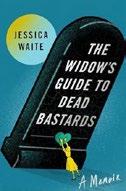
A complex memoir about mourning, mental illness, and shocking revelations. In her debut, fueled with anger and grief, Waite recounts her husband’s sudden death from a heart attack at age 47; her stunned discovery of his secret past of infidelity, drug use, and credit card debt; and their marriage, which was roiled by the recurring symptoms of his bipolar disorder. Sean had struggled with manic episodes, depression, and OCD, but his symptoms, rather than appearing in long cycles, were “rapid-cycling,” seeming more like unpredictable mood swings than an illness that required medical intervention. Without therapy and medication for Sean, she and their son were at the mercy of his volatile eruptions, which sometimes left her wondering if the marriage could last. Waite acknowledges the complexities
of grieving when the relationship had been so rocky and after discovering that the husband she loved betrayed her with prostitutes, affairs, and an addiction to online pornography. She sought help from a therapist and grief counselors, went to Camp Widow, met with a death doula and a psychic, and tried drum circling, art journaling, shamanic healing, yoga, and massage, all in an effort “to recalibrate to my new reality.”
Grieving was complicated, as well, by recurrences of “unusual-seeming” encounters that convinced her that Sean was trying to contact her from the beyond: lightbulbs in her house burned out; in the library, suddenly feeling faint, she saw through blurred vision only one book, whose plot exactly mirrored her life at that moment. “I wasn’t the only member of the Waite clan whose television turned on by itself,” she admits, “nor the only one whose ‘normal life’ was interrupted by unexplainable phenomena.” Other mourners, she suggests, may find solace in the uncanny possibility of a “reciprocal nurturing relationship between the living and the dead.”
A candid, raw chronicle of bereavement.
Whitfield, Orlando | Pantheon (336 pp.)
$29.00 | Aug. 6, 2024 | 9780593316740
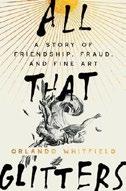
A juicy inside look at the meteoric rise and fall of an ambitious young art dealer. In this debut book, Whitfield recounts how he met Inigo Philbrick in art school at Goldsmiths, University of London, in 2006. Years before, Philbrick had cunningly parlayed an internship at the prestigious White Cube gallery into his own multimillion-dollar transatlantic art dealership. The author engagingly chronicles his friend’s ability to “inveigl[e] himself into the upper echelons” of the art world, trading in blue-chip art and
treating the market “like a quantitative analyst.” Eventually, the cocksure operator went from simply flouting ethical boundaries to breaking legal ones, double-selling artworks and creating false value. In 2022, he was convicted of $86 million in fraud and sentenced to seven years in prison. Whitfield calls himself Nick Carraway to Philbrick’s Jay Gatsby, and this glimpse into the art world of the super wealthy, “commerce dressed up as culture,” helps make his tale compulsively readable. The author broadens his critique from that of one unscrupulous player to the whole system of the modern art market, with its lack of regulations and transparency, used by collectors as a “portable way to park money,” their artworks “easily stored in tax havens like Switzerland to avoid the prying eyes of, say, divorce lawyers or tax inspectors.” Whitfield firmly indicts the “ethically grey trading practices” cloaked in art world “discretion”—i.e., deliberate obfuscation—as the modus operandi of the international art market. With exceptional candor and insight, the author is a capable guide as he introduces readers to consequential artists, dealers, curators, art philosophers, and conservators, as well as the vast potential for mischief. If the art world’s primary currency is access—to art, capital, and buzz—this insider’s account offers readers an enticing entry. A self-described “failed art dealer” spills the tea on his captivating, insular world.
Young, Rosamund | Penguin Press (272 pp.)
$27.00 | Aug. 13, 2024 | 9780593656174

Secret Life of Cows, recounts, farming and a love of farm animals are in her blood. Both her maternal grandfather and her father had been farmers, and when her mother saw her father’s kindness toward cows, “she decided there and then that she would marry him.” As the author approached 50, at the suggestion of a journalist doing research into organic foods, she decided to keep a journal about the “daily farm events” at the heart of the stories in this volume. Though not ordered according to any thematic or temporal schemas, the pieces are united by the undivided, always affectionate attention Young gives to her world. In one essay, she contrasts the chaos of the 2008 financial meltdown with musings, based on passages from The Merchant of Venice, about the power of music on animals and memories of her father playing classical music for the cows he milked. Nature and its simple joys reign supreme throughout this charming text, regardless of whether Young is reflecting on the seasons or the distinctive personalities and moods of cows (“every single one has her own particular set of likes and dislikes”). Though the author takes no political stance on animal rights, she makes it clear that you can tell a lot about a person’s character by how they treat animals. “Under the guise of saving species,” she writes, “humans create (horrific) zoos and justify horrendous expeditions to chase, terrify, sedate, capture and control wild creatures,” and many domesticated animals live in stressed bodies that, when eaten, do not contribute positively to human health. Warmhearted and charming, Young’s essays offer a gentle country antidote to the tumult of contemporary life.
A British organic farmer and bestselling author offers evocative vignettes about daily life on her farm in the Cotswolds. As Young, the author of The
A delightful modern-day pastoral.

To read our review of The Secret Life of Cows, visit Kirkus online.
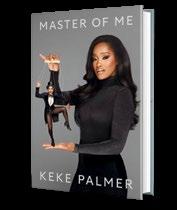
The actor and game show host’s Master of Me will be published by Flatiron.
Keke Palmer will tell the story of her life and career in a new memoir.
Flatiron will publish the actor’s Master of Me this fall, the press announced in a news release. It describes the book as “the inspiring true story of her journey to understanding her genuine value.”
Palmer became a star as a child with her role in the 2006 film Akeelah and the Bee and went on

to act in films including Madea’s Family Reunion, Joyful Noise, Brotherly Love, and Nope. She is currently the host of the NBC game show Password, for which she won a Primetime Emmy Award last year.
“In her own raw and intimate words Keke talks about everything including her struggles with boundaries, unconditional love, forgiveness, and worthiness,” Flatiron says of her book. “She walks us through how endurance of the challenges that come our way leads to true performance, power, and purpose.”
Palmer announced her memoir on a video posted to the social platform X. “I can’t wait to go on this journey with you guys.…I’m just excited for this to be an experience of growth. I’m growing. I’ve grown, but I’m still going to always be growing and learning, and I want us to do it together.”
Master of Me is slated for publication on Nov. 19.—M.S.
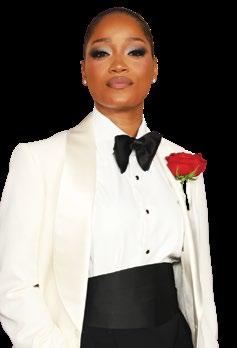
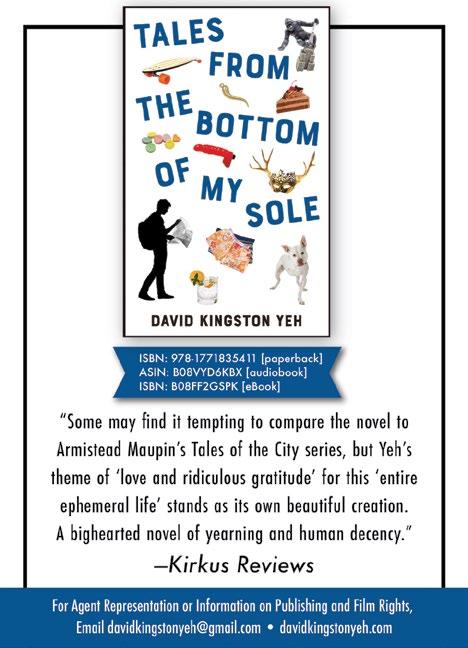



The South Dakota governor had said she met with North Korean leader Kim Jong Un.

South Dakota Gov. Kristi Noem’s false claim that she met with North Korean leader Kim Jong Un will be removed from future editions of her upcoming memoir, the Associated Press reports. Noem’s book, No Going Back: The Truth on What’s Wrong With Politics and How We Move America Forward, was published last month by Center Street. The press says that the Republican politician’s memoir “is packed with surprising stories and practical lessons from the front lines of the battle. And she names names.”
One of those names is Kim. In the book, Noem writes, “I remember when I met with the North Korean dictator Kim Jong Un. I’m sure he underesti-
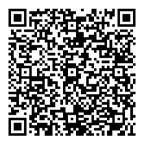

mated me, having no clue about my experience staring down little tyrants (I’d been a children’s pastor after all).”
Ian Fury, a spokesperson for Noem, said Kim’s inclusion in the book was an error.
Noem had been regarded as a rising star in the Republican party and a possible running mate for presumptive GOP presidential nominee Donald Trump. But her future in national politics seems in doubt after it was reported that her memoir contains a passage in which she describes killing her 14-month-old dog, Cricket, calling the wirehaired pointer “less than worthless.”
On the platform X, Center Street confirmed that the passage about Kim Jong Un would be removed in future print editions of the book, and said, “Further questions about the passage should be referred to the author.”—M.S.
“If you can slow down to see the world through the eyes of a child, you, too, will have time to celebrate even the small things—which is what Life Clues is all about.”
Angela C. Santomero Co-creator of Blue’s Clues and Creator of Daniel Tiger’sNeighborhood
“Uplifting encouragement to tap into uncomplicated core principles and nurture one’s inner child.”
- Kirkus Reviews





 LEARN
LEARN
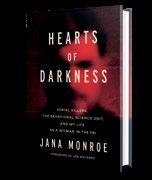
The show will be based on former FBI analyst Jana Monroe’s 2023 memoir.
Jana Monroe’s Hearts of Darkness: Serial Killers, the Behavioral Science Unit, and My Life as a Woman in the FBI
is headed to the small screen, Deadline reports.
Monroe’s memoir, published last October by Abrams, tells the story of her 22-year career as an FBI analyst, during which she consulted on hundreds of homicide cases. Monroe, who advised on infamous criminals including Ted Bundy and Jeffrey Dahmer, was the model for Jodie Foster’s character, Clarice Starling, in the film adaptation of Thomas Harris’ The Silence of the Lambs
A critic for Kirkus wrote of Hearts of Darkness, “Fans of true crime will find much to enjoy in this absorbing chronicle of criminology.”
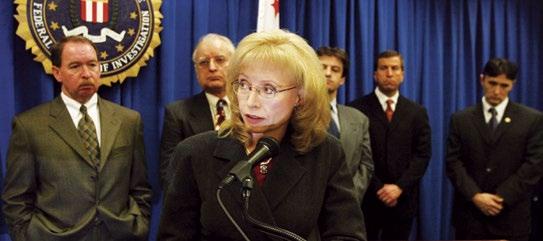
Universal Television is developing the adaptation, which will be written and executive-produced by Susanna Fogel (Cat Person, Winner ) and Julia Ruchman (The Walking Dead, Goosebumps). Monroe will also serve as an executive producer.
“Embarking on this adventure with UTV is like watching my life stories unfold on the screen in an exhilarating fusion of reality and
imagination!” Monroe told Deadline
Vivian Cannon, Universal Television’s executive vice president of drama development, said that Monroe “kicks butt and takes names, all while defying expectations of what an FBI agent should be.”—M.S.

For a review of Hearts of Darkness, visit Kirkus online.


THE AMERICAN LIBRARY
Association’s annual meeting—held from June 27 to July 2 in San Diego this year—is right around the corner, and as I eagerly look over my schedule, I’m reminded once more of the crucial work of librarians. School and public librarians form the core of Kirkus’ young readers’ reviewer roster; librarians also select the ALA’s Youth Media Awards, which spotlight the best kid lit published each year. Many librarians have gone on to become children’s book authors themselves—work to which they’re especially well suited. Below are several recent and forthcoming books that children will love, all written by former or current librarians.
Former school and public librarian Xelena González wowed us last year with Remembering (Simon & Schuster), in which a Latine family honors its deceased
dog on Día de los Muertos. Her contemplative text is paired with Adriana M. Garcia’s stunning artwork, which balances quiet joy with solemnity. At the ALA’s Youth Media Awards this year, Garcia will be receiving a Pura Belpré illustrator honor for her work on this unforgettable picture book.
Children’s librarian John Schu draws from personal experience for Louder Than Hunger (Candlewick, March 19), a ’90s-set verse novel that follows a 13-year-old boy diagnosed with anorexia. Everyone in Jake’s life wants him to eat—his mother, his grandmother, and the staff at the inpatient program where he’s eventually admitted—but their encouragement is drowned out by the Voice in his head. Schu writes with raw, explosive anguish, while creative use of typography amplifies Jake’s emotions;

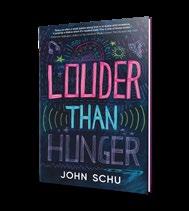
the result is a primal scream of a book.
Former public librarian
Toni Yuly’s latest picture book, The Pelican Can! (Little Brown, May 14), stars a most enchanting protagonist: a seabird who soars high, homes in on fish below, and effortlessly dives to catch a meal for a family waiting at home. Yuly’s vivid artwork ramps up the drama, and her rhythmic text will have kids chanting along with the titular refrain.
In Kyle Lukoff’s newest picture book, Just What To Do (Dial, July 16), illustrated by Hala Tahboub, a child attempts to comfort others who have experienced loss, from that of a cactus to a beloved grandparent. As the protagonist learns, there aren’t easy solutions when it comes to grief—an insight that will resonate with many adults, too. A former school
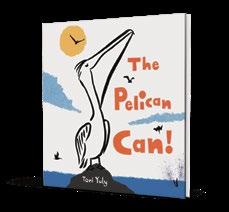

librarian, Lukoff always writes with respect and empathy for his audience; in January, he was selected to deliver the 2025 ALSC Children’s Literature Lecture, and I can’t wait to hear his words of wisdom. School librarian Travis Jonker teams up with Caldecott winner Matthew Cordell for The Ship in the Window (Viking, Aug. 20), about a mouse named Mabel who goes for a joy ride in a model ship constructed by the man she lives with. By turns thrilling and tender, this picture book sees both its protagonists stepping out of their comfort zones: Quiet Mabel embarks on a wild adventure, while the man—who’s previously refused to let anyone help him build his ship, much less touch it—learns to let others in.
Mahnaz Dar is a young readers’ editor.
 Illustration by Eric Scott Anderson
Illustration by Eric Scott Anderson
What happens when an unlikely hero must transport the Dead to their final destination?
Fourteen-year-old Milo’s not cut out to work with dead people, or so his father is quick to tell him. Though his dad is the Ferryman, entrusted with taking the newly deceased by ship from their island, Merlank, to the Island of the Broken Towers, where they can move on, Milo lacks the right disposition. But right or not, that’s precisely what he’ll have to do when his father is slain by a man working for the Lord of Merlank, who’s desperate to keep his
daughter in the land of the living. What follows is a chase across the sea. In the front is Milo, piloting his father’s ship, the Evening Mare , and trying to remember all the rules involved in this voyage. In hot pursuit are the lord and his magicians, all attempting to keep one dead girl from leaving. Hardinge treads a delicate line between horror and hope. Milo’s abilities shine through his doubts, even as he faces trial after trial. The result is part fairy tale, part contemplation of life, death, grief, and the comfort that comes when others listen.

Hardinge, Frances | Illus. by Emily Gravett Amulet/Abrams | 120 pp. | $19.99 August 27, 2024 | ISBN 9781419774331
Accompanying Hardinge’s poignant prose, Gravett’s pen-and-ink art taps perfectly into the book’s tone, highlighting moments both big and infinitesimally small. Most
characters have skin the white of the page.
A deftly told, bittersweet story of loved ones lost and remembered, tinged with hope and courage. (Fantasy. 7-12)
Aldeman, Gabriella | Illus. by Romina Galotta | Charlesbridge (32 pp.)
$17.99 | Aug. 13, 2024 | 9781623543921
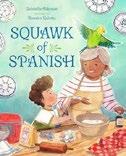
A young Latine boy struggles to speak Spanish with his grandmother. Every Sunday, Max helps Abuela bake. His grandmother speaks only Spanish, but they communicate through the sweet treats they whip up: polvorones, cocadas, and tres leches. Plus, they have help from Abuela’s bilingual parrot, Lorito, who squawks reminders about what ingredients they need (“Arroz,” “Leche”). Max knows he should try harder to speak Spanish, but his cousins make fun of him, which makes him self-conscious. “My Rs won’t roll. My words knot in my throat,” Max says. One Sunday, Lorito is at church (he likes to perch nearby and sing along to hymns), so Max and Abuela are on their own. Max confronts his fears and attempts to speak Spanish as they prepare arroz con leche—rice pudding—for a competition at the county fair. This time, he bridges the gap and bonds with Abuela in a new way: “My words tumble out dry and rusty, but I don’t mind anymore.” Galotta’s watercolor illustrations are warm and inviting, especially the depictions of Lorito, who’s by turn wise and endearing. With its effective use of figurative language, Aldeman’s matter-of-factly reassuring text will especially resonate with bilingual children feeling intimidated speaking their non-native tongue. A tenderly triumphant tale of overcoming language barriers. (author’s note, glossary, recipe for Lorito’s arroz con leche) (Picture book. 5-7)
Bailey, Catherine | Illus. by Cori Doerrfeld
Union Square Kids (40 pp.) | $18.99
June 18, 2024 | 9781454948544
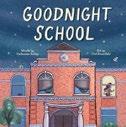
Bell, P.G. | Feiwel & Friends (320 pp.)
$19.99 | Aug. 6, 2024 | 9781250864840
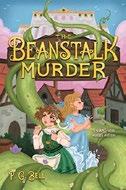
CAT ON THE RUN IN CUCUMBER MADNESS! For more by P.G. Bell, visit Kirkus online.
After a dead giant falls on their village, two human girls venture up a beanstalk and help solve his murder.
Who knew a school needed some shut-eye, too?
As the school closes for the night, the class turtle leaves its aquarium to explore and the tan-skinned Night Guard starts her rounds, turning off lights and checking that all’s safe, clean, and tucked away neatly. Expressed in languid but occasionally clunky verse, this story gives readers a good idea of what the guard’s job entails: plenty. The real highlights, though, are the slyly clever illustrations, which will be particularly appreciated by those who enjoy finding hidden objects in artwork. Virtually every page contains inanimate objects that resemble faces with smiles or half-closed eyes. In a classroom, a round reading rug with pillows for eyes smiles sleepily; a couch in the teachers’ lounge seems ready for slumber. Other objects look like cozy beds, such as cafeteria lunch trays with napkins for pillows. Musical instruments dream, cubbies snooze, and a water fountain appears to be drooling in its sleep. Even the facade of the school building, with its droopy window shades and door, looks comically as though it’s about to doze off. Kids will relish discovering these and many more ingenious images throughout, not to mention tracking that errant turtle, whose path may be followed on every page. (It’s returned safely to bed, in case you’re wondering.) The titular school may be sleepy, but kids will stay awake long enough to pore over the inspired artwork. (Picture book. 5-8)
Anwen Sedge is a Meadow Witch who’s apprenticed to her grandma Eira, but she longs to do High Magic like her rival, Cerys, who’s soon off to the Academy of High Magic and who taunts Anwen relentlessly, calling her “ditch witch.” When a giant falls to earth, crushing their village of Old Stump, the girls attempt to send a note up a beanstalk to let the other giants know. But there’s a mishap, and they end up in the Sky Kingdom palace, where they learn the dead body was that of King Thibault. Giants and humans (or tinies) have had no contact since the end of the Great Beanstalk War nearly a century ago, but the girls are treated as guests by Thibault’s sister, the new Queen Flavia, and as ambassadors from the Land Below by Captain Cato. Anwen and Cerys don’t instantly become friends, but they rely on each other out of necessity. Cerys’ ability to use glamour magic and Anwen’s ability to communicate with animals prove equally instrumental, and the girls ultimately recognize and value each other’s strengths—and their own. Many characters are not what they seem, keeping the mystery an intriguing puzzle, and each chapter ends with a teaser that will make readers eager to learn what happens next. The minimally described characters largely read white. A wholly new twist on a classic tale. (Fantasy. 10-14)

Blabey, Aaron | Scholastic Paperbacks (192 pp.)
$7.99 paper | Aug. 6, 2024 | 9781339000923
Series: Cat on the Run, 2

A fugitive feline finds herself at the center of international hijinks. When we last left internet superstar and unintentional enemy of the state Princess Beautiful, she’d mysteriously disappeared after accidentally destroying a highsecurity prison. As this second installment begins, Princess Beautiful is tied to a chair—the work of a bespectacled goat named Marv who declares himself, somewhat conveniently, to be a literal scapegoat. People assume he’s a bad guy, but, he assures her, that’s a lie. Still, if he’s really a good guy, why is our hero tied up in a dark room, on the edge of a cliff, in the mountains of Eastern Europe? Great question! Blabey’s graphic novel plunges readers ever deeper into the tangled web of Princess Beautiful’s predicament. As Marv shuttles her to a scorpion-shaped archipelago in the Caribbean, her so-called friends rat her out to an overeager rodent detective, and Catrick Cash, her potential paramour, seeks her out for his own particular purposes. The narrative focuses on unveiling the villain who’s framing our furry protagonist and places less emphasis on the sending up of mass media and internet culture so central to the first volume. The two threads weave back together, however, in the story’s dramatic denouement, setting up a scenario for world domination to be further explored in the series’ next volume. Blabey’s spare black-andwhite art is punctuated with pops of red; once more, he delivers both satirical jabs and exaggerated, cartoonish antics.
Classic comic timing and kooky characters continue to captivate. (Graphic fiction. 7-12)
Boone, Mary | Illus. by Milena Godoy | Whitman (32 pp.) | $18.99
Aug. 8, 2024 | 9780807572917
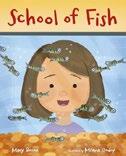
Emmy and her classmates raise salmon from eggs to the fry stage.
The students learn about salmon in science class, paint colored fish cutouts in art class, play a predator-prey game in gym, make a list of descriptive words in the writing nook, spend time in the library reading about salmon’s significance to Indigenous peoples, and, in math class, figure out how far the average salmon might swim over the course of its life. As the weeks go by, the alevin hatch and eventually turn into fry. The students care for the fish by recording water temperatures, feeding the fry, and testing for water quality. Soon it’s time for Salmon Release Day. Emma and her classmates travel to a stream, inspect water samples, learn about invasive species, and practice casting and reeling fishing lines. Lastly, they name their fry, wish them well, and send them on their way. Godoy’s bright cartoon illustrations focus on how engaged the students are. Emmy has tan skin and a short brown bob. Her classmates are racially diverse and include a student who uses a wheelchair. Her teacher, Miss Harris, has brown skin and glasses. Backmatter includes an author’s note, an explanation of salmon life stages, and a glossary (though words in the text aren’t bolded). Children not lucky enough to participate in this program will appreciate this peek into the salmon life cycle. (Informational picture book. 5-9)
Penelope’s very protective of her treasured balloons: She sits far away from best pal Piper the porcupine on the school bus, and at recess, she avoids a sharp-toothed crocodilian friend. One day after school, Penelope rushes home when a sudden storm develops. Though she tries to hold tight to her treasures in the face of heavy winds, eventually she lets go. She sits alone in the forest, brokenhearted. Supportive Piper appears with an umbrella and walks Penelope to her front door. Penelope soon discovers that one balloon has drifted home. Grabbing it, she races to her room and wraps it elaborately in a box to preserve it. As she tries mightily to protect it from her parents, who want to help, it breaks. Still, there’s good news in the air—literally: Outside the window, everyone glimpses nine red balloons floating in the air. Flinging the front door open, Penelope discovers her balloons have received help returning home: Each one’s clutched firmly by a good friend. Penelope now realizes what the “greatest treasures” truly are. This sweet friendship story makes clear that people are more important than even the most cherished of objects. The lively, colorful illustrations—those red balloons really pop—keep things moving. Penelope’s an endearing, realistically developed character among the anthropomorphized all-animal cast; children will relate to her plight. A cozy friendship story is always welcome; the animals and balloons here add to the fun. (Picture book. 4-7)
Buchet, Nelly | Illus. by Mathias Ball Marble Press (40 pp.) | $19.99 Sept. 17, 2024 | 9781958325186
Bourgeois, Brooke | Union Square Kids (40 pp.) $18.99 | April 16, 2024 | 9781454951827
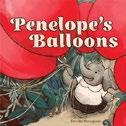
Penelope Elephant adores her 10 red balloons, which go everywhere she goes.

A young wolf seeks guidance from other animals when she’s lost in the forest. Little Wolf can’t howl right, much to her siblings’ amusement. They tell her she’s adorable, but she’s determined to prove she’s just as fierce as they are.
When she turns around and realizes she’s all alone, she’s reminded of her mother’s advice: “If you get lost…find North.” And so Little Wolf sets off in search of that vague place, asking for help along the way. Whale shows her how to swim. Goose confuses her with a warning of the harsh and unforgiving North before teaching her how to fly (well, jump), while Bear sets her straight and teaches her how to fish. Finally, staring up at the night sky, she sees the North Star. Little Wolf finds her footing and her strongest howl, which leads her right back to her pack. The incredible illustrations bring this story roaring to life. The deft use of color and varied perspectives drops readers right into Little Wolf’s dark and wild woods. The artwork is reminiscent of woodblock prints, with bold lines and strong splashes of color. Though the animals are anthropomorphized, their postures are incredibly realistic: Fearful Little Wolf’s ears droop, her tail tucked around her. The geese come in for a dramatic landing, feet spread, wings posed. This story of determination and self-reliance shows that even the littlest out there can summon their biggest voice. A meaningful, modern fable. (Picture book. 3-5)
Calmenson, Stephanie | Illus. by Hollie Hibbert | Bloomsbury (32 pp.) | $18.99 Sept. 3, 2024 | 9781547612277 Series: Woofing, Wagging Concept Books

Calmenson’s latest rhyming book is a celebration of dogs, with some lessons on colors thrown in.
The dogs that appear here include both poodles and doodles (a mix of a poodle and another breed); they’re gathering for a Poodle Doodle Party. Each one brings, plays with, or interacts with something colorful, giving readers an introduction to both the basic colors (plus black, brown, white, and pink) and the general look of each breed. A poodle with a pink ribbon
turns heads with a new haircut, an eager goldendoodle speeds around with the aid of his red wheelchair, and a beautifully patterned aussiedoodle proudly carries his long brown stick all over the park. The book’s ending takes a turn toward lessons in inclusion when a dachshund’s arrival initially sparks discord, but he’s quickly accepted as a froodle (“friend + oodle”). While the rhythms can be hit or miss and the complexity of the dog breeds may make learning about colors a bit challenging for younger readers, the cartoon illustrations are eye-catching and cheery; they keep the focus on the dogs, the colors, and the emotions. The child owners and their adults are racially diverse, and one adult woman wears a headscarf. The backmatter explores poodle varieties, the history of the first doodle, doodle combinations, and the book’s real-life inspiration.
A canine ode, ideal for poodle and doodle lovers (and froodles). (Picture/concept book. 3-6)
Calvert, Howard | Illus. by Mike Moran Andersen Press USA (32 pp.) | $18.99 Sept. 10, 2024 | 9798765643518

Who, of all the animals, has the mightiest bite?
A grinning, brown-skinned child has “20 teeth! That makes for a mighty bite. The mightiest bite in the world!” A succession of creatures, from a rabbit and dog on up, flash their dental credentials to assert the contrary. Cobra hisses, “I think you will find that I am the bitiest. And therefore the mightiest.” And even a dinosaur weighs in:
“Yes, it is I, T. rex, back from being extinct to inform you all that your bites are piddly compared to mine. Check. It. Out. 60 bone-crunchers.” Unfortunately, the narrative’s rousing language isn’t reflected in Moran’s cartoon illustrations, where big eyes and exaggerated expressions of dismay play larger than the jagged but not particularly prominent teeth on display. In the wake of much roaring and posturing, in flits a toothless mosquito, exciting general scoffing until the tiny creature proves its supremacy by biting one and all…all that is, except the human youngster. And why is the child alone skipped? Because the youngster comes prepared with a spray tube of bug repellent, thus proving that at least when it comes to the “mightiest brain,” it’s no contest. Young readers will enjoy seeing the toothy competition topped by its tiniest entrant, but the closing twist feels as though it comes a bit out of nowhere. Quirky, but it lacks bite.
(Picture book. 6-8)
Cameron, Rob | Labyrinth Road (400 pp.) $17.99 | Aug. 6, 2024 | 9780593572450
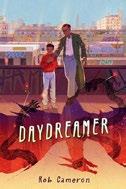
Unbeknownst to Charles, his dragon’s wish will alter his intersecting worlds of fantasy and reality.
Charles’ life is shaped by stories.
Daydreaming serves as the Black 11-year-old’s escape to the “inside” place he calls his Sanctuary as he navigates dyslexia and tries to cope with being bullied at school. Many adults in his life overlook
A solid middle-grade mystery laced with leads for aspiring newshounds.
IZZY WONG’S NOSE FOR NEWS
his extraordinary artistic abilities and perceive him as misbehaving or lazy. Fortunately, Charles has an ally in Mr. Glory Miles, the super at the Beatrix, the apartment building where he and his mom live. Other people, those who don’t know about dragons, see Mr. Miles as “an angry old man”—but Charles knows that he’s his dragon. Glory reveals the history of the dream folk, who “were survivors of the Great Dream before Time” back in Africa when “some people could fly.” When abusive father Mr. Calixte and his son, Junior—trolls disguised as people from Haiti—move into the Beatrix, they spark unease and tensions. Some people get sick, and others go missing. Charles feels compelled to help Junior, despite Mr. Miles’ warnings to stay away from the trolls, and he embarks on a quest with his two imaginary best friends, Ruby and Fig. Pivoting between escapism and reality, this creative debut features strong character development in its exploration of the ways Charles copes with multiple challenges that will resonate with many readers.
Captivating and cathartic. (author’s note) (Fiction. 10-14)
Catrow, David | Holiday House (32 pp.) $15.99 | Sept. 24, 2024 9780823445073 | Series: I Like To Read

An early reader about kids’ best friends.
“My dog is best,” declare a group of aggressively kooky children. One dog is best because “he can jump,” another is best because “she likes hugs,” and other pooches are best because they’re large, small, helpful, or playful. The repetition of “My dog is best” and the slight variations that follow throughout will help newly literate audiences gain confidence and fluency. Given the necessary restraints placed upon the text, the art must do some heavy lifting to keep this approach from falling into Dick-and-Jane dullness, and
Catrow succeeds wildly. Many of the children and dogs are appealingly and hilariously caricaturelike, while others are simply sweet, and the wonky background illustrations of toys and other accouterments of childhood will help keep the interest of young ones working their way through the letters. The book wraps up by assuring readers that their dog might, in fact, be the best—a conclusion that will quell any feelings of jealousy or whataboutism (unless the reader in question deeply wants a dog and can’t have one). Children are diverse in terms of skin tones and hair styles. This book is best at what it’s trying to do. (Early reader. 5-7)
Chan, Marty | Orca (208 pp.) | $14.95 paper Sept. 17, 2024 | 9781459839373
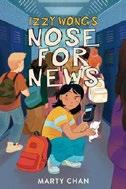
When a flood causes major damage to the school, Izzy uses her podcast to figure out what happened.
Canadian sixth grader Izzy Wong is ready for her next story. An aspiring reporter, she’s been producing podcasts in order to hone her journalism skills. When a bathroom flood ruins everything in Ms. Berenstein’s classroom and several books in the library, Izzy’s sure she can find an angle worth exploring. At first, the flood seems to be the result of pipes that have fallen into disrepair. Soon, however, Izzy discovers that the flood was no accident; all four toilets in the girls’ bathroom were intentionally clogged, and the staff seem to know more than they’re willing to reveal. As her podcast audience grows, ambitious Izzy finds herself bending the rules of ethical reporting to keep everyone listening. With an age-appropriate love triangle, multiple suspects, and discussions about the difference between news and gossip, Izzy’s investigation has much to keep young
readers engaged. Careful descriptions of the technical side of podcasting and insights from Izzy’s broadcast journalist mother offer an entry point to anyone curious about following in Izzy’s footsteps. Though physical descriptions are limited, the last name Wong suggests that Izzy is of Chinese descent. A solid middle-grade mystery laced with leads for aspiring newshounds. (Fiction. 9-12)
Cheng, Charlotte | Illus. by Xindi Yan Rocky Pond Books/Penguin (40 pp.) $18.99 | Aug. 27, 2024 | 9780593532997

A child learns to cope with loss. In rhyming text, a young narrator yearns for a recently departed grandparent, whose absence is felt in small, day-to-day moments: “I miss you most at dinner / when seafood stew is served. // I miss you in the ocean waves / that crash and splash and swerve.” Dark, muted colors and empty spaces emphasize the child’s grief and loneliness on each two-page spread. In time, with support from the rest of the family, the protagonist focuses on ways to remember the grandparent: “I see you in the mirror / through the sparkle of my smile.” “You’re with me in the twists and turns / of stories that I write.” “But most of all I feel you / in each kindness I return.” Gradually, the child finds comfort in cherished memories; clearly, this beloved grandparent has helped shape the young narrator’s life—and continues to do so. Cheng and Yan make an impressive team. Cheng’s lyrical text creates sensory snapshots that add richness and depth to this intergenerational bond, bolstered by Yan’s beautiful, softly textured digital illustrations, which make effective use of color to capture the protagonist’s feelings. Together, their storytelling packs a powerful emotional punch. The family at the center of this story is cued as Chinese. Warm and heartfelt.
(Picture book. 4-8)
Chung, Hannah | Astra Young Readers (40 pp.)
$18.99 | Aug. 13, 2024 | 9781662620843

A young girl discovers the pitfalls of perfection. Joo Hong admires the persimmon tree in her backyard; its fruit is “round like a full moon. Amber like the morning sun.” Though Mama warns her that the fruit isn’t ripe, Joo Hong can’t wait but soon realizes the persimmons “[aren’t] quite perfect yet.” She turns her attention to nurturing the tree in hopes that the fruit will be “more perfect” in time for her grandmother’s visit. The simple narrative reveals a montage of Joo Hong lovingly watering and nurturing the tree. Her efforts pay off as she enjoys a sweet harvest of sliced persimmons. But Grandma won’t be here until next weekend. Despite her attempts to store the persimmons in the shade, the fruit continues to form dark spots. Joo Hong greets her grandmother in tears with the “wrinkly and mushy” fruits. Grandma gently explains that the overripe persimmon is now considered a hongshi: “tender on the outside. Silky and juicy in the inside.” Endearing cartoon artwork is set against bright backdrops; Joo Hong’s exaggerated facial expressions comically capture her emotions, especially her frustration and impatience. Little ones fixated on the idea of perfection will find a kindred spirit in Joo Hong. Characters present East Asian, and in an author’s note, Chung explains that the story was inspired by her experiences growing up in Korea. A delectable tale that will guide young readers to reexamine their own perceptions. (Picture book. 5-8)

A faithfully executed adaptation worth visiting for new and returning readers.
AMBER BROWN IS NOT A CRAYON
Cohen, Deborah Bodin & Kerry Olitzky
Illus. by Stacey Dressen-McQueen
Kar-Ben (32 pp.) | $19.99
Aug. 6, 2024 | 9798765604496
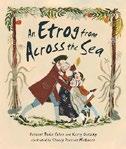
A Jewish family in colonial New York hopes Papa will come back in time for Sukkot. In July 1729, Leah, Aaron, and Mama wait for Papa, a merchant currently on the island of Corsica, to return to their woodland homestead. The Jewish holidays are approaching, and Papa has promised to bring home an etrog, a citrus fruit resembling a bumpy lemon. (This fruit is one of four plants used to decorate a sukkah, a small hut built by observant Jews to celebrate Sukkot.) The family travels to Grandpapa Luis’ elegant New York City home to await Papa’s ship; it doesn’t come. Rosh Hashanah and Yom Kippur pass; still, Papa doesn’t return. At last, Mama declares it’s time they leave; she must run their business. Grandpapa Luis gives Leah a silver cup; she can put the etrog into it when Papa finally comes back. Back home, the family builds and decorates their sukkah and waits. The first night of Sukkot is especially joyous: Papa returns, bringing his promised bounty. This touching story, written by two rabbis, offers a glimpse into a lesser-known aspect of colonial America and celebrates the warmth of family togetherness. The authors’ note explains that Grandpapa Luis is based on Luis Moises Gomez, a Sephardic Jewish colonial merchant and trader. The lovely, stylized illustrations expertly capture historical details and
resemble delicate paintings on porcelain or needlework on embroidery samplers.
A homey, appealing holiday celebration. (Picture book. 5-8)
Cole, Lo | Boxer Books (32 pp.) | $18.99
March 5, 2024 | 9781915801289

A witty discourse on fitting in. Doris is a bright red elephant who’s uncomfortable about standing out and demands that readers not look at her. Self-conscious, she stomps off from the first blank page of the book to the next one, which features colorful birds. They’re the perfect camouflage, and they “hardly notice her.” Do readers? Perhaps Doris is hidden too well. She’s in the throes of an identity crisis: Is she an elephant or “an ele-finch ”? When the birds depart, Doris is newly exposed. She marches off to the next page, where she’s lost among wildflowers. Is she an “ele-plant”? When the petals drop off, Doris trudges off into a pool of fish, where she wonders if she’s an “ele-fish.” A predator’s arrival sends the smaller fish scurrying, and Doris hilariously scolds the big fish before heading to an entirely red page, where she feels “utterly lost.” Escaping, Doris admits she likes standing out! This humorous, clever U.K. import about overcoming shyness is replete with witty wordplay and Where’s Waldo?–esque playfulness that’s great for honing visual-literacy skills. Kids will enjoy devising riffs on the word elephant and will be inspired to create their own artworks in which they try to “hide” conspicuous Doris. Doris is most
endearing, and the dazzling illustrations give off an Elmer the Elephant vibe. “Ele-fans” will remember this funny standout and will return to it again and again. (Picture book. 4-7)
Kirkus Star
Collard III, Sneed B. | Millbrook/ Lerner (56 pp.) | $34.65 PLB Sept. 10, 2024 | 978172849374

A close look at one of the U.S. armed forces’ lesser-known, and more surprising, missions.
Who would guess that U.S. domestic military bases harbor more types of rare animals than national parks do? Making that claim, Collard points to relatively recent changes in general official attitudes toward the environmental effects of military tests and exercises, while highlighting efforts to protect and restore populations of three vulnerable creatures in particular—the red- cockaded woodpecker, the gopher tortoise, and the reticulated flatwoods salamander. The stakes are clear. All three are threatened or endangered, and two are actually designated keystone species in the quickly shrinking longleaf pine habitat that remains today in a few locales (thanks to misguided wildfire policies) outside Eglin Air Force Base in the Florida panhandle. The author mentions other bases and species but devotes most of his account to shadowing scientists working at Eglin AFB and discussing with them the specific challenges they face. Color photos aplenty offer views of various habitats, as well as animals and researchers in the field. Readers will be left marveling at the complexity of natural ecosystems within the base’s half-million acres. Those tempted to learn more will appreciate the helpful resource lists in the backmatter; those who think that the military’s only interest in nature is finding new ways to
blow it up may come away with more nuanced views. Most scientists in the photographs present white. Essential, and eye-opening, reading for serious students of wildlife conservation. (author’s note, glossary, source notes, bibliography, index) (Nonfiction. 9-12)
Cortez, Rio | Illus. by Ashleigh Corrin Denene Millner Books/Simon & Schuster (32 pp.) | $18.99
Aug. 27, 2024 | 9781665912570

Connections to ancestors and cultural identity flow when a young Afro-Latine New Yorker bonds with her grandma. The narrator, who’s brownskinned with black hair braided in cornrows, loves spending time with brown-skinned Abuela, who used to live by the sea and misses it dearly. On Saturdays they walk down from Harlem toward Twelfth Avenue to the Hudson River. While the girl has never lived by the sea, she experiences a range of strong emotions when she’s near the river: quiet, curious, happy, and, sometimes, a mix of feelings. Abuela explains that they visit the Hudson to express gratitude to Yemaya, a Yoruba goddess of motherhood and the sea. Imagining Yemaya as a brown-skinned mermaid with a blue tail, the child thanks the river. As Abuela and the child walk home, the love between them, and their affection for the river, is palpable. An author’s note adds more information about Yemaya, who became associated with the ocean following the Middle Passage, and reminisces about her own Puerto Rican grandmother. Sweet, simple prose brimming with emotion celebrates cultural heritage and the connection between generations, while vivid, childlike illustrations capture the warmth of family moments. Both text and art home in on details of the bustling city, from the piragua cart the child passes to the honking of cars; it’s a potent reminder that young urbanites can forge bonds with nature, too.
A heartfelt narrative steeped in love and tradition. (Picture book. 4-8)
Kirkus Star
Danziger, Paula | Adapt. by Victoria Ying Illus. by Victoria Ying | Colors by Lynette Wong | Putnam (112 pp.) | $19.99 May 21, 2024 | 9780593615690

Graphic novelist Ying adapts the late Danziger’s story of a bold girl navigating change.
Third grader Amber Brown can be messy and forgetful, but her best friend, Justin Daniels, doesn’t mind. The two mesh and love teaming up to help each other out. The humor from the original novel is left intact, from overly imaginative Amber’s dramatic warnings about why Justin shouldn’t eat leaves off the ground to their inside jokes about ordering pizza (“Hold the anchovies!”). Their friendship is on borrowed time, however, as Justin’s family is about to move to Alabama. Amplifying Amber’s stress over losing Justin are her lingering feelings over her parents’ divorce; she hardly sees her father since he relocated to France. Her mother is an affirming presence, but together Amber and Justin must learn to acknowledge the uncomfortable truth about his upcoming move.
Amber Brown is most definitely not a crayon—as she tells classmates who tease her about her name—but her world tends to assume a stylized palette that sets the tone of each scene, especially moody blues and purples. The story ends on an optimistic note; those familiar with the original series will be hoping for future installments. Amber is tanskinned, Justin presents white, and their class is racially diverse.
A faithfully executed adaptation worth visiting for new and returning readers. (character art, information on the production process) (Graphic fiction. 6-9)
The author/illustrator, recipient of this year’s Caldecott Medal, reflects on her history-making win.
BY MAHNAZ DARIN JANUARY, Vashti Harrison became the first Black woman to receive the Randolph Caldecott Medal, given by the American Library Association to “the artist of the most distinguished American picture book for children.” Harrison’s Big (Little, Brown, 2023), one of the most empowering children’s books in recent years, centers on a young Black girl who’s treated with hostility and derision because of her size but eventually finds a way to make space for herself.
Harrison, 36, has spent much of her career showing Black children that they belong. Before Big, she was known for her Little Leaders books, which profile pioneering African American historical figures; she also illustrated Hair Love (2019), the story of a Black daughter bonding with her father as he styles her hair, written by NFL wide receiver and Academy Award–winning filmmaker Matthew Cherry, and Sulwe (2019), Academy Award–winning actor Lupita Nyong’o’s story about a Black girl who learns to embrace her dark skin. Making children’s literature more inclusive is “something I’ve been thinking about since I started in this industry, just wanting to carve out space for us,” Harrison told me during a Zoom conversation from her parents’ home in Miramar, Florida. (The author/ illustrator lives in Brooklyn.) “[I wanted] to reimagine what it would have looked like if I’d found, right next to all the little Beatrix Potter books at the library, a book with a girl that looked like me.”
I don’t want the character from Big to be the only Black girl sitting on this Caldecott shelf.

The last few months have been emotional for Harrison. The day she got the call from the Caldecott committee was a roller coaster. Having heard earlier in the day that Big was a Coretta Scott King Author and Illustrator Honor book, she wondered if a Caldecott was in the cards. But as the hours passed with no word, “I went through every stage of grief.” When she finally got the call that night, she was deeply moved—and thrilled to share the news with her parents; she was spending the weekend with them for her father’s 89th birthday. Though Harrison is the first Black woman to win the award, other Black women have received Caldecott Honors—including author and illustrator Faith Ringgold (Tar Beach, 1991), who died in April—and they were on her mind as she prepared her speech for the ceremony, to be held at the ALA’s annual meeting in San Diego later this month. “There are actually seven Black women that have been honored, Faith being the first. I was really excited to be able to add an aside: She’s 93 and she’s still with us; how amazing is that? So it feels extra bittersweet to hear of her passing right before this event.”
Harrison has long admired Ringgold’s work, as well as that of Carole Byard, who received a Caldecott Honor for her work on Sherley Anne Williams’ Working Cotton (1992). “They were both part of the Black Arts Movement, and I feel so inspired to want to make art that celebrates Black beauty, Black liberation,” Harrison says. Just as many Beatles fans wear T-shirts with the first names of the group members, Harrison has a shirt honoring female visual artists, including Ruth Asawa, Hilma af Klint, and, of course, Ringgold. “She’s one of my heroes, and I love the way she brings together traditions and Black art and [how she] brought that into the space of children’s books.”
Harrison is also deeply grateful to her contemporaries: Black women such as Janelle Washington, who received a Caldecott Honor for her work in Angela Joy’s Choosing Brave (2022), and Ekua Holmes, who was honored for her work in Carole Boston Weatherford’s Voice of Freedom (2015). “Every step they’ve taken in their
career paths has made an extra-wide path for me to come along. And I just hope that this win opens up a pathway for more of us to follow afterward.”
Growing up, Harrison loved to draw, but she didn’t set out to become a children’s book illustrator. As an undergraduate, she fell in love with experimental film and eventually earned an MFA in film from the California Institute of the Arts. In graduate school, she says, “I was like a kid in a candy shop…I took an illustration class and animation classes and visual development classes and found this newfound hunger and fire for drawing.”
She has directed several short films, and that film background still informs her illustration work. “Even when I’m illustrating other people’s books, I’m trying to think about my shot position,” Harrison explains. “I still call them shots, even though they’re really spreads. Turning a page is sort of like an edit or a cut in a movie. If we’re going to go from a wide shot, we should go to a close-up or a medium shot, and we should switch it up and try not to be on the same angle.”
Harrison feels a great responsibility to her Black and brown readers. Before she wrote her first book, Little Leaders (2017), she read a study from the Georgetown Law Center on Poverty and Inequality called “Girlhood Interrupted: The Erasure of Black Girls’ Childhood.” “It broke my heart to hear…that adults view Black girls as young as the age of 5 as less innocent and more adult than their white counterparts,” she says. “This results in adults believing that Black girls need less nurturing, need less care.” To combat these harmful misconceptions, she chose to depict the historical figures in Little Leaders as children. “I wanted to make a mirror for young Black girls to be able to see themselves in each of their stories,” she explains. “That’s a reminder: Oh yeah, I’m cute, I’m cool, I can be any of these people. I wanted to make a book that felt sweet and charming and innocent. That’s what I wanted to offer these kids.”
With Big, she set out to explore “how anti-fat bias can be a factor that can lead into this adultification bias…I wanted to create a world that felt innocent and gentle, and I wanted that to be at odds with the way the world was judging [the protagonist]. I wanted every choice in the

Big Harrison, Vashti Little, Brown | 60 pp. | $19.99 May 2, 2023 | 9780316353229
book to be a reminder that she is soft and sweet and innocent and deserving of love and care and nurturing.”
Big is making waves in the publishing world—last year, it became the first picture book to be named a National Book Award finalist. Harrison wants to see other children’s book illustrators get their due. “I’m really grateful to have brought picture books into that space. But I feel like there could be many more places to celebrate this artwork. I’m a major advocate for thinking about picture books as literature and thinking about children’s illustration as artwork: Art with a capital A. So maybe that means we just need another award.”
Harrison hopes the kid lit world will continue to make space for marginalized voices. “I don’t want the character from Big to be the only Black girl sitting on this Caldecott shelf. I would love her to have friends and community up there. I would love to see more books be published that offer a full spectrum of the Black experience.” She adds, “I tend to make really serious and tender books. But I have friends who just make the funniest, silliest characters, and I don’t get to see enough Black and brown kids just having a fun, Dragons Love Tacos experience. I want more and more silly books…That’s what I want to see, just more diversity.” •
Join us and our authors at ALA Annual 2024!
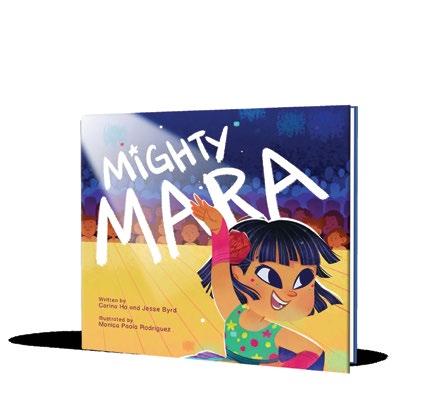

ORDER NOW through Baker & Taylor’s TS 360 or any library provider.
ORDER NOW wherever you get your books!
Dåsnes, Nora | Trans. by Lise Laerdal Bryn Hippo Park/Astra Books for Young Readers (240 pp.) | $24.99 | July 30, 2024
9781662640735 | Series: Cross My Heart, 2
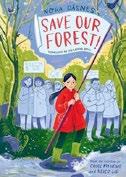
When the impact of climate change hits home, students organize and fight back in this translated title from Norway.
Bao, who first appeared in Dåsnes’ debut, the Stonewall Award–winning Cross My Heart and Never Lie (2023), is back with her own story. The three best friends, Bao, Tuva, and Linnéa, along with other students, often play in the woods adjacent to their school. But increased rainfall is changing the landscape of their bog. As Bao soon learns, these changes are also driving the school leadership to make plans for a larger parking lot, which would eliminate half the forest. As student council president and one of the most passionate advocates for the bog, Bao becomes frustrated with the inaction of the adults around her and the perceived indifference of her friends and classmates. But successful social movements require cooperation and creativity, and before long, she and her friends are building an unlikely coalition to make real change. While this story does stand alone, and Bao’s journey feels effective and true to character, readers will benefit from the context provided in the first book, which will help them better appreciate the characters’ growth. The illustrations effectively incorporate texting, social media, and the friends’ reports to create an appealing, well-paced narrative, and the moody, fluid color palette sets the tone perfectly. Bao is cued Vietnamese Norwegian; the rest of the cast appears racially diverse. A powerful blueprint for budding activists. (guide to being heard, sources) (Graphic fiction. 9-13)
davis, g. haron | Scholastic (240 pp.)
$14.99 | Aug. 6, 2024 | 9781338825121

Eva Mauberry thought boarding school was going to be hard, but she didn’t expect it to be haunted.
After her beloved MawMaw Septine passes away, 12-year-old Eva’s parents need to leave Tennessee and travel to Louisiana to settle her affairs, so they ask Eva to enroll in Blythe Academy, the boarding school in Mississippi that her father went to. Leaving family is always hard, but it’s especially challenging for Eva, who has anxiety and is autistic; she struggles when people aren’t understanding of her needs. But Eva, who’s Black, lucks out in rooming with kind and welcoming Afro-Latina Vee, and she’s quickly invited into her friend group, which includes chatty Ami, who’s Black and Thai and uses they /them pronouns. When strange things start happening around school, Eva realizes that Blythe is haunted by vengeful spirits. But nobody believes Eva sees ghosts, especially the resident mean girls. Fifty years ago, a building collapse killed a classroom full of students and their teacher. With Blythe’s centennial approaching, might tragedy strike again? The solid mystery at the heart of this story, which contains enough spooky elements for middle-grade horror lovers, reveals racist historical displacement practices. The author delivers a haunting read that’s enhanced by thoughtful representation of autism and anxiety.
A chilling ghost story and an affirming tale about believing in yourself when no one else does. (Horror. 8-12)

Kirkus Star
Davis, Tanita S. | Harper/HarperCollins (304 pp.) $19.99 | Aug. 20, 2024 | 9780063284746

For more by g. haron davis, visit Kirkus online.
A traumatic bullying incident sets off a chain reaction of curiosity and learning about friendship. Rylee Swanson never imagined she’d start eighth grade alone. But after what her supposed friends did at the pool party—events that are revealed through flashbacks—she’s determined to stay away from them, even if that means changing her schedule. Journalism isn’t her first choice; what could she write about for the school newspaper? But an idea is born when it becomes clear that both Rylee and science-obsessed classmate DeNia Alonso have strong opinions—and questions—about friendship. Can people improve their friendships? How are hormones involved? Can friendships survive beyond junior high? Eventually Rylee and DeNia team up to write a series of articles about the science behind friendship. DeNia dives into the research, while Rylee gathers survey data from an intergenerational crowd. As she explores, Rylee starts to question her own past choices and how she’s treated her friends. Will she learn how to repair old relationships and make new ones? Readers will relate to Rylee’s internal dialogue and learn from the gentle modeling of emotional-regulation skills such as self-compassion. Student-written newspaper article copy appears throughout, often citing real published studies, giving the research an unprecedented degree of accessibility and relevance. A racially and ethnically diverse supporting cast surrounds the Black leads. A killer combo of strong storytelling and compelling science results in a gold mine of social-emotional growth. (Fiction. 9-13)
El-Rouby, Yasmin | Illus. by Ishy Walters Neem Tree Press (32 pp.) | $18.95
Sept. 17, 2024 | 9781911107651
Series: Misty Mole, 2

The protagonist of Misty Mole Gets New Glasses (2024) learns about the perils of screen time.
Misty Mole’s in the forest, painting a scene that features her friends. But where are they? They’re too busy texting or gaming to make time for her. Misty imagines that she’s Super Mole, playing with her pals, and realizes that to fit in, she’ll need her own phone. Her parents agree to get her one—if she promises not to “get carried away.” Unfortunately, Misty gets more than carried away: She games under the covers at night, loses sleep, is inattentive in class, and ignores her younger brother. Soon, Misty can’t see well, even with her glasses. Visiting the eye doctor, she notices that all her friends are there, too, with various complaints—headaches, red eyes, trouble sleeping, and more. Dr. Eagle warns the children that screens can cause vision and other health problems and advises them to limit screen time and to play outdoors more. At this, Misty adopts her Super Mole persona and encourages her friends to find healthy alternatives. Written by an optometrist, this somewhat didactic U.K. import conveys important messages to children and adults. Energetic, colorful illustrations depict an adorable, all-animal cast; it’s no coincidence the “tuned-out” activities that endearing Misty and her pals engage in seem more fun than the sedentary, screen-dependent ones.
Young readers would do well to follow the worthy example of this perceptive protagonist. (Picture book. 5-8)
Fairbanks, Ashley | Illus. by Bridget George Crown (40 pp.) | $18.99 | Aug. 27, 2024
9780593651445 | Series: Race to the Truth

Anishinaabe creators Fairbanks and George encourage young people to consider the history behind the land they live on.
At home, surrounded by family, a white-presenting child with long red hair contemplates the past. “Before us, another family lived here. Before that, another family lived here, too. And another. And another.” The unnamed narrator recounts how European colonizers expelled Native Americans from their homes and forced them onto reservations. An Anishinaabe boy named TJ, who’s friends with the protagonist, and his grandmother Noko have taught the young narrator to honor Indigenous peoples’ connection to the land. They remind the protagonist that “Indigenous people have always been here, and they’re still here, wherever we go.” The child reflects on these principles often: “Now, whenever my family goes somewhere, I ask, ‘Who lived here before the people who live here now?’” Thoughtful backmatter urges readers to take land acknowledgments seriously and to find ways to act beyond merely cultivating awareness. Though the book’s lessons will resonate more with non-Native audiences, many young Native readers will appreciate the reverence shown to Indigenous people (past and present). Accompanied by
A haunting read that’s enhanced by thoughtful representation of autism and anxiety.
engaging, comic-style artwork, this is a gentle, age-appropriate introduction to Indigenous history and cultures. A stirring tale that fosters respect for Native peoples. (discussion questions, learn more about Indigenous people in your area) (Picture book. 5-9)
Ferry, Beth | Illus. by Andrew Joyner Simon & Schuster (40 pp.) | $18.99 Sept. 3, 2024 | 9781665940559
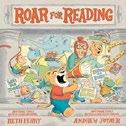
Lion librarians roar for intellectual freedom. Lions have protected libraries for years, though the link between the two is a bit of a mystery. Perhaps it’s lions’ roars that make them the perfect guardians of “something rare and precious” like books. Scenes depicting libraries of yore show robed lions in caves safeguarding treasure boxes filled with books as scholarlylooking animals happily read. Today, libraries are “peaceful and quiet” places. Librarians—still lions—focus less on protecting books and more on sharing them. The librarians’ legendary roars are all but forgotten. That is, until the mayor of one community tries to ban books because “some folks think these books are dangerous.” At first, the head librarian, Ms. Millicent, and her son, Julius, comply and remove books from the shelves. But, as Julius stares at a nearly empty shelf, a rumble in his belly turns into a roar. Together, Julius and his mother fight back alongside community members—all animals—for everyone’s right to read. This timely book effectively simplifies the current book-banning movement into easily digestible terms. Better yet, in the backmatter, “ROAR” is revealed to be an acronym for steps to advocate for intellectual freedom (Recognize, Organize, Act, Respect). As an added treat, book covers throughout reference near-actual titles (Of Mice and Moose). A solid primer for library advocates. (Picture book. 4-8)
Let’s Go, Coco!
Fox, Coco | HarperAlley (240 pp.) $24.99 | Aug. 13, 2024 | 9780063256415
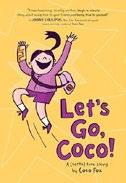
A middle schooler faces new challenges when her best (and only) friend moves away. In this graphic novel that’s loosely based on the author’s life, Indiana sixth grader Coco is determined to make new friends now that BFF Blair is busy with her new life in Boston. Despite her anxiety, which is represented by jagged white flamelike tendrils swirling around her, Coco joins the basketball team, the Lady Owls, hoping to hang out with her crush, Tami. When new nonbinary student Zander joins the team, Tami and Coco suggest dropping “Lady” from the name to be more inclusive. After Coco breaks her wrist during practice and must play with a cast, she starts passing the ball to Maddie, a talented teammate who used to taunt her. The girls become a dynamic duo on the court, but their subsequent friendship involves some emotional turbulence. Coco embarks on a mission to correct her mistakes and mend her relationships with family and friends. When her anxiety worsens, she’ll need to rely on her teammates to help her through the championship. The expressive faces, clean lines, and uncluttered panels allow readers to clearly identify how the characters are feeling. The color palette is composed of varying shades of purples, oranges, and whites and is reminiscent of the lesbian pride flag. Coco, Maddie, and Zander read white; Blair is coded Chinese American, and Tami appears Black. A quirky, heartfelt celebration of bravery, friendship, and self. (Graphic fiction. 9-12)
Gillespie, D.W. | Delacorte (272 pp.)
$17.99 | Aug. 13, 2024 | 9780593651810
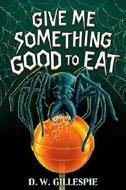
Mason Miller and his friends take on a dangerous mission to save his little sister— and their town—from the clutches of an evil witch.
Halloween is a celebration like no other in Pearl, North Carolina, with loads of decorations and epic trick-or-treating. But something sinister always happens during this grand tradition, and Mason seems to be the only one who notices. Each year, a child goes missing, never to return, and completely forgotten by everyone in the town. This Halloween, it’s Mason’s 9-year-old sister, Meg, who vanishes. Desperate to find her, seventh grader Mason enlists the help of friends Serge, Becca, and Mari. The kids find themselves in UnderPearl, a dangerous world full of monsters—and a witch who’s eager to drain the life from Meg. Gillespie’s terrifying world is imaginative and spine-tingling. The creepy characters are original, as interesting as they are scary. Mr. Crow, a delightful creature who’s a larger-than-life scarecrow with a flaming jack-o’-lantern head, becomes a surprising, meaningful addition to the story. Though the motivations of some characters and plot points feel flimsy, the richness of UnderPearl’s worldbuilding and the likable characters make this a worthy read for young horror fans. Mason and Becca present white; Serge has
dark-brown skin, and Mari is Japanese American. An immersive, well-imagined world with plenty of spooky bits. (Horror. 9-12)
Gray, Karlin | Illus. by Micheline Hess First Second (128 pp.) | $12.99 paper Aug. 27, 2024 | 9781250823663

A kicky tribute to the iconic soccer star and her spectacularly talented teammates on the U.S. national women’s team. Gray’s fizzily exuberant account of Hamm’s triumphant progress—from first feats on the pitch at age 2 in 1974 to the U.S. team’s 1999 Women’s World Cup victory—is cranked up to 11 by Hess’ close-ups of her wide-eyed delight, full-bore game action punctuated with many a “BOOM!” “POW!” “WOOSH!” and wild, unrestrained celebratory piles after each win. Along the way, readers see young Mia cope with moodiness, feelings of alienation, and frequent moves because of her father’s Air Force job. Soccer became a grounding force for her, and finding other young women who also loved the sport made her feel less alone. Fast-paced game scenes will entice sports fans; for historically minded readers, team rosters and scoring summaries anchor each major competition, and a closing section brings the post-1999 professional exploits of each member
An entertaining tale that pushes readers to hone their critical thinking skills.
I AM A POTATO!
of the team up to the present. Just as the art vividly captures the players’ infectious intensity and athleticism, the larger overall story of how the team lit up a new interest in the sport in the United States, particularly among girls, makes equally compelling reading. Both the player galleries and crowd scenes feature clear racial diversity in skin tones and facial features.
A high-intensity shot for the goal. (sources, photograph)
(Graphic nonfiction. 10-13)
Gutiérrez, Jolene & Shaian Gutiérrez | Illus. by Gabby Zapata | Chronicle Books (48 pp.) $17.99 | Aug. 6, 2024 | 9781797215624

A Latine family sets up an altar for Día de los Muertos. In rhyming, cumulative verse reminiscent of “The House That Jack Built,” the family prepares to honor Abuelo. They start with “the cloth, embroidered by Ama, / that covers the ofrenda that we built.” Next comes “the papel, cut with designs, / that graces the cloth, with ornate flowing lines, / that covers the ofrenda that we built.” They add candles to “welcome the ancestors in from the night,” delicious-looking sugar skulls (which “represent joy and how full life can be”), a copal to awaken the spirits, a bell that the whole family rings to guide the deceased home, and petals to “gather our ancestors in from the cold.” Each item holds meaning, conveyed artfully through the text. Finally, we see the last item of the ofrenda: photos of Abuelo, so he can be remembered. The bouncy verse scans well, accompanied by richly hued visuals depicting a loving, brown-skinned family taking part in the festivities. In the authors’ and illustrator’s notes, the creators discuss the personal significance of this holiday; readers will also find more background on Día de los Muertos. A lively and illuminating look at a holiday tradition. (Picture book. 3-6)
Hanaor, Ziggy | Illus. by Elliot Kruszynski Cicada Books (32 pp.) | $16.99
Sept. 3, 2024 | 9781800660519
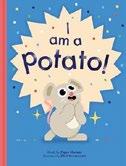
An unidentified creature is confronted with an identity crisis. With rounded ears, whiskers, a plump stomach, and a long tail, our protagonist, who resembles nothing so much as a rodent, confidently states, “I am a potato!” (Kids will immediately giggle.)
A red dog enters the scene and counters: “No. You’re not a potato.” But what, exactly, are they? A yellow cat walks over to ask a few questions. Everyone agrees that the creature is an animal. A celebration ensues. “I AM AN ANIMAL!” But wait. What kind of animal? A penguin and rabbit join the conversation. “Do you have hair?” “Did you hatch out of an egg?” “Do you like eating meat?” As the youngster answers each one, the animals narrow down the possibilities: “Okay, you’re not a reptile. You’re a mammal.” “You’re definitely not a cat or dog.” Readers will glean a few animal facts along the way. Set against a stark white backdrop, the geometrically shaped, primary-colored animals are strikingly simple as they parse out the truth (readers will delight in pointing out the different treats the cat eats throughout the story). The book finally comes to a dramatic conclusion, everyone responds with excitement, and a real potato makes an appearance. An entertaining tale that pushes readers to hone their inquiry and critical thinking skills. (Picture book. 3-6)
Flying south, two ducks encounter a goose headed in the same direction. “Duck. Duck. Goose,” as the familiar refrain goes. But what’s this? A moose? Tootling along on a motorized scooter carried aloft on a parachute, this moose is “on the loose.” Then the gang soars over a train “caboose” far below. Thus flies this uproarious rhyming tale, comprised of the barest minimum of vocabulary. Almost all the words end in -uck (cluck, truck, stuck, muck, luck) and -oose (loose, vamoose), making this riotous book perfect for kids ready to spread their own wings as brand-new readers. Once children get the hang of the phonics, they’ll fly through this tale with plenty of giggles. Kids should be encouraged to volunteer other words that rhyme with the book’s dominant sounds. In addition to honing an appreciation for rhyme and helping to develop vocabulary, Hare introduces the concept of homophones when he uses the word duck not as a noun but as an imperative verb (in one hilarious scene, a duck riding on top of a truck fails to notice a low-hanging traffic signal). All ends happily when everyone arrives safely at their tropical destination. The comical artwork is a blend of hand-drawn pencil with digital color and accents.
A funny, high-flying exploration of sound words that’s perfect for plucky new readers ready to let loose.
(Picture book. 4-7)
Harrison, David L. | Illus. by Kate Cosgrove Holiday House (40 pp.) | $18.99
Sept. 17, 2024 | 9780823455584
Series: Books for a Better Earth
Hare, John | Greenwillow Books (32 pp.)
$19.99 | Sept. 17, 2024 | 9780063093232

A zany tale inspired by the name of the popular children’s game.

So many reasons to love trees! Writing in animated free verse that calls urgently to be read aloud, Harrison celebrates a tree’s residents, from bugs that “CRAWL and / CLIMB and / SCURRY up that trunk” to birds
that nest or peck out cavities just right for later comers like opossums and raccoons to “SETTLE in. / And maybe / they make / their own babies? / For sure!” Meanwhile, the tree has plenty of “tree business” to conduct, such as making flowers and seeds, breathing out the oxygen that “we BREATHE IN! / For sure,” keeping soil in place, and holding “her families / safe in her STRONG arms” when “storms HOWL / and thunder goes / BOOM! BOOM! BOOM!” As small creatures crawl or flit through leafy boughs above in Cosgrove’s bustling, populous illustrations, two brown-skinned children below blow bubbles or peaceably share a rope swing in the cool shade. “And best of all,” the poem ends, when spring comes round again, new seeds will drop so that “very soon / we will have / a fine new tree. / OH YES!” In a personal afterword, the author describes a certain beloved tree in his yard and suggests that readers might pick one for themselves: “I think trees love it when we love them.”
An effervescent appreciation of all that trees do and are. (bibliography, index) (Informational picture book. 5-8)
Kirkus Star
Higgins, Carter | Neal Porter/ Holiday House (48 pp.) | $18.99 Aug. 6, 2024 | 9780823456529

Higgins romps through the year with rollicking rhymes.
The passage of time over the course of a year is marked by changes—in seasons, colors, weather, and clothing requirements. How about the changes in activities people get up to? Round and round the year we go indeed! Higgins shares the highlights of each month, from “icy air” and “boots in pairs” in January to “firecrackers in the sky” during July to the “swirly whispers” of December. This delicious, thought-provoking work bursts with wit, charm, playfulness,
A page-turning medical mystery that makes a compelling case for following the facts.
and joy—with verses to match. The lilting rhymes demand to be read aloud; filled with engaging examples of assonance and consonance, the text flows from the tongue and lands merrily on the ear. The book is filled with numerous learning opportunities. The names of the months are printed in different colors throughout, and Higgins explores the ins and outs of the various seasons. Children will enjoy comparing and contrasting the seasonal pursuits they enjoy with those depicted in the appealing, collagelike illustrations. The book’s bright colors are well coordinated. Youngsters will especially adore the 90-degree turn on the book’s penultimate page. Characters are racially diverse.
A winner in this and every month going forward. (Picture book. 4-8)
Kirkus Star
Evidence!: How Dr. John Snow Solved the Mystery of Cholera
Hopkinson, Deborah | Illus. by Nik Henderson | Knopf (40 pp.) | $19.99 Aug. 13, 2024 | 9780593426814
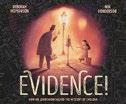
Dr. John Snow, “the father of modern epidemiology,” discovers the cause of cholera.
Behind every great scientist is evidence. When cholera broke out in London in 1854, most people blamed the “bad, smelly air” for the rapid spread of the disease. The English physician Dr. John Snow had a “bold hypothesis.” He had noticed that cholera’s symptoms included vomiting and diarrhea, so
the cause was likely what the victims had ingested rather than something airborne. All he needed was evidence! With expert pacing, Hopkinson sets up Snow’s story as a medical mystery and a race against time. The doctor follows clues, gathers information about where the deceased people lived, plots his data on maps, notices clusters of disease, interviews local residents, and discovers the one thing the dead had in common: They had drunk from the same water pump. Henderson’s moody, expressionistic art captures Londoners’ confusion and concern, while Dr. Snow’s urgent pace is marked with literal dashes across city maps. Hopkinson nimbly acknowledges when she’s using conjecture— “We can guess the hard questions he must ask”—and makes clear when she’s presenting evidence: “This fact is helpful.” At the story’s climax, Dr. Snow presents his findings at a neighborhood meeting, and in a final, incandescent spread, the water pump’s handle is removed—“a milestone in science, a shining moment in the long fight against epidemics.”
A page-turning medical mystery that makes a compelling case for following the facts. (the case against the Broad Street pump, more information on Dr. Snow, list of major infectious diseases and their causes, internet resources, books on Dr. Snow and on epidemics) (Informational picture book. 4-8)

|
Illus. by Don TateNancy Paulsen Books (32 pp.) | $18.99
July 16, 2024 | 9780593615744

Hard-won civic rights turn Election Day into something special for one Black mother. Madear’s children aren’t fully aware of how special today is, but their mother—sporting one of her best dresses—joyously explains that this Tuesday in 1969 will be the first day she gets to vote. She delivers a straightforward civic and history lesson to her children (one of whom narrates) and to readers: “Many obstacles [were] put up to prevent Black folks from voting.” The digital watercolor and mixed-media illustrations become relatively muted during flashbacks in which distressed Black folk are subjected to poll taxes, reading tests, and “even a test where people had to correctly guess the number of jelly beans in a jar!” The subsequent spread of protests contrasts with the vibrant images of Madear with kids in tow proceeding to their city hall in Taylorville, Louisiana. The monumental shift from the disenfranchised past to the present of 1969 is significant, but even still, the young narrator witnesses the mean looks Madear receives as she queues before the voting booth. Nonetheless, she votes and triumphantly leaves the building in her floral dress, bright orange coat, and head scarf, sun streaming behind her. Her children are equally ecstatic; the Voting Rights Act of 1965 would be just the beginning of Madear and her family’s electoral participation. The book
concludes with the family celebrating the election of Barack Obama in 2008. This straightforward yet empowering tale will get youngsters energized for Election Day. A brightly colored retread of voting rights in an easy package. (author’s and illustrator’s notes) (Picture book. 5-8)
Kirkus StarHunsinger, Emma | Greenwillow Books (304 pp.) | $25.99
Aug. 6, 2024 | 9780063158153

An anxious, academically gifted student jumps from seventh grade to freshman year of high school. Thirteen-yearold Tara, who loves to daydream about having adventures, is selected for an accelerated program in which she’ll skip a grade. Instead of attending the eighth grade dance and going on the class trip to Six Flags, she must instead navigate the intimidating new world of high school. Despite some guidance from her older sister, Isla, Tara can’t help but imagine nightmare scenarios, like being publicly humiliated or getting lost in a never-ending hallway. In reality, high school has its pros (pizza in the cafeteria every day) and cons (a group of rowdy boys in English class). When Tara is partnered with classmate Libby for a project, she finds a new favorite part of school in her new crush. Debut author/illustrator Hunsinger’s distinctive style, with its loosely drawn, thin black outlines, is reminiscent of doodles in the margins of student notebooks and perfectly suits the subject matter. The absence of panels reflects the
A slice of life that’s as imaginative as its protagonist.
chaos of this major life transition, and the limited color palette differentiates between teal-tinted reality and red-andpink fantasy, with pops of yellow throughout. Tara’s voice rings true, and readers will find much to relate to in her various social and emotional struggles. Frequent moments of humor create a lighthearted tone despite Tara’s overall angst. Tara reads white; there’s racial diversity among the supporting cast. A slice of life that’s as imaginative as its protagonist. (Graphic fiction. 10-14)
Jackson, Tiffany D. | Illus. by Sawyer Cloud | Dial Books (32 pp.)
$18.99 | Aug. 13, 2024 | 9780593110287

An upbeat young New Yorker finds a way to have a happy Halloween. Janelle has her doctor costume, her trick-or-treat bucket, and a pumpkin ready to be carved. Usually, her mother drives her to the suburbs to trick-or-treat, but this year, both her parents are working. At school, Janelle asks her friends how they’ll be celebrating. Niko tells her that he trick-or-treats in his cousin’s 30-story building, while Nayara walks down Court Street, where shop owners pass out treats—including, in true New York City fashion, mini-bagels. That night, as they carve their pumpkin, Janelle’s father tells her that when he was a child, he stayed home out of fear of “real monsters.” Some of his neighbors opted to stay home even when his community tried to have a safe candy-sharing and costumed event at the nearby playground. YA novelist Jackson conveys the pleasures of Halloween while acknowledging that, due to safety reasons, many city dwellers find their own ways to observe the holiday. Janelle’s compromise—giving out candy from her dad’s store—is a realistic and, ultimately, joy-filled solution. Cloud’s soft cartoon artwork depicts an urban neighborhood full of supportive residents and business owners. Janelle, Niko, and Nayara present Black; their community is diverse. In a sea of trick-or-treat books, this one keeps it real. (Picture book. 4-6)
Kwame Mbalia launches the Freedom Fire imprint, dedicated to “Black stories, Black resilience, and Black joy.”
BY MICHAEL SCHAUBFROM THE VERY beginning, Black stories have been an integral part of Kwame Mbalia’s life.
The no. 1 New York Times bestselling children’s author, best known for his Tristan Strong series, grew up in Milwaukee, the son of parents who were determined to find books that he could relate to. “They scoured independent bookstores, festivals, and conferences—not just in my hometown of Milwaukee, but the country and around the world—as they traveled, looking for books with characters that looked like me by authors who looked like me,” he recalls via Zoom from his home near Raleigh, North Carolina.
Mbalia has always been an avid reader, but after working for years as a pharmaceutical metrologist—a technician who specializes in medicine-manufacturing equipment—he decided to try his hand at creating books like those he’d loved as a young reader. The result was the 2019 middlegrade fantasy novel Tristan Strong Punches a Hole in the Sky, which follows the titular seventh grader as he accidentally opens a portal to the mysterious land of MidPass. Two more books featuring the much-loved character followed: Tristan Strong Destroys the World and Tristan Strong Keeps Punching.
Mbalia also collaborated with Prince Joel Makonnen on two science fiction novels for young readers, Last Gate of the Emperor and its sequel, The Royal Trials, and in 2021, he edited the anthology Black Boy Joy, a collection of 17 stories about growing up Black, featuring contributions from P. Djèlí Clark, Jerry Craft, George M. Johnson, Jason Reynolds, and other writers.
His storytelling journey was just starting. Mbalia is now the publisher of the Disney-Hyperion imprint Freedom Fire, which is dedicated, in his words, to “Black stories, Black resilience, and Black joy.”
“When we say Black stories, we’re talking about the Black diaspora, Black people around the world,” he says. “We’re centering, uplifting, finding those stories, and sharing them with the world.”


The challenge of adding the title publisher to his CV didn’t intimidate Mbalia. “I don’t know what it is about me that insists on biting off more than I can chew, but I’ve never been satisfied with just telling my story,” he says. “I think it comes from being a reader, and every reader knows that sensation where they’ve found a great book and they want to tell someone about it. I feel that way about stories in general, but especially Black stories.”
Freedom Fire launches on Aug. 6 with Tracey Baptiste’s Moko Magic: Carnival Chaos ; Mbalia’s own Jax Freeman and the Phantom Shriek will follow on Oct. 1. Then, on Nov. 12, the imprint will publish Black Girl Power, an anthology edited by Leah Johnson.
“We want to spark a movement,” Mbalia says. “We want to leave those little sparks, those little embers, with every student and classroom and library we visit, so that they have their own burning flame that they can draw heat and inspiration from to create their own stories.”
When you were a young reader, was it difficult for you to find books with elements of Black resilience and Black joy?
My parents were determined to not let that be the case. I had three or four towering bookshelves in the central playroom outside
our bedroom, filled with books that might have had Coretta Scott King Award stickers on them, or books by independent authors and illustrators. I grew up expecting that to be the norm, and I was shocked when I went to public libraries or to my school
library and saw that wasn’t the case. It was almost like getting a bucket of cold water tossed on me, realizing that other kids who looked like me didn’t grow up with those books.
It really must have been special to receive the Coretta Scott King Honor for Tristan Strong Punches a Hole in the Sky.
I was bawling just thinking about how hard my parents looked for those books, and how seeing that Coretta Scott King sticker was such a validation for them. To know that my book would go on the shelf with [those earlier books] was a full-circle moment.
Tracey Baptiste’s Moko Magic: Carnival Chaos comes out in August. How did you decide to make that novel the first release under the new imprint?
First of all, I love Tracey Baptiste. I loved her Jumbies series, so having her on the imprint is phenomenal. Moko Magic: Carnival Chaos is an Afro Caribbean–inspired story about three cousins who are protector spirits, or mokos. It takes place during the Carnival season in Brooklyn, which is around August, so it just makes sense—the timing is perfect. I think it’s a brilliant story about family and cousins and, of course, my favorite thing: magic.
Not long after that, in October, the imprint has a second book, Jax Freeman and the Phantom Shriek , which you wrote. Is it too early to say whether Jax might be a character who comes back in another book in the future?
We already have a second book for Jax, so he is returning. Whether he comes back for a third book—that’ll be a little bit of a surprise. If you love Tristan, you’ll love Jax, but they’re completely different characters. It was fun writing Jax because he’s a big Black kid, and the tendency is to look at him in the real world and maybe shy away, keep an eye on him. But he is a gentle giant who loves meatball sandwiches and discovers that he can summon power from his ancestors. I posit this question to the universe: Who wouldn’t somehow get in trouble if you randomly found out that you could summon power from your ancestors to perform magic? I challenge anyone to make it through the week unscathed.
In November, Freedom Fire is releasing Black Girl Power, an anthology edited by Leah Johnson. Do you see this book as a companion piece to Black Boy Joy ? I feel like this is a spiritual companion to Black Boy Joy. They are siblings; they are mirrors to each other, and they also stand alone. Black Girl Power is filled with contributors [Sharon Draper, Kekla Magoon, Renee Watson, Ibi Zoboi, and Tochi Onyebuchi, among others] who are some of my favorite authors, period, which was also the case with Black Boy Joy. I’m a kid in the candy shop. We get these stories and poems by these fantastic creators who talk about the joy and strength and experience of Black girlhood. I can’t wait to see the books sitting next to
each other on a shelf, not just handing Black Boy Joy to a boy and Black Girl Power to a girl, but exchanging them, reading them, and gaining that experience and empathy from sharing those stories with each other.
Looking down the road, what would you like the impact of Freedom Fire to be?
I’m going to take the conversation full circle. I love knowing that there’s a parent out there—or a guardian, teacher, or librarian—who’s looking for more Black stories. Just as my parents, when they saw the Coretta Scott King sticker, felt reassured and
validated in putting that book on their shelf, when someone sees a Freedom Fire book, they’ll instantly be like, Yes, let’s add this to our collection. Let’s buy this for when my 4-year-old kid gets a little older. Let’s stock our shelves at the library. Let’s do giveaways. Let’s get them into Title I schools. When you see that Freedom Fire logo, I want you to think, I know this is going to be a mirror reflecting all our young Black diaspora readers, but even more so a window for others to read and experience that resilience and that joy.
Michael Schaub is a contributing writer.
I can’t wait to see the books sitting next to each other on the shelf.
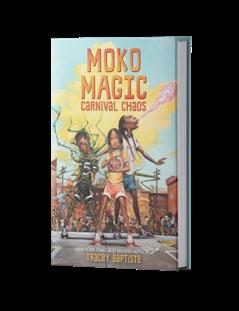

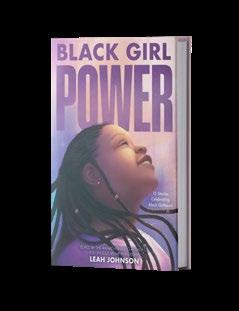














“A laugh-out-loud hi-lo gay romantic comedy… Highly recommended for hi-lo readers who loved Heartstopper.” a starred review, School Library Journal
“A sweet queer love story unfolds on a train… cute banter between the boys will keep readers engaged as the sparks fly… An adorable romance with strong coming-of-age elements.”
Stuck With You by Nathan Burgoine
“A lovely story of learning to chart your own course… a delightful main character, exploring all facets of growing up and becoming one’s own person.”
— Kirkus Reviews
— Kirkus Reviews
Available August 1st — preorder now!
















Available August 1st — preorder now!




















“This accessibly written title will draw in reluctant readers and appeal especially to gamers. Journey and their friends come across as true-to-life nerds… Will engage readers, leaving them alternately cheering and screaming at the cast.”






— Kirkus Reviews
“Losing Hit Points is delightfully queer, wonderfully geeky, and brimming with heart — not to mention a fantastic introduction to Dungeons and Dragons for all ages.”
— Djinn & Tonics Podcast

Losing Hit Points by Kristopher Mielke



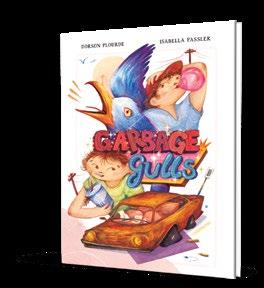


Jarvis | Candlewick (32 pp.) | $17.99 Aug. 6, 2024 | 9781536235869

A youngster is grateful for many unexpected items. It’s important that children learn how to show thankfulness; to that end, a tiny tot in a bright red cap and matching boots expresses gratitude for a host of things. As the book opens, the young protagonist lounges on a crescent moon—the first thing on the list: “I thank the moon / for the nighttime.” That scene’s followed logically by: “I thank the sun for the day.” Stepping through patchwork rocks, the child adds, “I thank my boots for knowing the way.” Clouds are thanked for providing puddles to splash in, a Tyrannosaurus is thanked “for being the longest word I know,” and at bathtime, the child thanks “the toothbrush for my smile” and “the bath for the bubbles.” The gratitude doesn’t end at snack time: “I thank the bowl for the jelly. Thank you, too, little spoon. I’d also like to thank my belly for making just a little more room.” Offbeat in the most delightful and gentle way, Jarvis’ work explores everyday blessings and encourages readers to pay attention to surroundings and actions that bring gratitude. Digitally rendered artwork has the look of cut-paper illustrations, with shapes scattered across the pages, bringing energy and verve to text that’s by turns contemplative and whimsical. The protagonist is tan-skinned, while other characters are racially diverse. A joyfully quirky gratitude journal for the preschool set. (Picture book. 3-6)
Johnson, Bee | Henry Holt (48 pp.)
$18.99 | Aug. 20, 2024 | 9781250900241
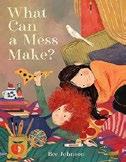
for the children, even as they leave syrup spills in their wake, while crumbs from an outdoor tea party become a feast for ants and squirrels. Repurposed boxes, tins, and a hose are transformed into musical instruments, and cushions and blankets turn into a classic pillow fort. Sometimes messes result in treasured items accidentally getting broken and the two siblings squabbling, but things—and bonds—can soon be mended or made into something new. Johnson’s rhyming text pairs with homey artwork depicting a rustic setting. As each scenario unfolds, the author/illustrator lists various objects—“magic markers. / Missing caps. / Glue and pom-poms”—before revealing the project the protagonists have been working on. The repetitive ebbing and flowing pattern of the words and the narrative establishes a calming tone that sets up the characters and readers alike for a well-earned bedtime, though the mess doesn’t end here: Time for a pillow fight! The eye-catching details in the artwork and the question of what each mess will evolve into keep the book as engaging as it is cozy. Characters present white. An imaginative snapshot of daily life that elevates domestic messes into a soothing lullaby. (Picture book. 3-6)
Slurp, Chomp and Gulp
Kaner, Etta | Illus. by Heather Rae Wilson | Orca (32 pp.) | $21.95 Aug. 13, 2024 | 9781459838130
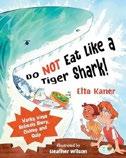
Two siblings make messes throughout the day, with sweet and fun results.
Berries and chocolate mousse are a delicious treat
Guidelines for table manners that won’t irritate or gross out younger siblings. Playing comparisons with animals for laughs, Kaner adjures readers not to taste their salads with their feet as butterflies do with their food, lap soup like a dog, or indulge in similarly inappropriate misbehavior. Wilson supplies cartoon views of both the wildlife in natural settings and a light-skinned, red-haired child slopping food while a darker-skinned little sibling and two parents—one light-skinned, one
Black-presenting—look on in dismay (at first, anyway). A brown-skinned baby sibling gurgles with glee throughout. Along with explaining how, for instance, flamingo bills and the trunks of elephants help these animals pick up food and drink, the author adds tasty additional nature notes: Tasmanian devils sometimes fall asleep inside the carcasses they’re chewing on so that breakfast will be readily available when they awaken; tiger sharks chow down on rubber boots and other trash so indiscriminately that they’re known as the “garbage cans of the sea.” Except for a closing reminder to say “thank you” before leaving the table (because “that’s what people do!”), the examples provided are more likely to inspire than suppress gleeful acting out… but what mealtimes with children wouldn’t benefit from a little more chaos? Rowdy fun, with a few morsels of fact on the side. (additional facts) (Informational picture book. 6-8)
Kann, Claire | Harper/HarperCollins (288 pp.) $19.99 | July 2, 2024 | 9780063069442 Series: Suitehearts, 2
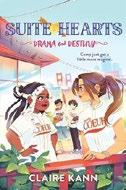
Magical cousins Cora and Rose Seville hone their skills and face new challenges at a two-week camp for Matchmakersin-training.
Emotional Type
A Rose is excited to
be a counselor at the Matchmaking camp taking place at Hotel Coeur, “the most dazzling and romantic hotel in the history of hotels.” Along with studious Cora and 98 other hopefuls, Rose will be making friends, learning new skills, and (if she masters the required elements) testing for promotion and vying for Wunderkind status. The buddy locator spell pairs Year 12 Cora with Hunter Cosmos from Year 14. Meanwhile, much to her dismay, Y12 Rose is paired with Julien Swift, “her former-nemesis-because-she-was-supposed-to-be-a-better-person-now.” As they work through lessons and challenges,
Rose eventually comes to respect her recalcitrant guidebook, changing its name from the Beast to Sunrise. Cora’s guidebook, Scyther, is a steadying force, advising her through the successful completion of a Whirlwind Match. The chapters alternately focus on Rose’s and Cora’s third-person perspectives. The plotlines thoughtfully explore the importance of embracing teamwork while also valuing individual strengths and acknowledging the reality that some people work best on their own. Readers jumping straight into this second series entry may be temporarily baffled by some of the worldbuilding and vocabulary, but the characters’ relationships shine through. Rose and Cora are Black; Rose’s mother is white, and there’s diversity among the secondary cast.
A sequel with heart for aspiring cupids. (Fantasy. 9-13)
Kelly, Erin Entrada | Greenwillow Books (160 pp.) | $18.99 July 16, 2024 | 9780063337169

A magical thrift store blanket turns an 8-yearold boy into a dog. While Felix Powell and his grandmother Nan are exploring Birdie’s Thrift Shop, a well-worn blanket catches his eye. Though Nan points out that it’s summer in Louisiana—hardly blanket weather—he’s certain that it’s something special. At home, Felix tries to unlock the blanket’s power. Can it make him fly? Is it an invisibility cloak? As Felix has a backyard picnic with his dog, Mary Puppins, with whom he can communicate, the two of them play a game: Can You Free Felix From the Blanket While
He Holds On as Tight as He Can? When the blanket comes off, another dog stares back at Puppins—it’s Felix Powell, Boy Dog! While Felix discovers the joys of being a dog, he soon begins to worry: Will his grandmother, who adopted him after his mother couldn’t care for him, want him now that he’s a dog? Will he ever be a human again? Woven effectively into this whimsical story are animal facts and insights into how dogs perceive the world; animal lovers like Felix will be pleased. Kelly folds in lessons of empathy and compassion from Puppins and Gumbo, a haughty yet friendly stray cat. Short chapters feature simple but effective black-and-white illustrations that help move the plot forward. Felix has skin the white of the page. Final art not seen. A charming dog’s tale sure to reward curious readers. (Fiction. 7-11)
The Seasons of Parastoo
Kheiriyeh, Rashin | Nancy Paulsen Books (32 pp.) | $18.99 Aug. 6, 2024 | 9780593108918
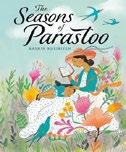
A young girl is enchanted by the beautiful blue swallows outside her window.
Parastoo loves to watch the birds, which look like “a little piece of the sky.” In summer, she admires them from her mother’s lap as they dart among the pink, orange, and yellow blossoms. In autumn, she’s unhappy that the birds fly away. Her mother explains that they migrate south, where it’s warmer, and her grandmother reassures her that they will return. Soon, Parastoo’s mother, a nurse, must leave for the border. Parastoo’s grandparents step up to take care of her. In her dreams, Parastoo flies with the swallows to visit her mother and to see the important work she’s doing
treating injured soldiers. Her grandfather encourages her to make birdhouses for the swallows’ arrival in the spring. Spring comes, but the birds don’t, and Parastoo worries they’ve lost their way. But soon she’s heartened by the chirping of the swallows and the long-awaited arrival of her mother. Bright, dynamic illustrations feature blue and orange motifs throughout, lending the book a feeling of vibrancy even in moments of sadness. The passing of the seasons parallels the separation of mother and daughter, and moments of melancholy are enlivened by hope. Characters are brown-skinned, and though geographic locations aren’t specified, the book’s dedication hints at an Iranian setting.
A rich story that urges readers to hold on to hope. (Picture book. 4-8)
Lai, Remy | Henry Holt (160 pp.)
$13.99 | Aug. 13, 2024 | 9781250323354
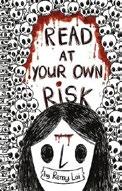
A young girl finds herself plagued by a dark spirit. Seventh grader Hannah Lee and her friends skip an assembly for children’s horror author Leon Star and instead go to the school’s supposedly haunted attic, where they attempt to contact the spirits. Soon after, Hannah realizes she’s unwittingly released an evil curse. Now she must contend with bad luck such as accidentally being skewered by a scalpel during science class. Hannah suspects that Leon Star might know what’s happening and seeks help; unfortunately, he tells her she doesn’t have much time before she’ll succumb to the curse. This inventive tale is presented in journal format as Hannah chronicles her troubles in a mix of doodlelike scrawls and diary entries. Even the pages of her notebook aren’t safe from the malevolent spirit, who often interrupts her musings and responds in red ink. Readers will find much to enjoy in this fast-paced but
extremely macabre tale. Body horror abounds. The book’s pages become spattered with blood as Hannah’s teeth fall out; later her dentist tells her that her gums are overrun with silverfish. Characters who initially seem merely unsettling become shockingly sinisterlooking at times. Lai plays with the form and function of language, adding action and sound effects and deftly tying narrative and visuals together. In the cartoonish illustrations, characters have skin the white of the page. An ominous yet irresistible story that will delight and distress in equal measure. (Horror. 8-12)
Lasky, Kathryn | Harper/ HarperCollins (224 pp.) | $19.99 Aug. 20, 2024 | 9780063294028

Cinderella and her fairy godmother both get new stories in this twist on the classic fairy tale. Fourteen-yearold Bess Wickham lives in a dazzling glass house, surrounded by a rainbow garden of glass flowers. The youngest of three daughters in a glassmaking family, Bess resents the expectation that she’ll join them in creating sterile imitations of the natural world. She’s delighted, then, when her father agrees to let her grow a garden. As it flourishes, she invites her animal friends to visit and pose for the figurines that her family hopes to create in their images. But when the creatures she loves start disappearing, Bess uncovers a sinister secret and flees into the forest, where she learns to access the ancient magic of the druids, claiming the Celtic title of bandia, or fairy godmother. Meanwhile, the Wickhams take in orphaned third cousin Estrella and manipulate her into servitude. Readers will shiver as the Wickhams find ever more wicked ways to capture life in glass. Soon, clever Estrella, who has a passion for astronomy, seems doomed. As abruptly as a carriage transforming back into a pumpkin at midnight, however, the
story ends, with conflicts being resolved, secret identities revealed, and declarations of love unfolding in short order. The overly neat conclusion to a story that initially introduced appealing complexity to a familiar tale is disappointing. Main characters present white.
Inventive, with intriguing heroines and despicable villains, but doesn’t quite land the happy ending. (Fantasy. 8-12)
Lee Gee Eun | Trans. by Aerin Park
Levine Querido (80 pp.) | $19.99
Sept. 10, 2024 | 9781646144594

Everything changes when a dandelion lands on a tiger’s tail.
A grumpy tiger is “bear-y mischievous,” much to the chagrin of his fellow forest dwellers. One day, a dandelion with a human face falls from the sky and becomes attached to Tiger’s tail. After a raucous round of tail spinning fails to detach the cankerwort, the cantankerous feline soon realizes that his new friend is his opposite; Tail-Flower makes friends with the denizens of the woods and encourages him to perform acts of benevolence, creating goodwill along the way. As time passes, Tiger and Tail-Flower get closer. Tiger’s orange fur turns white as snow, and Tail-Flower’s vibrant yellow leaves start to become white poofs; Tail-Flower’s face becomes lined, too. When Tiger and Tail-Flower get caught in a trap, Tail-Flower asks Tiger to blow. He does, and the dandelion’s delicate tendrils spread all over the
forest; Tail-Flower is dead. The other animals come together to mourn the loss of their beloved friend and to rescue and comfort Tiger. Translated from Korean, this beautiful fable explores the need for companionship and the inevitability of death. With a mix of panels and full-page spreads, Lee’s loose, digital art makes fantastic use of the format, capturing both the exuberance of the good times and Tiger’s grief. The narrative is bookended by an East Asian–presenting elder who eagerly tells the tale. A gorgeously told story of the people who come into your life for a reason. (Picture book. 6-8)
Lee, Juck | Illus. by Jinhee Lee | Trans. by Stine An | Enchanted Lion Books (48 pp.) $18.95 | Aug. 20, 2024 | 9781592704002

This friendship story is out of this world. A lonely star in the sky just wants a companion. In the distance, it spies a comet with a tail that “sparkle[s] like a flame.” The star is thrilled and cries out, “Will you be my friend?” But the comet flies by without stopping, and the star starts to cry. After 76 years, the comet passes by again, raising the star’s hopes. The comet apologizes for its silence and enthusiastically answers that they can indeed be friends. Calling out, “Let’s meet again in another 76 years,” the comet races off. Their meeting, separation, and eventual union are chronicled in an amateur astronomer’s notebook featuring drawings, photographs, and doodles of the sky throughout the years. Translated
Heartfelt evidence that true connections exist in the cosmos and beyond.
COMET & STAR, A STORY OF COSMIC FRIENDSHIP
from Korean, this is a lovely tribute to the power of patience, the wonders of our universe, and friendship triumphing over loneliness. The spare text complements the soft, detailed illustrations, rendered in a warm palette of blue, orange, and yellow to express both the dismay the star feels at the missed connection and the joy of forging a bond in this vast universe. A concluding note briefly cites Halley’s Comet and its multi-decade trajectory as inspiration for this beautifully told tale. The hands seen drawing in the notebook are tan-skinned.
Heartfelt evidence that true connections exist in the cosmos and beyond. (Picture book. 4-7)
Kirkus Star
Dark!: Wild
the
Leigh, Lindsey | Penguin Workshop (96 pp.)
$15.99 | July 9, 2024 | 9780593662595
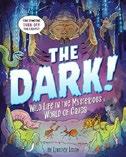
Leigh follows up The Deep! (2023)—a dive into undersea life—with a celebration of cave-dwelling creatures.
This work of graphic nonfiction starts with a brief, easily digestible introduction to caves before moving on to its true focus: the animal inhabitants. The longest section is devoted to the troglobites, full-time cave dwellers that have adapted to a life of total darkness; other sections cover the troglophiles, which spend at least part of their life cycles in caves, and the trogloxenes, such as bats and bears, that just show up for visits. Double-page spreads explore selected cave animals, offering fascinating tidbits—such as the difference between an olm and an axolotl—sure to tempt youngsters into learning more about their favorite critters. Leigh’s strong sense of humor is on display throughout, from plainly stated facts about animals’ bodily excretions to moments where the creatures—occasionally anthropomorphized but always accurately depicted—offer quirky commentary
through speech bubbles. Although she occasionally mentions how these creatures can benefit people (for instance, studying the Mexican tetra, a fish with high blood sugar, might help us treat diabetes), for the most part, she encourages readers to love these places and species for their own sake. Final sections spotlight cool caves around the world (like Vietnam’s Son Doong cave, which is so big that it contains a rainforest in it), humanity’s own history with caves, and the dangers humans pose to such environments. As factually grounded as it is irresistibly fun. (index) (Graphic nonfiction. 8-12)
L’Engle, Madeleine | Illus. by Michelle Jing Chan | Farrar, Straus and Giroux (24 pp.) $18.99 | Aug. 6, 2024 | 9780374390839

Girls harness their anger to make positive change. Midway through the 1962 classic A Wrinkle in Time, the late L’Engle writes: “‘Stay angry, little Meg,’ Mrs Whatsit whispered. ‘You will need all your anger now.’” Chan uses this quote as a rallying cry to inspire readers, dedicating this book “to all the Meg Murrys.” The opening spread features a group of girls diverse in terms of race and ability listening to a librarian read from L’Engle’s novel while a sign propped up on a nearby bookshelf states, “Books unite us, censorship divides us.” While the text is more exhortation than narrative, the digital illustrations suggest a wordless story that begins with two girls looking askance at a field filled with tree stumps enclosed by a fence bearing a sign that reads, “Park closed, mall coming soon!” and ends with an image of a newly created park and an inclusive community garden, a result of the girls using their anger for good. Along the way, the bold, cheerful illustrations depict girls researching deforestation at the library, marching in support of LGBTQ+ rights, staying curious (a girl using a wheelchair studies renewable energy), welcoming others (a girl in a hijab eating alone is invited to join other girls at lunch), singing, and playing. Chan reclaims the
famous L’Engle quote—which was excised from the movie adaptation—and gives girls a full-throated endorsement to be true to themselves.
Empowering. (Picture book. 4-8)
Lindell, Lawrence | Random House Graphic (240 pp.) | $21.99 Aug. 27, 2024 | 9780593479797

A middle schooler struggles to handle changes in his life.
As much as Lonnie loves living with his mom and sister, he misses his dad. Since his parents’ divorce, Lonnie primarily spends time with Dad when he picks Lonnie up from school. Although he’s embarrassed about the split, he’s unable to share his feelings—even when his parents ask him how he’s doing—until he can’t hold everything in anymore. After getting in trouble at school, Lonnie finally reveals how much he wants life to go back to the way it was, but he still ends up in detention for getting back at a kid who mocked him for having divorced parents. Gradually Lonnie uses his time with Dad to be more open about his feelings and sexuality; he also expresses enthusiasm for comics and finds common ground with his father. When his parents mutually decide on family therapy, Lonnie is initially anxious but ultimately grows into healthier relationships and self-expression. The graphic novel format, with its clean backgrounds and bright colors, effectively conveys the variety of emotions the family members experience, and the many wordless panels propel the story forward. Time spent with various configurations of the family riding in cars together nicely captures their dynamics (particularly the father-and-son tensions); with the characters facing forward in their seats, Lindell can highlight their expressions. Lonnie and his family are Black. A successful blending of text and image that results in engaging storytelling. (Graphic fiction. 8-12)
Kirkus Star
London, Alex | Illus. by Paul O. Zelinsky Greenwillow Books (40 pp.) | $19.99 Sept. 3, 2024 | 9780063229556

A canvas depicting an assemblage of items on a tablecloth comes to life, upending traditional assumptions surrounding artistic conventions.
The book’s narrator—an earnest, light-skinned artist with curly, salt-and-pepper hair—announces, “This is a still life. A painting of objects sitting still. In a still life, nothing moves.” A close-up reveals succulent fruit, a quill pen and an inkwell, and a castlelike dollhouse. In contrast to the painter and other characters, rendered as bright, flat caricatures, the painting is portrayed with a range of colors, subtle shading, soft texture, and a wealth of detail. As the artist continues with inspired musings about stillness, two mice appear and run inside the painting. The narrator urges readers to ignore the “jammy footprints” emerging from an open jar within the painting. Next, a dragon steps forth; the painter stresses that such creatures don’t belong “in this sort of painting.” Then a valiant knight arrives to slay the dragon, and a tan-skinned princess appears on the dollhouse’s throne. Zelinsky’s hilarious, action-packed scenes—a combination of hand drawing and digital work—contrast with the narrator’s serious admonitions not to acknowledge the dragon’s desperate plea for help, nor to pay any attention as the princess uses a spool of thread to zip-line down to join the ensuing chaos. Readers will be left with plenty to laugh—and learn—about as the artist exits.
A superb example of text and image telling opposing stories—and of the humor that can be found in the intersection. (Picture book. 4-6)
MOMMA’S GOING TO MARCH
Maclear, Kyo | Illus. by Gracey Zhang
Random House Studio (40 pp.)
$18.99 | Aug. 27, 2024 | 9780593706084

Impressive towers of noodles whiz through the city in this charming tribute to the hardworking deliverymen of midcentury Tokyo.
A gaggle of children wait patiently to catch a glimpse of the demae (deliverymen) as they set off from the soba noodle shop in the morning. The youngsters stare with wide-mouthed wonder as the men stack trays upon trays of ceramic soup bowls and wooden soba boxes on their shoulders. Arms steady, the demae mount their bicycles and weave their way through busy streets to feed a hungry city. The deliverymen “are artists. Architects. Tough talkers. Speedy spinners…and acrobats,” expertly navigating the curves and hills of the city landscape until they return to their families at night. Drawing on youthful memories of summers spent in Tokyo’s NishiOgikubo neighborhood, Maclear crafts a compelling story from a child’s perspective, engaging the senses with rhythmic prose and onomatopoeia. Her author’s note explains that this delivery method—used from the 1930s to the ’70s—was eventually phased out. Perfectly complementing the text, Zhang’s illustrations use lively and expressive strokes of ink and gouache, each spread bursting with character. Readers will enjoy poring over the delightful details on each page. Maclear and Zhang have created an intimate and immersive
experience that transports readers to the Tokyo of yesteryear, allowing them to bask in the sights, scents, and sounds of the busy city.
A fascinating, loving snapshot of a gravity-defying artform lost to time. (author’s note, glossary, photos) (Picture book. 4-8)
Maruno, Jennifer | Illus. by Vivian Rosas Groundwood (32 pp.) | $19.99
Aug. 6, 2024 | 9781773065519

March with Momma for change!
Alongside their children, mommas of various sizes and skin tones “march / march / MARCH” for integrated schools, equality, peace, clean water, and more. Maruno’s gentle, straightforward text introduces readers to different mommas and their children making signs, putting on warm, woolly socks, packing bottles of water, and more. Children ask questions: “Will there be bands and bugles?” “Will there be balloons?” “Will there be ice cream and hot dogs?” The mothers each respond: “It’s not that kind of march.” At the various protests, they hold signs with brave messages, beat drums, and raise their arms to demonstrate solidarity. Though the families attend different marches, these events share a common goal as the mommas show their children how to push for change. Rosas’ warm, inviting palette of vivid purples, greens, and oranges portrays the smiling, friendly mommas standing with their communities; young readers and their families will be inspired to join social movements wherever they take place. The illustrations depict the
Kirkus Starmommas as distinct individuals, allowing readers to see themselves as activists. Backmatter offers additional insights into the meaning behind the objects and actions in the story as well as historical context for marches.
A beautifully illustrated, familyfriendly guide to activism.
(author’s note) (Picture book. 4-8)
McKinnon, Heidi | Algonquin (32 pp.)
$15.99 | April 23, 2024 | 9781523525867
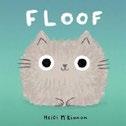
A cat’s gonna cat. Floof, a large, very fluffy brown-gray cat, welcomes readers to this sweet, comical book with an open paw. Who could resist the “floofiest” cat there is, with big, round eyes, a bushy tail, and an adorable smile? Readers learn about Floof’s likes and dislikes; for instance, Floof loves syrupy pancakes and pizza. As for cat food, Floof can definitely leave it (and does). What else does Floof do? Plenty! “Floof reads. Floof gardens. Floof has many hobbies.” The accompanying illustrations show Floof slumbering atop a stack of books and in a planter. Floof also finds time to fit into boxes. Floof “has important work to do,” too—we see Floof dozing on a computer keyboard. Floof has friends—like the mice who gobble the family’s food while Floof naps—but not the scary-looking dog. After a very busy day, it’s lights out—for everyone else—and then a whole night for Floof to cut loose and carouse. There’s nothing new here, but cat lovers will smile at this knowing, loving glimpse into a feline’s typical daily and nightly routines. The engaging text welcomes emergent readers with very basic language—just one or two sentences or phrases per page—and the lively, humorous illustrations have a tactile quality; Floof’s, well, very floofy, just waiting to be petted. Calling all kitty lovers: This charmer will make a purr-fect gift for new cat parents. (Picture book. 3-6)
Melleby, Nicole | Algonquin (224 pp.)
$16.99 | May 7, 2024 | 9781643753126
Series: The House on Sunrise Lagoon, 3
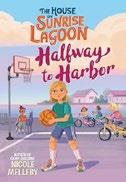
Where do you fit when you’re watching from the sidelines?
Continuing the lives of the Ali-O’Connor family, this third series installment focuses on the eldest sibling, 12-year-old Harbor, who presents white. This summer, a friend of her dad’s invites her to join the elite girls’ basketball team she coaches, an important step for Harbor if she wants to stay serious about the sport. Instead of her usual two weekends a month, Harbor would therefore stay with her dad every weekend. The arrangement seems like a great deal to Harbor, who’s been finding her moms’ crowded house of seven people (plus a dog) even more stifling than usual. At the same time, Harbor’s dealing with a recent growth spurt, her suddenly strained relationship with her best friend, and not starting on the elite team, plus some unexpected new feelings of attraction. Maybe she should make the move to her dad’s place permanent? Melleby’s series continues to explore strong themes of discovering one’s place within the family, this time through Harbor’s unique position of being the only sibling who has a known father in her life and who is a child of divorce (two of her siblings are adopted, and two have a sperm donor). The story contains many potential points of identification for young readers as Melleby explores the journey of a preteen who’s dealing with emotional struggles through skillfully drawn, loving characters and a seamless plot.
Candid and uplifting. (Fiction. 8-12)

Murguia, Bethanie | Roaring Brook Press (160 pp.) | $13.99 paper | July 23, 2024 9781250908735 | Series: Wagnificent, 1

For more by Nicole Melleby, visit Kirkus online.
A dutiful dog is challenged by her wilder side. Thunder loves her owner, a light-skinned, purple-haired girl named Sage. Sage gives Thunder a comfortable home, serenades her, and takes her on walks. But Thunder is coming to learn more about the gulf between her canine nature and her human’s expectations. Exploring a newfound passion for magic and fantasy, Sage dresses her pet in a wizard’s robe. Thunder’s inner wolf comes to life in her frustration, urging her to rip up the robe and embrace her lupine leanings. What begins as a bright buddy comic quickly becomes a poignant reflection on canine domestication as Thunder realizes that her responses to stimuli in the human and natural worlds are rooted in wolfish instincts. Growling at other dogs is her way of protecting her pack, while her need to hunt comes out when she chases squirrels. Eventually, Thunder flees to the woods. Will she find a way to balance her love for Sage with her wild instincts? Capturing both goofy and tender moments, Murguia’s cartoon illustrations depict the cozy comfort of civilization and the untamed beauty of the woods. Editorial comments in big black arrows and occasional “wagometers” indicating Thunder’s state of mind ramp up the humor. Each chapter concludes with “Pack Manners” interludes—brief comics with hilariously spot-on examples of typical canine behaviors—and backmatter further examines the origins, physiology, and habits of the modern dog. A thoughtful, ambitious adventure for aspiring animal behaviorists. (author’s note, additional reading) (Graphic fiction. 6-10)
The new audio editions of J.K. Rowling’s novels will feature a cast of more than 100 actors.
J.K. Rowling’s Harry Potter novels are getting an audiobook reboot, Variety reports.
Audible, the audiobook service owned by Amazon, is collaborating with Pottermore Publishing to develop new audio adaptations of all seven of Rowling’s children’s fantasy novels.
Rowling introduced her world-famous young wizard in 1997 with Harry Potter and the Philosopher’s Stone (published in the U.S. as Harry Potter and the Sorcerer’s Stone). The novel was a massive bestseller, and Rowling

would go on to write six more books in the series. The novels spawned a series of blockbuster film adaptations starring Daniel Radcliffe, and Harry became one of the most iconic figures in English-language children’s literature. A television series based on the books is in the works at Max.
The original audiobook versions of the novels, narrated by Stephen Fry in the U.K. and Jim Dale in the U.S., were also massive hits. In 2022, Pottermore Publishing announced that fans have listened to those versions for more than 1 billion hours.
The new versions, Variety reports, will feature a full cast of more than 100 actors narrating the books.
Audible CEO Bob Carrigan said, “We are thrilled about the opportunity to be part of this next chapter— delighting new and old fans alike with a reinvigorated listening experience that Audible is expertly positioned to create.”
The new audiobooks are scheduled for release in 2025.—M.S.

For reviews of all the Harry Potter books, visit Kirkus online.

from award - winning author Wendy Orr


“a just-right mix of fantasy and reality...a beautifully executed, fantastical what-if tale for right now.”
Kirkus Reviews
Starred Review
“a novel that will sink into readers’ bones... a wonderful, unique family survival story.”
School L ibrary Journal
Starred Review




The cartoonist’s Amazing Grapes will be published by HarperCollins this fall.
Jules Feiffer’s first graphic novel for young readers is coming later this year.
HarperCollins will publish Feiffer’s Amazing Grapes this fall, the press announced in a news release. It describes the book as “a surreal and affecting new graphic novel for middle-grade readers that brings the fantastical to life with Feiffer’s signature style in a zany, whimsical adventure about a family on a quest to find their mother and save another dimension.”
Feiffer was a staff cartoonist at the Village Voice for more than 40 years. He is also a playwright (Little Murders, Knock Knock

and screenwriter (Carnal Knowledge, Popeye) and the author of children’s books including Meanwhile, The Daddy Mountain, and Rupert Can Dance
In a statement, Feiffer said, “Writing for young readers connects me professionally to a part of myself that I didn’t know how to let out until I was sixty. That kid who lived a life of innocence, mixed with confusion and consternation, disappointment and dopey humor. And who drew comic strips and needed friends—and found them—in cartoons and children’s books that told him what the grown-ups in his life had left out.”
Amazing Grapes is scheduled for publication on Sept. 24.—M.S.

Kirkus Star
Nicholls, Sally | Illus. by Júlia Sardà | Viking (48 pp.) | $19.99 Aug. 13, 2024 | 9780593692103

A lesser-known Brothers Grimm tale finds new life. Upon the birth of his son, a poor fisherman sets out to find an appropriate godfather. First, he approaches God but doesn’t care for God’s sense of fairness—God claims to treat all the same, but the fisherman points out that some people live charmed lives, while others experience only hardship. Next, he considers the Devil but rejects him for his wickedness. Finally, he encounters Death and, upon realizing that Death is always fair and honest (he takes everyone, rich or poor), makes him his son’s godfather. Soon thereafter, Death grants the fisherman information that will make him a rich doctor. If Death stands at the foot of a patient’s bed, the patient can be cured. If Death stands at the head of the bed, nothing can be done. All goes well, until the day the fisherman foolishly decides to trick Death himself. Nicholls proves unafraid to attach an appropriately bleak ending to this straightforward morality tale, doing so with such flair that many (though not all) will forgive her. Along the way, she tweaks the original tale, turning it into something palatable to contemporary readers. Meanwhile, Sardà’s limited orange, green, and red palette and distinctive style evoke the colored lithographs of artists such as Walter Crane. Characters have paperwhite skin.
Deft writing and entrancing art prove once more why the old stories are worth retelling. (Picture book/folktale. 7-10)
Perron, Lisa Varchol & Taylor Perron Illus. by David Scheirer | Rise x Penguin Workshop (32 pp.) | $18.99 July 16, 2024 | 9780593662151

What kinds of rocks do you love?
Poet and psychotherapist
Lisa Varchol Perron and her husband, Taylor Perron, a geology professor, have combined their different areas of expertise, with appealing, accessible, and informative results. Told in verse and accompanied by carefully composed watercolors, this simple introduction to geology opens by a river; one child looks at rocks in the grass while in the distance an adult and several other kids, one of whom uses a wheelchair, return from the waterside. Ensuing spreads depict diverse children interacting with various types of rocks, from chert to granite. A curious youngster takes pleasure in stacking pieces of shale. A fearful child finds comfort in holding a piece of obsidian. Agate makes a delightful gift for a loved one. Some activities will be familiar to readers: A bespectacled youth draws on the sidewalk with chalk as a seagull looks on; another child tosses pumice into the water and smiles as it floats. Each spread contains a four-line stanza that scans well. The useful backmatter includes excellent descriptions of the 10 kinds of rocks presented; the
authors also remind readers that “some rocks need to stay put in order to preserve the geology and ecology of an area or to respect local beliefs and practices.”
Smashing! (Informational picture book. 3-6)
Perry, Jamar J. | Bloomsbury (320 pp.)
$17.99 | Aug. 27, 2024 | 9781547612789

A bashful boy searches for his vanished best friend in a magical world. Jaden Powers, a timid Black 12-year-old, doesn’t want to face seventh grade without his all-star, private school–going best friend, Elijah Williams, by his side. When Elijah disappears, Jaden demonstrates an unexpected gift of magic and vows to unravel the truth behind what happened to him. Soon Jaden is invited to join the Five Emergences School of Magic, where he’ll learn how to become a Sorcerer—just like Elijah, it turns out. Shepherded by the enigmatic headmaster, Simeon Carmine, Jaden steps into the magical world of Wonder. There, rumors abound of Elijah’s siphoning magic from others, behavior that’s connected with the sudden appearance of the Ruin, a dark, potentially world-ending force. Aided by classmate Mikael Levine and water nymph Scion Midra from the kingdom of Atlantis, Jaden seeks to clear Elijah’s name. Though familiar in its evocation of narrative and character tropes, Perry spins fine intrigue through compelling worldbuilding that’s anchored by an amiable hero who unearths his inner strength thanks to compassion and determination. Eccentric bits of humor add flair to Wonder and its diverse, predominantly Black, cast. Meanwhile, the core relationship
between Jaden and Elijah—which is full of love and loyalty—endures. Utterly hypnotic. (Fantasy. 8-12)
Phillips, Tom | Pixel+Ink (368 pp.)
$18.99 | Aug. 13, 2024 | 9781645952374
Series: The Curious League of Detectives and Thieves, 3

Fledgling sleuth John Boarhog and other survivors of volume two’s airship wreck gather for a climactic tussle with a criminal mastermind. Picking up where the previous series entry left off, this tale pitches the 12-year-old detective (who’s portrayed as brown-skinned on the cover) and sidekicks Wembley “Danger” Quokkas and Kana Rai Kuma—respectively, an Aussie brainiac and a super-strong Japanese circus performer—into a running battle aboard a luxurious train that’s gliding through the Peruvian rainforest. The Peruvian Express is heading toward a bridge that’s been blown up with dynamite, and the journey features a side expedition to hidden caverns beneath Machu Picchu that are guarded by tricky traps and puzzles. If Phillips adds even more characters to his already dizzyingly large cast and seems less focused on the plot than on exploring various combinations of children losing and finding missing, bad, or replacement parents, he does nevertheless bestow happy reunions and reconciliations on the three adventurers by the end. And, while punctuating the narrative with nods to pop-culture icons from Agatha Christie to Indiana Jones, he also contrives to include suitable numbers of sudden threats, hair’sbreadth rescues, secret agendas and messages, betrayals, explosions, and feats of both courage and clever deduction. Reasonably brisk, though top heavy with family issues. (Detective fiction. 10-13)
Kirkus Star
Porter Siddell, Magnolia | Illus. by Maddi Gonzalez | First Second (288 pp.) $22.99 | Aug. 13, 2024 | 9781250757814

A self-absorbed fangirl opens up to others after a fantasy portal opens up to her.
Marnie Plummer relishes the Griffon Riders fantasy novels for the escapism and friendship they provide. Extroverted, popular classmates like Tiffany Rodriguez fill Marnie with self-loathing, but the girls’ paths intertwine when the squat blue fairy Orion, who resembles a winged tapir, appears and mistakes Marnie for Tiffany, the chosen one who can save their world from the Witch Elel. Marnie doesn’t correct the mix-up; shouldn’t the glory go to a real fan? Nevertheless, Marnie and Tiffany end up raising a baby griffon together and bonding over each other’s interests. Marnie ushers Tiffany into the worlds of fanfiction and fanart, while Tiffany turns out to be harboring worries over her father’s health as well as a secret same-sex crush. Porter Siddell infuses the evolving friendship and eventual fantasy-adventure with a great sense of humor, for example through Marnie’s looks of disappointment each time cheerleader Tiffany obliviously proves to be a natural chosen one. Built-in meta-humor compounds the laughs as fantasy and reality collide, and a tragically clarifying flashback will have readers as much in tears as the protagonists. Gonzalez’s art, in muted, dusty pastels, effectively uses shadow and light to draw readers’ attention to the dramatic focal points of the varied panels. Blond, bespectacled Marnie reads white; brown-skinned Tiffany is cued Latine.
An emotionally affecting work that explores the power of stories. (rough layouts, character sketches) (Graphic fiction. 10-14)
Quintart, Natalie | Illus. by Philippe Goossens | Clavis (32 pp.) | $19.95
July 23, 2024 | 9798890630056
Series: Little Tractor, 5

A bright red tractor learns to share.
Little Tractor lives on a farm with plenty of pals. Spring is on its way, and he’s happy, at least until a pair of swallows build a nest in his barn. They require an open window to fly in and out of in order to gather food and nest materials, but that leaves Little Tractor cold and wet during a heavy rain—and he soon finds himself spattered with bird poop. When the farm animals come to visit the baby birds, Little Tractor “feels crowded out of his own barn.” Life with the swallows is noisy, messy, and distressingly different. Irritated, he yells at them, and one of the startled babies falls…and, luckily, spreads her wings and flies. Later, Little Tractor befriends the baby swallow, named Adele. Little Tractor is finally happy to share his barn with the swallow family; when the farm animals work together to scrub Little Tractor’s hood until it shines, “His heart fills with the love for his friends, new and old.”
Originally published in Belgium and the Netherlands, this simple, slightly old-fashioned tale quietly captures the trials of sharing space and models the healing value of friendship. Minor tweaks to his eyes and mouth convey Little Tractor’s annoyance, surprise, and delight. Little Tractor is the centerpiece of the illustrations, set against detailed but uncluttered backgrounds, making this book a good storytime read. Make room in the barnyard—and on the shelf—for this one! (Picture book. 4-7)

Quintart, Natalie | Illus. by Philippe Goossens | Clavis (32 pp.) | $19.95
July 23, 2024 | 9798890630308
Series: Little Tractor, 6
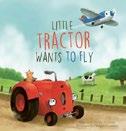
“I want to be like you, and you want to be like me!”
In this addition to the Little Tractor series, originally published in Belgium and the Netherlands, Little Tractor and his barnyard friends meet Gaston, a small one-seater airplane. Little Tractor envies Gaston’s ability to fly and do acrobatic stunts. A few days later, Little Tractor surprises his friends by strapping a wooden board to his hood—these are his wings, he explains. But when Little Tractor revs up to fly, he ends up plowing into a group of bushes. Though his friends remind him of all he can do, Little Tractor remains upset over what he can’t do—fly. As luck would have it, Gaston swoops in too low one day and gets stuck in a tree in the woods. Anton the horse pulls Gaston out of the tree, but the plane doesn’t have enough room to take off. Little Tractor comes to the rescue and takes to heart Gaston’s praise—and envy—of his pulling ability. By the time Gaston leaves, both he and Little Tractor have learned to appreciate their own special strengths. Little Tractor, illustrated in bright red, is a cheery contrast to blue-and-white Gaston. Attentive readers will notice how Little Tractor’s and Gaston’s facial features add emotion to each scene. Colorful, detailed backgrounds
complete each scene and make this book a strong storytime read that will help little ones learn to value what makes them special. Good-hearted lessons from an earnest, lovable protagonist. (Picture book. 4-7)
Reardon, Joan | Aladdin (352 pp.)
$17.99 | Aug. 20, 2024 | 9781665929561

During a quest to try to save her brother, a girl must confront her fears about living up to her family’s legacy. Bold and brave Anna can’t wait to turn 13 and join her family of witch hunters in Witchless, Indiana, “the Cryptid Capital of the USA.” But her twin brother, Billy, faces the curse of all boys in the Grimsbane family: being home-schooled from age 13 and overprotected in order to avoid the curse of “a horrible, miserable death.” Determined to avoid this fate by breaking the curse, Billy sets off on an adventure on the eve of their birthday, thus setting up a ticking clock that runs down in each chapter, building a satisfying suspense. Worried about Billy’s ability to survive the threats he faces, Anna (who’s cued white) convinces her best friends, Suvi Kumar and Rosario Ortiz-Rivera, that Billy’s fate depends on their actions, and the trio go on a mission to save him. With everything to lose, Anna finds her confidence and skills tested as they face a wild
array of threats from all directions including cryptids, a witch known as the Watcher (who’s evaded the Grimsbanes for generations), and more. Regularly saved by the empathic Rosario, who has two moms, Anna confronts unexpected family revelations during her journey. Although the characterization feels less than organic, this spooky, fast-paced read is engaging. Adventurous, plot-driven mayhem. (Paranormal. 8-12)
Renn, Diana | Fitzroy Books (282 pp.) | $16.95 paper | Aug. 13, 2024 | 9781646034789

A group of burgeoning conservationists discover that someone in their area is baiting owls, endangering the birds.
Fifth grader Miles is back with his friends, the Backyard Rangers, after their success with saving Blanding’s turtles from poachers in 2022’s Trouble at Turtle Pond . A class assignment involving identifying birds spikes the kids’ interest in trying to spot Bella, a barred owl who’s been spotted emerging in daylight and who isn’t intimidated by humans, thus drawing crowds of onlookers. Miles finds owl pellets by his house, and when his class dissects them, they notice white mouse fur, signifying that someone is baiting owls with domesticated mice. The students learn that this practice increases owls’ dependence on people for food and alters their natural behavior. An owl, likely lured by bait to the side of the road, was even recently hit by a car. The Backyard Rangers decide to act before more owls get hurt. Miles’ ADHD is authentically portrayed as both a challenge and a strength; his impulsivity strains his friendships, but his creative thinking and ability to track details make him a great detective. Renn allows her characters
to be realistically flawed, portraying them with nuance. Despite references to events of the previous volume, enjoyment of this sequel isn’t dependent on having read it. Miles presents white; there’s ethnic and racial diversity among the supporting cast. A satisfying environmental mystery in which kids are the problem solvers. (author’s note) (Mystery. 8-12)
Rinker, Sherri Duskey | Illus. by AG Ford Chronicle Books (48 pp.) | $18.99 Sept. 24, 2024 | 9781797226552 | Series: Goodnight, Goodnight Construction Site

The beloved Construction Site team gives a neighborhood a restorative facelift. This time Bulldozer, Dump Truck, and company are confronted with a job that’s not quite in their wheelhouse. Instead of demolishing and building afresh, they’re going to renovate a suburban neighborhood that’s fallen into disrepair. What to do with the “heaps of rubbish” and “junk piles everywhere”? The usual crew calls for help, and soon an array of specialists parade in: Roll Off Truck, Container Delivery Truck, Flatbed, Skid Steer, Side Loaders, Rear Loaders, Front Loaders, and Garbage Trucks. Their arrival is prefaced by their aroma (they are the Garbage Crew, after all), but still they’re “a fleet of heroes!” Our old Construction Site friends help sort the mounds of accumulated trash for recycling or composting,
and the Garbage Crew hauls it away. Cooperation is the instinctive rule; everyone does their part. While the removal is underway, construction begins: The Construction Crew installs new windows and doors, plants trees, and paves streets. Some trucks are given male or female pronouns, but they don’t have external gender signifiers. The verse is still propulsive, with a few gear shifts but no stalling, and detailed illustrations by series regular Ford have an old-fashioned charm. One fascinating cross-section of a garbage truck lets readers glimpse its internal workings. Still going strong more than a decade after they made their debut, these vehicles never run out of oomph.
This series keeps rolling along, delivering just what fans want.
(Picture book. 3-5)
Rivas, Christopher | Illus. by Ariel Boroff Wheat Penny Press (40 pp.) | $17.99 July 16, 2024 | 9798986827346

Actor and podcaster Rivas offers effervescent affirmation that when it comes to being alive, we are all huge winners. It all begins with “the biggest race of your life,” depicted in Boroff’s animated, glowing illustrations as a cloud of sperm rendered as thumbprints or thumbprint-shaped blobs with long, wriggly tails zooming toward an egg cell. Being “crafty… quick…smart and a little wild,” one particular “you” got there first, and with a bit of placental protection,
A powerful must-read for students of North American history.
“all the forces of the universe cooperated so that you could be here.” Rivas covers the bases, evolution-wise, with separate, allusive references to a heritage measured in “billions of years” and to something “mysterious, immense, and profound” that “had already decided, since the beginning of time, that you would exist.” More importantly, you were wanted, the author affirms. And, being “a champion of ch ampions. Genetically speaking,” you “WERE BORN A WINNER.”
The egg’s role doesn’t get much explicit notice in the narrative, but it does in the artwork, which includes schematic but recognizable views of an ovum, a placenta, and several figures with bulging midriffs. Also, on another page, silhouetted couples, including one who uses a wheelchair, dance at a “starting line” (and “there are many starting lines,” Rivas writes). Not exactly evenhanded in ascribing genetic agency but joyous, clever, and inclusive. (Picture book. 5-8)
Romo, David Dorado | Crown (352 pp.) | $8.99 paper | Aug. 20, 2024 9780593567753 | Series: Race to the Truth
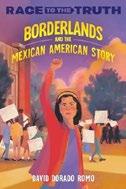
A thorough yet concise recounting of the ways the U.S./Mexico border has shaped how history has been told. The work opens 23,000 years ago, when North America was settled by its first people. This framing lays the foundation for the often overlooked fact that a steady stream of migration and trade has flowed back and forth between what is now the U.S. and Mexico long before the modern border existed, making the case that our histories are interwoven. For
example, many Indigenous people in Mexico and the western U.S. speak Uto-Aztecan languages, including Nahuatl, Shoshone, Hopi, and Comanche. The book also informs readers about darker episodes, such as enslavement and policies based on eugenics. Romo celebrates lesserknown heroes, like the 19th-century Mexican American leader Juan Cortina, who helped defend the borderlands community from violent invaders, and he holds up for scrutiny harmful misinformation, such as the Texas Creation Myth, an incomplete narrative from an Anglo perspective that was long taught in schools. Text boxes titled “Let’s Think About This” appear throughout this comprehensive history, posing questions for readers to ponder that encourage deeper thinking about historical biases. By the end, they’ll understand how past events have led to the present-day situation at the border. The concise chapters are enhanced with photos and broken down into accessible chunks, making this a strong work for any student, teacher, or parent seeking an accurate, well-researched distillation of complex events. A powerful must-read for students of North American history. (Nonfiction. 10-14)
Rosenbaum, Adam | Holiday House (224 pp.) | $17.99 Aug. 13, 2024 | 9780823456581

Elwood P. McGee has experienced some hard and unexpected changes lately, but he certainly didn’t expect to acquire ghost-sight. When Elwood was in sixth grade, his adored 17-year-old brother, Noah, died in a tragic accident. A few months later, at the end of the school year, the McGees, who present white, moved
A story of family, grief, and loss that’s infused with lots of spirit.
THE GHOST RULES
from Nashville to the small Tennessee town of Long Hollow, where Elwood’s mother grew up. At least Elwood has made two new friends over the summer—brave Tabitha Tamez, who’s cued Latine, and Sydney Burke, champion of the town’s defunct 1940s movie theater, who reads Black. Elwood is shocked to realize he can see the ghost of his late, estranged maternal grandfather. But it’s not just Pops—it turns out he can talk to ghosts all over the place, and he’s starting to figure out the Ghost Rules they abide by. Elwood uses his newfound abilities to help Sydney and Tabitha save the old theater from a developer alongside its now-deceased founder, Adeline Andrews, the town’s first Black business owner. When it dawns on Elwood that Noah could be a ghost, he makes it his mission to find and talk to him one more time. Debut author Rosenbaum weaves serious topics into this story that’s told with humor, wit, and heart; each character is treated with the utmost care.
A story of family, grief, and loss that’s infused with lots of spirit. (Paranormal. 8-12)
Rowland, Lucy | Illus. by Neely Daggett Scholastic (32 pp.) | $7.99 paper Aug. 20, 2024 | 9781339038896

Rowland and Daggett celebrate life’s possibilities and the power of persistence. A brownskinned, bespectacled child with
short black hair engages in a variety of activities over the course of this tale. As the book opens, a brownskinned adult wearing gold earrings holds the little one as a baby (already wearing the specs); the parent appears to be the story’s narrator. Verse in varied meter accompanies bright illustrations in vibrant, saturated pastels that depict the child mountaineering, reading (and, as an adult, teaching others), traveling on a pirate ship, singing, dancing, painting, and participating in a race—not winning but helping a teammate who’s taken a tumble. Throughout, the narrator encourages the youngster to “be the bright, bright star you are” while balancing that message with reminders that support from others is important, especially during challenging times: “See, we all get in a muddle, / and we need a little cuddle, / just remember that you must keep looking up.” The verse is surefooted and the tone is enthusiastic, relentlessly upbeat even when acknowledging difficulties. The cast is diverse: An athlete with a limb difference and a child in a hijab take part in the race, while an interracial couple and an older wheelchair user march in a parade. Endpapers covered in rainbows also set a welcoming, inclusive tone. Sweetly affirming, though never saccharine. (Picture book. 3-6)

by Lucy
Kirkus Star
Rundell, Katherine | Illus. by Sara Ogilvie Simon & Schuster (64 pp.) | $19.99 Aug. 20, 2024 | 9781481491631

A young girl befriends a frightened zebra—and a host of other animals.
Rundell’s three-part text is longer than that of most contemporary picture books, like something from William Steig or Roald Dahl. And what a story it is! Mink, a light-skinned, dark-haired girl, forms a telepathic bond with a young zebra. Named Gabriel, the zebra has escaped from bad guy Mr. Spit, a light-skinned animal collector who seems styled after Snidely Whiplash. He and all the characters Ogilvie illustrates are filled with a vitality that would do Quentin Blake proud, heightening the story’s humor and helping to visualize how Mink wordlessly communicates with Gabriel and the other animals they encounter. First, they enlist the help of Rainbow, a grumpy dog with a heart of gold. He activates something of an animal-kingdom whisper network that sends a message to find Gabriel’s parents, whom Mr. Spit has imprisoned as the last victims in his dastardly plan to capture, kill, stuff, and display a pair of animals for each letter of the alphabet. But Mink stirs up good mischief as she and the animals join forces to defeat Mr. Spit. Baked into the satisfying story are messages about compassion, courage, and
helping others, morals that are effortlessly integrated. A throwback to an earlier era of children’s publishing, in the absolute best of ways. (Picture book. 4-9)
Russell, Ally | Delacorte (240 pp.)
$17.99 | July 30, 2024 | 9780593646977
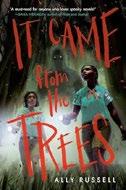
After Jenna’s best friend goes missing during a camping trip in the Massachusetts woods, she sets out to find her—and in the process heals some wounds.
Jenna loves nature—her mom and Pap (her park ranger grandfather) have made camping and hiking a part of their family culture. So she jumped at the opportunity to join the Cottontail Scouts and brought her best friend, Reese, along for the ride. But the group, with its expensive membership fees, isn’t all it’s cracked up to be, and the white scout leader makes the two Black girls feel unwelcome. When a mysterious humanoid beast attacks their tent in the middle of the night, hauling Reese away, no one believes Jenna’s report, not even her mom, and Reese is labeled a runaway. But Jenna’s determined to find her friend, and the best way to do that is to return to the woods. Jenna persuades her mom to let her join the free and more welcoming Owlet Scouts, who are camping 10 miles from the site of Reese’s abduction. Jenna must battle her anxieties and find ways to trust
A throwback to an earlier era of children’s publishing, in the absolute best of ways.
THE ZEBRA’S GREAT ESCAPE
again in order to face down literal and metaphorical monsters. The thrilling, fast-paced plot will keep the pages flying, and several juicy endings are left untied, leaving readers hoping there might be more tales to come.
Enticing campfire thrills and chills.
(Horror. 10-14)
Sadler, Marilyn | Illus. by Stephanie Laberis | Random House (32 pp.) | $10.99
Aug. 13, 2024 | 9780593702901
Series: It’s Not Easy Being
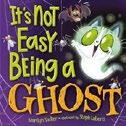
A ghost longs to be scary, but none of the creepy personas she tries on fit. Misty, a feline ghost with big green eyes and long whiskers, wants to be the frightening presence that her haunted house calls for, but sadly, she’s “too cute to be spooky.” She dons toilet paper to resemble a mummy, attempts to fly on a broom like a witch, and howls at the moon like a werewolf. Nothing works. She heads to a Halloween party dressed reluctantly as herself. When she arrives, her friends’ joyful screams reassure her that she’s great just as she is. Sadler’s message, though a familiar one, is delivered effectively in a charming, ghostly package. Misty truly is too precious to be frightening. Laberis depicts an endearingly spooky, all-animal cast—a frog witch, for instance, and a crocodilian mummy. Misty’s sidekick, a cheery little bat who lends support throughout, might be even more adorable than she is. Though Misty’s haunted house is filled with cobwebs and surrounded by jagged, leafless trees, the charming characters keep things from ever getting too frightening. The images will encourage lingering looks. Clearly, there’s plenty that makes Misty special just as she is—a takeaway that adults sharing the book


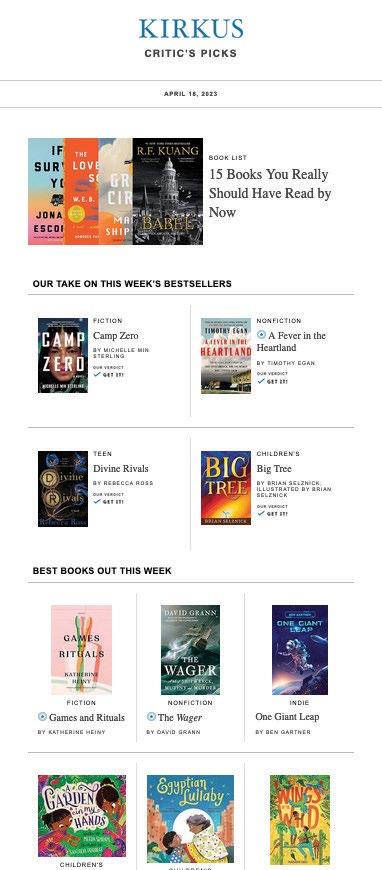


EDITORS’ PICKS:
American Wings: Chicago’s Pioneering Black Aviators and the Race for Equality in the Sky by Sherri L. Smith and Elizabeth Wein (Putnam)


There’s No Such Thing as Vegetables by Kyle Lukoff, illus. by Andrea Tsurumi (Henry Holt)
LatinoLand: A Portrait of America’s Largest and Least Understood Minority by Marie Arana (Simon & Schuster)
ALSO MENTIONED ON THIS EPISODE:
The Man Called Brown Condore: The Forgotten History of an African American Fighter Pilot by Thomas E. Simmons
Escargot by Dashka Slater, illus. by Sydney Hanson
Our Migrant Souls: A Meditation on Race and the Meanings and Myths of “Latino” by Héctor Tobar
THANKS TO OUR SPONSORS:
Love, Loss, and Honor: The Palouse by Herbert Wiens
Restless by Alicia Cahalane Lewis
The Devil You Knew by Mike Cobb
Epitaph Proven: Foedus Et Monstrum by Flos Nullius
The Interleukin Revolution by Kendall Arthur Smith
Fully Booked is produced by Cabel Adkins Audio and Megan Labrise.
Breanna J. McDaniel honors the life of legendary librarian Augusta Baker. BY MEGAN LABRISE
On this episode of Fully Booked, Breanna J. McDaniel discusses Go Forth and Tell: The Life of Augusta Baker, Librarian and Master Storyteller (Dial Books, Feb. 6), illustrated by April Harrison. In this heartfelt picture book, author, speaker, and educator McDaniel celebrates the life and legacy of Augusta Braxton Baker, the first Black coordinator of children’s services for all branches at the New York Public Library.
Here’s a bit from our starred review: “Raised in Baltimore on her grandmother’s tales, Augusta Braxton Baker grew up with the deep certainty that stories are powerful. Powerful enough to make Augusta realize her true calling, ‘guiding children of all ages through the wide and wonderful spaces of her stories.’ Powerful enough to bring her to the 135th Street Branch of the NYPL, where she introduced young readers such as James Baldwin and Audre Lorde to the words that would inspire them to write their own….There’s thoughtfulness here in the craft and pacing of [McDaniel’s] prose, certainly; reverence, too, in the textured layers of Harrison’s mixed-media and visual storytelling. But more than anything, simple care is evident. Care for a Black librarian who sought out every gap a tale could bridge, who shattered barriers to ensure Black children would see themselves on library shelves, and whose legacy continues to this day exactly as it began—in the thrall of good stories.”
McDaniel is the author of Impossible Moon, Hands Up! and four forthcoming picture books, including Cute Toot (Henry Holt, April 23). An alumna of Emory and Simmons Universities, she holds a doctorate in education and is a cofounder of REIYL (Researchers Exploring Inclusive Youth Literature).
We begin our conversation with a few highlights from the remarkable life of


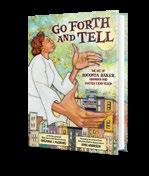
Go Forth and Tell: The Life of Augusta Baker, Librarian and Master Storyteller
McDaniel, Breanna J. Dial Books | 40 pp. | $18.99 Feb. 6, 2024 | 9780593324202
Augusta Braxton Baker. McDaniel shares how she first learned of Baker’s legacy and how the legendary librarian helped foster a love of storytelling—and listening—in countless young readers, including James Baldwin and Audre Lorde. We then discuss the immeasurable impact of McDaniel’s childhood librarian, Michelle Carnes, to whom the book is dedicated; reading as a point of connection between people; one of the most significant storytellers in Baker’s young life: her grandmother; the strength of the language McDaniel uses to acknowledge the dearth of kind and accurate depictions of Black characters in children’s books; April Harrison’s gorgeous illustrations for Go Forth and Tell; what McDaniel loves about picture books as an art form; and much more.

To listen to the episode, visit Kirkus online.
A mysterious gift leads to a grand adventure in this Ukrainian import.LITTLE HARE FINDS A GIFT
with their little ones should be sure to drive home.
Too cute to be spooky indeed but most certainly sweet. (Picture book. 4-6)
Sanders, Rob | Illus. by Hannah Abbo Beaming Books (32 pp.) | $18.99 July 16, 2024 | 9781506489216

Spend a day with a most welcoming class of students. Inside a classroom, we meet “ hes and shes / And theys and mes . // With a teacher who’s / Mrs. or Mr. or Miss. / Or a teacher who’s / Dr. or Ms. or Mx. / A teacher loaded with teaching tricks!” Readers get an up-close glimpse of the ebbs and flows of a school day as students read, draw, nurture, discuss, debate, and do that hard work of childhood, play. “We’re movers and shakers. / Mammoth change makers.” Sanders employs lively, rhyming verse, each stanza loaded with uplifting, kid-engaging descriptions: “We arrive here / As hikers and bikers. / Gliders and riders. / Racers and chasers. / Challenge facers.” All this gentle chaos is lovingly brought to life by Abbo’s colorful, joy-infused illustrations, which also provide ample opportunity for discussion as readers see how a school day unfolds. Abbo depicts the students both as individuals and as part of a collective that’s “stronger together”—a lovely touch. Reflecting the best of the world we inhabit, this class is widely diverse in terms of skin tone, size, ability, and interests. Readers are welcomed and will surely see
themselves within these pages, and that’s a beautiful thing.
An enthusiastically inclusive treatise for kids wondering—or worrying— about what to expect from school. (Picture book. 3-8)
$14.99 | Aug. 6, 2024 | 9781665943123 Series: Molly and the Bear, 1

Eleven-year-old human Molly befriends a big, brown bear and helps him overcome his many fears. When Bear squeezes through a window while Molly’s parents are out, they’re both startled, but Bear is more afraid of Molly than she is of him. Selfpossessed, can-do Molly assuages Bear’s fear and decides to hide him in her room, where she teaches him to meditate. She also calls best friend Harper for backup. Pink-haired Harper shares Molly’s ethos (“We are amazing and can do anything we set our minds to!”), and the two spend the summer with their new friend Bear, hiding him from Molly’s parents in increasingly hilarious places. When school starts, Bear convinces Molly to bring him along, but classmate Max reacts extremely negatively, leading anxious Bear to run away and hide under the bed. Molly and Harper are ready to protest against what they perceive as Max’s bullying—they have a history of speaking up for positive
change—but after Bear shares his story of encountering a bully in the woods named Bambi, the friends consider—and uncover—the reason for Max’s behavior. Ultimately, it’s Bear who helps Molly face Max at school: “I wanted to help Molly more than I wanted to be afraid.” Full of verbal and visual humor as well as energy and empathy, this is an excellent mismatched (yet perfectly matched) buddy comedy with art that’s reminiscent of classic comic strips. Central characters are light-skinned.
Rollicking good fun. (mini comics) (Graphic fiction. 8-12)
Shatokhin, Oleksandr | Trans. by Ali Kinsella Red Comet Press (40 pp.) | $18.99 Sept. 24, 2024 | 9781636551166

A mysterious gift leads to a grand adventure in this Ukrainian import. Little Hare wakes up to a loud sound and goes outside to find a big present on the roof of her small, snow-covered home. Whose present could it be? Little Hare loads the gift onto her sled and checks to see if it belongs to her forest animal neighbors: Mr. Fox, Auntie Owl, the piglets, and Mr. Snowman. Finally, Little Hare runs into none other than Santa Claus himself! Santa’s in trouble—a snowstorm caused him to lose the presents he intended to deliver. Ever the earnest helper, Little Hare helps him find and gather up the missing packages. She’s delighted when Santa tells her he’ll grant her a wish; she asks to help him deliver gifts from his sleigh. Next morning, Little Hare awakens to the knowledge that her friends will be getting presents and is more than a little surprised to find one for herself—a bunny-size snowplow, “perfect for visiting friends and delivering gifts of any size.” Charming, at times exaggerated illustrations make effective use of
Scott, Bob & Vicki Scott | Illus. by Bob Scott Colors by Vicki Scott | Aladdin (240 pp.)perspective and proportion; Little Hare seems especially diminutive, dwarfed by an immense, pinkskinned Santa. Gently building suspense before coming to a satisfying conclusion, this holiday tale stresses kindness and consideration—traits that are important at any time of year. Engaging illustrations, wonderful pacing, and themes of generosity combine for a warm Christmas surprise. (Picture book. 3-6)
Shea, Bob | Little, Brown (40 pp.)
$18.99 | Aug. 13, 2024
9780316494458 | Series: Chez Bob

An insecure alligator struggles when a rival enters the scene. Chez Bob (see what the author did there?) enjoys his life as a birdseed chef for the forest fauna until one day another alligator appears, impressing the birds with his delicious pizza and fun bike stunts. After a brief wallow at being outshined, Bob turns to the “internest,” where he uses fake accounts to post lies and other trolling comments about Ryan and his pizza. Taking the online negativity at face value, Ryan prepares to leave town for an unhappy ending—“going away to art school”—while Bob considers the harm he caused before eventually coming clean to Ryan. Though Shea’s takeaway lacks subtlety, so do neon-colored alligators in checkprint flannel; the medium fits the message. Overall, the kinetic
illustrations and humorous tone leaven what could be an aggressively didactic story into an enjoyable jumping-off point for discussions about responsible internet use and possibly the proliferation of fake news. Shea even offers an illuminating definition of lies that may resonate with young and adult readers alike: “a bunch of not-true things I made up to get what I want.” Bob barely takes accountability for his actions (“I had a good reason”), and the conflict resolves with ludicrous ease, but the purpose here is less authentic character growth and more a lesson in social media etiquette.
A high-energy introduction to ethical internet use. (Picture book. 4-8)
Smith, Brian “Smitty” | Little Bee Books (80 pp.) | $16.99 | Sept. 3, 2024 9781499815207 | Series: Band Camp, 2

A sometimesdissonant quartet of anthropomorphic instruments continue to weather ups and downs at summer camp. In their debut, the campers of Bunk J—Zook the kazoo, Kaylee the ukulele, Cordelia the accordion, and Trey the triangle—found harmony in time to triumph in a camp-wide competition. Now they’re pitted against their nemeses in Bunk M for a game of tug-of-war. As usual, Zook is full of himself, but Cordelia slips, and they end up sliding to third place. Bunk J’s trash talk irritates some of the other campers, who plan
Pitch-perfect and fast-paced, this series hits all the right notes.
CAMP!
to divide the team; when Cordy can’t get over her mistakes, they see their chance. Kaylee suggests a surprise party to bolster Cordy’s self-esteem, but their planning lacks all discretion. Cordy’s convinced that her friends are dumping her, and their clumsy manipulations reinforce her angst. The next camp challenge is a group hike up Piccolo Peak, and Cordy channels her insecurities into training. The hike is canceled due to rain, but Cordy’s already set out. Now it’s up to her friends to rescue her. Conflict, excitement, and cartoon mastery compose a siren song for young readers. The round-eyed, expressive instruments cut adorable figures in Smith’s art, and Bunk J’s antics and support for one another are appealing.
Pitch-perfect and fast-paced, this series hits all the right notes. (Graphic chapter book. 6-9)
Smith, Briony May | Anne Schwartz/ Random (48 pp.) | $18.99 Aug. 6, 2024 | 9780593650479
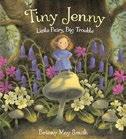
Jenny isn’t your typical fairy. Born to a wren family who lovingly names her Tiny Jenny, the young fairy resembles a pointy-eared little human child. Tiny Jenny has no wings, but she gets up to plenty of mischief without them, prompting an owl to advise her to seek out her kin. The fairy queen offers Jenny the opportunity to earn a pair of wings. But to her dismay, the fairies turn out to be cruel—they “smashed and stole stuff” and almost attacked her wren family before she stopped them. In the end, she eats all the mushrooms in their fairy ring to force them to leave. Safely back in the nest, Jenny’s pleased to be home and opts to stop making mischief…for the most part. Smith depicts lush, textured forest scenes, dappled with warm, Thomas
Kinkade–esque glows and moody shadows. The romantic art style and language (the fairies “wended their way through the forest” in search of “plunder”) evoke an older sensibility. While the illustrations are arresting and the innocent cheek is somewhat charming, the story contains a bit too much text to captivate the younger readers who would otherwise appreciate the simple tone. Jenny and the fairy queen are tan-skinned; the other fairies are diverse.
Vivid illustrations will hold readers’ attention, though the text may leave them cold. (Picture book. 5-8)
Sparring, Anders | Illus. by Per Gustavsson Trans. by Julia Marshall | Gecko Press (96 pp.) | $18.99 | Sept. 10, 2024 9781776575879 | Series: The Pinchers, 2

The Pinchers— grandma Stola, father Rob, mother Nic, and daughter Ellen— are liars and thieves…except for son Theo. Theo’s friends with Paul Eessman, the hapless cop next door, and his undeclared ambition is to be a police officer. Theo joins forces with Paul to save Sherlock, the witless family dog, when an authoritarian new officer threatens to impound him, and the family has no receipt to prove ownership; other dogs begin to meet a similar fate. Nic and Ellen resort to harsh tactics: tossing hot coffee in the cop’s face. Rob decides to hide Sherlock with Stola in jail, where she’s been for years.
Shockingly, Stola produces a valid receipt (uncharacteristically, for a Pincher, she didn’t steal Sherlock). A hint about the new cop’s identity is soon confirmed, and the focus shifts to Theo’s rescue plan. The book comes to a satisfying close, but loose ends remain to pull readers into the next absorbing, convention-flouting adventure. Vignette illustrations offer zany realism; characters’ clothing cues identify roles. Interludes from Sherlock’s perspective ramp up the humor. Although the language, translated from Swedish, lacks Dav Pilkey’s verve, Dog Man fans will devour this series. Children need not be familiar with the first installment, though they’ll want to go back to it. Characters are light-skinned. Whether they prefer outlaws or identify with the good guys, readers will eagerly be turning pages. (Chapter book. 6-10)
Star
Spiro, Ruth | Illus. by Victoria Tentler-Krylov Dial Books (40 pp.) | $18.99 Aug. 27, 2024 | 9780399186318

How can one small child make a difference?
In this poetic reflection, Spiro and TentlerKrylov shed light on “tikkun olam,” a Hebrew phrase meaning “repair the world” or “make right.” A “spark that lights your heart” turns into an idea, which becomes an action, which snowballs by inspiring people to act together. We’re all
A stunning reminder that we all have the power to make the world a better place.
interconnected, after all, yet we each have agency. Readers are reminded that they should be motivated not by gratitude or praise, but by the desire to improve the world. Above all, children are reassured that while effecting change isn’t always easy, it’s possible through collaboration, creativity, and practice. The illustrations helpfully ground the concepts presented in the text, depicting a light-skinned, dark-haired child who finds a broken swing in a neglected park. By choosing to fix it—with some help—the child sparks a citywide cleanup effort. The artwork is spectacular. Each good deed is represented by a swirling, bird-filled plume of color. As more acts of kindness and community accumulate, the sparks swirl together to transform a drab world into a joyful riot of color. The residents of this supportive urban neighborhood are diverse in terms of age and ability. In an author’s note, Spiro discusses the significance of tikkun olam within Judaism but explains that other cultures have similar teachings and ideas. A stunning reminder that we all have the power to make the world a better place. (Picture book. 4-8)
Stevan, Caroline | Illus. by François Vigneault | Trans. by Jeffrey K. Butt Helvetiq (80 pp.) | $22.99 Aug. 6, 2024 | 9783039640263
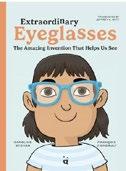
This Swiss import offers readers the inside scoop on glasses, from their history to how they’re manufactured today. Rightly recognizing that younger readers will find their expansive take on the topic something of a grind, Stevan and Vigneault tuck episodes of a wordless comic featuring a child with
superpowered spectacles and other tangential diversions into the discourse. In between, following a well-illustrated timeline that takes the story of specs from premodern pieces of rock crystal to Ben Franklin’s bifocals and the first contact lenses, the book flits from eye anatomy to myopia and other common malfunctions, what a visit to an ophthalmologist is like, proper care of frames and lenses, optical instruments such as telescopes and magnifying glasses, examples of “spectacled” animals, and optical illusions. Stevan also glances briefly at smart glasses and even offers some comfort to those who have been teased for wearing glasses. A brief glossary lists cognates for eyeglasses in Yoruba and other languages, and in the cartoon illustrations, a racially diverse cast that includes blind and wheelchair-using members model eyeglasses of many styles. A misleading claim that eyes only come in “black, green, brown, blue, or beige” and a confusing one in the discussion of diopters designating excellent eyesight as “10/10” rather than the more common (in the United States, anyway) “20/20” may be translation issues; in general the infodump is solid enough, if not very deep. An informative, if patchwork, mishmash. (review quiz, answer key, educators’ resources, link to printable worksheets) (Nonfiction. 8-10)
Subramaniam, Suma | Illus. by Tara Anand Penguin Workshop (48 pp.) | $19.99 May 28, 2024 | 9780593522936

she calls Paati, journey to celebrate Kaveri Pushkaram, a festival that honors the Kaveri River. Before they leave Paati’s home, the child notices green riverbanks and lush waterfalls. Paati tells her she was named for the river—and for her great-great-grandmother. Next, they buy train tickets for Thanjavur, their ancestral home in Tamil Nadu, India, and one of Kaveri’s namesakes. Paati reminds the child how on their last visit, she got her some bommai, or clay dolls. Kaveri’s mother notes that the child shares both her parents’ names. Both mother and daughter are named Jayalakshmi, after the goddess who protects the river. Finally, the name Ganesan comes from her father’s name, Ganesha. At the journey’s end, where the river meets the ocean, Kaveri finally realizes that her name embodies her birthplace and her heritage. Though earlier, Kaveri mentions that some people “trip over my name,” long names aren’t uncommon in India, suggesting that the child lives elsewhere. While Kaveri’s pride is evident by book’s end, readers don’t get much insight into her emotional state or thoughts; at times, the story feels like a list of cultural touchstones. Still, the artwork is vivid, with striking use of color and depictions of clothing, jewelry, foods, rituals, and distinctive temple architecture.
A heartfelt celebration of cultural heritage. (glossary, author’s note, getting names right, about the Kaveri River, map of South India, poems and sayings about the river) (Picture book. 4-8)
Kaveri Thanjavur
Jayalakshmi
Ganesan isn’t fond of her long name and prefers to go by Kav. The young protagonist learns about the origins of her names while she, her parents, and her grandmother, whom
Tatum, Jayson & Sam Apple | Illus. by Parker-Nia Gordon | Abrams (40 pp.)
$19.99 | Aug. 27, 2024 | 9781419771460

as he can pause for naptime.
Baby Dunks-a-Lot’s origin story is a simple one: Punk kids refuse to let him play basketball, but his loving family teaches him to shoot hoops. And what else would you call a dunking baby who develops a devoted following? The attention leads rather quickly to Baby D signing with the Ballers, alongside a supportive player who appears to be co-author Tatum. Baby D charms his teammates and the league as surely as he’ll charm readers; he helps bring the Ballers all the way to the championship game with his savvy pint-sized play. But lost pacifiers, missed bedtimes, and mid-game teething take a toll on the star baby player, and eventually his family expresses doubts about the appropriateness of pro sports for a baby. The championship is on the line, however, and a baby’s got to do what a baby’s got to do. Goofy digital illustrations of Baby D picking his nose and rolling around the court—“I think he [misunderstands] the pick-and-roll”—are paired with comic book–like speech bubbles, making for a delightful read. Sports fans will enjoy fun references (“There’s no biting in basketball!”) and cameos from famous ballers such as Steph Curry and LeBron James. Baby Dunks-aLot and his family are Black. Silly and sporty in equal measure. (Picture book. 3-7)
Tenney, Shawna J.C. | Beaming Books (32 pp.) | $18.99
Aug. 13, 2024 | 9781506497648
NBA All-Star Tatum and co-author Apple follow a talented baby unmatched in his dunking ability—as long

Stepping out is better than hiding out. Ana Moose prefers being alone. She doesn’t have to worry about finding the right thing to say or being picked last for teams. Blending into her surroundings, she dubs herself Anonymoose. Then she sees her
classmate Peter, a porcupine, building a fort and wishes she could share her own architectural ideas without revealing herself. So, day after day, Ana leaves sketches from “Anonymoose” around; Peter incorporates her plans into his creation. Ana enjoys watching the fort improving daily. Then her best idea strikes: a tall tower. Is she brave enough to tell Peter personally? Nah. Ana shares her brainstorm the usual way; Peter adds it. Alas, he tumbles and gets hurt, and the fort crashes to the ground. Ana’s dilemma: Reveal herself and help or remain concealed? While she’s thinking, Peter limps off. Next day, Ana hides again, waiting for Peter to return; he doesn’t. Remorseful, Ana slowly emerges from seclusion and attempts to rebuild the fort, unaware that Peter’s actually nearby, observing. Together, they re-create—no, improve on—the original, and they bond. Ana’s no longer Anonymoose. This sweet story reassures readers that shyness is OK and can be overcome. Peter’s fort serves as a metaphor for the walls we sometimes build to shield ourselves from relationships. The colorful, charming illustrations exude lively fun. Ana and Peter are very endearing, relatable protagonists. The fine message here: Don’t shy away from the chance to be and have a good friend. (Picture book. 4-7)
Dev. by Tezuka, Osamu | By Samuel Sattin Illus. by Gurihiru | Graphix/Scholastic (224 pp.) | $24.99 | Aug. 6, 2024 9781339036342 | Series: Unico, 1

friendship with the goddess Psyche, dispatches Zephyrus, the West Wind, to get rid of him. Zephyrus chooses instead to save the little unicorn, repeatedly transporting him through space and time. Tragically, he wakes up disoriented, having each time forgotten all that came before. Finally, Unico, who’s appealingly rounded and big eyed, lands in a busy city, where he’s rescued by Chloe the cat. The new friends are soon abandoned by the jealous girlfriend of Chloe’s doting owner. Chloe’s search for a witch who might help leads the pair to a kind old lady, and Unico’s magic allows Chloe to briefly turn human to help Granny. But Byron, a sinister, wealthy trophy hunter, soon sets his sights on Chloe in her human girl form. When Venus senses that Unico has reappeared on Earth, she seeks to destroy him using Byron as her tool. Plenty of action and outsized baddies keep the excitement level high, and Unico’s sweetness overcomes the wickedness—for now. Sattin’s work is inspired by Japanese creator Tezuka’s 1970s manga, and Gurihiru’s full-color art updates the characters’ looks while remaining true to the feel of the original. The jewel-toned palette and creatively varied panel shapes sustain a high level of visual interest.
Lively illustrations, strong storytelling, and an appealing hero. (story notes, additional art) (Manga. 8-12)
Thamizhmani, Lakshmi | Illus. by Avani Dwivedi | Harper/HarperCollins (40 pp.) $19.99 | Aug. 20, 2024 | 9780063286030
that Navya sing the song that Athai taught her last month. Navya demurs, saying that she’ll sing next time. On the nights that follow, Navya visits friends’ houses and listens to other girls and women sing but is too afraid to join them. After these visits, she sings to herself, all alone. On the fourth night of the festival, Athai tells Navya and Shruti the story of how the powerful goddess Durga defeated the buffalo demon Mahisa. When Athai wakes up the next morning with a cold, too sick to sing, Navya wonders if she’ll have the courage to sing on her aunt’s behalf. With a little practice and a lot of bravery, she eventually channels her inner goddess into song. Dwivedi’s stylized, vibrant illustrations accompany this gently inspiring story; colorful patterns on the rugs and on the women’s and girls’ clothing are especially eye-catching. Those unfamiliar with Navarathri will come away enlightened by the backmatter, which also explores Carnatic music and includes a recipe for a chickpea snack. Overall, it’s a sweet and uplifting tale about an oft-overlooked Hindu holiday. A gently empowering tale of triumph. (glossary) (Picture book. 4-8)
Tjong-Khing, Thé | Gecko Press (32 pp.)
$18.99 | Aug. 6, 2024 | 9781776575930
A little unicorn, spirited away from a vengeful goddess, offers his magic in service of others.
A prologue tells how Venus, threatened by Unico’s unusual power, which was born of his

A girl finds her voice during a Hindu holiday celebrating the divine feminine. Navya’s aunt— whom she calls Athai—and cousin Shruti have come all the way from India to celebrate Navarathri. Athai suggests
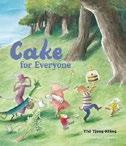
A picnic goes awry in this wordless Dutch romp. A group of animal friends, dressed smartly for the occasion, gather near the edge of a craggy cliff near a forest. It’s almost time for cake! But suddenly, a large eagle swoops down and grabs their blanket—along with all their personal belongings. A soccer ball, a frilly hat, a toy sword, a small stuffed rabbit, and more are stolen as the eagle flies off. Luckily, another bird sees their plight and
gets the eagle to drop the blanket. But alas, the objects go flying, landing in various spots along the cliff, water, and mountainside beyond. The book works best if readers choose one item to follow during the rescue that ensues (they should turn back to focus on the other objects), because the grand picture is too vast to absorb all the details at once. Some unexpected villains enter (such as a gorilla who very much wants the frilly hat), but some new friends are made, too. Twists and turns abound, and sharp-eyed readers will delight in poring over all the possibilities and filling in the blanks. Even without words, the approach will appeal especially to more narrative-minded fans.
A delicious tale that will reward attentive readers. (Picture book. 4-7)
Tomsic, Kim & Mark Parisi | Harper/ HarperCollins (192 pp.) | $18.99 Aug. 27, 2024 | 9780063038714

Fifth grade is full of drama over friendship and crushes.
Charlotte
“Charli” Wilson and Alex Andropov have been best friends since preschool. They have long-held traditions, including a secret signal when one of them wants to leave an uncomfortable situation, and they’re fiercely protective of each other’s vulnerabilities: Charli has webbed toes, and Alex still sleeps with his blankie. As they prepare to enter
fifth grade, their hormones are ramping up. Charli can’t stop thinking about Henry, who moved here recently from California, while Alex is crushing on the free-spirited Kiara. When Alex lets it spill that Charli likes Henry, she’s furious. Will the two ever make up? Told in diary format, the book alternates between Charli’s and Alex’s perspectives. Both protagonists are well developed, and their personalities come through. Charli’s entries are effusive and peppered with doodles of hearts and flowers, while Alex’s writing is comparatively terse, with comic book–style illustrations. Readers will relate to the characters’ big feelings, from their all- encompassing crushes to the angst of feuding with a BFF. The conflict between Charli and Alex keeps the story moving fast. The book includes plenty of humor, such as a memory of a ladybug flying up Alex’s nose, though some references may go over kids’ heads. The illustrations are appealing and break up the text, making it accessible to reluctant readers. Characters have skin the white of the page; hairstyles imply some diversity. Lively, fun, and deeply relatable. (Fiction. 7-11)
Torres, Heather D. | Illus. by Gary Laib Marble Press (40 pp.) | $19.99 Sept. 3, 2024 | 9781958325209
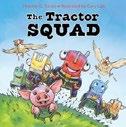
stories; the first, “The Tractor Jig,” explores what the titular vehicles do in wintertime. Rhyming couplets, often with near rhymes, consider the possibilities. “Do they wear woolen hats, / then curl up with the cats?” Or perhaps they “practice their math / as they drive down the path?” No! Tractors have too much work to do. But once their tasks are completed, they gather their barnyard friends for a fun winter day. In an action-packed spread, the Tractor Squad and their friends chug, scoop, stomp, wiggle and giggle, and zig and zag. The directions are clear, and young readers will readily join in. Spring arrives for the second story, “Ten Busy Tractors,” and like the accident-prone monkeys that keep falling off the bed, these tractors meet with one mishap after another. The first hits a rut and breaks his wheel. The field mouse calls the farmer, who says, “Get that broken tractor back to the shed.” The countdown continues, and the remaining tractors break and soon find their way back to the shed, where their barnyard friends fix them and get them ready for the busy days ahead. Rich traditional and digital watercolor illustrations are worth lingering over, while the verse will have readers dancing and singing along.
An ideal storytime selection to help little ones get their wiggles out. (Picture book. 4-7)
Vo, Young | Levine Querido (56 pp.) $18.99 | Aug. 6, 2024 | 9781646144495

Laugh, dance, and sing along with the Tractor Squad! This picture book features two interrelated
Boat makers with very different approaches struggle alone but find success when they work together.
Two young apprentices, Van and Minh, live in a town by the coast. Van loves to experiment with new approaches, while Minh wants things to be perfect. They both “[dream] of sailing across the sea together,” but upon graduating
This is one bear all kids will want to cuddle up with when it’s time for lights out.
MOON BEAR
from their apprenticeships, they open separate shops on the opposite sides of town. Before they part, Van gifts Minh a golden chisel, and Minh gives Van a golden hammer. As the years pass, the young men toil fruitlessly. Van creates boat after boat with outlandish ideas that don’t quite work—one has “the wrong size balloon,” while another has “too many umbrellas.” Meanwhile, Minh doesn’t make any boats at all, though he talks about “finding the perfect tools” and “almost” finishing a boat. It’s not until they join their golden tools together that they finally build their dream boat. Much of Vo’s storytelling happens in the varied visual compositions, with just enough text on each page to push the plot along. Saturated pastel hues convey the island feel, while cartoony yet expressive characters bring to life a story about the challenges and rewards of creating art. Though the various objects and visual motifs appear to be symbolic, deciphering their meanings may take more patience than most young readers possess. Van and Minh are brown-skinned; other characters are diverse in skin tone. A charming allegory about the creative process, albeit with some enigmatic details. (origami boat instructions) (Picture book. 4-7)

Völk, Julie | Trans. by Melody Shaw
Gecko Press (40 pp.) | $18.99
Aug. 6, 2024 | 9781776575794

When an amiable dragon is unable to use his human friend’s bathroom, he takes the child on a magical trip to see where dragons “go.”
“I love rainy days. On rainy days nobody goes outside if they don’t have to. Today I’ll have a comfy day indoors.” These words, spoken by a light-skinned, dark-haired child, accompany an exquisitely drawn double-page spread. Illustrations rendered in pencil, watercolor, colored pencil, and pastel show rain coming down on an Old World–ish urban setting. A dragon— sporting a handlebar mustache and holding an inadequate red umbrella—perches on the rooftop of the child’s house. The page turns to the home’s interior: “I’ll read and play, muck around, daydream. No one will bother me.”
The child doesn’t notice a dragon’s tail going past the window. The droll humor continues as the child welcomes the dragon into the house, introducing him as a friend named Fred who loves sausages and “coffee—lots of coffee.” The child unself- consciously uses the toilet, after which Fred delicately inquires if he may also. The ensuing pages are full of giggle-inducing efforts to accommodate the increasingly uncomfortable dragon, from attempting to shove him into the tiny bathroom to offering to let him use a public fountain. Finally,
Fred flies the child to a magical lagoon full of dragons and their elegant, gazebo-style pee stations. Art and text translated from German gently and humorously support children’s natural fascination with body functions. A unique bedtime story—before the nightly bathroom visit. (Picture book. 4-6)
Operation: Happy: A World War II Story of Courage, Resilience, and an
Walsh, Jenni L. | Zonderkidz (229 pp.) $18.93 | April 2, 2024 | 9780310159261
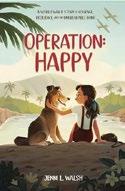
Inspired by real-life experiences, this is the tale of a white girl and her dog who experience life in Honolulu during World War II. With 12-yearold Jody’s dad being a Marine, she’s moved a lot. Her two constants in life have been Happy, her “German shepherdcollie-husky mix,” and Team Zuber, her family, consisting of Dad, Mom, and older sister, Peggy. In October 1940, when they relocate to Ford Island in Pearl Harbor, Jody becomes uneasy about her mom’s nervousness over being so near the battleships and about the war in Europe. After the vet says that Happy is in his golden years, Jody creates Operation: Happy, a list of fun new things they can do together. When the realities of war creep into their daily lives, the list becomes Jody’s way of coping with her fears. Then, on December 7, 1941, everything changes when bombs fall around them. Evacuated to San Francisco and separated from Dad, Jody and Happy use the list to find the courage they need to adjust to their new lives. This story of family, courage, and strength during harrowing times includes chapters told in Jody’s first-person and Happy’s third-person points of
view. The raw emotions, which include tense, suspenseful scenes leading up to the attack on Pearl Harbor, are lightened by fun, humorous moments.
An immersive work that’s full of heart and emotion. (author’s note, discussion questions) (Historical fiction. 9-13)
Wells, Allen R. | Illus. by Dia Valle Farrar, Straus and Giroux (32 pp.)
$18.99 | May 7, 2024 | 9780374390693
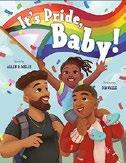
A family spends a delightful and affirming day at DC Black Pride.
“Lift your soul to the sky / Like summer sunbeams / Don’t live behind clouds— / You shine!” A Black family made up of two parents and a child get ready for the day ahead. Bonnets and durags come off as backpacks loaded with water and rainbow flags go on, and the family walks down their front stoop, boards the Metro, and takes to the streets to participate in the festivities and watch the parade. All the while, rollicking verse unspools these caregivers’ affirmations for their child and their community. The radiant illustrations tell the story here, with Valle’s soft, blended spreads immersing readers in the celebration and spotlighting moments of connection big and small. Wells’ well-paced text works well with page turns, flowing with loving declarations for every moment of the day. Proud history meets present joy again and again with the refrain “It’s Pride, baby!” as the concepts of family and togetherness expand from a focus on the parents and child to the whole Black, queer community (present and departed) in Washington. Backmatter offers a brief history of the Black Gay Pride Movement and explains how DC Black Pride has evolved over the
years into a weekend-long festival. Also included are guidance and resources for supporting a queer child’s self-discovery (complete with myriad Pride flags). Jubilant. (websites) (Picture book. 3-8)
| June 4, 2024 | 9780711291010
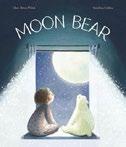
A special friend helps a child overcome fear. Afraid of the dark, Ettie keeps a flashlight under the covers at bedtime. But tonight brings a surprise. A cascade of sparkling light motes enter the room through the partially opened curtains. Ettie “paints” on the wall with the dazzling light, then dances with it, producing wondrous arcs around the room. Opening the curtains completely, Ettie smiles at the moon, then plays connect the dots with the glowing stars, creating a bear who enters the room in an illuminated burst. The pair play all night. By morning, the bear’s disappeared; Ettie can’t explain its presence to Mommy— though sparkles remain on the pillow. But Ettie has a different, more potent reminder of the bear’s presence: a newfound confidence when it comes to the dark. That evening, the child hurriedly eats dinner, reminds Mommy when it’s bedtime, speeds through the nightly bedtime routine, and even nudges Mommy out the door. A bear’s coming! Grown-ups, take heed. This very charming, nearly wordless fantasy reassures kids that fears of the dark can be conquered with some imagination and a smidgen of light. The gouache and colored pencil illustrations are cheerily de- light -ful, presented in lively panels of different sizes, comics-style. Ettie and Mommy are light-skinned.
This is one bear all kids will want to cuddle up with when it’s time for lights out. (Picture book. 3-7)
Wise, Bill | Illus. by Davilyn Lynch Clavis (32 pp.) | $19.95 Aug. 6, 2024 | 9798890630278
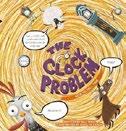
Will our hero chicken out of learning to tell time?
A big analog clock hangs in the barn, but, unable to decipher it, Chicken showed up late to a big meeting with Farmer Ed. Now, the farmer has dispatched Boxer Brutus to “teach [Chicken] a lesson once and for all.” A terrified Chicken is certain that this doesn’t bode well. And Boxer Brutus is scheduled to come at 10 a.m.—less than an hour away, as the savvier barnyard animals realize. Kindhearted Sheep teaches Chicken to read a clock, while Goat supplies the sass, many of the extremely corny jokes, and regular but unhelpful suggestions. As Sheep draws a clock and then uses the barn clock to teach Chicken, we see the minute hand advance, starting at 9:10 and creeping up little by little to 9:50. Finally, a frantic Chicken eyes the clock and, unprompted, exclaims, “It’s 9:58!” Chicken can tell time! Brutus arrives but is hardly the Golden Gloves champion envisioned—the word boxer refers to the dog breed. The ending is a bit of a whimper as Brutus is now no longer needed and simply leaves. But the art is amusing: Sheep and Goat have round bulging eyes and toothy grins. Chicken’s golf ball–shaped eyes roll dramatically, and our protagonist is often stretched or curled into anguished shapes. The limited examples on the barn clock are supplemented in the backmatter. Goofy humor but real, relatable anxiety, soothed by a calm, reasonably effective teacher. (examples of digital and analog clocks, with matching challenge) (Picture book. 5-9)
Welsh, Clare Helen | Illus. by Carolina T. Godina | Frances Lincoln (40 pp.) $18.99


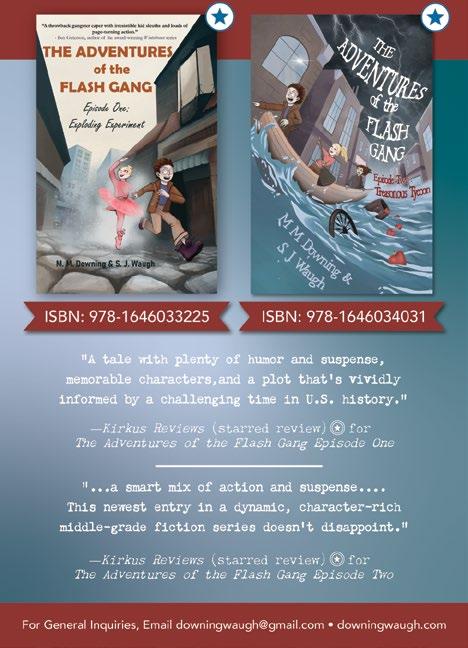
Endorsed by Dr. Shefali Tsabary, New York Times best-selling author of THE CONSCIOUS PARENT

LEARN MORE

 Author Kimberly Snyder & Jon Bier
Author Kimberly Snyder & Jon Bier
An endearing jungle adventure that teaches

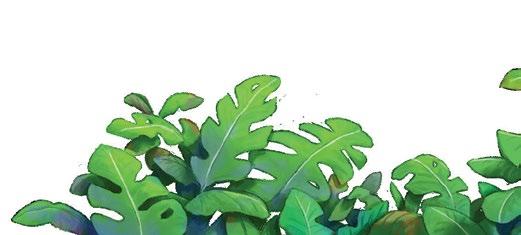

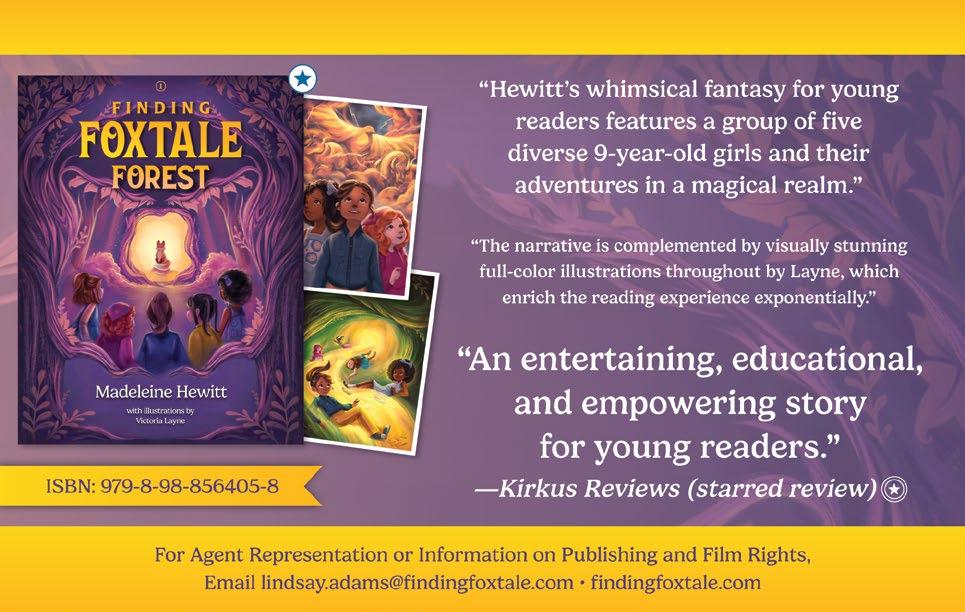

THE AMERICAN LIBRARY Association’s annual conference draws thousands of people from around the globe for intensive professional connection and learning. Among the highlights for many attendees are the Youth Media Awards celebrations, which share a sense of jubilation over the rich literary offerings available to young people. The ALA Youth Media Awards are the U.S.’s most widely recognized honors for children’s and teen literature; their seals grace book covers, guiding readers.
But so much happens in the world of these awards beyond the annual selection of exceptional titles. This year marks the 55th anniversary of the founding of the Coretta Scott King Book Awards, a distinction that commemorates

“the life and work of Dr. Martin Luther King, Jr., and honors his wife, Mrs. Coretta Scott King, for her courage and determination to continue the work for peace and world brotherhood.” Numerous CSKBART committees engage with these core principles in different ways throughout the year; I’ve been fortunate to serve on several of them during my tenure on CSKBART. For example, each year the CSKBART Donation Grant sends books to agencies and institutions serving young people around the U.S. and as far afield as Uganda, Kenya, and South Africa. In addition, the award-winning books and their creators offer springboards for rich programming. (Below, see a sampling of award winners through the decades.)

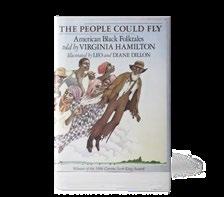
Ida W. Thompson, former book award jury member and former chair of the Coretta Scott King–Virginia Hamilton Award for Lifetime Achievement jury, received a commendation from the American Association of School Librarians for establishing the Reading Rocks program in Columbia, South Carolina. Free books, school visits, and teacher workshops by CSK Award–winning authors and illustrators fueled “interest in reading, art, and storytelling and connected the community through wholesome literary experiences.”
Barbara Clark, chair of the Coretta Scott King Archives and History Committee, shared a pivotal memory from her elementary school librarian days in Birmingham, Michigan. She was inspired by Mirandy and Brother Wind by Patricia McKissack, a joyful story about a girl who’s entering her first cakewalk, for which Jerry Pinkney won the 1989 Coretta Scott King Illustrator Award. Clark’s Black History



Month project “garnered district-level participation and huge teacher and parent support,” she says. “This celebration gently submerged my predominately white school community into a dark period of history for African Americans. We strolled through early 1900s America from the founding of the NAACP and the Ford Motor Company to lynchings recorded by Ida B. Wells and much more. A teacher made me a Brother Wind puppet that glided as I circled and told McKissack’s story. We researched and studied photos, and each class choreographed a four-minute cakewalk. What fun we had.”
I leave you with the words of Claudette S. McLinn, former CSKBART chair, executive director of the Center for the Study of Multicultural Children’s Literature, and recipient of the 2023 CSK–VHALA who cherishes her memories of working on the “50th anniversary celebration during ALA Annual 2019 in Washington, D.C., where people of all ages and colors gathered at the gala at the Library of Congress.”
Librarians may currently face struggles, but as Dr. McLinn says, “may the spirit of CSK continue.”
Laura Simeon is a young readers’ editor.
LAURA SIMEON Illustration by Eric Scott AndersonA 15-year-old seeks solace and solitude in the wild. Ash has always felt like an outsider, and ever since Grandpa Edwin passed away, that feeling of isolation has only gotten worse. Their parents haven’t fully accepted Ash’s recent name change or newly shorn hair, and school isn’t much better. When Ash learns that their family plans to sell Grandpa Edwin’s old ranch, they come up with a plan: to find Grandpa’s secret cabin in the woods and stay there—forever. They earn money, watch online videos to pick up survival skills, and buy food, gear, and supplies. Ash carefully conceals
their preparations, and with a little deception and some luck, they finally set off into the Northern California wilderness with their trusty dog, Chase.
Told as a series of journal entries, Ash’s first-person narration is punctuated by panels and full-page spreads depicting current and past events in soft, soothing tones against a clean, white background. The conviction and emotions driving Ash’s decision-making process always feel strong and true and are apparent in the effective illustrations and evocative color palette. This story recalls many familiar and beloved tales—a list of further
By Jordan Ifueko Derek Milman
reading and references includes children’s classics such as Hatchet and My Side of the Mountain which points to the subject matter’s perennial appeal, but Wang masterfully adapts this storyline for contemporary audiences,
seamlessly weaving questions of identity, gender, race (Ash has Chinese and Irish ancestry), and climate change into this fundamental tale of survival.
Searing and radiant. (Graphic fiction. 12-18)

Will make readers lock their doors and cover every mirror in the house.
Abtahi, Olivia | Tu Books (400 pp.)
$24.95 | Aug. 27, 2024 | 9781643790435

Sisters must work together to banish the djinn ravaging their small Virginia town. On their 18th birthdays, the lives of Iranian and Argentinian American twins Bianca and Leila Mazanderani are drastically changed when their neighbors’ barn mysteriously burns down. A terrifying djinn appears, announcing to the girls that “the promise of your ancestors is your burden to bear.” To top it all off, Leila suddenly possesses superpowers, and a voice inside her head starts trying to control her. Bianca and Leila will have to reconcile their differences in order to uncover the mystery of their family’s debt—before the monsters pouring into their town completely take over. Abtahi engages readers with a host of interesting dichotomies throughout, from the twins’ opposing views on their cultural backgrounds (Bianca embraces their heritage, while Leila tries to fully assimilate) to their plans for the future (Bianca longs to leave their small town as soon as possible, but Leila hopes to stay close and marry her high school boyfriend, Foster). Their sisterly reconnection amid the extraordinary threat to their lives is wholesome, and their individual developments are satisfyingly honest: Bianca finds purpose in her hometown and discovers romance in an unexpected place, while Leila
explores new feelings and grows in her love of her whole self.
A multicultural fantasy that’s packed with action and heart. (Fantasy. 14-18)
Berne, Emma Carlson | Illus. by Shaw Nielsen | Odd Dot (160 pp.) | $16.99 paper Aug. 27, 2024 | 9781250290601
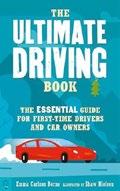
A cheery gathering of tips and advice for freshly licensed young motorists.
“You passed! Let’s gooooo! ” Berne cheers. But before putting the pedal to the metal, she shares a few things to do and know. Some of what follows, such as types of road signs and parallel parking techniques, are covered in typical driver’s ed manuals (though here in a format that’s far more visually enticing), but other information may not be, such as emergency items to store in the trunk, safety tips for traveling with children and pets, and canny practices on the road and in parking lots. The author covers how to behave when stopped by police, but some of her advice—“The cop will ask for your license, registration, and insurance. Grab those as quickly as you can”—feels out of touch with Black and brown teens’ safety concerns. The bulleted checklists of procedures in the wake of collisions of various sorts are handy, but the book focuses more on practical basics: what all those little dashboard lights mean, how to check tire pressure and oil, how
to change a tire, and how to gas up or charge vehicles. Berne describes texting while driving as “supremely bad” and strongly discourages it, but readers only learn from the map labeled “Fun Facts” toward the end of the book that it’s illegal in 49 states. Nielsen’s retro-style blocky illustrations break up and help clarify the text. Not a glove compartment essential but well stocked with helpful bits. (glossary, index) (Nonfiction. 15-18)
Bowers, Geneva | Bloomsbury (240 pp.) $24.99 | $17.99 paper | Aug. 6, 2024 9781547611188 | 9781547611195 paper
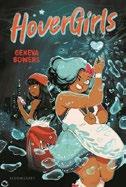
Cousins Jalissa Vasquez and Kimmonique “Kim” Vasquez have moved to the bustling metropolis of Los Aguaceros. Bubbly, blue-haired Kim and deadpan, combative Jalissa are an unlikely pair. But after an unexpected encounter with a supernatural flying anglerfish during a rainstorm results in both girls’ manifesting water-wielding powers—the HoverGirls are born! Working as baristas keeps them busy during the day, but taking on mysterious and menacing sea creatures quickly becomes a frequent after-work activity. Kim uses her creativity and talent as a clothing designer to make superhero costumes for the pair, but Jalissa is reluctant to commit to a life of monster slaying, and friction between the cousins threatens to tear their relationship apart. They’ll need to find common ground to save the city—and themselves—from these aquatic interlopers. Bowers strikes a perfect balance between humor, adventure, and heart, and playful illustrations that are chock-full of details bring the cousins’ exploits to life. Adapted from a popular webcomic into a full-length graphic novel, this volume will delight existing fans while attracting new devotees with imaginative worldbuilding. Kim and
Jalissa read as Afro-Latine; Kim’s love interest is Korean, and Jalissa is queer. Some use of ableist language is a blemish on an otherwise wellcrafted story.
A thrilling journey of self-discovery, friendship, and heroism set against an artful backdrop. (Graphic fantasy. 13-18)
Brouwer, Sigmund | Orca (144 pp.)
$10.95 paper | Aug. 13, 2024
9781459839625 | Series: Orca Soundings

A teenage boy inadvertently crosses dangerous people in this pulse-pounding thriller.
Jake Ballard, a military kid and recent high school graduate, is spending the summer at his uncle’s lake house in the resort town of Sicamous, British Columbia, while he figures out his next move. Everyone assumes he’ll join the military, but with a soldier father who was killed in action when Jake was 4 and an Army medical technician mother who’s currently undergoing treatment for PTSD for combat-related trauma, he isn’t sure that’s the life he wants. When mysterious redhead Angela Wintar shows up, asking for help with playing a prank on her friends, Jake decides that assisting her would be a good way to take his mind off his troubles. Unfortunately for Jake, Angela’s intentions are less innocent than he imagined, and he soon finds himself entangled with the angry criminal associate of a local biker gang who’s demanding retribution for what he believes the two teens stole from them. With his family in danger, Jake must find the courage to fight back and fix this fraught situation. Short chapters and thrilling action scenes render this book compulsively readable, while the dialogue is realistic and snappy. Readers will relate to Jake as he
wrestles with his family’s military history and with the expectations that he’ll continue it. Main characters are coded white.
A quick, engrossing pick that’s ideal for reluctant readers. (Thriller. 12-18)
Ed. by Brown, Alex | Page Street (352 pp.)
$18.99 | Aug. 6, 2024 | 9798890030122
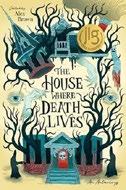
Sixteen authors conduct a haunted tour of a house that forces us to look at the ghosts we don’t want to see.
In this collection, readers take a journey through stories that are divided into sections: “Attic,” “Down the Stairs,” “Second Floor,” “First Floor,” and Grounds.” The stories, which are rooted in various folkloric and mythological traditions, are by a diverse range of authors, including newer voices and well-established fan favorites, such as Traci Chee and Nova Ren Suma. Some of the standout entries include Courtney Gould’s “Good Morning, Georgia,” which plays with perception as two teenage girls communicate through a vanity mirror; Kay Costales’ “Cradle and All,” in which the Tiyanak, a blood-sucking creature from Filipino mythology, appears to a girl who’s haunted by a loss; and Nora Elghazzawi’s “Mirror, Mirror,” which introduces readers to a djinn who will prompt them to question what they’d be willing to give up to get what they want. Equally strong are Gina Chen’s “Like Mother,” which describes a deal with a demon and a commentary on the traumas, losses, and legacies of the immigration experience, and “In Deep” by C.L. McCollum, focused around a murky pond at a B&B where heartbreak and revenge thrive. Loss and grief of various kinds are at the core of each story in this engaging volume. Will make readers lock their doors, turn on the lights, and cover every mirror in the house. (Horror anthology. 14-18)
Cary, Gemma | Delacorte (336 pp.)
$19.99 | Aug. 27, 2024 | 9780593651261
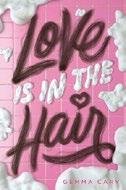
When a teen’s best friend is targeted for having body hair, she fights back by starting a body hair–positive campaign in this feminist comingof-age tale.
Fifteen-year-old Evia Birtwhistle’s mother has always warned her about misleading beauty ads that target women’s insecurities, but that doesn’t stop Evia from routinely plucking, bleaching, waxing, trimming, and shaving the hair she inherited from her Greek biological father. Frankie Smith, Evia’s best friend, has thick facial hair caused by polycystic ovary syndrome. After she’s attacked by school bully Madison Cox, who cruelly shaves Frankie’s hair and livestreams the incident, a traumatized Frankie withdraws from school and considers transferring, a prospect that terrifies Evia. Desperate to help her friend and show the world that women’s body and facial hair is normal, Evia begins a campaign on social media and at school called the Hairy Girls’ Club, but soon a countermovement, the Normal Normas, starts up. Frankie isn’t sure she’s ready to be the public face of the Hairy Girls’ Club, leading to friction between the friends, though Evia remains determined that the message of the Hairy Girls’ Club will be heard. The nature of the central premise means that the story’s resolution is somewhat predictable, but it’s an entertaining and empowering journey all the same. Evia’s character has a strong voice and a big personality, and readers will root for her through both failure and triumph. Main characters read white; names cue ethnic diversity in the supporting cast. Charming and ultimately hopeful. (Fiction. 12-18)
Weaves a mystery into a poignant tale about a young woman finding home.
RETURN TO SENDER
Cicatelli-Kuc, Katie | Scholastic (336 pp.) | $10.99 paper
Aug. 6, 2024 | 9781339030753
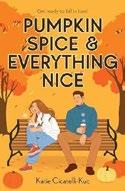
A fall romance with a New England backdrop. Autumn leaves aren’t the only stunning thing to hit the town of Briar Glen—so has good-looking new boy Jack Harper, and Lucy Kane is enamored with both. Her new crush is the perfect thing to take her mind off the fact that Java Junction, part of a global chain, is opening across the street from Cup o’ Jo, Lucy’s mother’s coffee shop, where they take pride in baking everything from scratch and avoiding artificial ingredients. But there’s more than coincidence in the timing of the arrivals of both Jack and Java Junction: The Harper family moved to Briar Glen specifically to open this franchise location, which will bring competition that threatens Cup o’ Jo. This scenario has the makings of a perfect autumnal adversaries-to-lovers romance, but the writing lacks charm and chemistry. Jack seems to be completely enamored with Lucy, but her character isn’t sufficiently developed to warrant his attention. Lucy’s friends are continually supportive of her but have few distinguishing characteristics, and the story is weakened by confusing timelines and repetitive elements. The resolution relies upon successes that come too easily and do not feel earned. Major characters are cued white. A promising premise that’s lacking in spice. (Romance. 12-16)
Draper, Lauren | HarperTeen (416 pp.)
$19.99 | Aug. 13, 2024 | 9780063340367
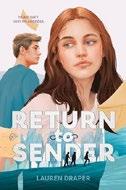
An Australian teen returns home to an unexpected welcome—and a still-perplexing mystery she thought she’d left behind. Brodie arrives back at her loving grandmother’s character-filled house—which is also the town of Warwick’s dead letter office—after being expelled from her cold, unwelcoming boarding school. Because her reputation for mischief led townspeople to believe she’d stolen the Adder Stone, a powerful, magical artifact famous in town lore, just before she was sent away, Brodie expects a chilly reception from everyone, including her friend Levi, whose parents are Warwick’s mayor and a police detective. Naturally, Nan is delighted to see her, and Brodie quickly falls back in with close friend Elliot. The resulting mystery involves the Adder Stone, old dead letters she’s long puzzled over, and the secrets of many of Warwick’s adults. The story unfolds slowly, allowing space for Levi and Brodie’s relationship to sweetly bloom, with pranks and sarcastic banter thrown into the mix. While the reveal of the letter mystery may not come entirely as a surprise to readers, they’ll find the time with the funny and vulnerable characters who populate this quirky town to be well spent. The central characters present white. Thoughtfully weaves a mystery into a poignant tale about a young woman finding home. (Fiction. 13-18)
Hart, Fran | Chicken House/ Scholastic (320 pp.) | $19.99
Aug. 20, 2024 | 9781339016276

A 16-year-old boy confronts his ghosts with a little help from his friends in this debut that has a dollop of the fantastical.
Salem Amani lives at 17 Yew Tree Lane with his mother and Asha, his hardworking older sister. The lore in their English village is that the house is haunted, and people steer clear of it. Sal (no one can properly pronounce the name his late Egyptian father chose) wants to be left alone and not address the issue of any ghosts. He has just one friend, Dirk, until new arrival Pax shows up on his doorstep with a casserole in hand, a veritable invitation to friendship. At first, Sal is put off by Pax, particularly his paranormal curiosity, but soon the three boys are hanging out at school. They also adopt popular Elsie, who’s been ousted from her friend group. The four become a staple, and Sal and Pax fall hard for each other, a relationship that’s perhaps the most ebullient element of Sal’s life. But parts of his life still gnaw at Sal: the loss of his father five years ago, his white mother’s absentee parenting, and the constant replaying of a night that fills him with a pained terror. Grief is a resounding character in this strongly written novel, a low-ebbing throb that grows louder as Sal hides further behind his wall of sadness.
A beautifully executed queer romance and exploration of family that’s haunted by loss and elevated by love. (Fiction. 12-18)
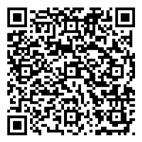
For another great queer read with magical elements, visit Kirkus online.
Hopkins, Ellen | Nancy Paulsen Books
$19.99 | Aug. 27, 2024 | 9780593463246
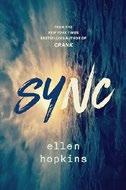
A gritty, powerful novel in verse that follows California siblings as they navigate the foster care system. After a rough placement at age 12, twins Storm and Lake were separated by the state and haven’t seen each other since. Storm has been in juvie, though he’s finally settled, with a decent foster parent and a new girlfriend, Jaidyn. Lake’s position living with a strict Christian family is tenuous, complicated by the fact that she’s falling for her lesbian roommate, Parker. A reunion allows the 17-yearolds to reestablish “our sync”—reading each other’s thoughts and body language with ease. But as quickly as they’ve reconnected, they’re ripped apart when Storm is arrested for avenging Jaidyn’s sexual assault by an ex. Lake and Parker’s luck is no better; they run away and begin to deal drugs to stay afloat. The twins both hit rock bottom: Lake encounters unimaginable violence while living on the streets, and Storm is placed in a juvenile detention center yet again. Through it all, they hold on to hopes of reuniting and finding their sync again. The twins’ dual perspectives are told in poignant, unflinching free verse, with natural breaks according to teenage speech patterns, and the narrative doesn’t shy away from portraying the harsh realities of a broken foster care system. Though the siblings face relentless abuse and tragedy, the conclusion is ultimately
hopeful, if tied up a bit too neatly. Most characters are cued white. A wrenching and necessary read. (Verse fiction. 14-18)
Horne, Maggie | Feiwel & Friends (336 pp.) $19.99 | Aug. 27, 2024 | 9781250894977
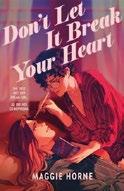
Alana Lucas is a lesbian: It’s why she broke up with Gray, her best friend and boyfriend, last year. Even though they’re no longer dating, the teens from the Bangor, Maine, area are inseparable—Gray’s mom and Alana’s parents have been close since college, and the high school seniors declare they had an “in-utero friendship.” Alana and Gray have private jokes, long-standing traditions, and detailed plans for their futures. When intriguing new girl Tal arrives at their school, both Gray and Alana are instantly smitten. Alana, who’s still coming to terms with what it means to live as an out queer person, allows herself to get roped into Gray’s complex scheme to get Tal to like him. She decides to bury her growing feelings for Tal, even though the two girls become closer every day. The resulting love triangle forces Alana to explore her own interests, her identity as a lesbian, and how she fits into the larger queer community. She also learns some difficult lessons as she works on discovering her own path forward. While some supporting characters lack detailed backstories and seem to be tacked onto the main story arc, the joyous friends-and-lovers narrative sets this romance apart. Readers
Doesn’t shy away from portraying the harsh realities of a broken foster care system.
SYNC
will enjoy Alana’s immense growth as a character and delight in the witty dialogue between the three leads. Alana and Tal read white; Gray has brown skin. A warm hug of a romance. (Romance. 14-18)
Hunter, H.D. | Farrar, Straus and Giroux (336 pp.) | $20.99 Aug. 20, 2024 | 9780374389987
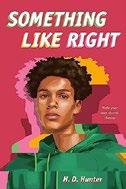
After Black biracial Xavier gets in a fight with a 12th grade bully while protecting the boy’s 9th grade victim, he’s expelled from school. Zay must now finish his junior year at Broadlawn Alternative School, which is located hours away. The day he finds out he has to move in with his aunt and uncle (who live near Broadlawn), his white father is released from prison. Zay isn’t happy about Keith’s release; he feels betrayed by Ma for not telling him that Pops was getting out, and he isn’t sure how to connect with his pops, who’s been like “an imaginary friend” whom he’s outgrown over the past 12 years. Hunter deftly depicts the mental and emotional complexities incarceration causes for both the newly released and their family members. Despite Zay’s reluctance to leave home, the move turns out to be positive. He quickly bonds with his uncle, learns more about his parents, befriends Kenny (who’s in his second stint at Broadlawn), and falls hard and fast for Feven, a girl who’s new to the area and is originally from Eritrea. The voices of the three young people are outstanding; they each navigate significant emotional landscapes—Kenny faces the school-toprison pipeline; Feven reckons with the pressures of immigration; and Xavier deals with the impact of generational trauma. The adults are notably also fully developed characters.
An original setting for a highly relatable and memorable story about first love and second chances.
(Fiction. 14-18)
Catching up with the YA phenom as she brings her Legacy of Orisha series to a close.
BY CHRISTINE GROSS-LOHTOMI ADEYEMI ATTENDED Harvard intending to become a doctor, did finance internships in college, and had a manuscript rejected by 63 literary agents—all before receiving one of the largest-ever deals for a YA debut when she was just 23. That book was the first in her New York Times –bestselling Legacy of Orisha series, in which protagonist Zélie and a small band of companions fight to restore magic, order, and peace to their land and battle enemies from within. (The book is currently being adapted for a feature film to be directed by Gina Prince-Bythewood.) In the long-awaited finale to the trilogy, Children of Anguish and Anarchy (Henry Holt, June 25), Zélie and her friends confront intruders from outside Orisha who threaten the land anew. Adeyemi, now 30, spoke with Kirkus via Zoom from her home in New York City; the following interview has been edited for length and clarity.


You studied in Brazil on a college grant. How did your studies influence the trilogy?
A really influential part of my education [was] discovering African American literature.
Reading The Souls of Black Folk by W.E.B. Du Bois was such an intense and transformative experience for me. Reading about what it felt like to be Black in America right after Emancipation, to read something that was written [more than a century] ago and feel as if it was written for today, taught me how
powerful literature is, where we explore our souls and our spirit and our consciousness.
I knew that Brazil and America were very interesting parallels, because I think Brazil brought over 10 times as many slaves during the Middle Passage as America did, but then both countries treated identity differently. In America, we had the “one drop” rule—if you had any Black ancestry, you were considered Black. In Brazil, it wasn’t as binary. Then, while in Brazil, I stumbled upon these ceramic tiles [of
West African deities]. My mind exploded when I saw them because I’d never even imagined that there were African gods and goddesses. It was earth shattering and soul healing. The map of Orisha exploded into three dimensions in my head. I saw the world: I saw the temples, I saw the lions, I knew it was epic. I marinated on these ideas.
And then about eight months later, I discovered who the characters were because I was inspired by another picture of this divine Black space girl, and I thought, What if a fisherman goes to trade a fish one day and she runs into a princess, and the princess says, “You have to get me out of here”? It was like I’d captured the world of the ceramics and then
added everything that was in my heart—my version of The Souls of Black Folk during that time.
Any advice for someone interested in writing fantasy with a social message but that doesn’t veer into the overly didactic, something where the art shines through? In one of the seminars I teach, I describe this [idea] as “finding your beating heart.” I think the best books have a beating heart. That beating heart is whatever’s in your heart at the time. For me it was being torn up about Tamir Rice being 12 years old and playing in a park and getting shot. It was being torn up about Philando Castile being gunned down in front of his
girlfriend and her 4-yearold daughter. Being torn up about Dylann Roof walking into a Bible study in Charleston, South Carolina, and murdering nine Black parishioners who were just there to worship. It was about tragedy after tragedy after tragedy.
At the time I described [these experiences] as emotional PTSD, because I was having panic attacks. My mother tells me I called her sobbing almost every night. So I had to express that to get it out of me. On the one hand, you have the plot, the story, the adventure, which is a girl fighting to bring magic back to her people in this fantastical West African world. On the other hand, you see what I had to get out of my soul, right?
I think the best stories have both. You’ll have an adventure as the story’s objective. Something almost mechanical—a protagonist, a goal, the pursuit of that goal, the obstacles that get in the way. But the beating heart is whatever’s in your heart right now.
How do you discover what moves you so much that you have to get it onto the page?
There’s so much happening in our world. There’s so much chaos, instability, suffering, and pain. Is there something that’s making your heart bleed or making you cry at the quietest moments of the night? That’s what you need to find a way to express, to let your heart bleed over the story that you already have in place. I
can only talk for myself, but I find that to be not only a therapeutic and healing process, but what it does to the actual story is take it from just “She rode a lion and slayed this boy” to “She defiantly crawled to the sunstone and she held it up high.” That’s a metaphor for what’s going on in your heart.
Why fantasy, as opposed to another genre, to get your stories on the page?
If you’d asked me this years ago, I’d have said,
“Who wants to live in this world?” I wrote fantasy for so long, since I was 10, because I couldn’t really cope with being in this world. I not only needed these fantastical worlds to escape to, but I needed them to feel safe. I needed to feel like there was a way to fight for a utopia because there was so much chaos around me.
Will you continue writing fantasy?
The younger me needed fantasy. But last week I
The best books have a beating heart. That beating heart is whatever’s in your heart at the time.

finished the first draft of my fourth novel, and it doesn’t take place in the world of Children of Blood and Bone. It takes place in this world.
Nowadays I see more pain and suffering than I can imagine or process; it’s everywhere. But I also know how powerful our fights can be, whether that’s protesting, whether that’s writing a book, whether that’s just holding hands with someone across a book table. I’m so overjoyed with the endless ripples.
Yes, there’ve been awards. Yes, I got to hug Whoopi Goldberg at the Met Gala. That was awesome. So yes, there’ve been very sparkly things, and things that make the Instagram feed. But then I think of the number of times I’ve gotten to hold someone’s hands, hear their story, hear how [something] has healed them. The things that you can’t capture in a little picture and put a cute little caption on—those real, human things.
Sure, when you’re only getting humanity filtered to you through the news or through your social media algorithms, you’ll be getting a pretty abysmal view of the world. But if you’re really out there and getting to talk to and connect with people the way these books have allowed me to, it’s different. I’ve met too many beautiful hearts to be pessimistic about the state of our world.
Christine Gross-Loh is the author of Parenting Without Borders and The Path.
Kirkus Star
The Maid and the Crocodile
Ifueko, Jordan | Amulet/Abrams (304 pp.) $19.99 | Aug. 13, 2024 | 9781419764356 Series: Raybearer

Seventeen-year-old Small Sade seeks belonging after aging out of the orphan house in this stand-alone work that returns readers to the West African–inspired world of the Raybearer duology.
Sade begins her tale by stating: “You are powerful and important, and I am only me.” It soon becomes clear, however, that Small Sade has greater power and importance than she understands. She has vitiligo and is disabled, using a cane following an accident that injured her foot at the sweatmill where she worked as a child. But her cane proves to be a useful weapon against those who assume she’s vulnerable, like Oga Snatch-Purse. Sade is also a CurseEater: When she sings, she sees spirit silt and can cleanse the spaces where it gathers, renewing their energy. Because of her gift, she’s not surprised when a gecko messenger leads her to the elusive and handsome Crocodile God, who’s suffering under a curse that no one can break. A prophecy foretold that Sade would be the one to deliver him, but she has no idea how. Sade’s journey shows how helping others often means learning to help yourself first, finding your anger and your capacity to love and create. The book contains thoughtful conversations around domestic abuse and labor inequities, the queer characters are well rounded and self-determined, and the romance, intimacy, and understanding of explicit consent are truly swoonworthy.
A beautifully realized evergreen story about finding love and community. (map, pronunciation guide, how to spirit-clean your bedroom, author’s note) (Fantasy. 14-18)
Larsen, Gina | Shadow Mountain (256 pp.)
$19.99 | July 2, 2024 | 9781639932450

Just before graduation, former friends reconnect over disappointment, grief, and secrets.
Valedictorian
Nellie Samsin has a five-year plan that takes her all the way to grad school for astrophysics. Nothing’s going to stop her—until she begins to spiral following a disappointing first kiss and a devastating family event. The only thing that makes sense is Jensen Nichols’ re-entry into her life. Unable to penetrate her mother’s cold walls and angry with and disconnected from her unsupportive best friend, Nellie begins spending time with Jensen, a childhood friend who’s liked by everyone, and she starts seeing him in an entirely new light. Jensen has always wanted to be with Nellie, and now, if he’s brave enough, he might be able to. But her world has just changed irrevocably, and he still has a secret that he doesn’t know how to share. If there’s one thing they’ve both learned, though, it’s that no one can totally prepare for the future. This sweet if somewhat convoluted story shows teens navigating deep love and deep heartache. The main characters, who are cued white, are well developed, but the complications from external relationships feel superfluous at times. Larsen explores numerous serious themes but doesn’t provide enough room to delve into each sufficiently; this lack of depth, combined with the lack of closure around several storylines, leads to some emotional
whiplash and a feeling of dissatisfaction for readers.
A short, overstuffed novel about love, loss, and the unknown. (Fiction. 13-18)
Li, Christina | Quill Tree Books/ HarperCollins (400 pp.) | $19.99 May 14, 2024 | 9780063246041
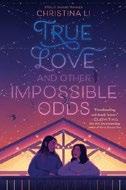
A highly logical college student attempts to quantify love. Freshman Grace Tang is rational, viewing not just her math classes through a logical lens but also life itself. While she enjoys her time with roommates Ruhi and Ava, every weekend Grace drives the half hour home to be with her recently widowed father. Li skillfully contrasts Grace’s family dynamics and history with typical college student life, including strategic flashbacks that also boost the narrative tension. When Grace is faced with a group project for her Game Theory and Market Design elective, she proposes applying the stable match algorithm, designing what she’s sure is a foolproof quiz for Leighton College students to find their true loves. Although her intimidating library co-worker, fellow freshman Julia Zhang, who’s also Chinese American, writes a scornful op-ed for the college paper, the app gains in popularity. Grace even starts dating her match, Jamie, a boy from one of her classes. But when couples start breaking up, Grace’s faith in the algorithm wavers, and her world begins to crumble, although her growing
feelings for Julia are a bright spot. The book’s themes—self-development, core living values, the impact of grief, and changing friendships—are well woven into the plot and support the characters’ development. While the romance starts off slowly and contains some predictable twists, the emotions and the relationships overall feel realistic. An engrossing and original coming-ofage story. (Fiction. 14-18)
Mac, Carrie | Crown (304 pp.) | $19.99
Aug. 13, 2024 | 9781524771041

In 2030, twins brave zombies to escape their father’s violence.
Seventeen-yearold Eira Helvig— a self-described “giantess” at 6 feet, 6 inches tall—and her brother, Soren, planned to leave their Central Washington homestead, knowing their father, a “paranoid, racist, homophobic, xenophobic” doomsday prepper, wouldn’t accept their queerness. When a strain of toxoplasmosis begins turning everyone into zombies, however, they’re stuck sheltering at home. But after their father starts killing people who enter their land, Eira and Soren escape on horseback, leaving their mother and younger sister behind. Though Eira can vanquish zombies (thanks to her Renaissance faire swordsmanship), she can’t outrun them. Luckily, she and Soren are coached by Racer, a Special Olympics triathlon champion with Down syndrome who created the titular club. As they encounter zombies and renegades across a corpse-littered landscape, ZARC gains new members, including nonbinary Cosmo, to whom Eira is immediately attracted. Can the survivors evade feeding zombies to reunite with their siblings at a safe haven? Despite the suspenseful premise, the underdeveloped secondary cast diminishes potentially powerful themes, such as the dissonance of loving a bigoted parent. While Eira
and Cosmo’s physical attraction is vividly portrayed, their rushed emotional bond is less satisfying, Soren, who quickly falls for a boy called Navinder, wryly comments that “queers move fast at the end of the world.” Eira and Soren read white; secondary characters add ethnic diversity to the cast. Plenty of zombie action and queer romance but disappointingly little emotional bite. (Paranormal suspense. 14-18)
Mielke, Kristopher | James Lorimer (184 pp.) | $14.99 paper | Aug. 1, 2024 9781459418080 | Series: Lorimer Real Love
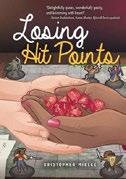
A Dungeons & Dragons game puts Journey in close quarters with former friend Rumour. It’s Journey’s cousin Hamish’s first time as Dungeon Master for the D&D game held at their Guelph, Ontario, workplace, Limited Series. With its eclectic mix of comics, memorabilia, and tabletop games and a cafe menu full of nerdy references and jokes, Limited Series is “Nerd Heaven” for Journey. Joining the cousins are Greta and Nathan, Hamish’s roommates (and regular players). Journey’s surprised, however, by Rumour’s sudden appearance. The pair’s painful history causes tension, but Journey is hopeful for a reconciliation. In the meantime, their D&D character has crab monsters to defeat and a recipe book to retrieve for a mysterious stranger met, in true D&D fashion, at a tavern. The interactions between Journey and Rumour form a solid backbone for the story while also allowing space for other characters to develop fully. Mielke showcases a broad range of player archetypes, from enthusiastic newcomer Ian to mold-breaking Greta and problem player Nathan, a divisive personality who’s unkind toward newbie Ian. This accessibly written title will draw in reluctant readers and appeal especially
to gamers. Journey and their friends come across as true-to-life nerds rather than the all-too-common caricatures. The cast is predominantly cued white; Greta is Korean. Many characters are queer, including Hamish and Rumour, who are trans, and Journey, who’s nonbinary and bisexual. Will engage readers, leaving them alternately cheering and screaming at the cast (author’s note, game notes, character sheets) (Fiction. 12-18)
Milman, Derek | Scholastic (384 pp.)
$19.99 | July 2, 2024 | 9781339009933
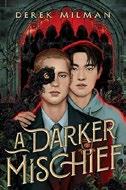
An outsider at an elite prep school discovers a powerful secret society. A prologue sets up an outrageous situation for the narrator—being party to the kidnapping of the daughter of the vice president—before jumping back six months to the beginning of the school year to explain how he ended up in such a predicament. Cal, a sophomore transfer student on scholarship from Mississippi, is isolated at Connecticut’s posh Essex Academy. It’s supposed to be his fresh start after The Incident (among other troubles back home). When Cal chances upon a mysterious party, he learns of a Skull and Bones–like secret society that’s dedicated to exploring the school’s sprawling, storied campus and unearthing its secrets. Cal passionately tears through puzzles and challenges, desperate to earn a place in such powerful company. Alongside exciting urban exploration, Cal falls hard for Luke, a charismatic, troubled Korean American artist who’s also rushing the Society of Seven Eyes. Their ensuing romance is both sweet and spicy. The audacious conspiracy plot is grounded by the powerful emotionality of two flawed, conflicted boys in love. The more Cal sees suspicious, dangerous patterns in
the Society’s activities over the decades, the greater the stakes. The book’s content is heavy—among other disturbing themes, classism and regionalism flavor the school, and Cal has experienced extreme homophobia that’s left him with a disability. The school and Society are racially diverse; Cal reads white. The wild climax leads to a bittersweet denouement. Twisted, enthralling dark academia. (Romantic thriller. 14-18)
Nguyen, Trinity | Henry Holt (224 pp.)
$24.99 | Aug. 20, 2024 | 9781250910820

As they fall in love, two girls in Sài Gòn discover that family and food are connected. Lan, who’s from a family of bánh mì sellers, moonlights as the writer for popular Sài Gòn street food blog A Bánh Mì for Two. When an upcoming journalism competition offers a way to bring much-needed income to her family’s business, Lan jumps at the opportunity to write her take on the theme of “The Most Beautiful City in the World.” But writing no longer feels the same since her dad’s recent passing. A chance encounter with Vivi, a Vietnamese American student who’s also one of her longtime followers, may be the spark she needs to write again. Vivi was inspired to visit Sài Gòn after reading Lan’s blog, but she also yearns to learn more about why her mom, who’s reticent on the subject, left Việt Nam (Vivi’s father became a refugee at age 3). When she finds hidden photos from her mom’s past, Vivi plans a secret trip to Việt Nam with her friend Cindy. Vivi comes to an agreement with Lan: She’ll help Lan overcome her writer’s block in exchange for help with finding her maternal relatives. Told in alternating perspectives, this book has an enticing premise, but the rushed pacing and
lack of details distract from the tenderhearted moments that carry the story. More nuance would have helped with exploring the complexities of queerness, history, and culture within the book’s setting.
Charming but skims the surface. (Romance. 13-18)
Pagano, MK | Nancy Paulsen Books (304 pp.)
$19.99 | July 16, 2024 | 9780593620021

Young adult enemies-to-lovers sleuth and smooch in this debut.
Eighteen-yearold Addie Blackwood is preparing to head to Rutgers University in the fall, although she’s still reeling from the death of her sister, Fiona, last summer. Gifted ballerina Fiona’s death was ruled an accident, but Addie believes Fiona was murdered by wealthy, privileged Thatcher Montgomery. When the family gathers at their estate in Bier’s End, New Jersey, for their matriarch’s funeral, Addie comes face to face with Seth Montgomery, the boy she has unresolved feelings for, and his cousin Thatcher. When Thatcher is found dead at the bottom of the same ravine where Fiona’s body was discovered, Addie realizes that the murderer is still out there. As she and Seth deal with the push and pull of their love-hate relationship and the simmering emotional and physical bonds they share, Addie continues her search for answers in the shadow of lurking danger. Pagano offers readers an engaging mystery with suspects galore. Mystery fans will enjoy sleuthing alongside Addie as she considers the possible guilt of nearly everyone in her orbit, and the characters likewise cast suspicion on one another. Addie’s relationship with Seth runs hot and cold, and Addie’s emotional arc as she tries to trust in his feelings for her are
relatable and understandable. Main characters are cued white. An absorbing, twisty whodunit complete with a swoony romance. (Mystery. 12-18)
Parker, Natalie C. | Putnam (336 pp.)
$19.99 | Aug. 27, 2024 | 9780593619391
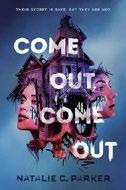
Coming out is never easy, especially for teens in the small Puget Sound town of Port Promise. Life seems idyllic in Port Promise—it’s the kind of place where everyone knows each other and high school sweethearts expect to be together forever. The biggest news lately is the genderneutral casting for the senior musical, Grease. When 13-year-old Mallory Hammond, an “angry, unhappy” closeted lesbian, disappeared, the townspeople thought she’d finally run away. But to her friends Fern Jensen and Jaqueline De Luca, something about her disappearance felt off. On the night Mal vanished, Fern and Jaq found themselves on the edge of the woods without any recollection of what had happened. Five years later, at a party in those same woods, Fern and Jaq are flooded with horrifying memories of that night. There’s no denying it: Mal is dead, and whatever happened to her caused Fern and Jaq to forget their own queerness. The two friends must try to come to terms with their own identities and fix whatever happened that night, even at the risk of their own lives. This strong supernatural thriller tackles the very real issues of homophobia, transphobia, and forced conversion head-on. Parker manages to balance serious discussions of identity and bigotry with genuinely spine-tingling horror. Main characters present white. A poignant blend of queer identity and modern horror (resources) (Horror. 14-18)
Pau Preto, Nicki | McElderry (448 pp.)
$21.99 | Aug. 13, 2024 | 9781665910620
Series: House of the Dead Duology, 2

Three highborn but underestimated teens want to save the world. This sequel jumps right in, avoiding any risk of a slow start by assuming readers will remember all the complex plot elements revealed in Bonesmith (2023). Teens Wren, Julian, and Leo are all smiths (or magic workers) and heirs to noble lineages, but they’ve each spent their lives being undervalued. Wren and Julian were deliberately misled while their parental figures secretly vied for power. When those schemes were finally revealed toward the end of the first volume, the fallout was considerable. Desperate to stop the iron revenants, a powerful army of undead encased in magical iron armor that Julian’s uncle and Wren’s parents created to destroy the Dominions (the kingdom ruled by Leo’s family), the three set off to destroy the well of magic that fuels the revenants. They’re joined by Wren’s recently discovered twin brother. This volume mixes personal growth—Wren deals with her feelings for Julian, her highly dysfunctional family, and newfound powers that both fascinate and disgust her—with episodes of action. Occasional chapters more closely follow Julian’s and Leo’s perspectives. The characters are varied in physical appearance, and their interactions point to the acceptance of queerness in this world. A solid duology closer that will satisfy returning fans. (map) (Fantasy. 13-18)

Penske, Ryan Elizabeth | Rare Bird Books
$28.00 | Aug. 13, 2024 | 9781644284063
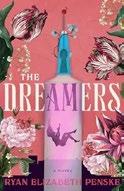
A teen’s life is turned upside down when she’s abducted for an unethical experiment.
Apart from her father’s death a few months ago, 17-year-old Stella leads an ordinary life. She gossips with her best friend and argues with her mother. But everything changes when Stella is kidnapped and brought to the Manor de Rêves, a laboratory run by the formidable Ms. Withers. There, Stella finds out she’s a Dreamer—people with a genetic mutation that allows them to “dream the future.” Under Ms. Withers’ direction, the Dreamers’ REM sleep is recorded and harvested for intel. Stella befriends fellow Dreamers Caleb and Nora and wonders about the mysterious Charlie, a boy she swears she recognizes. The four teens are determined to escape and get back to their normal lives, but watching eyes are everywhere. Tepid prose and stilted dialogue bog down an otherwise interesting concept. The chapters are mostly composed of filler, with scenes narrated by Caleb, Nora, and Charlie describing their lives before they arrived at the Manor. These interludes fail to sufficiently establish the characters’ backstories and detract from the more intriguing escape plot. Blossoming romances among the protagonists feel forced and lack chemistry, and worldbuilding details— such as how the Manor records dreams and what it does with the information it gains—are glossed over, which may leave readers frustrated. Most characters are cued white; Nora has “caramel skin and dark features.”
A frustratingly shallow peek into an intriguing world. (Fantasy. 12-16)
Prendergast, Gabrielle | Orca (96 pp.)
$10.95 paper | Aug. 13, 2024
9781459838215 | Series: Orca Anchor

“Messed-up kids get attention. Good kids get left alone.” After his parents died and his grandfather refused custodianship, 17-yearold Zack ended up in foster care. He’s spent the past three years living with kindly Susan and Jon Tate. With the arrival of 14-year-old Peter three months ago, Zack’s peaceful existence has fractured. While Zack and Peter both share ADHD diagnoses, the similarities end there. Peter’s turbulent home life with his neglectful biological parents and his fetal alcohol spectrum disorder prompt him to bristle and lash out at the Tates and their stability and behavioral expectations. When Peter runs off in a fit of frustration during a dangerous storm, Susan and Jon trust Zack to stay home alone as they head out to find Peter. But Peter returns before the adults do, and with the water levels rising and the house flooding, the boys must work together to survive a harrowing trek to higher ground. Zack’s first-person narration and the straightforward vocabulary will quickly engage readers. The imagery describing ADHD provides a generalized introduction to the condition, and a mention of medication is framed in a way that honors bodily autonomy. The pacing and tension rise and flow with the floodwaters, whisking readers along but leaving little opportunity for richer
For
This strong supernatural thriller tackles real issues head-on.
exposition and characterization, leading to an abrupt conclusion. Main characters read white; names signal some ethnic diversity among supporting characters. A fast-paced, plot-driven story for reluctant readers. (Adventure. 12-18)
Ralph, Vincent | Wednesday Books (320 pp.) $12.00 paper | Aug. 27, 2024 | 9781250882189
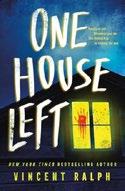
Carnage follows 16-year-old Nate, even as his family settles in a new town and he begrudgingly makes new friends.
The first deaths on Cherry Tree Lane, later dubbed “Murder Road” by the locals in the town of Belleview, happened in 1963. Over the years, through the murders that followed, legend told of the Hiding Boy, who partnered with evil to curse the street and its inhabitants. After Nate and his family move away from Belleview, he lands at MontgomeryOakes High, where he meets the self-proclaimed Hell Chasers: Max, Tyler, and Seb. This group of friends is obsessed with investigating urban legends, and they invite Nate to join them. Even when these legends seem to come to life, the teens boldly go after the most gruesome of them all: the Hiding Boy. It’s back on Cherry Tree Lane that these tales go from spine-tingling to shocking and bloody. Ralph keeps readers on tenterhooks, and they’ll wonder why Nate’s family moved away, if what the Hell Chasers experience is actually real, and what truths lie behind the characters’ relationships. Seb and Nate are white; Max has brown skin and straight black hair, and Tyler is Black. The climactic scene is fittingly chaotic and blurry, creating a contrast with the tightness of the rest of the writing in this well-drawn story.
A suspenseful, grisly tale that’s sure to appeal to genre fans. (Horror. 13-18)
Well-crafted suspense, compelling characters, and wild revelations.
THIS IS NOT A DEAD GIRL STORY
Robinson, Stacey | James Lorimer (152 pp.)
$27.99 | Aug. 1, 2024 | 9781459418158
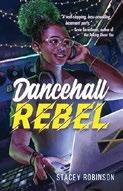
A teen challenges family norms and navigates her sexuality in this novel centering on an Afro-Caribbean Canadian community. Denise, a Black girl born and raised in Ontario by Jamaican immigrant parents, is about to go away to college to study business. Her upbringing has been deeply entrenched in Jamaican culture, and she proudly possesses a deep love of the food and language—and especially dancehall and reggae music. She follows in her father’s footsteps as a DJ and branches out into online streaming. Denise realizes she may be entering a new phase of her life in more ways than one. During one of her frequent visits to Jamaica, she spots a young woman and experiences an immediate attraction to her. But because she’s from a religious Christian family, Denise’s exploration of her feelings causes tension among a lot of her family members, who are traditional in their views and perceive this behavior as a harmful foreign influence. Denise must figure out how to stay true to her evolving sense of self while still honoring everything’s that led to who she is today. Robinson’s language and descriptions of the dual worlds Denise navigates as a first-generation Canadian are authentic in this work with reluctant reader appeal that explores important themes relating to family, community, and identity. Some important, poignant moments feel
rushed and are therefore diminished in impact, however.
An accessible, realistic cross-cultural coming-of-age novel about seeking a balance between tradition and change. (Fiction. 12-18)
Schneiderhan, Caitlin | Feiwel & Friends (432 pp.) | $20.99 Aug. 6, 2024 | 9781250907189
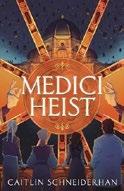
Seventeen-yearold Rosa Cellini returns to Florence after six years away, hoping to dismantle the powerful Medici family, which now includes Pope Leo X. Rosa hasn’t entered Florence since the death of her mother and the fall of the Republic. But now she’s teaming up with Florence’s best thieves—childhood friend Sarra the Tinkerer, Tunisian enforcer Khalid, con man Giacomo, and apothecary Agata. Rosa plans to steal the fortune the Medicis have amassed from selling indulgences. To pull off the biggest heist of their careers, they’ll have to infiltrate the Medici family guard, traverse the rooftops of Florence, disarm Leonardo da Vinci’s traps, and enlist the help of Michelangelo. Rosa taps into Michelangelo’s discomfort about the Medicis’ rule and his longing for the days of the Republic to enlist him as uneasy accomplice in the plot against his patrons, using his status to gain access to the Medici palace. The crew’s dynamics greatly enhance the core of heist narratives; in this case, the bond between the central group develops too late in the story to develop a strong
chemistry. Earlier on, the characters are often isolated, dealing with personal challenges that don’t require team effort. Despite these shortcomings, the relationships that eventually form between them are endearing and compelling. Debut author Schneiderhan transports readers to Renaissance Florence, creating a rich historical backdrop filled with personal dramas and political upheaval. Does a fine job depicting an intriguing era in an adventure that’s peopled with heartwarming characters. (Historical thriller. 13-18)
Strychacz, Isabel | Simon & Schuster (304 pp.)
$19.99 | Aug. 20, 2024 | 9781665942591
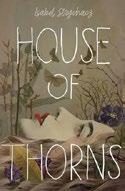
In order to deal with her past, a teenage girl must return to the terrifying house her family ran away from. When she was 13, Lia Peartree, her mother, and her sister Ali fled Brier Hall, the seemingly haunted house in Eastwind, California, that they’d inherited from her estranged father after his death. They lived there for two years, but after Lia’s eldest sister, Avery, vanished, they left in search of a fresh start. Five years later, Lia is trying to live a normal life in Daley, located several hours away, despite everything that’s constantly pulling her back there: the mystery of Avery’s disappearance, troubled Ali’s addiction, her connection to childhood crush Rafferty (who’s still in Eastwind), and what seems to be the house itself calling to her. When Ali tells Lia she’s going back to Brier Hall because she believes Avery is still alive, Lia decides to follow her—against Ali’s wishes—and face the secrets she’s been trying to forget. With the help of Ali and Rafferty, Lia confronts everything that’s been haunting her for the last five years. While the prose is lovely and frequently poetic, Lia’s redundant internal thoughts do little to push the slow-moving action along. The plot, which lacks any broader themes to
elevate it, ultimately falls flat. Main characters present white. An atmospheric but underwhelming take on the traditional haunted house story. (Supernatural thriller. 14-18)
Sweeney, Kate | Viking (320 pp.) | $19.99 Aug. 6, 2024 | 9780593623831

A potentially deadly disappearance shortly after a mysterious death leaves the sole remaining member of a trio of friends desperate to uncover the truth.
Sixteen-year-old Juliette Green and her 17-year-old cousin, Remy, have grown up together in Black Falls, New York, alongside River O’Dell, Remy’s magnetic boyfriend—and Jules’ best friend and secret crush. River’s sudden death completely devastates the girls, even before it’s ruled a suicide, and Jules’ grief turns to shock and terror when Remy disappears one week later, leaving behind her phone without its SIM card. Edgy, mischievous Remy can’t be dead—Jules just knows it—and she pulls Sam, River’s cousin, into her quest when their paths keep crossing and he seems to know things. Perceptive, observant Jules forges ahead despite discovering unsavory information about threatening people in her and Remy’s lives; the weight of all the secrets becomes suffocating even as Sam becomes indispensable and irresistible. When the teens are unable to count on the expected adults for help, they take matters into their own hands. This twisting narrative, which asks complex questions about power and autonomy, will keep even seasoned genre fans guessing while trusting them enough to avoid simplistic answers. Well-crafted suspense, emotionally compelling characters, and wild revelations will propel readers through some lulls in the action to an eminently
realistic if slightly frustrating resolution. Main characters are cued white. A clever, dogged, and well-executed mystery that examines critical issues. (content warning, resources) (Mystery. 14-18)
Wunder, Wendy | Wednesday Books (336 pp.) $20.00 | Aug. 27, 2024 | 9781250770202
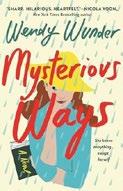
A girl who can read people’s thoughts tries to devise a way to survive high school.
Overwhelmed by her mysterious power, Maya Storm, who’s cued white, has a breakdown and begins the story while on a six-week “Grippy Sock Vacation” at a psychiatric hospital. Upon her discharge, she starts fresh at a new school, where she’s befriended by Lucy, a queer Korean American girl with a quick wit and entrepreneurial ambitions, and develops an instant attraction to Tyler, an olive-skinned boy with a spiritual streak. But Maya can’t shake off the anxieties of her classmates, whose unquiet thoughts plague and fuel her own: a deep generational angst over the pending climate apocalypse and other social crises, plus the constant barrage of everyday teenage stressors like body image, college admissions, and social awkwardness. A tragic accident spurs Maya to take on a personal challenge: She founds Save the Bobcats, a club that will help the local bobcat population (which would look great on her Common App) while also giving Maya a way to use her powers to help her classmates with their own challenges. Maya’s wry, older-than-heryears narration moves at a fast clip and is peppered with references both modern and retro. The depiction of Gen Z anxieties feels spot on, though Maya’s voice stretches credibility as that of an authentic teenager. A humorous and stimulating reading experience that offers glimpses into a girl’s exhausting inner thoughts (content note) (Fiction. 14-18)
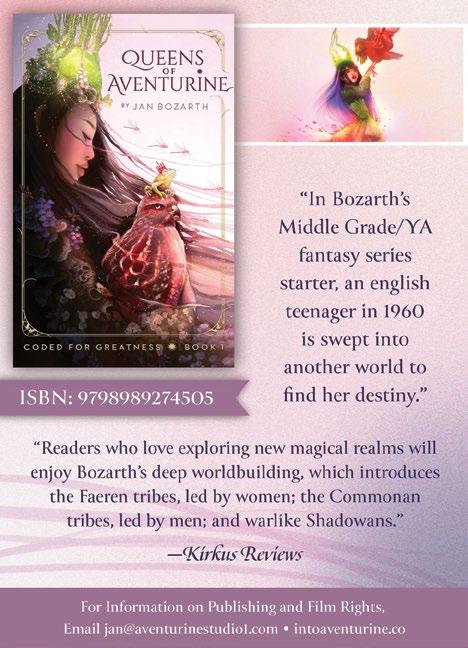








THE QUEER COMMUNITY’S ongoing fight for basic rights has yielded no shortage of heroic acts and standout books, including some of my favorites (Oranges Are Not the Only Fruit , by Jeanette Winterson, and How We Fight for Our Lives , by Saeed Jones). Indieland has its share of excellent memoirs on the subject, including the following editors’ picks about an “archive activist” who saved vast tranches of LGBTQ+ historical documents, a lesbian U.S. Navy veteran who describes life under “Don’t ask, don’t tell,” and a Cambodian American gay man who learned how to advocate for himself and others.
In the Kirkus-starred Archive Activism , Charles Francis documents his efforts to salvage LGBTQ+ history; he recounts finding and saving queer historical documents hidden in attics, libraries, and basements across the United States. “What if the past is torched or stuffed into garbage bags and dumpsters? For LGBTQ Americans this has been the way of our world,” says
Francis. The author’s passion for preserving the past led him to revive the Mattachine Society, a 1950s-era gay rights group. He also discusses his own involvement in Republican politics as an out gay man, including coaching George W. Bush and Karl Rove on reaching queer voters. “Though Francis may not be who readers first think of when they think of an activist, his account is a fascinating and illuminating addition to the history of gay liberation,” notes our reviewer.
In Hiding for My Life: Being Gay in the Navy, Karen Solt outlines building her career in the U.S. Navy while remaining closeted during “Don’t ask, don’t tell,” which mandated that queer service members hide their queer identities. The starred memoir depicts the burden and anxiety of maintaining constant concealment. Solt writes, “Mine is a fear that my life could change in ways that will be horribly painful…a fear that all I have accomplished in the Navy will be stripped away and I will lose everything I have built over




the last eleven and a half years of my career if I say the wrong thing.” The author also describes the tight community built among the trusted few (both LGBTQ+ and not) colleagues. “A powerful consideration of the tension between personal integrity and serving one’s country,” says our reviewer.
Marpheen Chann describes his often lonely experience growing up as a gay Cambodian American in his recommended memoir, Moon in Full: A Modern Day Coming-of-Age Story. The author, as a young child, resided with his mother, grandmother, and sister, and sometimes his godparents. He and his sister eventually entered the foster system and lived with a middle-class evangelical
family in rural Maine, where he was often the only Asian American in his school. Food was one way he could connect to his Cambodianness and to his grandmother, who would “declare the abundance of her love” by filling and refilling his plate with jasmine rice. The author “lucidly shows how he found his authentic identity as a gay man in college, and later integrated his Cambodian sense of self after meetings with his mother, biological father, grandmother, and extended family members,” says our reviewer. “An earnest and well-written account of a search for self.”
Chaya Schechner is the president of Kirkus Indie.
Illustration by Eric Scott Anderson CHAYA SCHECHNERThe Vietnam War’s drudgery, horror, and occasional humanity come through in Clevenger’s memoir and photo portfolio.
The author spent most of 1968 in Vietnam as an infantryman and combat photographer in the U.S. Army’s 25th Infantry Division, and his recollections paint a fraught portrait of boredom, tension, and terror. He spent much time slogging through rice paddies infested with ants, leeches, and pythons; crawled into tunnels in search of Viet Cong guerillas, an ordeal that still inspired nightmares 50 years later; and survived firefights with the help of dumb luck. (He suffered a minor hand wound from a shell-burst while peering through his camera—which blocked
the shrapnel from taking out his eye.) The book also has high drama: Clevenger had to threaten to shoot a fellow soldier to prevent him from raping a Vietnamese girl, witnessed a stewardess on his flight to Vietnam break down weeping at the thought of ferrying men to their deaths, and turned to faith to weather his predicament. Clevenger’s prose is cleareyed, down-to-earth, and full of arresting detail in moments of crisis: “The gunfire paused, and Jerry was the first to rise. Fire cracked again, and Jerry dropped…‘It’s only a scratch,’ I told him as blood soaked the dressing and covered my hands.” The author’s black-and-white war photos tell their own riveting stories. In them, Vietnam is a vista of lush

Clevenger, Bill | Babel Editions | 170 pp. $19.95 paper | March 12, 2024 | 9781956200027
paddies as seen from a Huey—but on the ground it’s a sucking morass (in one picture, a soldier struggles to keep his head above the mud engulfing his body) or, often, a dreary stubble razed by napalm and Agent Orange. Soldiers appear poignantly young, at ease with their lethal gear, sometimes relaxed, sometimes raddled with
adrenaline or exhaustion. Clevenger’s combat photos are intense and immediate: One spotlights a soldier frozen amid a blur of water churned up by enemy bullets. The result is a vivid, emotionally powerful re-creation of war’s reality. An absorbing evocation of the Vietnam experience, full of mordant reflections and searing visuals.
A Don Bluth Fable
Bluth, Don | 2D Press (34 pp.) | $19.99
April 1, 2024 | 9798986251912
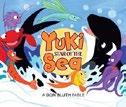
A captive young orca is a showbiz star, but he just wants to go home. This goodhearted picture book about a playful orca named Yuki is clearly based on real-life captive orca Keiko (subject of the 1993 movie Free Willy) and the letter-writing campaign that led to his release. Black-and-white Yuki, dwarfing his goofy ocean pals (including an octopus and assorted fish and crustaceans) with his big, rounded body, becomes the main attraction at an aquarium in Mexico and stars in a movie about Nellie McGee, a whale “who yearned to be free.” The movie’s a big hit, but “one little girl had a curious thought. ‘How come Nellie is free, and Yuki is not?’” Children all over the world write letters on Yuki’s behalf; thanks to their kind hearts, the orca returns to frolic once more in his ocean home. This is veteran animator Bluth’s debut as a children’s author and the first of a planned series of “fables” from Don Bluth Studios, which specializes in hand-drawn illustrations and animation. (It isn’t a stretch to imagine Bluth’s expert, hand-painted artwork as an animated feature.) The story is told through loosely rhyming text, and each full-page illustration conveys a sense of motion in the positioning of foreground details and in the shifting palette of background colors that reflect mood, settings, and plot progression. Strong visual appeal and lively storytelling with a caring, humane message.

Casey, Tom | Heresy Press (294 pp.) | $18.95 paper June 15, 2024 | 9798988717355

In Casey’s novel, a police detective investigates a killing in a small town full of secrets.
The story follows the lives of several citizens of fictional Granville, Connecticut, and how they each intersect with the recent horrific murder of local Ann Wheeler. Bradley Davis is a library assistant and voyeur who watches his neighbors from afar between visits to his alcoholic, psychologically abusive mother. When he’s caught peeping by the police, Det. Gerard Mallory asks him if he’d ever spied on the murder victim, who was a regular at the library; Davis denies it. When the cop tells him he’s willing to ignore the arrest if he sees a local therapist, Dr. Caroline Singer, Davis agrees. The narrative also follows Russell Garner, who was only recently let out of jail after being identified as a victim of wrongful incarceration, and it offers engaging characterization: “Institutionalization had taken something from his spirit. He had not found immunity from loneliness. He could not imagine a favorite chair, fireside, or family life.” A subplot involving an illicit affair between real estate speculator John Addison and marathoner Maggie Hawkins, both of whom Davis also knows, leads to a dark place. All these characters’ lives tangle into a knot that Det. Mallory must untie. Casey also includes the
point of view of Davis’ therapist, which serves as a useful narrative device, as it allows the reader further insight into the voyeur’s mind. As Dr. Singer’s sessions progress, new revelations come to light, and a twist at the book’s climax greatly impacts Det. Mallory’s investigation. Overall, the work is well structured, divided into four distinct parts that tell the story through a variety of thirdperson perspectives, including those of Mallory, Davis, and Garner. Good character development and fast pacing add to the book’s appeal, as do some moments of levity that effectively vary the tone. The book has some graphic scenes, which may make readers wish it had a content warning at the start. The conclusion, however, provides a good sense of closure. An often thrilling novel that’s likely to satisfy mystery buffs.
Cashman, Paul | Self (152 pp.)
$14.99 paper | Dec. 2, 2023 | 9798870601731

Psychotherapist Cashman offers a guide to transforming inner turmoil into actionable insight. The author draws from the rich tradition of Tibetan Vajrayana Buddhism, and his influence by Chögyam Trungpa Rinpoche, under whom he trained, to present a road map for navigating modern life by harnessing the power of negative
An often thrilling novel that’s likely to satisfy mystery buffs.
emotions. His book is rooted in the “Four Karmas,” a Tibetan Buddhist practice of transformation, and features a series of engaging, anonymized case studies. The author invites readers to explore the transformative power of emotions and convert them from a source of suffering into one of wisdom and insight. By reframing the Four Karmas with his own Four Step Practice—tapping into, exploring, befriending, and ultimately liberating emotions such as anxiety, anger, and jealousy—Cashman demonstrates “how a person can discover their basic goodness or enlightened energy by learning to explore the texture of any negative emotion.” Readers will find relatable examples here—particularly those that address feelings of anxiety and inadequacy. Cashman suggests those who suffer from anxiety can train themselves to process this feeling to the point that it’s “no longer a threat but becomes information.” The chapter on inadequacy is also informative, highlighting the tendency of those who feel unworthy to neglect self-care while prioritizing others. Some readers may struggle with Cashman’s advice on anger, which suggests wrapping the feeling in “awareness and kindness instead of attacking someone else or ourselves,” which seems easier said than done. Although the prose is clear and informative throughout, the how-to of the four-step process feels too simplistic to allow readers to fully integrate the Four Steps Practice into their daily lives. Cashman concludes each chapter with practical exercises, however, enabling readers to deepen their understanding of the material— and, potentially, themselves. An often engaging handbook on emotional resilience and self-discovery.
Ciminello, David | Forest Avenue Press (470 pp.) | $20.00 paper May 7, 2024 | 9781942436614
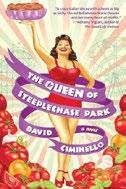
An Italian American teenager in 1930s Coney Island loses one family but gains another in Ciminello’s hyperkinetic coming-of-age tale. An “absolutely, positively, practically, almost-true story,” as the author refers to it, this narrative centers on Belladonna Marie Donato (Bella, to her close friends and family), the whirlwind heart of the Donato family. Fierce, intelligent, blessed with what her first mentor in the cooking arts calls “the Cooking Spirit” and (eventually) a bombshell appearance, at 6 years old, Bella is the type of girl who feels free to bite the nuns who try to change her name. As Bella enters her teens, she discovers sex, which she embraces with gusto, quickly becoming pregnant by Francis Anthony Mozzarelli, a man whose beauty serves as inspiration for a painting of Jesus and a source of longing for his gay buddy, Terelli Lombardi. After Bella delivers a baby boy, her father, Manny, has her sterilized and delivers the infant to an orphanage. These events begin a voyage of selfdiscovery as Bella searches to fill the void of the family she loses while finding circus folk, a warm-hearted priest, a mobbed-up boss with a deeply hidden secret, and any number
of other misfits and outcasts along the way. Ciminello doesn’t bother with realism, telling his tale with vivid, irrepressible language seasoned with plenty of profanity and earthy sexuality. While there aren’t any truly supernatural events, frequent calls to the Cooking Spirit and references to ghosts and hearing voices come close enough to magical realism to make the difference academic. The energy and emotional pitch of the story start high and never let up, but Ciminello settles into a groove after a few chapters, allowing the pathos of Bella’s life to develop in relatable ways. As a bonus, the copious recipes included provide a taste of the Cooking Spirit she exemplifies. Love, pain, and nearly magical meatballs make the story of Bella Donato a delightful read.
Colt, Henri | Rake Press (439 pp.) May 3, 2024 | 9781959185024

Colt paints a multidimensional portrait of an Italian master. The author is a doctor, a scholar, and, as he writes in the preface, an art lover. All these facets come into play in this fascinating work in which Colt examines the life of Amedeo Modigliani through the lenses of the artist’s tuberculosis and other ailments, his struggles with alcoholism, and other factors that contributed to his bad-boy reputation. Colt aims to provide a “critical view of the interplay between his illnesses, his environment, and the social fabric of early twentieth-century Paris.” The book opens like a standard biography, juxtaposing Modigliani’s birth in Italy in 1884 with the rise of the bohemian culture that would flourish in Paris. As a child, he fought pleurisy and, later,
typhoid fever, which he was diagnosed with soon after picking up drawing. Full immersion in the art world occurred after he’d recovered, and the text faithfully follows the young Modigliani from Florence to Venice to Paris, scrupulously charting the progress of the artist, who would die at age 35 and become known as a master. Along the way, Modigliani developed tuberculosis. Colt devotes five chapters to describing the disease (Modigliani survived, but the illness was a precursor to future demons, including drug and alcohol abuse and womanizing). This is material that, in a lesser writer’s hands, could feel like slogging through the mud; here, it is compelling fare from start to finish. The author’s background in medicine is evident throughout the narrative, but the medical lessons never get in the way—they add a dimension to Modigliani’s story that’s not always present in other books about him. Colt is an engaging writer who successfully penetrates the surface of his subject’s story—which, despite the author’s meticulous thoroughness, remains eminently readable. The book is exhaustive, though not exhausting, and stands as a definitive work about a complicated and remarkable artist who was “young, handsome, absurdly talented, charismatic, resilient…and troubled.” A penetrating biography of one of history’s most acclaimed artists.
Kirkus Star
Zen in the Vernacular: Things as It Is
Coyote, Peter | Inner Traditions (352 pp.) | $20.95 paper March 19, 2024 | 9781644119754

Coyote shares his views of modern Buddhism in the real world.
The author, a popular actor and a Buddhist priest, mentions that this work’s
chapters originated as lectures given on Facebook during the Covid-19 pandemic: “I felt that the translation of Zen Buddhism into an American vernacular required the physicality of a book, with its portability, permanence and ease of bookmarking. There is something user-friendly about a book that does not require whizzing back and forth through the videotapes of lectures stored on an online channel.” In these pages, Coyote outlines the Four Noble Truths of Buddhism (Dukkha, Samudaya, Nirodha, Marga) and their meanings. He also discusses the Eightfold Path and other foundational Buddhist teachings. His concentration is on the secular Buddhism that’s most commonly practiced in the United States, grounding Buddhist thinking and practices in the context of the issues of the day, such as the murder of George Floyd and, as he puts it, “the aftermath of a violent attempt to block a legitimate election, overthrow an elected president, and place democracy’s head on the chopping block.” The author asserts that this approach is in line with the teachings of the Buddha himself, who “cautioned all who would listen against seeking childish, romanticized relief from our actual lives.” He offers no such childish relief here, instead writing very directly about human iniquities ranging from the Holocaust to the systemic racism of modern-day American law enforcement. The calm, inexorably sensible way Coyote links the deeper principles of Buddhism to secular social awareness is cumulatively convincing. He never browbeats, and he never allows even his non-Buddhist readers any easy excuses. “Once we have experienced the infinite interconnections between all parts of the Universe,” he writes,
“why do we wait until people are impoverished, imprisoned, suffocated, and murdered in the streets before we intervene on their behalf?”
When he writes that people don’t have to be perfect before doing what’s right, he makes readers believe it. A quietly uplifting, practical view of Buddhism.
Davis, Travis | My Random Thoughts (208 pp.) $24.95 | $19.95 paper | May 1, 2024 9798990138216 | 9798990138209 paper

An American doughboy experiences horror and heroism on the Western Front in Davis’ searing World War I novel.
This story centers on the
mysterious diary of a soldier (with the American Expeditionary Force in France in 1917 and 1918) whose vivid account of the war never mentions his name. The diary is discovered in the present day, hidden in a Parisian bookstore, by Alex Grover, an American high school senior on an awkward graduation holiday with his estranged dad, Walter, a retired U.S. Army veteran. The two bond over the journal’s gripping portrait of the war. The diary recaps the soldier’s training as he learns to survive the extraordinarily lethal environment of high-intensity combat, where death lurks in everything from snipers’ bullets and explosive shells to poison gas and, late in the war, the Spanish flu. The
action ramps up to the great Allied offensives of 1918 as the diarist weathers shattering bombardments and leads his squad through machine-gun fire as they storm German trenches. Reading the diary and visiting American military cemeteries in France, Alex and Walter piece together clues indicating that the diarist might be the man buried in the Tomb of the Unknown Soldier at Arlington National Cemetery. Davis, himself a veteran, has penned a rousing, blood-and-guts combat narrative, steeped in meticulously rendered military procedure and ghastly carnage, depicted in blunt, visceral prose. (“ All of a sudden, I heard the sound of metal on metal. I looked over to the soldier on my right. He just lay there. Half his head was gone .” ) He also deftly traces the psychological transformation of his protagonist, who is brave, patriotic, and self-sacrificing but increasingly coarsened by war. (“Once we got out of the building, we laid the soldier on the ground…I didn’t cry. I don’t feel empathy or sadness. I’m mad I’m one soldier short in my squad.”) The result is a riveting tale of a nameless everyman charging through hell on earth. An engrossing war saga that mixes harrowing battle scenes with resonant pathos.
DeLaurentis, Robert | Rare Bird Books (280 pp.) | $26.00 | April 9, 2024 | 9781644283998
Series: The Boy From Mars Trilogy, 1

An Earth-born Martian teen travels through space and time to save his home planet in DeLaurentis’ debut YA novel.
Fifteen-year-old Thomas Knight lives on the Mars Station, a strictly controlled interior city on the Red Planet in the late 21st century. He
learns all he can about Earth, the “origin planet,” which superfloods rendered uninhabitable a couple of decades earlier. His Earth obsession could lead to trouble—Martian inhabitants are confined to the Station, and attempts at escape are dealt with harshly. One day, Thomas meets a stranger who makes the startling claim that Thomas is not like his genetically engineered peers—he was the very last child born on Earth (“With a real mother and father? How could that possibly be?”). His birth father, whom he’s never known, has worked with others to implement a plan for Thomas to salvage their devastated world. It entails timetraveling into both the past and the future, but Thomas doesn’t exactly land where he was meant to. Arriving in 2023 Marin County, California, he meets a fellow teenager, Elly McAllister, who can tell him even more about the planet that has long enchanted him. DeLaurentis depicts a visually rich SF setting including the Station’s interior of overlapping circles and the children’s diet of geometric foodstuffs (like freezedried triangular tomatoes). The scenes set on Earth are equally engaging as Thomas spots so many peculiar things that Elly must explain to him, from a dartboard to a roller coaster. The relatively small cast shines, including Thomas, who easily adapts to changing circumstances; the ever-helpful and easygoing Elly; and Eno, Thomas’ smaller “counterpart” (the boys room together on the Station), who’s brilliant and loyal. Wherever he goes, the young hero faces obstacles, such as Mars’ sub-zero temperatures, megalodons on Earth, and bullies that, sadly, exist on both
worlds. While this book delivers a satisfying, well-rounded adventure, it’s also the first installment in a proposed trilogy—Thomas’ interplanetary, time-hopping journey is just starting.
Vibrant backdrops and stellar characters animate this worthwhile SF romp.
Essay, Laura | She Writes Press (352 pp.) $17.95 paper | July 9, 2024 | 9781647427047

In Essay’s courtroom drama, an attorney whose career is on the rise faces off against a powerful pharmaceutical company. Claire Hewitt is a new partner at the Philadelphia law firm of Blackman & Bradford, and she’s been made first chair in a case that could make or break her career.
Wealthy Clifford and Margo Satori are accusing Novo Analgesic Systems, one of the nation’s largest pharmaceutical companies, of medical negligence in the opioid death of their teenage daughter, Emma. The case is personal for Claire, who’s still haunted by the opioid death of her beloved younger sister. The Satoris want vengeance, and so does Claire: “A new revenge,” she declares. “A revenge called justice.” She’s paired with Alec Marshall, “the firm’s prodigy,” and harbors insecurities that any setbacks in the case will be blamed on “a female partner who’s not quite ready to run with the big boys.” However, she impressively takes on a
Vibrant backdrops and stellar characters animate this worthwhile SF romp.
THE BOY FROM MARS
formidable array of courtroom combatants, including the company’s in-house counsel, its slippery CEO, and a team of doctors with varying degrees of fidelity to the Hippocratic oath—as well as an obstinate judge. Readers won’t find very much that’s new in this thriller’s depiction of the devastation wrought by opioids and Big Pharma, which, in recent years, has become a ubiquitous villain in fiction. As such, revelations of corruption, conspiracy, and murder are unsurprising developments, although there’s no denying that the prescription drug industry remains a potent adversary. Fans of the courtroom-drama genre will even recognize an exchange from A Few Good Men (“Are we clear?” “Crystal”). However, Essay knows her way around this material and has clearly done her research on aspects of the opioid epidemic. Also, Claire and Alec make a good team, and readers will likely want to see them take on more cases.
The benefits of this briskly entertaining, if sometimes-familiar, debut outweigh the risks.
Every, Debra K. | Woodhall Press (272 pp.) $19.95 paper | Oct. 8, 2024 | 9781960456137
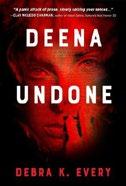
A woman must uncover the truth behind the horrifying bargain that strips her of her senses, one by one, in Every’s horror novel.
Deena Bartlett cares for her dying, elderly Aunt Agatha at Wilshire Rehab Center. She has long had a tumultuous relationship with her cantankerous aunt, but Deena— partly fueled by the facts that her own parents were both dead by the time she was 25 and that Agatha is the only living relative she has left— attempts to do her part. When Wilshire’s mysterious old cleaning
A compelling plot and mounting sense of dread infuse this atmospheric thriller with plenty of chills.DEENA UNDONE
woman, Jadwiga, warns her to “take care…She is coming for you,” Deena soon finds herself facing a nightmarish set of attacks seemingly designed to take out her five senses, one by one: “The hum rose higher in pitch, piercing the stale, hot air. Deena threw her hands over her ears hoping to block it out—which was when she discovered it wasn’t coming from the room. It was coming from inside her head, growing louder and higher, throbbing against her temples, pressing against her eyes until it felt as if they would burst from their sockets.” Deena seeks help from Jadwiga, who reveals that Agatha made a deal with the Sensu, an ancient creature who feeds off Deena’s senses in exchange for curing Agatha. After each attack, Deena is left with a mark somewhere on her body for five days before the Sensu moves on to the next sense. When Deena is branded with the last Tactu (touch) mark, her life will end. To stop the relentless attacks, Deena must discover the truth behind her aunt’s bargain before it’s too late.
Every has crafted a genuinely spooky tale that relies less on body horror and more on the slow and patient buildup of moody suspense— an approach that fans of Grady Hendrix and Stephen King will surely welcome. The gore is never gratuitous as the tension slowly mounts and Deena uncovers the family secrets that have made her a marked woman. That’s not to say the book doesn’t have some absolutely stomach-churning moments, especially when it comes to the twisted old Agatha: “With a satisfying sense of release she pulls off her fingers, one by one, and drops
them into the lake, watching the blood turn the water black. As each finger sinks it expands, becoming a formless, irregular mass floating just below the surface. She gazes at them as a mother would her children, her need for a legacy finally satisfied.” The dialogue mostly feels natural, with only a few missteps—such as the repeated appearances throughout the novel of a disembodied voice intoning “I’ve got you now,” a catchphrase that tends to come across as more “campy Wicked Witch” than legitimately creepy. The author manages to infuse her solid horror story with larger themes—including motherhood, grief, youth, and death—that lend Deena an added layer of depth while raising the stakes of her emotional and physical journey. The novel’s eerie, open-ended conclusion is reminiscent of classic horror novels and movies that manage to satisfy even as they unsettle. A compelling plot and mounting sense of dread infuse this atmospheric thriller with plenty of chills.
Finnamore, Suzanne | Post Hill Press (224 pp.) $23.49 | Oct. 24, 2023 | 9798888450154
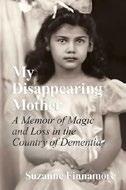
Finnamore presents a memoir and biography that she wrote as she was losing her mother to illness.
In 2017, the author returned to her home state of
Deena UndoneCalifornia from North Carolina to be with her mother, Bunny Mathews, who was suffering from dementia. In addition to relying on friends, practicing self-care, and using talk therapy, she used the act of writing to cope with her grief and frustration. Finnamore recorded her mother’s decline, as well as her own thoughts, but she also reflected on her family’s past. Bunny was born in Puerto Rico in 1935, and an aunt in New York City adopted her when she was 2 years old. Her new family moved to Los Angeles in the 1940s, and Bunny went on to live a varied life in California: as a wife twice, as a professional clairvoyant, and as a mother of two children. She enjoyed reading books, wearing Christmas earrings, eating Hostess Ding Dongs, and dancing, although dementia would eventually rob her of these and other memories. Her family kept a “Parade of Faces” of her loved ones in a photo slideshow on a TV screen to try to help Bunny remember those closest to her. Finnamore shares newly found family secrets and long-loved recipes for Puerto Rican foods. She presents this material in short vignettes that aren’t chronological but organized into three sections: “What Was Lost,” “What Was Found,” and “What Remains.” Finnamore uses many metaphors for her mother’s condition, but the dominant one is that dementia is like “the most foreign country I know, the least charted.” When the author interacted with her mother, she had to navigate a place where the rules were neither clear nor consistent. Sometimes Bunny remembered her, and other times she screamed for her to leave. Anyone familiar with this type of disorienting experience will feel Finnamore’s honesty and courage in these pages, and the fact that the stories don’t appear in order reinforces the feeling of how sufferers and caretakers alike lose touch with time.
Short but rich observations of a family’s history and traditions.
Harper, Hillary | Illus. by Felipe Calv Cannoli & Co. Books (38 pp.) | $18.99
$13.99 paper | April 23, 2024
9798988363644 | 9798988363637 paper
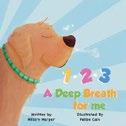
A fearful dog finds companionship with a newfound canine friend in Harper’s picture book.
Mack is a gentle giant of a dog whose towering stature contrasts with his internal struggles; despite his imposing size, Mack suffers from anxiety. When Mack’s owner introduces him to Gertie, a spunky and much smaller (and fearless) companion, Gertie teaches Mack her tried-and-true method for facing anxiety: counting to 10 while breathing deeply. There’s a catchy rhyme that goes with the process, which young readers might like to try for themselves (“Remember, 1-2-3, a deep breath for me, / 4-5-6, blow it out like candlesticks, / 7-8-9, everything will be fine, / When I get to 10, I do it again”).
With Gertie’s help, Mack learns to confront his fears. In direct, easy-to-follow language, the book teaches important lessons about the transformative power of friendship and the importance of finding courage in the face of fear. (And the empathy displayed by Harper’s pooches sounds a reassuring note throughout.)
Calv brings Mack and Gertie to vivid life through his deceptively simple full-color illustrations—even without the text, young readers will likely be able to determine what Mack and Gertie are feeling, thanks to the telling looks on their faces. The calming colors—browns and deep reds as opposed to brighter hues—emphasize the sense of calm that Mack is looking for.
Charming illustrations and an easy-to-follow story will engage the youngest of readers.

Honegger, Hannah | Quill and Flame (302 pp.) $18.99 paper | July 4, 2024 | 9781957899534
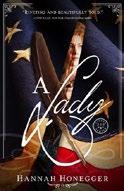
For more Indie content, visit Kirkus online.
In Honegger’s historical novel, a young 18th-century Englishwoman visits the colonies and finds herself in sympathy with the colonists’ desire for freedom. It is fall in 1777, and 19-year-old Mary Hannah André is restless, “tired of being nothing but a pretty doll, a flirtatious distraction for the men she [encounters] at parties.” Chafing against the constraints of English society and familial expectations that she find a suitable husband, Mary convinces her mother to let her journey to the colonies to visit her brother, John, a British officer stationed in Philadelphia. Once there, she begins to venture out on her own and observes the capricious and brutal British mistreatment of the colonists. One morning, following an argument with John, she rises early and dresses comfortably for a solitary ride into the countryside to sort out her thoughts. Thus begins an unanticipated adventure that will change her life. Lost during a snowstorm, she comes across a battlefield strewn with mutilated colonial bodies. She is then set upon by two Redcoat deserters, one of whom slashes her thigh while attempting to rape her. Fortunately, she is rescued by Major Benjamin Tallmadge, of the Second Continental Light Dragoons, and taken to the Continental Army camp, where she remains under Tallmadge’s protection, ultimately joining George Washington’s Culper Ring spy network. Honegger’s historical novel is both a love story and a tale of espionage, painting vivid portraits of high society in Philadelphia under British rule and of the harsh, impoverished conditions in the Continental Army encampments. Her prose carries the lilt of a romance novel—from time
to time, she strays into such effusive metaphoric constructions as: “She breathed the words, chewing on them in her mouth before swallowing them into her memory.” Honegger’s fanciful, hypothetical version of Mary André—who, historically, was indeed the sister of Captain John André in King George’s army—is a spirited, engaging protagonist, bringing readers directly into the intriguing spy games and up close to the colonial luminaries of the day. Atmospheric and entertaining, generously peppered with historical tidbits.
Pricing, and Effective Technology Management
Howatson, Adam | LogiSense (152 pp.) | $18.99 paper April 4, 2024 | 9781738260737
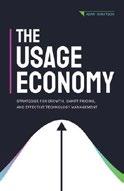
Howatson presents a thorough guide to understanding the shift to a usage economy, replete with strategies to effectively exploit its opportunities. According to the author, a profound shift in business to a usage transaction model, in which consumers only pay for precisely what they use, is well underway. Readers can see examples of this approach quite clearly in cell phone plans and cable television subscriptions; customers are tired of paying for minutes unused or channels unwatched. Speaking broadly,
millennials, per Howatson, are disenchanted with the way they are treated as consumers, frustrated with the frequency with which they are taken advantage of, and increasingly assertive of their consumer rights. The good news, the author asserts, is that there is opportunity within this disillusionment to “rehydrate broken social contracts through trust, honesty, transparency, optionality, and value for money.” A usage transition model, in which a business is capable of gathering richly detailed data about its customers, allowing it to improve its products and services exponentially, is “economics at the atomic level.” This data telemetry, combined with the rise of artificial intelligence, will also drive innovation and market positioning, per Howatson. In this impressively comprehensive but concise study, covering a remarkable expanse in fewer than 200 pages, Howatson lucidly explains the nature of the shift and the advantages it brings to both businesses and customers. He also provides concrete strategies for capitalizing on this emerging trend and rigorously discusses issues like pricing and customer retention. Finally, the author convincingly argues that this emerging system is not only economically superior to the more traditional one but also morally superior: “The Usage Economy, by nature, isn’t about greed. It’s about a fair trade for value and only using the resources you need.” Howatson is the CEO of LogiSense, a global leader in usage-based and subscription billing solutions; his experience and knowledge are inarguably deep. This is a helpful introduction to an oddly neglected subject in business literature.
An edifying primer on an increasingly important topic.
Labozzetta, Marisa | Guernica Editions (200 pp.) | $17.95 paper Oct. 1, 2024 | 9781771839075

Labozzetta examines desire, connection, marriage, and ambition in her latest collection of 10 short stories. These quirky, emotionally fraught, and deeply introspective slice-of-life pieces feature moments of dry wit and subtle, unexpected twists.
“Amnesia” tells the story of a man who suffers a head injury and realizes he doesn’t love his fiancee, and in “For the Love of Buffaloes,” a wealth manager suddenly quits his job and becomes singularly preoccupied with producing the perfect mozzarella. Among the standouts is “The Intruder,” about an eccentric older woman who aggressively asks a stranger about her love life and underwear preferences; when the prying woman accuses her, with disgust, of wearing practical, unattractive cotton underwear hiked to her waist, the character indignantly and humorously retorts: “It’s bikini style—on sale.” The most stunning piece, which will linger with readers long after it ends, is “The Woman Who Drew on Walls,” about a woman named Iris whose memory is muddled by dementia and her transgender son who helps care for her; it reveals the close relationship between the two, and Iris’ difficulties and rare moments of lucidity in touching and sometimes-amusing conversations. When Iris tells her son, “Your father. Well, he’s not your father,” he considers the veracity of her claim in light of her other confusions. The eclectic and cleverly nuanced characters, who dwell in Italy, El Salvador, Antarctica, and elsewhere, are recognizable and relatable—flawed and whimsical enough to be interesting without seeming unrealistic or outlandish.
Labozzetta’s taut, self-assured storytelling is impressive, as is her ability to compassionately capture the complexities of ordinary lives in thought-provoking ways.
An exquisite set of stories steeped in humor, humanity, and grace.
Lawther, James | Squawk Point (274 pp.)
$22.78 | $12.65 paper | Sept. 4, 2023 9781739438920 | 9781739438906 paper
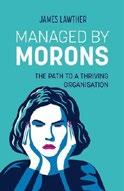
A series of pointers on how to improve the workplace experience by fixing management.
“The pattern that links dysfunctional organisations, be they dictatorships or local public services,” writes Lawther in his nonfiction debut, “is how their managers behave and the culture they create.” And often, Lawther says, drawing on his own decades of experience in the corporate world, the managers are the problem. As he puts it, “Seniority and capability don’t always go hand in hand” (he mentions that one of his bosses was “a bully and an idiot” and comments drily that this is “a potent if somewhat unwelcome combination”). The guide examines various companies that not only proclaim their intent to deliver good service, but actually deliver, like IKEA, Whirlpool, and even the author’s own local Nottinghamshire County Council’s libraries. “It isn’t lip service; they back that up with projects, processes, policies, procedures, rules and regulations,” he writes. “This all sounds obvious and trite, but having clarity of purpose and that purpose being meaningful and customer-focused is both nuanced and powerful.” Such accountability is vital for creating a
healthy work atmosphere, according to Lawther. “In a fair culture, people highlight issues,” he writes. “In organisations that apportion blame, people hide them.” Lawther lists three ways to change any company— change the moving parts (factories, storefronts, employees), change how the parts of the business work (altering the rules, for instance), or change the purpose—and he notes that unimaginative managers always choose the first way. In fast-paced, engaging prose, he urges managers to rethink their approach by listening instead of dictating, confessing to failures instead of blaming others, and clarifying goals. He asks if readers can articulate their team’s purpose. “How do you know if they are achieving it if you can’t?” Lawther is frank and wryly humorous in his blunt assessments of management’s typical failures, spotlighting better communication over rote procedures. Managers of all kinds will find his advice bracing and beneficial.
A very engaging back-to-basics overview of righting management’s long-standing wrongs.
The Wren in the Holly Library
Linde, K.A. | Red Tower Books (400 pp.) $29.69 | June 4, 2024 | 9781649374073

In Linde’s paranormal thril ler, a woman goes on a dangerous quest to retrieve a rare object.
Thirteen years ago, murderous monsters of all kinds appeared
>>> from the shadows to murder countless city dwellers, including in Kierse McKenna’s home of New York City. To survive, Kierse (“It’s like Pierce but with a K,” she says) joined her late mentor’s thieving guild and became a master thief. Three years ago, the Monster Treaty was put in place, finally ending the ongoing violence and allowing humans and monsters to live together. When Kierse’s benefactor sends her on a mission to steal a diamond ring, she unwittingly finds herself inside the home of a mysterious monster named Graves. Breaking into the house means that Kierse has also broken the Monster Treaty, but Graves, after seeing an unusual necklace around her neck, offers her a j ob. The warlock wants her to steal a rare object hidden under the city in a place called Third Floor, which is protected by an unbreakable security system and guarded by the vilest creatures. Kierse agrees, locking herself into a bargain with Graves and entering a world of chaos involving monster gangs, magic, and a rivalry spanning hundreds of years. Throughout Linde’s lively fantasy, Kierse struggles to keep her two best friends, Gen and Ethan, safe, and she also begins to uncover important secrets about herself. The author also effectively weaves a steamy romance into the fast-moving plot. Although the story is mostly told from Kierse’s perspective, it’s occasionally broken up by short chapters titled “Interlude,” which offer intriguing insights into other characters’ thoughts. The creative premise of a monster-filled New York makes for rich, detailed worldbuilding
A high-stakes fantasy heist novel that readers may find hard to put down.
THE WREN IN THE HOLLY LIBRARY

Kirkus presents Indies Worth Discovering , a sponsored feature spotlighting an array of fiction and nonfiction works recommended by Indie editors. Here readers can find a useful sampler that shows the excellence and breadth of Indie titles. Find pulsepounding thrillers, revealing memoirs, twisty mysteries, fiery romances, thoughtful business books, problem-solving self-help guides, and incisive poetry collections, among many other works. Searching for something new and exciting? Read on.
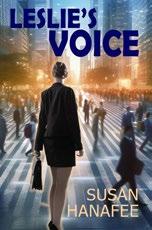



A rousing corporate melodrama full of twists, turns, and vivid characters.

By David Yuen Illus. by Micah Zhang
An appealingly illustrated work with an upbeat message about trying new things.
An absorbing tale of friendship that’s endearing as often as it’s unabashedly riotous.

A genuinely funny sendup of a muchlampooned industry.
An ambitious and multifaceted novel that cunningly challenges patriarchy and its consequences.
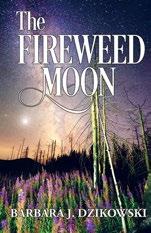
Matsumoto & Kent
Matsumoto
An introspective, emotional novel that will draw readers in.
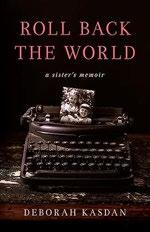
Love and familial empathy shine through in this quiet, powerful novel.
Kirkus Star
Roll Back the World
By Deborah KasdanIntricate and affecting, Kasdan’s debut finds hope in the saddest of stories.
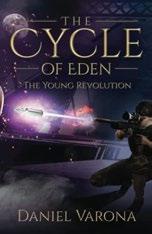



A rollicking, otherworldly tale that’s only just getting started.
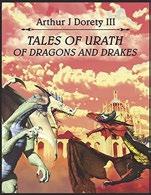
Clara’s Secret
By Stephan R. FrenkelA tender, personalitycentered history of golden age Berlin.
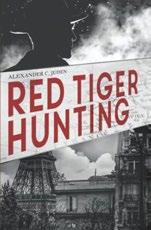
Love, Loss, and Honor: Volume III: Betrayal
By Herbert WiensA vigorous potboiler combining over-thetop melodrama with psychological realism.
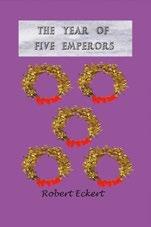
An engaging, positivity-preaching fantasy with Seussian and Lewis Carroll–esque aspects.
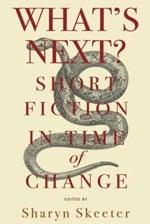
Tales of Urath: Of Dragons and Drakes
By Arthur J. Dorety IIIA unique take on fantasy lit that ably tackles science, magic, and mythology.
Red Tiger Hunting
By Alexander C. JudenA rousing adventure in jazzy post-WWI Europe.
Kirkus Star
The Year of Five Emperors
By Robert EckertAn entertaining sword-and-politics saga full of engrossing period detail and sharp drama.
What’s Next?
By Sharyn SkeeterAn impressive, dynamic host of spectacular stories filled with engaging characters.
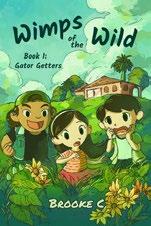
Adventure and a bit of social awareness combine in a compelling book for young readers.

A sometimes grandiose but often captivating argument for the house as the framework for a vibrant life.

A touching consideration of the frighteningly precarious nature of good health.

A striking, characterdriven tale about a disturbed woman and her quirky world.

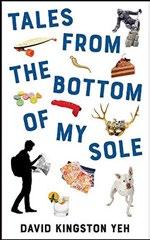
Here’s a Letter From Thy Dear Son
By Edward H. PulliamAn engrossing account of life in the American South during its most momentous era.
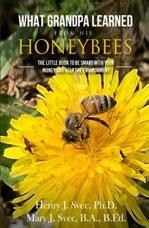
of My Sole
By David Kingston YehA bighearted novel of yearning and human decency.
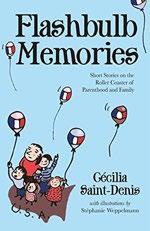
By Henry J. Svec & Mary J. Svec
A mostly solid introduction to financial topics through the lens of honeybees.
By Cecelia Saint-Denis Illus. by Stéphanie Weppelmann
An evocative collection of stories about family life.

Brimming with resounding themes and notable characters.
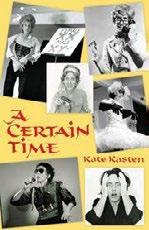
A well crafted, contemplative chronicle of a woman’s journey through psychological, political, sexual, and social turmoil.

By T.C. Corbett
Ed. by William A. Corbett
An often striking meditation on what the author calls “the Glamor, the Glory, and the Misery of War.”

Kirkus Star
By M.M. Downing & S.J. Waugh
A tale with plenty of humor and suspense, memorable characters, and a plot that’s vividly informed by a challenging time in U.S. history.
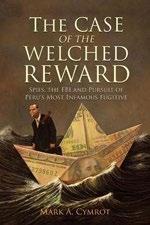
A captivating account of a spectacular legal drama.

Tales that, at their best, call to mind the work of Stephen King, O. Henry, and Edgar Allan Poe.

A timely and relatable story about job insecurity.

An exquisitely moving look at compassionate medical intervention in refugee camps.
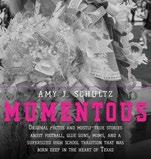
An entertaining, brilliantly shot look at a Texas high school tradition.

By Ivan Kochan
Ed. by Christine Kochan Foster & Mark Collins Jenkins
A tale told with buoyancy, poignancy, anger, and love.

A bighearted novel about the past’s refusal to recede.

An informative self-help work on a difficult subject.

Intricate, incisive writing that traces the fallout of the past and righteously rails against abuse.
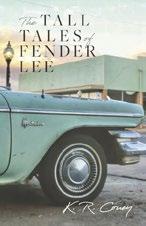

A delightful, nostalgic tribute to innocent fandom.

The Tall Tales of Fender Lee
By K.R. CoueyA pleasing pastiche of ’50s genre and anthology TV.
Kirkus Star
The Cello Still Sings
By Janet Horvath
A poetic, nuanced tribute to the power of music and family.
FINDING TRUE PURPOSE
(“Another consequence of monsters in the public eye were the trolls who managed the subway entrances”), and little mysteries sprinkled throughout the novel give readers space to piece together the truth. A high-stakes fantasy heist novel that readers may find hard to put down.
Molnar, Marta | Self (402 pp.) | $15.52 paper Dec. 11, 2023 | 9781940627656
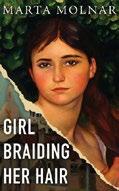
Two women’s artistic ambitions converge across continents and centuries in this novel. In present-day Philadelphia, Ellie Waldon has not been able to pull herself out of a slump after her husband’s death from cancer. The discovery that her boss has been passing off her work as his own is the last straw, and she quits her job. But before she storms out, her work as a brand manager introduces her to the oeuvre of pioneering 19th-century artist Suzanne Valadon. The narrative then pivots to Suzanne’s tumultuous life in Paris. Raised by an alcoholic single mother, Suzanne is expelled from convent school at 11 years old and hurtles between various jobs, always dreaming of becoming an artist. Molnar’s book proceeds to alternate between Ellie’s and Suzanne’s storylines. Ellie learns that most museums display only 2% to 4% of their art at a given time. With Suzanne as her inspiration, Ellie decides to found the Museum of Unseen Art to “display art that nobody sees because it’s stashed away in basements in musty
drawers.” Ellie’s efforts to change her life are challenged by her older sister’s skepticism and the specter of the home she lived in with her husband, which she was forced to sell. In Paris, Suzanne eventually becomes an artist’s model, which gives her the opportunity to study painters and sculptors at work. She begins to understand “form, the way it’s born of light,” and uses her earnings to buy art supplies. Readers follow Suzanne’s encounters with famous artists of the time, including Toulouse-Lautrec, Renoir, and Degas, as she grasps at financial stability, creative satisfaction, and respectability. Fans of Maggie Shipstead’s Great Circle (2021) will find much to enjoy in this meticulously researched novel’s braided narratives. Suzanne’s storyline is particularly enthralling, with its glamorous locations and references to historical figures and events. Ellie’s story suffers slightly by comparison, not only because Philadelphia is no Paris, but because Ellie’s plot is somewhat overstuffed with dialogue, unnecessary plot twists, and too many characters. Although Molnar has a gift for quick character studies (at one point, she describes Ellie’s unctuous former boss as looking “like a meerkat on guard duty”), the book’s modern-day sections would have benefited from a slower pace and deeper character development.
A pair of resilient heroes memorably explores creativity across the ages in this vibrant tale.

Mongait, Terri | Victoria and Albert Press (244 pp.) | $19.99 paper April 11, 2021 | 9781734779202
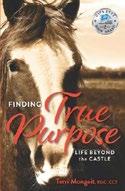
This memoir follows one woman’s long, winding journey to finding herself.
Equine coach Mongait begins her remembrance by recounting the highlights of her impressive professional career; she worked as a full-time dental assistant, just out of high school, and later became an executive secretary for a National Basketball Association team’s vice president. She went on to be an executive assistant for the New Jersey Nets’ general manager, and then a legal assistant to the head of the litigation department at a prestigious New York law firm. However, the memoir starts in earnest after she moves to Los Angeles to work for the Walt Disney Company in the early 1990s. Amusing stories—about quickly organizing a retreat for 250 Disney lawyers, for instance, or deciding to lock the back door of her boss’s office to prevent an entitled executive from gaining access—are interspersed with poignant memories of an unhappy childhood in the Queens borough of New York City and her decision to get help for alcoholism in 1994. After realizing, about a decade later, that the corporate life was not her “soul’s purpose,” she shifted to working with therapy horses, but she suffered a traumatic brain injury during training. Her time in an intensive care unit, as well as in a rehab center, made her question whether she could ever fully recover. Mongait’s emotional story of her path to healing is truly uplifting and culminates in her establishing her own six-acre horse ranch near the Rocky Mountains.
Color photos, including heartbreaking images of her in the hospital, are scattered throughout the text, while her tone remains cheerful and conversational throughout: “I believe that certain circumstances, people, and animals come into our lives when we need them the most...I had to gather the appropriate knowledge and life lessons before I was ready and open to the healing gifts of Equus ” Although some of the more banal recollections of her various jobs slow the memoir’s momentum, Mongait’s stories of triumphs result in an affecting true story of perseverance.
A warm, inspirational read featuring accounts of some extraordinary events.
Mortensen, Cory | White Condor (317 pp.) $44.18 | $19.95 paper | Sept. 15, 2020 9781735498188 | 9781735498164 paper Series: The Buddha and the Bee, 1

In this memoir, Mortensen chronicles his trek from California through Central and South America. Picking up where he left off in his debut travel memoir, The Buddha and the Bee: Biking Through America’s Forgotten Roadways on an Accidental Journey of Discovery (2020), the author continues his destinationless journey, setting his sights on South America. After leaving the bike he traveled with in the previous book, Mortensen headed
to Mexico because “something was pulling me to continue south.” Such statements are indicative of the author’s travel planning; when he has a feeling or desire, he follows it. His feelings guide him through Central America to South America, where he hitchhikes and takes buses, trains, and planes around the continent. Mortensen is adept at meeting fellow wanderers, linking up with strangers and traveling with them if their desires align. One such stranger was Hans, a man from Holland who invited the author on an impromptu hike in Argentina— the Sierra Valdivieso Circuit. According to Hans, the hike was “twenty-eight miles long with 6300’ of elevation gain,” and should have taken three days. The ensuing misadventure is one of many times throughout the memoir in which Mortensen’s wry prose style adds levity to what could have been a more harrowing story if written by someone more self-important. Instead, he writes almost anti-seriously, inviting readers to see that his wanderings are intentionally aimless—the author even sardonically refers to himself throughout the book as “your hero.” This affectation could feel twee, but Mortensen’s unpolished reflections obviate any archness (the memoir’s friendly accessibility is one of its most prominent features). The author keeps his reflections short, even when waxing poetically about some destination or history, such as his discussion of the balsas he encounters in Copacabana, Bolivia. Occasionally, Mortensen’s sardonicism can become overbearing, especially when he makes broad generalizations and assumptions about groups of people. Still, the book fulfills his stated purpose: “I
Amusing recollections and occasional nuggets of wisdom.
hope this book guides in some way but this is not a guidebook.”
A shaggy travel memoir with amusing recollections and occasional nuggets of wisdom.
Northup, Steven | MRN Educational (148 pp.) $10.99 paper | Jan. 27, 2024 | 9798989140008
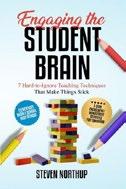
Northup offers teachers a brief guide to the quickest and most effective methods to get students involved in their own learning. The author shares the tips and tricks that he’s picked up over his 35 years of teaching public school to get students to listen and, most importantly, learn. He shares seven “secrets” to engaging students on an intellectual level—integrating concepts like the connection between mind and body and paying attention to nonverbal communication cues—that make up “a bunch of simple ways to speak the universal language that engages, and speaks to, (almost) all brains ” (he calls the concept “Albrainian”). Scattered throughout the lessons are funny, self-deprecating anecdotes about Northup’s own experiences both in and out of the classroom. “Brain Break/Refresh” sections regularly review key points alongside occasional black-and-white cartoons and simple diagrams. The most visually striking features of the guide are the various font sizes and uses of bold print, unique spacing, and all-caps that emphasize key points: “Be Instinctively Important —Not just Entertaining. Just like that book you couldn’t put down. Entertaining eventually bores the brain. Instinctively Important never does. It is in rhythm with the brain. Instinctively Important is Albrainian.” The conversational
tone and somewhat frenetic layout keep readers on their toes in a text that is often reminiscent of a particularly charismatic TED Talk. Northup’s approach and advice are refreshingly honest and open—he encourages teachers to tell students the “secrets” behind engaged learning in order to foster a dialogue where there’s normally not one, and he shows reverence for the vital roles that educators play: “Being a true gardener in the classroom means giving the flower what it needs, not just what we like or need to get done.” One caveat: Northup periodically interrupts the guide to promote his other works by offering free bonus items and sign-up QR codes for his website and books.
A quick, casual read full of to-thepoint advice and exercises for engaging students in the classroom.
Columbia
Pearkes, Eileen Delehanty | Photos by David Moskowitz | Braided River (224 pp.) $39.95 | June 1, 2024 | 9781680516609

The great river system of the Pacific Northwest is home to a clash between nature and industrial civilization—with the salmon its tragic victim— according to this vibrant photographic meditation. Photographer and biologist Moskowitz and nature writer Pearkes survey, in words and images, the enormous Columbia River Basin, stretching from British Columbia to
Nevada and from Montana to the Pacific Ocean, its many rivers now punctuated by dozens of dams. The book opens with an expansive essay by Pearkes on the Basin’s natural and human history, including the ancient geology and glaciology that forged its rugged landscape, the evolution of salmon and their epic upriver migrations from the sea to spawn in the freshwater streams where they hatched, the Indigenous cultures that shaped themselves around the salmon runs, and the modern project of damming and rationalizing the rivers for the purposes of flood control, navigation, irrigation, and electric power, which blocks salmon runs in the process. She concludes with an intricate consideration of the present-day struggle between native tribes and eco-activists trying to restore salmon runs and competing agricultural-industrial interests, and she highlights some hopeful recent compromises. Pearkes’ prose is lucid and full of compelling scientific and historical detail, but it also conveys a deep spiritual connectedness. (At a tribal salmon ceremony, she writes, a fish “darted unexpectedly in my direction and grazed my calf, then disappeared into deeper water. A bolt of pure energy charged through me. Over the next few days, I dissolved into a weeping mess.”) Much of the book is devoted to Moskowitz’s color photographs, which illustrate Pearkes’ themes with a visual counterpoint between nature and civilization, including sweeping vistas of winding river valleys, lush coastal rain forests, snowy peaks, and meadows dappled with wildflowers. But this arcadia, Moskowitz shows, is blighted by
A thought-provoking and visually stunning portrait of an embattled paradise.
BIG RIVER
brutalist concrete dams, barges chugging up canals, forest slopes gouged by clear-cutting, and vast industrial farms; in one resonant juxtaposition, irrigation sprinklers spray a mono-crop while smoke from a distant wildfire dims the sun. A thought-provoking and visually stunning portrait of an embattled paradise.
Rice, Cynthia | Wild Rose Press (342 pp.)
$18.99 paper | June 3, 2024 | 9781509255399

In Rice’s thriller, a traumatized woman’s victimizers reemerge as a looming threat. Erin MooreJackson was kidnapped and tortured 20 years ago—now, the man who did it is up for parole. At the time, Erin told the police that the man, Stanley Duggan, was not alone; he conducted the torture under the direction of a woman named Veronica. The police never found Veronica, and Duggan was sentenced to 25 years in prison. Erin can’t bring herself to testify at his parole hearing and see him again. Worse still, a journalist named Richard Fitzpatrick won’t leave her alone. He harasses her and her family, revealing information in the newspaper that he obtained from Duggan himself. Erin’s marriage is on the rocks as she struggles to trust her husband, Cody, in his fight against addiction. Most of all, she fears for the safety of her daughters and wants to protect them from the kinds of horrors she has survived. Duggan gets parole after Detective Warren Osborne testifies on his behalf—Osborne is desperate to catch Veronica after all these years and is willing to use Erin as bait to do it. But Duggan goes missing, and Erin receives mysterious cards in the mail. Someone is out there who wants to hurt her, and they may be closer than expected. Rice has written a
masterful debut thriller with a fantastic hero in Erin, who leaps off the page with her bravery and relatability. Erin’s trauma is believable in the ways that it influences her life and her decisions in adulthood, especially regarding her children. The threat of Duggan and Veronica feels real, and the high stakes support the fast-paced plot (“Veronica was out there, and she would be coming again, for Erin or possibly one of the girls. It was simply a matter of time”).
For those who enjoy thrillers about strong women who face impossible odds, this is a terrific read.
An exhilarating page-turner that showcases this debut author’s talent for suspense.
Schaap, Erik | Ed. and trans. by John Tepper Marlin | Boissevain Books (300 pp.) $19.55 paper | Feb. 12, 2024 | 9781963632026

A biography of Walraven Van Hall, a central figure in the Dutch Resistance to German occupation during World War II. Born in 1906, Walraven Van Hall enjoyed a “sunny childhood”— the sixth of 10 siblings, he was raised by a family as wealthy as it was loving. His life and the lives of his Dutch countrymen, however, were threatened by the sudden Nazi invasion in 1940. A banker and a broker, Van Hall became an active member of the Dutch Union, a
political party that welcomed moderates who were neither revolutionary communists nor conservatives slow to commit to any plan of action against the German occupation. The party’s official stance against underground resistance gave it cover to fight the Nazis. As author Schaap puts it in this marvelous blend of scholarly rigor and gripping drama: “The Dutch Union was a precursor of, and catalyst for, a fortified Resistance.” Van Hall’s war efforts began modestly, raising funds for the families of seamen who lost their income when they refused to sail for the Nazis. Within a year, though, he was managing large amounts of money to support the Resistance and to help find safe lodging for Jews. Appropriating all this money required extraordinary secrecy and ingenuity. At one point, desperate for cash, Van Hall orchestrated a sophisticated heist of the Dutch State Bank. The author powerfully portrays Van Hall’s indefatigable efforts, which exacted a terrible toll on his physical and mental health and eventually led to his arrest and execution. The Dutch Resistance was the best funded of its kind in Europe, and Schaap lucidly explains its complex inner machinations. Also, this is an emotionally wrenching tale conveyed in moving prose. Just before his execution, Van Hall hid a note to his family in his underwear, assuming it would be sent back to them: “Oh dearest, what a good time we had together these 13 years. I know, thank God, you are surrounded by loving family and friends. It has cost me a lot of struggle, but I am willing to accept the worst.” The translation by Marlin is graceful, and his introduction to the volume edifying. This is an
important contribution to the scholarship on the underground Dutch Resistance to the Nazis. An extraordinary tale, cinematic and historically painstaking.
for All
Smith, Diana McLain | Ballast Books (208 pp.) $28.95 | April 9, 2024 | 9781962202312
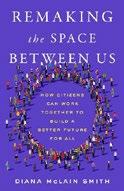
In this nonfiction work, the former chief executive partner of the venture philanthropy firm New Profit challenges American readers to find new avenues of common ground.
Most people in the United States, Smith notes in this book’s introduction, are among the 87% of those “wedged between the 13 percent on the far right and left.” Her book aims to challenge assumptions that drive conversations about American society and politics by highlighting, for instance, the “significant perception gap” between what Republicans and Democrats think the other party believes and what rank-and-file members of those parties actually believe. She cites studies by the nonprofit More in Common that found that most partisans overestimated the percentage of extremist views inside their rival’s party. Despite the author’s acknowledgment of “brutal facts” and “existential threats” to democracy, this collection of essays encourages reconciliation in its four parts. Part One begins with an exploration of “Our Evolutionary Legacy” and the seemingly paradoxical human impulses toward cooperating within one’s own in-group and competing with outsider groups. The book’s second part surveys current forces of radicalism, including the January 6 insurrection. The rest of the book
shifts to a more solutions-oriented perspective that urges cooperation across the ideological spectrum. Part Three, for example, features an essay on “Befriending Your Ideological Enemy,” and Part Four examines ways in which citizens can better use journalism, accounts of American history, and social media to mend “a social fabric so frayed it risks falling apart.” Smith draws on a lifetime of grassroots and boardroom experience, including years as a community organizer in Boston. The book’s credible narrative is backed by an impressive collection of 280 footnotes; even its more counterintuitive claims, such as “Americans are not as entrenched as we are led to believe,” are accompanied by solid research. At fewer than 200 total pages, this is an accessible book that also features a wealth of charts, graphs, and other visual aids.
A well-researched case for addressing ideological divisions.
Solin, Daniel R. | Silvercloud Publishing (302 pp.) | May 15, 2024
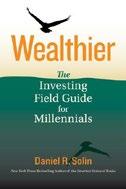
Solin presents a concise and comprehensive guide to do-it-yourself investing.
The author astutely observes that while millennials generally want to retire relatively early, they often adopt strategies inconsistent with that goal. Afraid of volatility, they avoid the stock market and embrace far riskier alternative options like cryptocurrency investments. The good news, per Solin, is that most of them would be served by a simple, DIY approach to investment that doesn’t rely upon costly and often exploitative financial planners. In short, the author recommends buying two exchange-traded funds, one populated by stocks and another by
All book-lovers will recognize themselves in these essays.
bonds; the former is an engine of growth while the latter is a bastion of security. In language accessible to even the most inexperienced investor, Solin provides a thorough elaboration of this strategy, covering a wide array of topics including retirement planning, the dangers of nonfungible tokens, and the distraction of “lottery-like returns.” He convincingly argues that financial media is profoundly unreliable and that professional investors are often deeply incentivized to betray the interests of their clients. Unfortunately, Solin follows the business-book trend of gratuitously and shallowly citing the findings of contemporary neuroscience and furnishes this ludicrous counsel regarding the alleged tyranny of the amygdala: “Engage logical thinking. The amygdala hijack overrides rational thought, so it’s essential to engage your analytical mind consciously. Remind yourself of the facts and consider the situation more objectively.” (Of course, if the amygdala truly commandeers rational thought, the willed effort to think rationally is absurd.) Despite this tedious detour, the book does offer an abundance of “sound, no-nonsense wisdom.” Solin is entirely right in asserting that the average investor simply does not need a surfeit of professional financial guidance, and that his simple strategies are likely appropriate for most. A clear and sensible guidebook to investing.

Sweeney, Jon M. | Monkfish Book Publishing (180 pp.) | $21.00 May 7, 2024 | 9781958972311

Sweeney celebrates the books that never left him in this literary memoir. Some books just get their hooks into you. “Have you carried a book in your bag long after the time of reading it has passed, because it has become essential for you in ways that would be difficult to explain?” asks Sweeney early in this volume, which is all about the amazing bond that can form—sometimes unexpectedly—between a reader and a particular tome. Often these books come to readers at key moments in their lives, aiding them in understanding the path forward. Tales of the Hasidim by Martin Buber, for example, which Sweeney found in a used bookshop while traveling for work, helped him to contextualize his failing marriage. Some reading experiences come with a blush of embarrassment: At the age of 21, Sweeney brought a biography of activist Thomas Merton on his honeymoon, much to the chagrin of his bride. (It wasn’t the only time a book got him into trouble; his sixth grade teacher was disturbed to notice Sweeney happily making his way through a 1,400-page biography of Adolf Hitler.) His love of Wendell Berry’s Recollected Essays inspired a college-age Sweeney to spend his
spring break driving to Kentucky to try to meet the man. From classics by Tagore, Tolstoy, and Thoreau to more obscure works, like the Bengali religious text The Gospel of Sri Ramakrishna and Frederick Rolfe’s “fantasy papal novel” Hadrian the Seventh , the author charts his personal and spiritual development through the texts he could never seem to put down, even after he finished reading them. Sweeney’s affinity for books is apparent in every sentence of his lush prose: “This chapter is also about how pictures can make a book something other-wordly: passionate pages moving the heart, or feet, and stirring the emotions. At certain books we are meant to gaze. We look at them differently than others. We take them in, more than read them.” The memoir will be of greatest interest to spiritual readers, but all book-lovers will recognize themselves in these essays.
A meandering bibliophile’s memoir that links spiritual development to the written word.
Taft, Charlotte | Self (327 pp.) | March 20, 2024 Series: Jane Smith Trilogy, 1

In Taft’s historical series starter, a young American woman’s move to France to work as a teacher in the late 1930s leads her to an unexpected career.
Readers meet the 25-year-old protagonist and narrator, Jane Smith, in the spring of 1939, after her arrival in Paris
to begin work as the sole educator at her aunt Mathilde Smith’s elite boarding school for young girls. In her charge are ten 7-year-olds whose wealthy parents have placed them at the school to keep them safe from the brewing war in Europe. Jane develops deep affection for the youngsters— especially the precocious, high-spirited Lucie Fastion, with whom she forms a bond. In the spring of 1940, shortly before the German occupation of Paris, a young orphan from a Jewish family is brought into the dormitory. She’s the first of many girls who are hidden in the school until they can be smuggled out of the country—a risky endeavor. When Dr. Bernard Levy, the school’s go-to physician, asks Jane to secretly assist him in performing illegal abortions for local women, it adds another layer of danger to her life, but it ends up being her true calling. In the summer of 1941, Jane, Lucie, and Bernard escape from France, securing passage on the last rescue ship to America. Taft’s historically compelling and emotionally powerful narrative then follows Jane from Connecticut to California to Japan as she boldly confronts the fact that she’s attracted to women and learns to follow her heart. The sections of the novel set in Paris are filled with facts about actions of the French Underground to make things difficult for the occupying Germans; these include humorous acts, such as changing street signs. In a series of individual character stories, Taft presents a fulsome discussion of the scienc e, ethics, and importance of abortion care. However, the book’s epilogue becomes overly didactic for
A dramatic and timely novel in favor of reproductive choice.
a novel that’s already passionately made its case.
A dramatic and timely novel in favor of reproductive choice.
Van Sise, B.A. | Schiffer (176 pp.)
$50.00 | Sept. 28, 2024 | 9780764368141

Author and photographer Van Sise offers a rich profile of the many languages that are found in the United States.
The author offers brief essays on a range of tongues, including Mohawk, creole dialects such as Alaskan Russian and Afro-Seminole, and Judaeo-Spanish from New York City. That language, for example, was brought to the United States by “Spanish Jews expelled from Iberia [who] fled…to North Africa, Greece, Italy, Turkey, and the Balkans, bringing the medieval Spanish language with them and absorbing, depending on destination, elements of Arabic, Berber, Greek, Italian, Turkish, and Slavic languages.” Numerous others have similarly complex origins, and many are in danger of extinction as their number of native speakers dwindles. Cahuilla, for instance, is an Uto-Aztecan language that’s indigenous to the Palm Springs, California, area and currently has just a few “first-language” speakers—that is, people who were taught Cahuilla first, before English or other languages. Deg Xinag, an Athabaskan language found in only a few villages in Alaska, has only two remaining native speakers. Most of the examples here have Indigenous origins; the Mohawk language is currently experiencing a resurgence, and the Kickapoo Nation was able to shield their traditions by fleeing their traditional homeland around the Great Lakes to Mexico. Other
languages are thriving; Plains Sign Language, for example, was featured during the 2023 Super Bowl broadcast. Accompanying many of the short essays are Van Sise’s beautiful photographs showcasing people who speak the languages, such as U.S. Army Maj. Warren Queton, one of 20 Kiowa speakers; he’s shown on a U.S. Army base in uniform, wearing his grandfather’s headdress and taking joy in showing what’s most important to him. In another image, Ojibwe-speaking Alaskan Stella Hunter, wearing a ribbon skirt, observes the northern lights. Overall, the book does a great job of contextualizing the common tragedy of language loss, and it offers an informative sampling of those that still exist.
A rich survey of just a few of the U.S.’s methods of communication.
Weaver, Katie | Illus. by Caner Soylu
A Little Offbeat Publishing (40 pp.)
$18.95 | Sept. 1, 2024 | 9781736267370

In Weaver’s charming picture book, a dog reassesses his not-so-glowing review of little kids.
“Families are OVERRATED!” as far as the bluish-gray hound named Dog is concerned. While he approves of the adults in the household, the four small children are for the birds. In an attempt to resolve his conflicted feelings, Dog pours his heart out to a therapist scribbling on a notepad. Dog lists his grievances via couplet rhymes: “And many times I’ve found their dirty toys INSIDE MY BOWL! / It’s obvious these little humans have no SELF-CONTROL!” With key words highlighted in colorful and bolded fonts for more emphasis, his
Kids will get a kick out of Dog’s opinion of humans.
voice now has added urgency. Soylu’s lively drawings in muted tones are wondrously effective in animating Dog; his hanging jowls, big eyes, and floppy ears all convey believably beleaguered expressions. Lifelike details enhance the dramatic effect of the children’s boisterous antics. At the end, Weaver provides a list of do’s and don’ts for interacting with pets. Dog lovers can identify the dog breed silhouettes on the endpapers. Kids will get a kick out of Dog’s opinion of humans and perhaps recognize some behaviors to reconsider. This humorous, lively dog’s-eye view provides gentle instruction for interacting with pets.
Weisleder, Stan | iUniverse (488 pp.) $21.88 paper | Oct. 23, 2020 | 9781663206022

In Weisleder’s historical novel, it takes a lifetime to go from stickball in the streets of Brooklyn’s Brownsville neighborhood to the glitzy casinos of Las Vegas.
In mid-20th-century Brooklyn, a group of friends come of age.
Lawrence Cohen (aka Mongoose) is shrewd and ambitious. Alphonse Contarino (aka Ringo) is a natural athlete smitten with Eunice Finklestein, a budding knockout who will morph into “Venus,” a Las Vegas showgirl, and remain the unattainable love of his life. Charles Ransom Jr. (aka Charlie the Man) is the only Black kid in the group. He will become a cop, then get into
private security in Vegas. Soloman Lukevitch (aka Solly), who has a great set of pipes, will become Sean La Salle, a headliner in residence in Vegas. Mongoose has a head for money and gambling, and he becomes the casino manager at the Stardust. This very ambitious novel (which approaches 500 pages in length) includes an afterword describing and celebrating Brownsville back in the day. The author was a “Brownsville boy,” and he describes his book as a hybrid of fact and fiction: “The principal characters are all composites of two, three or more individuals. Actual names were used only if the person has died or is shown in a favorable light. Is it fact or fiction? I like to use the word faction .” Historical figures—Howard Hughes, Red Buttons, Milton Berle—show up, but what’s truly amazing is how many kids from the old neighborhood wind up in Vegas. It makes for a good story, and one that Weisleder clearly enjoys telling, maybe a bit too much. The narrative takes substantial digressions, including a very detailed account of Navy flight school, a worshipful paean to math, and the story of the Glomar Explorer salvage operation, each with arguably only the slimmest connection to the story. This material is engaging but perhaps a tad indulgent: It’s like the author saw a chance to stuff some personal enthusiasms into this big bag of a novel. At book’s end, with the Desert Winds Hotel and Casino about to branch out into Asia, readers realize that the protagonist is just getting started. A labor of love—a little baggy, but with some appealing characters and memorable locations.
Williams, Peggy Joque | Black Rose Writing (388 pp.) | $24.95 paper May 9, 2024 | 9781685134129
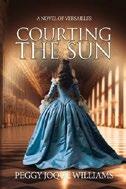
A beautiful young country girl navigates the perilous corridors of the court of the Sun King in Williams’ historical novel.
In late-17thcentury France, when the reign of Louis XIV is at the pinnacle of its splendor, beautiful 16-year-old country girl Sylvienne d’Aubert’s life is transformed by a totally unexpected summons to join the glittering court of the Sun King as a lady-inwaiting. Raised by a single mother and educated by nuns, Sylvienne has grown up in modest comfort, almost entirely ignorant of her own origins. Not long before the king’s invitation arrives, she’s shocked to learn that her mother was the illegitimate daughter of the king’s uncle, and that her own father had been a local lord whose estate, upon his accidental death, was seized by a scheming brother. Now living in a servant’s cottage on a modest pension and considering marriage to a kind young shoemaker, Sylvienne is suddenly uprooted and finds herself alone at the very epicenter of French politics and society. Arriving at the Palais de Tuileries, the king’s residence in Paris, Sylvienne is overwhelmed by the magnificence of her new surroundings: “My eyes were drawn to the gilded ceiling embedded with opulent paintings. Now I was gawking. Chandeliers and wall sconces illuminated portraits of
royal ancestors.” But as Sylvienne serves the king’s favorite mistress, the beautiful Madame de Montespan, she must fend off a lascivious nobleman, brave the sometimes-vicious intrigues of the court, and steel herself against the glare of the popular press. Williams’ knowledge of the period is thorough, and the novel’s setting in the royal court is clearly drawn and always compelling. The author provides readers with a strong and intriguing central character whose growth toward self-realization is one of the novel’s principal strengths. While the narrative sometimes dwells too much on ambience at the expense of a fast-moving plot, readers of historical fiction will no doubt enjoy the novel’s authentic and seductive atmosphere.
An absorbing tale set in Louis XIV’s France.
Willis, Birdie & Nicole Andelfinger Illus. by Vash Taylor & Fiona Marchbank Maverick (216 pp.) | $14.99 paper June 18, 2024 | 9781952303579
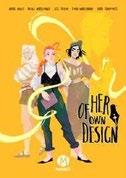
In Willis and Andelfinger’s graphic novel, a high schooler finds herself thrown inside her own fiction. Brie Page just wants to get through high school being as invisible as possible so she can go home and write her stories, or listen to her podcast about writing, or think about writing. When her mother forces her out of the house to do “normal teen stuff,” Brie finds herself in front of a
An absorbing tale set in Louis XIV’s France.
bookstore she’s never seen before. The very strange store owner’s name is Ambrose. When Brie confesses her teenage woes, Ambrose offers to let her buy a special pen that will supposedly help Brie in crafting her tales and escaping the real world. After fighting with her former friend Viv on the way home, Brie sits down with her new pen and starts to write three different stories, with hours passing in the blink of an eye. The next morning, Brie opens her locker at school to find a portal inside. Entering it takes her to another world with talking horses and a sorceress—and Brie herself is the queen. Knowing this is one of her yarns, Brie follows the plot, but it doesn’t quite go as she wrote it (“This was supposed to be the end of the story…and yet I’m still here!”). Hopping from one of her texts to the next, Brie starts to realize something is going on and changes her writing, pulling her family and friends into the madness. In this cleverly constructed graphic novel, Taylor and Marchbank use mostly black-and-white illustrations, switching to bright colors when Brie hops into her stories. With inspirational themes of standing up for yourself against bullies, taking charge of your own narrative, and finally finding a way to talk to your crush, this engaging story has something for everyone. A teenager rewrites her story in this enchanting yarn.
Willson, Sean | WideAsleep Publishing (392 pp.) | $24.99 paper Jan. 5, 2024 | 9781958800126
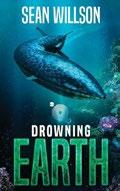
In Willson’s thriller, set about 30 years in the future, the crew of a highly advanced submarine battles for survival on the ocean floor as the world above teeters on the brink of nuclear annihilation.
The HMS Bancroft ’s Capt. Kel Williams knows every inch of the submarine she commands, because
DEATHLESS CREATURES
she helped design it. This intimate knowledge is put to the test when she and the crew are sent on a mission to the bottom of the Mariana Trench to investigate the presence of an untapped source of biomass, which holds the potential to cure diseases and form the foundation of new crops. Every nation on the war-torn planet wants it, and the Bancroft races to collect it before it falls into the hands of an alliance of Chinese and Russian communists. As villainous pursuers rapidly close in topside, Kel makes a command decision to take the Bancroft deeper into the trench’s vast network of undersea caverns. There, Kel and the crew realize there’s no easy way out. They’re unable to back out the way they entered, and they can’t use a high-powered torpedo to create a new escape route for fear of collapsing the caverns. Out of options, Kel orders the crew to dive even deeper. Willson ratchets up the danger the deeper they go, and as the super-sophisticated Bancroft begins to strain under the enormous pressures, new threats to the crew’s integrity spring up. Close-quarter violence breaks out, described in sometimes-brutal detail. In the prologue, Willson also unexpectedly introduces a pair of celestial entities who oversee and comment on the proceedings, known as “the Builders.” One, named Willow, has a vested interest in the tiny humans fighting for survival at the bottom of the ocean, but her fellow god, Helios, fumes over her steadfast devotion: “What do you see in this pale blue dot of yours?” Will Kel and the Bancroft escape? Will the Builders intervene? Will the planet survive? Willson takes obvious delight in keeping his readers guessing as the novel goes on.
An offbeat and unyielding undersea adventure that bubbles with tension.
Wilson, Katie | Self (218 pp.) | $25.00 June 25, 2024 | 9798989867516

In Wilson’s supernatural thriller, a young woman discovers she has a rare, supernatural gift after surviving a tragic accident. All things considered, Sarah Woodward ought not to be alive. When the bus she was on swerved off the road and plunged into Elliott Bay, Sarah was the sole survivor among the 15 victims. Not only did she survive, she had the presence of mind and absence of injury to swim to shore, where she found herself physically (if not emotionally) unscathed. Soon after, though, strange things begin happening to Sarah; she feels, somehow, both alive and dead, as though trapped in a sort of purgatory. Small injuries to her skin heal almost instantaneously, and she keeps having the same dream of a mysterious cave that feels inherently familiar to her but that she cannot place in memory or the real world. While at an art gallery, seeking out some normalcy in the aftermath of these upheavals to her reality, she meets a young-looking man with a keen, almost stalker-like interest in her, and, despite her best instincts, she goes to a second location with him. She discovers, quickly, that this man, Alex Smith, is not young at all; in fact, he’s a vampire, and more than three centuries old. He has been looking for Sarah ever since the bus crash she survived—he witnessed the whole thing, his vampiric senses
able to trace her far-off heartbeat as he heard all the others go silent. Around the time she meets Alex, Sarah is also questioned in the bookstore where she works by a mysterious stranger, Lucy Goodspeed, who claims to work for a shadowy organization known as the “Society of Keepers.” Before Sarah has a chance to talk with Lucy, she and Alex discover something troubling: Sarah’s blood has the capacity to make Alex “alive” again, at least somewhat—after tasting a mere dribble, he’s breathing again, temporarily, for the first time in centuries. When this experiment nearly kills him, Sarah decides it’s time to talk to the Society of Keepers, hoping to get some answers—but the mystery only deepens when, unprompted, Lucy shows Sarah a photograph of that very cave she’s been dreaming of for weeks…
In her first novel, Wilson has managed to find an interesting wrinkle in the classic vampire narrative in the character of Sarah, a sort of supernatural foil who is not the typical werewolf or vaguely Christian ideological crusader, which helps to make this vampire yarn feel at least a bit fresh. That being said, readers’ appetites for sentences like “I can’t tell her I’ve started falling insanely too fast for someone who happens to be a vampire” have been eroded by decades of teen-lit plumbing the exact same dynamics. The plotting sometimes feels too convenient— one wonders about that chance meeting at the art museum—but there is real pathos to Sarah’s character, who feels like a friend from college you’ve mostly forgotten about but who now finds herself in extraordinary circumstances. Fans of vampire fiction won’t find much new here, but those open to an undead thread running through an engaging narrator’s strange experience will enjoy the ride. Fun—if overly familiar—vampire fiction made palatable by memorable characters.


 Lorena M. Proia
Lorena M. Proia
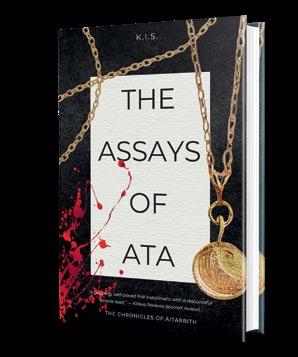





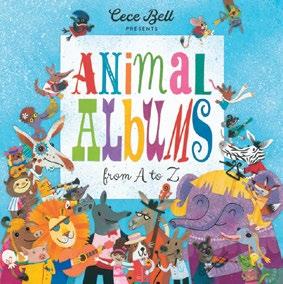
CECE BELL
978-1-5362-2624-9
$19.99 ($25.99 CAN)
A WALKER BOOKS US TITLE
Publishers Weekly
Kirkus Reviews
Booklist
BookPage

AARON BECKER
978-1-5362-2768-0
$18.99 ($24.99 CAN)
Publishers Weekly
Kirkus Reviews
Bulletin of the Center for Children’s Books
Foreword Reviews
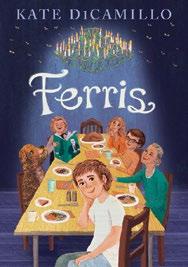
KATE DICAMILLO
978-1-5362-3105-2
$18.99 ($24.99 CAN)
Kirkus Reviews Booklist BookPage

LINDSAY EAGAR
978-1-5362-0467-4
$19.99 ($25.99 CAN)
Kirkus Reviews
Booklist
Bulletin of the Center for Children’s Books
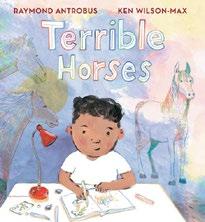
RAYMOND ANTROBUS illustrated by KEN WILSON-MAX
978-1-5362-3548-7
$18.99 ($24.99 CAN)
Publishers Weekly
Kirkus Reviews BookPage

KEKLA MAGOON
978-1-5362-3088-8
$18.99 ($24.99 CAN)
Publishers Weekly
Kirkus Reviews
Bulletin of the Center for Children’s Books
Foreword Reviews
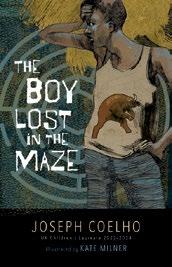
JOSEPH COELHO illustrated by KATE MILNER
978-1-5362-3641-5
$19.99 ($25.99 CAN)
Publishers Weekly
Booklist Bulletin of the Center for Children’s Books

RACHEL CARSON illustrated by NIKKI MCCLURE
978-1-5362-2870-0
$19.99 ($25.99 CAN)
Publishers Weekly
Kirkus Reviews
The Horn Book